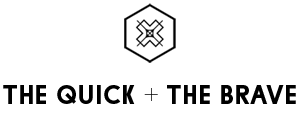By publishing this blog, The Study Group evokes the Dutch Whistleblower Protection Act (Wet bescherming klokkenluiders) of 18 February 2023. The full Whistleblower Protection Act from the Ministry of Interior and Kingdom Relations is available in Dutch and English.
No culture. No contract. No humanity.
How did a program designed to build a bridge between the corporate world and intersectional talent reveal such alleged catastrophic levels systemic bias and leave us and our community on the brink?
Marie-Anne Leuty (she/her) shares the experience of being allegedly invited into Adyen N.V. to do DEI work and The Study Group’s current legal fight to allegedly be recognised and paid for that culturally sensitive and important work by the fintech giant.
By publishing this blog, The Study Group evokes the Dutch Whistleblower Protection Act (Wet bescherming klokkenluiders) of 18 February 2023.
The full act from the Ministry of Interior and Kingdom Relations is available in Dutch and English.
Want to help amplify our story to other media? The Act protects all stakeholders who share it (clause 1a. Duty of confidentiality and data protection).
Donate and support The Study Group Foundation.
GoFundMe pre-sale for ‘mini maatje’ ‘Advocates and Allies’ issue (link coming soon)
1. Cultural extraction
If you’re reading this, it’s too late.
Adyen N.V. has allegedly chosen to double down on its stance that the multi-billion euro, public listed company seeking bank status allegedly doesn’t owe The Study Group and our team payment for work carried out for Adyen N.V.
Back in September, myself and Obi, Co-Founders of The Study Group, a BIPOC-founded media company and non-profit organisation founded in 2020, were allegedly dropped by our Program Partner, Dutch payments giant, Adyen N.V.
We were allegedly fired with immediate effect and seemingly without reason by email allegedly via Adyen N.V.’s Senior Legal Counsel with the Head of People, Senior Vice President of HR, Head of Legal EMEA and Vice President of Creative in CC.
Since then, with the outstanding advocacy of The BEULAH Foundation, we have been in legal proceedings to be paid for the specialist cultural consultancy work that we were invited into the company to develop; work allegedly commissioned to address the supposedly publicly documented lack of representation in the payment platform’s workforce.
DLA Piper Nederland N.V., the Dutch chapter of the second largest law firm in the United States, is Adyen N.V.’s legal representative.
They’ve allegedly adopted an all guns blazing approach, supposedly abusing the dire financial situation we have allegedly been put in by Adyen N.V.
Until we serve them with summons papers to take them to court, it seems that they don’t see the work we have produced as something of value.
They’ve allegedly advised us to take this to court if we want to seek further compensation.
They’re seemingly counting on us not being able to find the legal representation to take on a firm their size, cover our legal costs and serve them with a subpoena.
The cycles of oppression and extraction continue.
We believe that this case demonstrates an improper act or omission that jeopardises the proper functioning and execution of the Dutch Corporate Governance Code. It also constitutes a breach of the G20/OECD Principles of Corporate Governance and violates the UN Guiding Principles on Business and Human Rights.
This affects not only The Study Group, it disproportionately impacts historically excluded and disenfranchised people from communities who are internationally recognised and protected.
Adyen N.V. is allegedly refusing to give adequate compensation for the work and services of a family-run, BIPOC business with a majority female team; or acknowledge the talented collaborators from historically excluded communities who are also financially impacted by Adyen N.V.’s alleged actions.
The first half of the blog you’re about to read was shared with Adyen N.V.’s board of directors and other stakeholders in the company on 7 December 2023 on a password protected blog. It detailed our alleged experience from March until December 2022.
They also received a petition letter from The BEULAH Foundation outlining all the case law, customary law, national and international governance codes, UN Principles and other statutes and laws that demonstrate Adyen N.V.’s alleged lack of infrastructure, care and consideration for professionals from our communities.
These stem from what appears to be a lack of awareness with strong hints of incivility.
Sharing this and other evidence privately with Adyen N.V. allegedly wasn’t enough for them to consider our concerns.
They have allegedly offered to settle out of court for a nominal amount.
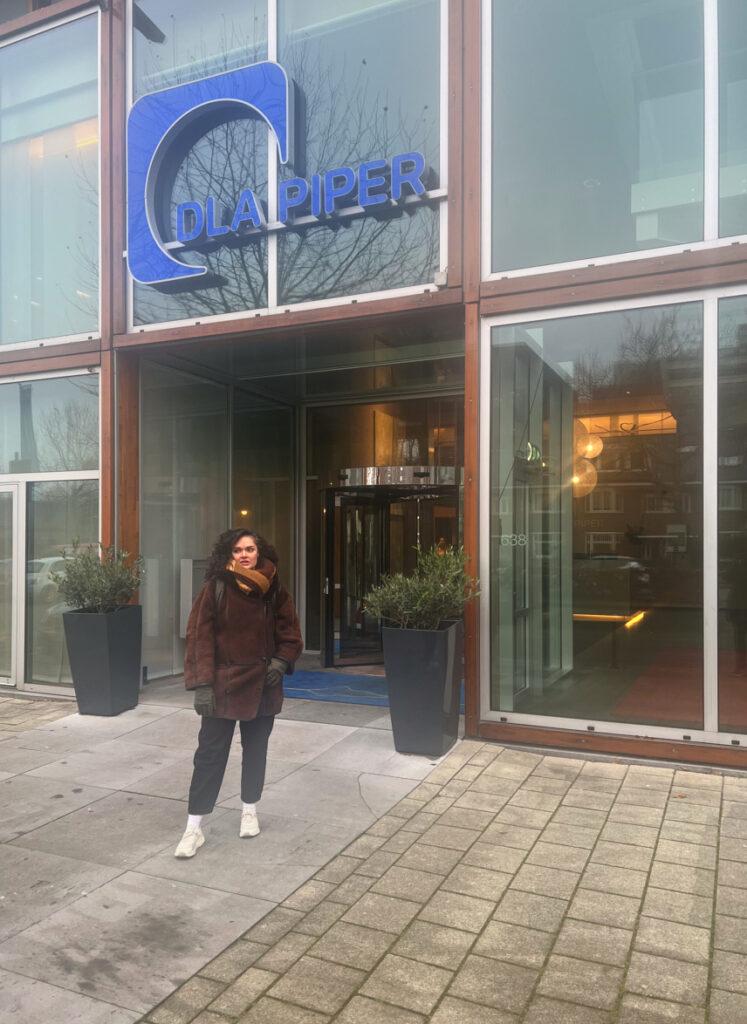
The thing is, we’re aware of both the impact and value of our work.
Given the alleged extreme levels of performativity and incivility we and the community have allegedly endured, I have to ask as a queer woman of colour, what does the future look like?
Instead of understanding, we encounter stewards whose alleged lack of awareness and inability to acknowledge our humanity mean that we are compromised from the get go.
We see the same narratives play out again and again.
This nightmare scenario isn’t even rare.
It happens all the time, we just never get to hear about these things going to court because there isn’t enough, if any, evidence.
Or the cost of legal representation and court fees create additional barriers to entry for people from underrepresented communities.
It may appear that the only reason we’ve been able to bring the story this far is because we’re a media company and non-profit with a content platform.
If it weren’t for the fact that Obi documents our daily work, who would believe this story?
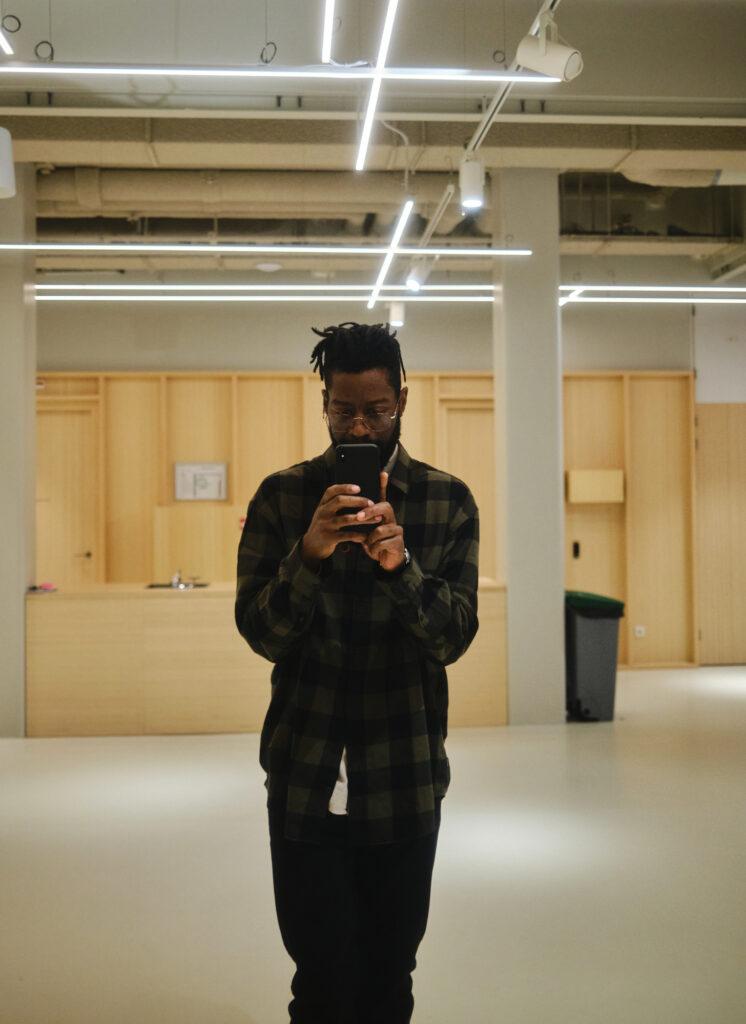
We didn’t think the content we were gathering would turn into a detailed catalogue of evidence of alleged textbook corporate abuse.
And we didn’t want to go public because… it’s a lot.
Firstly, we’re incredibly proud of what the community has created, in spite of the challenges, and we didn’t want going public to impact or smear the work that everyone contributed to.
Secondly, Adyen N.V. supposedly came to us when they were facing an alleged cultural crisis and we were hoping that the results of our findings would contribute to their DEI goals and work culture.
We told Adyen N.V. back in May 2023, via a 36 minute long voice note I composed and recorded at 7 months pregnant, that the structural challenges we were allegedly encountering were an internal issue that needed to be addressed and fixed.
We also said that if we were in a situation where we would have to speak on this publicly to alert the community to our experience, it would look bad – some may say performative – that this entirely allegedly avoidable situation had been allowed to go unchecked and unresolved.
It would appear that that internal work has not happened.
As a consequence, an entire community’s trust in Adyen N.V. may be irrevocably eroded.
To date, we haven’t shared the details of our experience with our team and the community because we believed that the alleged issues we were identifying and communicating to Adyen N.V. would be fixed internally.
We have to give people the grace and opportunity to change because it takes time to recognise and internalise different perspectives to one’s own.
Unfortunately, the consideration and integrity with which we went about our work to develop the design and communication program allegedly hasn’t been reciprocated by our former Program Partner.
The graciousness with which we and the community have conducted ourselves in the face of such alleged dehumanisation and othering throws into relief the stark double standards that we must measure up to to be accepted in corporate space.
Our boundaries have allegedly been violated repeatedly in that process by a faceless entity that appears intent on being seen to do good without the accountability to follow through on its alleged obligations.
We knew that once we shared this with our advocates, allies and community that it could result in an unfortunate and far-reaching collective loss.
This case is bigger than us.
It demonstrates step-by-step how historically excluded people have to overextend themselves; be scrutinised when demonstrating excellence; make themselves more palatable to the dominant culture in an attempt to be respected and understood.
For the 81 weeks of the collaboration, we’ve worked relentlessly allegedly without a contract despite numerous requests.
From January to June 2023, we jumped through moving hoops allegedly set by HR professionals in Adyen N.V. leading on diversity initiatives; a team whose alleged lack of awareness, while delivering what appears to be apparent incivility, paints a bleak picture for historically excluded professionals who may have hoped for advocacy through DEI.
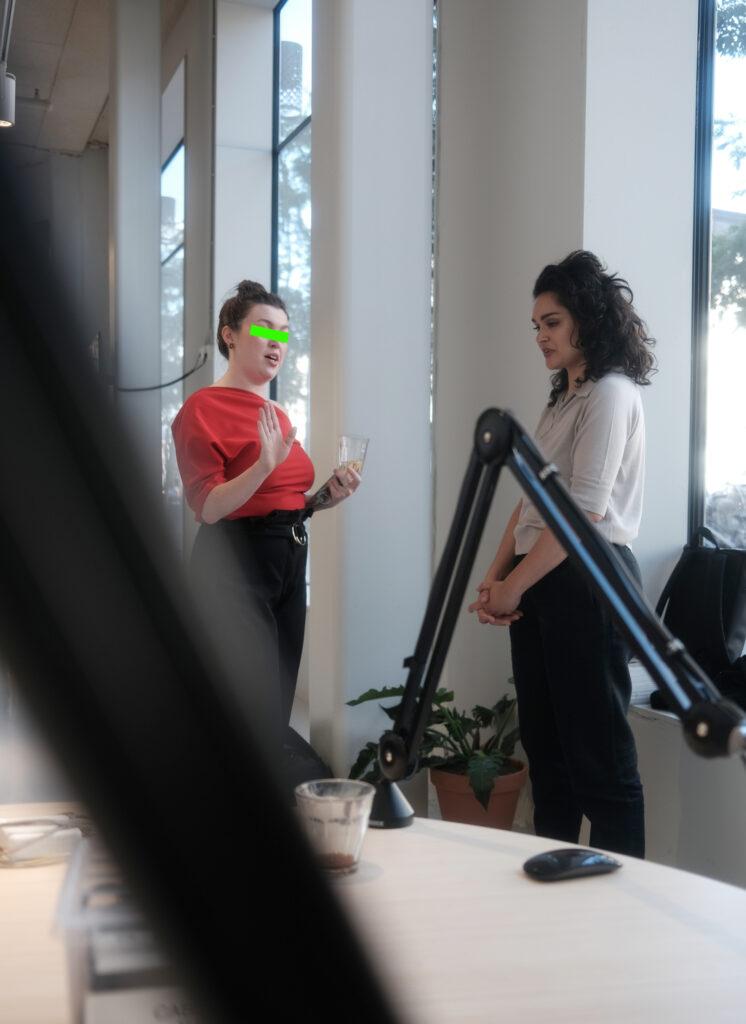
Everything happens for a reason.
Even this experience has to have been for something.
At a time in the world where we’re unable to process unprecedented and growing collective grief, I didn’t want to have to share a deeper, insidious reality that plagues corporate space.
But here we are.
More and more creatives and professionals from historically excluded communities are opening up about the issues they face in their respective industries.
Earlier this week, prolific actress Taraji P Henson, shared in an interview that after more than thirty years in the industry she may quit acting.
Despite her accolades, including a Golden Globe for Best Actress in a Television Drama in 2016 and nominations for many internationally recognised awards, she continues to deal with inequity and large pay gaps in Hollywood.
If a trailblazing talent like Henson is unable to sustain herself and her team, having excelled as an entertainer for three decades, then these issues are systemic and entrenched.
And we are faced with the same challenge here.
Having been invited into Adyen N.V. because the payments platform allegedly wanted help to diversify its talent pipeline, the alleged indifference we and the community have encountered in the process would appear to demonstrate that folk like us are not safe in corporations.
We’re hard wired to think and act how we see the world.
If we’re open to learning, then our perspectives can change.
But if the party you’re trying to teach doesn’t see you as worthy of respect, why force it?
It’s a fascinating documentary that reveals the entrenched ideology of extraction at the heart of the corporate space. It’s an example of what damage can be done when corporations act with impunity:
So, why expend the energy on those allegedly intent on refusing to acknowledge us when we can channel that into ourselves?
The impact would be monumental.
This case is extreme.
No culture.
No contract.
No humanity.
It provides a unique learning opportunity where we can share what we’ve experienced and learned with the community.
Starting with this blog, we’re dedicating ourselves to educating professionals and creatives from our communities about our rights as we navigate corporate systems. We highlight the importance of advocacy as we embark on and progress through our careers.
Knowledge is power.
When I started writing this a month ago on 27 November, five months postpartum, I knew that the usual 750 word article wouldn’t communicate the story and events that led up to the alleged unlawful termination of our collaboration with Adyen N.V.
The words came pouring out.
Under the guidance of our Legal Counsel at The BEULAH Foundation, we built up all the supporting evidence, timelines and contact logs for the case and had an objective overview of what we’d experienced for the first time.
It was confronting yet liberating to see it all laid out.
We could finally start to process this huge alleged violation and loss.
Writing this has been a necessary first step towards regaining our peace of mind.
Now at 30,000 words and counting, this could become an educational publication to offer guidance to students, creatives, professionals and entrepreneurs from historically excluded backgrounds, as well as interested allies keen to learn from these avoidable pitfalls.
I’m interested to know how far something like this could go with a book publisher because this is one story you couldn’t make up.
If you’re a publisher and want to talk, please get email me.
To continue circulating the story on our grassroots platform, we release the first issue of ‘mini maatje’, our publication currently in development with The Black Archives.
The theme for this issue is ‘Advocates and Allies’.
Originally TQTB’s Black-owned business map of Amsterdam released in Journal 001 in 2020, ‘mini maatje’ translates to ‘little buddy’.
Written in lower case in celebration of the late thinker, poet and writer bell hooks and her work around community care, ‘mini maatje’ serves as an educational community publication.
Building on this blog, this paper is an opportunity for us to share our experiences to educate the community about our rights and the laws and statutes that protect folk like us.
It’s also a celebration of the transformative power of advocacy.
In addition, we include a Keti Koti special, sharing photography from last summer’s 150th anniversary of the commemoration of the abolition of slavery in Suriname and the Antilles.
The concluding chapters of this blog will be published in this paper at the end of winter.
Pre-orders for a limited print run of 1,000 copies are available soon.
Help us to hit our initial target of €1,000 through GoFundMe and Stripe.
We’ve come to accept that this is a nightmare situation but we won’t let it take us off our path.
The situation is really as uncomfortable as it sounds but we still look for the lessons in it.
What we’ve discovered in this process is that the love we have for our folk is greater than the alleged incivility Adyen N.V. has displayed towards us.
If you’re interested in finding out more about the educational programming in development around this case, please fill in the contact form in our link in bio.
This year for us has emphasised the importance of community care.
Thank you to the community members, friends, family, advocates and allies who’ve checked in on us.
Special thanks to The BEULAH Foundation, The Black Archives, Black Pride NL, Controle Alt Delete, the Nap Ministry, Patta, Black Academic Futures at the University of Oxford, the Transnational Institute and Kumbatey for showing us love.
The emotional support and counsel that you’ve shown us means a lot.
We really appreciate your support as we progress with our case.
And to the team we’ve been working with, we appreciate your understanding and patience throughout this process.
There are many ways that you can help spread awareness of our story and support us in our next steps:
Donate to The Study Group Foundation direct
GoFundMe: pre-sales for ‘mini maatje’ ‘Advocates and Allies’ issue (coming soon)
Learn: to receive our recommended reading list sign up to The Study Group Foundation’s newsletter and we’ll add you. to the mailout on 8 January.
How has hearing about this case impacted you?
Have you been affected by corporate abuse?
Or do you have a legal or media enquiry?
Maybe you’re a law student interested in this case.
Email us at info@thestudy.group.
This blog is the testimony of mine and Obi’s experience.
It serves as a case study to educate the youth, creatives, professionals and entrepreneurs from the community and ally circles about what rights we have when all the worst case scenarios domino.
No culture.
No contract.
No humanity.
Thank you for your support.
Please share this widely.
It’s now the end of the second day on Christmas and we’re finally wrapping up this blog.
It’s finally time to go rest.
Wishing you and yours a peaceful holiday.
From Marie-Anne and Obi
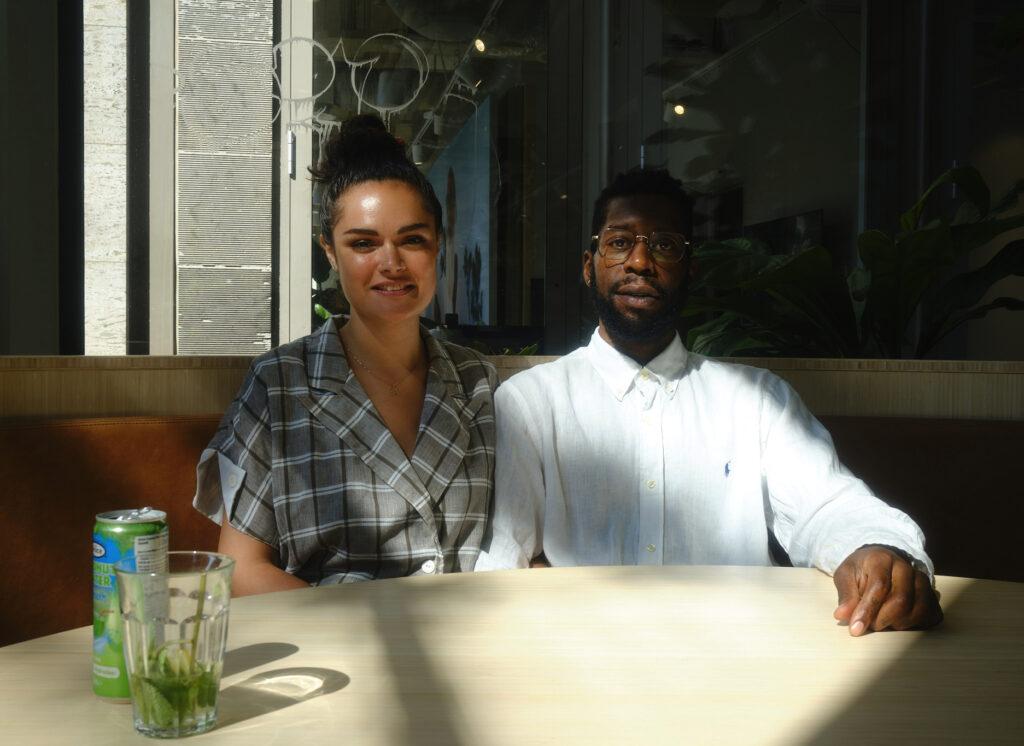
Chapters
2. Introduction
4. Access to opportunity // Access denied
7. The Formula
10. See things as they are (not what you want them to be)
13. Marketing DEI
14. The podcast
27. Conclusions (to be released in ‘mini maatje’ Advocates and Allies issue)
2. Introduction
“Depending on circumstances, business enterprises may need to consider additional standards. For instance, enterprises should respect the human rights of individuals belonging to specific groups or populations that require particular attention, where they may have adverse human rights impacts on them. In this connection, United Nations instruments have elaborated further on the rights of indigenous peoples; women; national or ethnic, religious, and linguistic minorities; children; persons with disabilities; and migrant workers and their families.”
UN Guiding Principles on Business and Human Rights, Principle 23
DEI.
Grey area.
A Wild West.
A new frontier supposedly aimed at improving representation in the workplace.
In 2020, social movements such as Black Lives Matter and #MeToo revealed systemic issues that historically excluded communities had always known.
But this was a new dawn.
Everyone was aware of their unconscious bias.
Everyone was doing the work.
At the time of publishing, The Study Group continues to feature on Adyen N.V.’s Instagram on a post from November 2022 announcing the alleged collaboration with the following caption:
What would you do if you were given the space to unapologetically create?
Meet @marieanneleuty and @obi.island, founders of The Study Group Foundation.
@thestudy.group provides BIPOC creatives with the space and tools to connect and create boundlessly. Recognize the background? They have the mission, and Adyen has the workspace – so we’ve teamed up.
“We’re excited to partner and build with Adyen,” says Marie-Anne. “This sponsorship gives us the opportunity to grow our content platform @thequickandthebrave. We’re also developing a program to create a bridge into the design industry for BIPOC creatives – Adyen is giving us the space to make these things possible.”
The Study Group meets weekly in our Amsterdam office to develop their creative projects.
One has to ask, for a policy that has only existed in most companies for three years or less, who gets to make decisions about the needs of historically excluded individuals and communities within companies and who is qualified to do so?
The pitfalls of Diversity, Equity and Inclusion (DEI) initiatives are well documented. Brands and companies have rushed to appear culturally aware overnight, teaming up their HR and Marketing efforts to show that they offer an inclusive, open and safe culture for all members of their workforce.
As S. Mitra Kalita explains in Time:
“The diversity efforts of the last three years have been largely cosmetic, performative and perfunctory. We have barely begun to change the systems contributing to inequity. Nor have we fundamentally examined and overhauled the missions of our organisations that historically exclude people of colour.”
— S.Mitra Kalita, Time
It’s against this backdrop that our media company and non-profit, The Study Group, was allegedly invited into a publicly listed, multi billion tech company to do DEI work.
You hear nightmare scenarios about independent creatives and entrepreneurs of colour working for huge clients; used for their ideas and cultural caché then dropped with flagrant indifference.
I never thought that that would be our reality for the past 18 months.
Never thought that doing the right thing could cost us everything.
Never thought a community-focused program would leave our community far more vulnerable.
Never thought that having to justify our ideas and value would reach such levels of dehumanisation.
Things should never have got this far.
Never thought it would end in Obi and I fighting an alleged corporate abuse case against a multi-billion tech company while raising our first child.
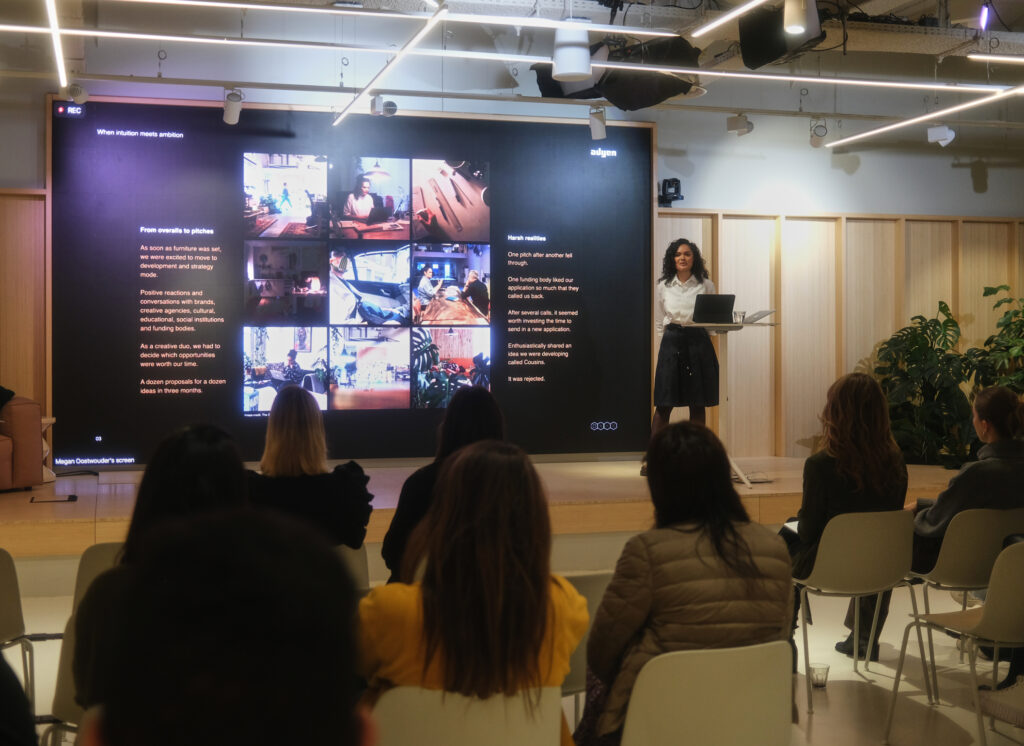
There are protocols when it comes to ending partnerships, they’re written into law.
Unfortunately – allegedly – none of these were extended to us.
Fighting now to be recognised and paid for our work – and the work of a whole community – creates a different kind of disdain.
As a woman of colour, being frozen out by a team of non-racialised women isn’t new to me.
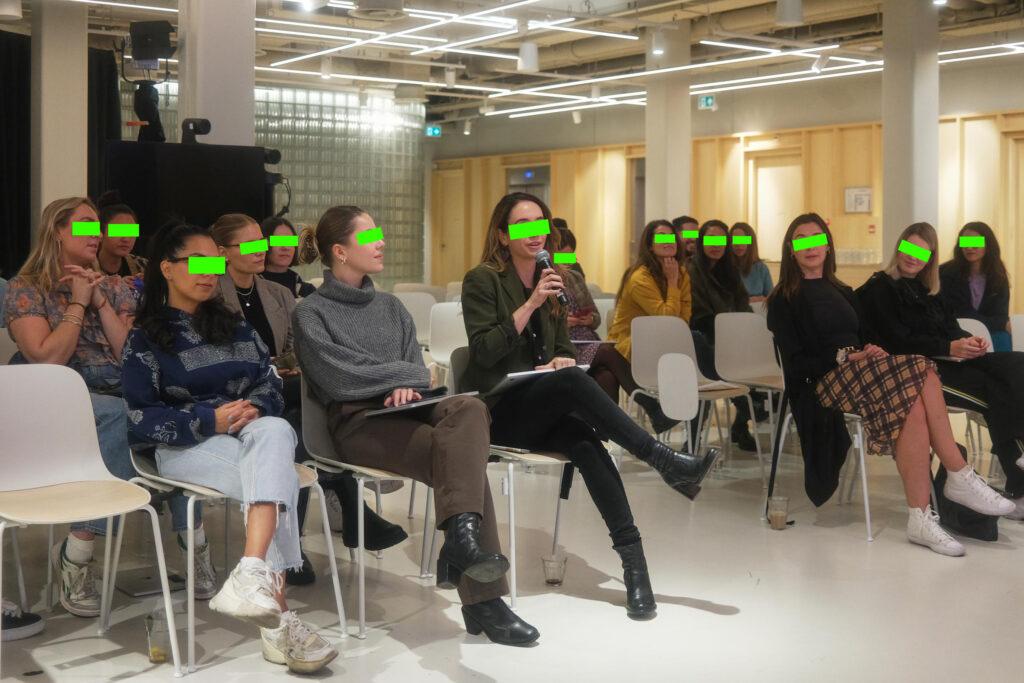
Our former partner has unfortunately allegedly taken an aggressive, all guns blazing approach, allegedly having terminated our agreement without reason by email through their Legal Counsel after we’d worked for them for 81 weeks without a formal written contract despite multiple requests.
They’ve hired no less than the second largest law firm in the United States to intimidate a BIPOC, family-owned media business and non-profit organisation that started in the summer of 2020 in the midst of BLM and #MeToo.
They insistently allege that the European unicorn owes us nothing.
3. Failing upwards
Before The Study Group, Obi and I had very different career paths.
Back in the UK, Obi worked for himself straight out of university, setting up his own video production company and building his portfolio to include international sports, arts and fashion brands. I was working for a regional PR agency with local and national consumer and business clients.
We’d both moved to the Netherlands around the same time in 2014 / 2015 – we met a couple of years later.
As Afropeans, the murmurs of an EU referendum were rumbling.
It felt like the right time to look for opportunities outside of the UK and continue to develop professionally in the EU.
Once in Amsterdam, Obi continued to work in video but the systemic challenges he experienced in the UK were the same in the Netherlands.
There was no representation.
No representation usually means no advocacy.
It makes you hyper aware and cautious – and with reason.
A study on hypervisibility by Bloomberg, in collaboration with the Black British Business Awards and The Network of Networks, defines the phenomenon:
“Members of marginalised communities experience the distress of hypervisibility in the workplace and beyond – the feeling of being overly visible because of an individual’s race or ethnicity, sometimes to the point of overshadowing their unique skills and personality.
“This type of extreme focus on skin colour in the workplace instead of the substance of the professional in the context of the relevant business can sometimes detract from due recognition, reward, and cultivation of employees’ distinct talents as a technician, for example. It can also be detrimental to the mental health of individuals who experience this type of attention.”
I started at a PR agency on the Herengracht, in the heart of Amsterdam’s Ad Land, whose clients were industry leading agencies.
The agency world and I did not gel.
The boss was infamous for their outbursts.
I left after six months and dealt with an adrenal burnout. Getting back on my feet, a couple of months later I moved into freelance copywriting for small businesses through to multinationals and conferences before getting a full-time in-house tech role at an accommodations website as a UX Writer.
In every role, as in Obi’s experience, there was little to no representation in most of the places I worked.
In the companies where there was more diversity, people from historically excluded backgrounds weren’t usually in decision-making positions.
In Unveiling Invisibility-Hypervisibility: The Struggle of Marginalized Identities, the Justice For Dr Morgan Medlock movement explores the relationship between hyper and invisibility:
“Invisibility refers to the phenomenon where individuals with marginalised identities are often overlooked, disregarded, or not given the same level of attention and recognition as their dominant group counterparts. This can manifest in educational settings when their contributions, perspectives and achievements are dismissed or downplayed.
“In organisational contexts, it might lead to underrepresentation in leadership roles or being left out of decision-making processes. Politically, it can result in the marginalisation of certain communities, leading to limited representation and attention to their issues.”
When we met, we started to develop TQTB within a few months.
Obi had always had ambitions to create a content platform. With his skills with video, photography and cultural direction, and my writing and storytelling, we’d make a start and see where it would take us.
We also managed our first photo studio, The Singel Studio, a Black-owned commercial photography space in the heart of Amsterdam.

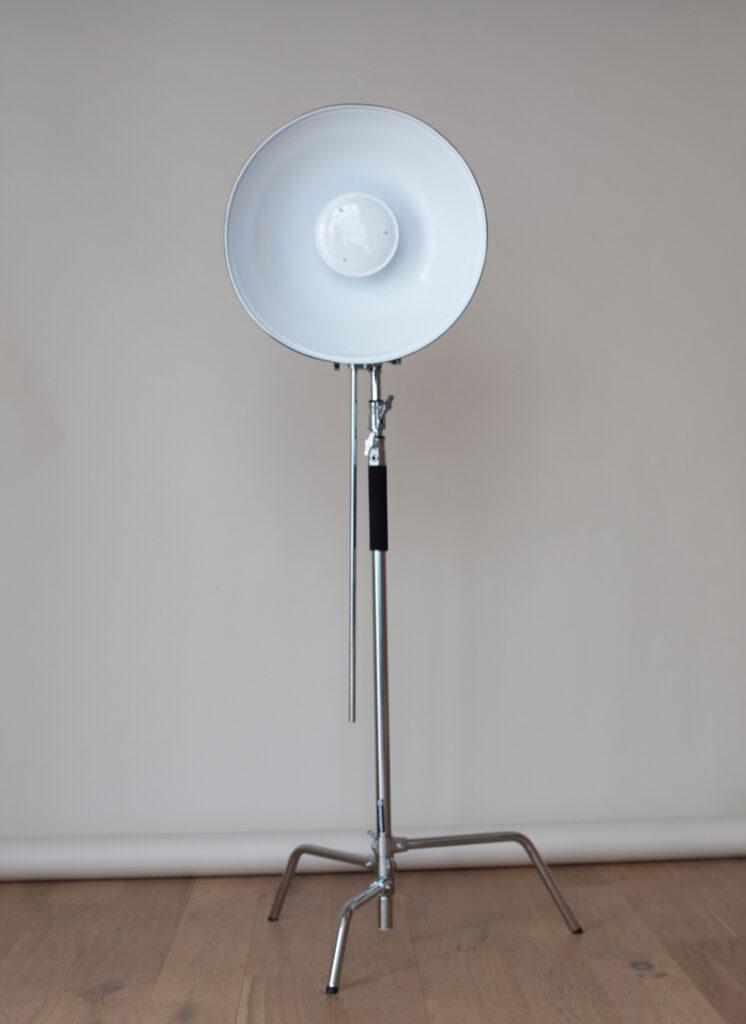



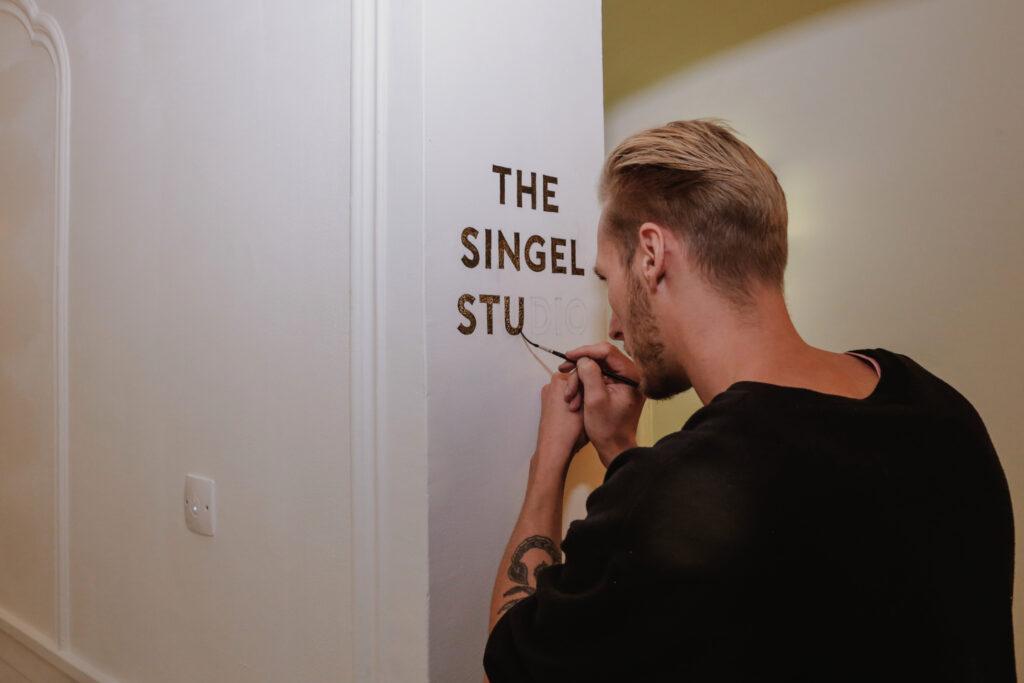
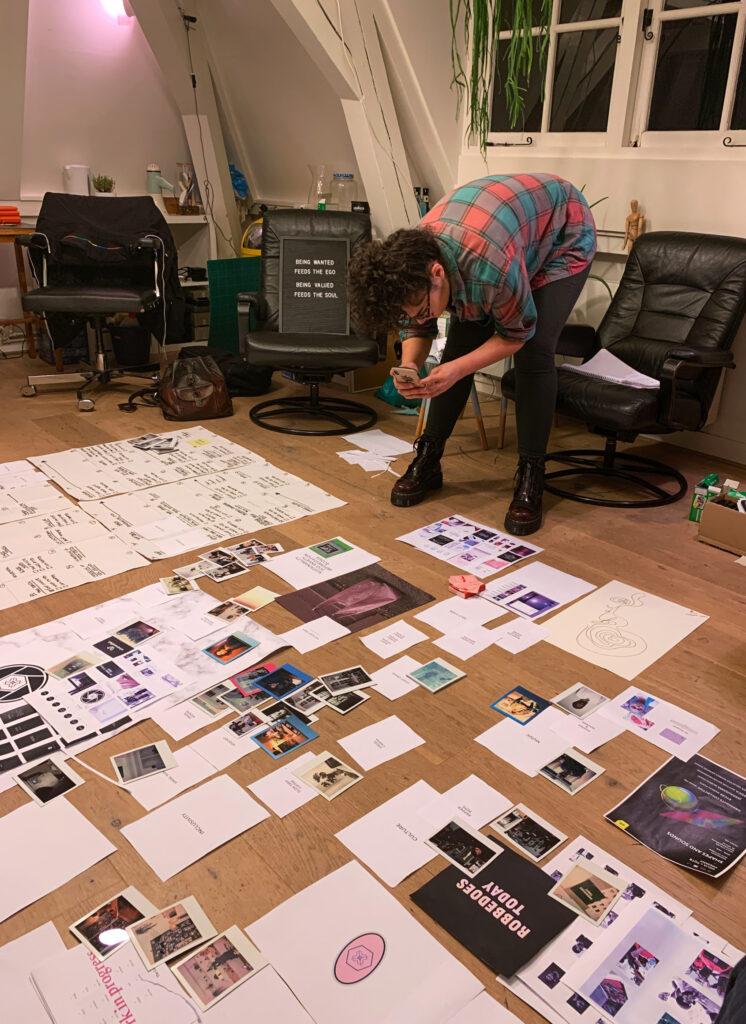
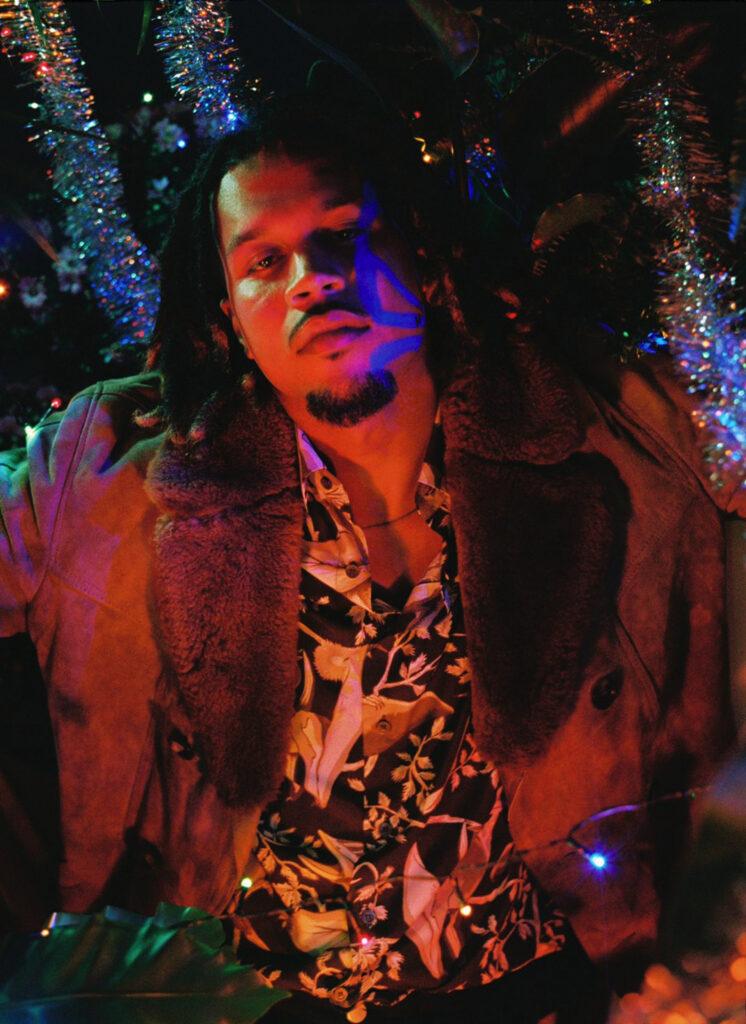
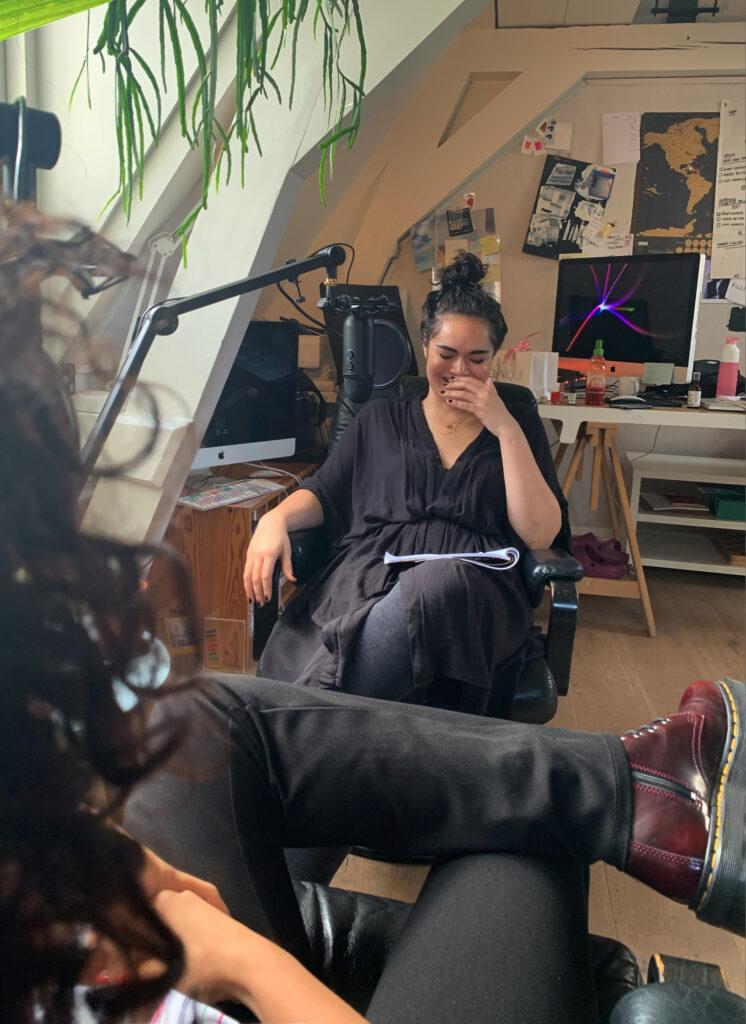
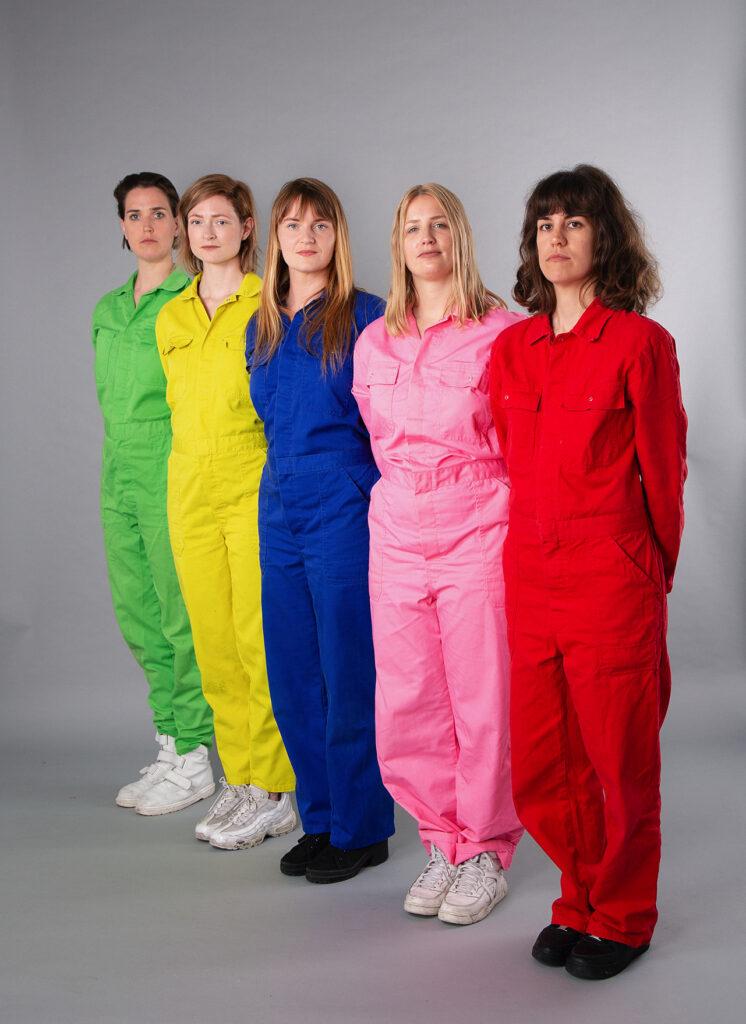

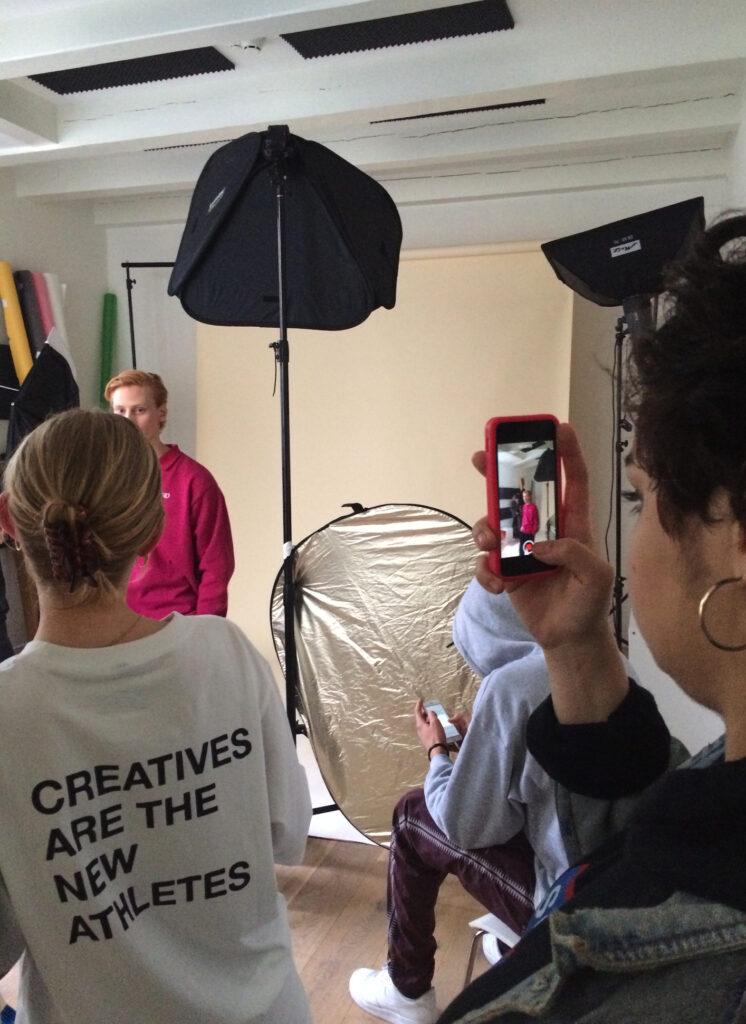
These creative projects were an important outlet and contrast to the corporate world for me and taught us a lot of lessons about building spaces that the community needed.
Towards the end of 2019, an international social agency asked us to develop a second studio in the Jordaan in the old heart of the city that we could then use as a pop-up.
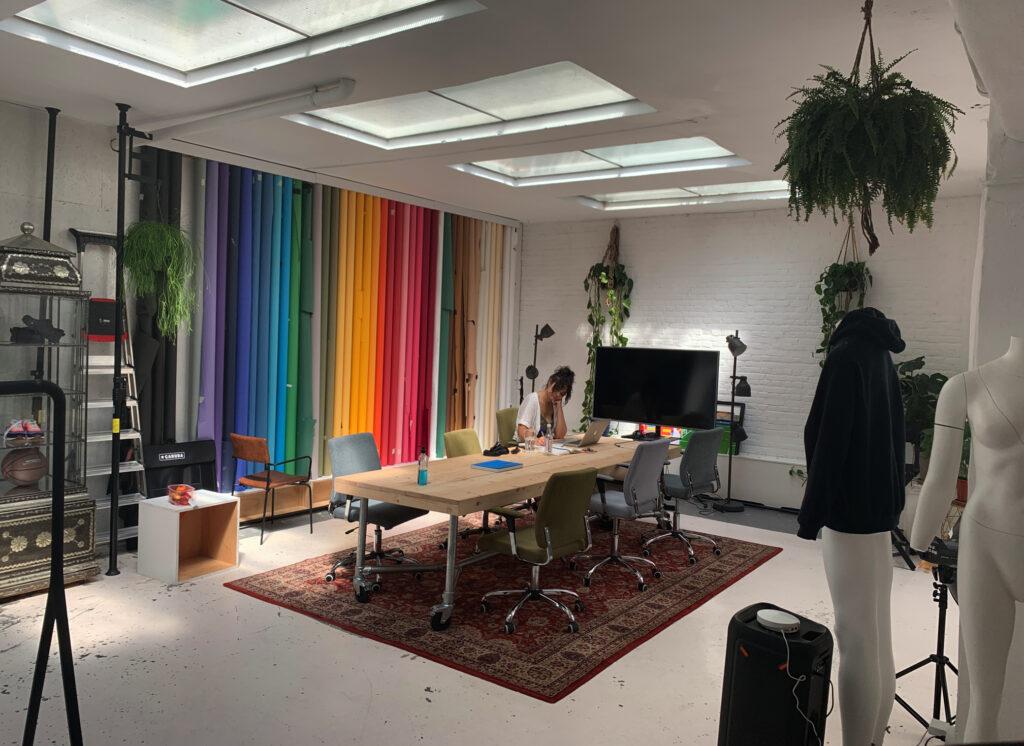



They liked what they’d seen us do at Singel.
Could we create a similar space for them?
They wanted an attractive space for existing and potential clients, as well as creating a bridge with BIPOC creatives working in youth culture who were heavily underrepresented in the agency.

2020 changed everything.
The pandemic and killing of George Floyd changed everything.
A dull numbness pervaded as I caught up on chats on the tech company’s message boards when I returned to work the week after Floyd’s murder. I happened to be off work that week. There wasn’t a single acknowledgement that this chilling act of police brutality had even taken place.
You know the scene in ‘Get Out’, Jordan Peele’s horror movie, where the main character Chris falls backwards down a vacuum of time and space?
It was too much. I signed off sick with burnout.
It was a turning point.
There had to be a better way.
We’d have to build a safer way.
We established The Study Group, a media company and non-profit in July 2020. We research the issues that impact historically excluded groups in creative and professional settings.
It’s something new – there isn’t a blueprint for this.
We use our experience from twenty combined years in agency, corporate and freelance spaces to develop our productions, publications and programs.
We did not anticipate to what degree we’d become the subject matter for our research.
In 2020 and 2021, we laid the foundations for our work.
You can read more about it here.
We were fortunate to be invited to speak publicly about the platform and our mission at different institutions such as Omek.
An opportunity to speak at one of the country’s leading design schools, Sint Joost in Breda, came about when an ally from an Amsterdam-based art collective wanted to give us a platform at the school. She was working in DEI and saw that representation was something that needed to be addressed.
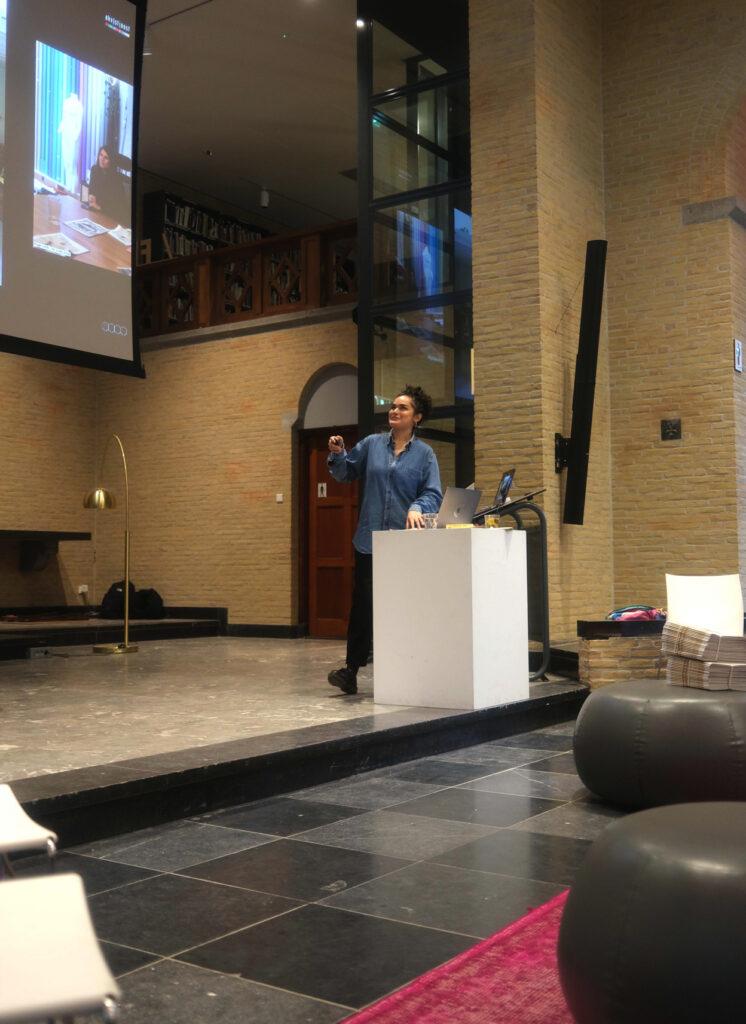
Supporting designers from our communities mattered – maybe it could inspire non-racialised students to connect as they figured out how to have community impact after graduation?

4. Access to opportunity… access denied
There are rules to building a career in male dominated spaces.
Insouciance is rewarded in patriarchal systems though non-racialised men aren’t the only ones to benefit.
Anyone who gains from this system can be complicit in exclusionary behaviour and bias whether they’re aware of it or not.
Scrutiny is a funny thing.
A 2020 study by Equilap and news outlet AD found that there were more CEOs in The Netherlands called Peter than there were women in the same role. A social campaign by interest group Women Inc in February 2022 highlighted this lack of diversity with hundreds of women changing their names to Peter on LinkedIn.
Around this time, we were approached by the Vice President of Creative at Adyen N.V.
The Dutch payments platform, founded in 2006 by Pieter van der Does and Arnout Schuijff, has grown rapidly in its 17 year journey.
Adyen means ‘starting over’ in Sranan Tongo, one of the most widely spoken languages of Suriname. Van der Does’ first company, a precursor to Adyen N.V., called Bibit, was sold to the Royal Bank of Scotland in 2004 for €90 million.
If the name seems familiar, it might be that you’ve seen it appear on your bank statement. Adyen N.V. processes transactions for merchants online, on mobile and in-stores for the likes of Uber, McDonalds, eBay and Spotify.
Over 3,800 employees work in offices from Amsterdam to Dubai to Sao Paolo. 551 new starters joined in the first half of 2023. At the time of writing, the publicly listed company – which is looking to acquire bank status – was worth €33.57 billion.
In a 2014 interview with Intermediar, when asked whether Adyen N.V. had its sights on Silicon Valley, van der Does said:
“I much prefer to do development work the European way. It’s not cheaper. Perseverance, loyalty and having a good time together weigh heavily here. The unrest here is not as great as in Silicon Valley. The longevity of our developers demonstrates that.
“Give me Europe and Amsterdam. In America, they are very good at building the perfect front. It all looks great but here the system works better. The non-sexy side of innovation gets off to a better start here. Restoring the body of a car is a lot of fun, you get compliments and encouragement from everyone. But renewing the gearbox is not fun at all – it’s hard work. We do both, with an emphasis on the latter. That leads to a demonstrably better product.”
— Pieter van der Does, CEO of Adyen N.V.

The Vice President of Creative got in touch with me on LinkedIn.
He’d allegedly been searching for an Editor in Chief for Adyen N.V.’s Design Studio as they looked to develop their content and editorial. We later learned that he’d supposedly also been in touch with editors from Volkskrant, Wall Street Journal and Time magazine.
He’d seen The Quick + The Brave’s website and social channels and had a copy of Journal 001. Allegedly impressed by what he’d seen, could we talk and share ideas?
I was, naturally, interested in talking but a full time job at Adyen N.V. wasn’t where my focus was.
I am a personal witness to and have heard catalogues of accounts of other women of colour trying to be seen and respected in their careers only to land the ‘angry Black/brown woman’ label; deal with barrages of micro and macro aggressions daily; face disproportionate scrutiny of their work, character and existence; do the emotional labour of upholding the moral compass of their employer.
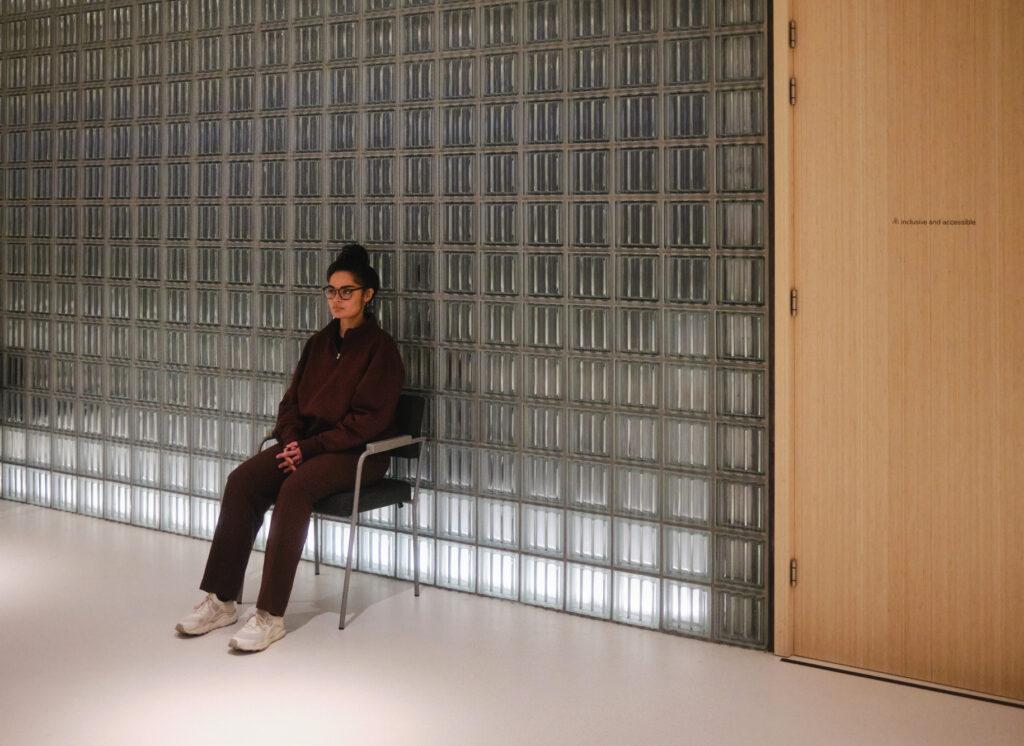
No wonder 97% of Black knowledge workers surveyed by DEI analytics company Included say that they want to work remote or hybrid.
The office isn’t a safe space for everyone.
But maybe, just maybe, there was a way to work more safely by entering into the industry on our own terms?
So we had a call and a couple of weeks later were sat face to face with the Vice President of Creative in Adyen N.V.’s office on Amsterdam’s Oosterdok.
Everyone around the table was enthusiastic about the collaboration and the mutual benefits that this could bring.
We presented our idea for a design and communication program to support creative talent from historically excluded communities.
Over five years, the program would give mentees and professionals access to the tech industry while working on live briefs for The Study Group’s publications, content and digital platforms; emerging creatives would allegedly gain mentorship from industry-leading designers from Adyen N.V’s Design Studio while the company would be introduced to specialised talent from the community.
Over email, we were told that the Head of People was allegedly enthusiastic about the program.
5. The Pink Theory
When developing the program, we built with intention.
This is work that has real life impact and if we wanted to see results for the program’s participants, the community and our platform, we needed to be able to structure how we communicated the thinking behind the program in a way that was relatable to potential sponsors or collaborators.
Why not learn from the industry’s best?
Through research, we came across The Pink Theory. Coined by Daniel H Pink (yes, a cis-het non-racialised man), the Pink Theory looks at the relationship between work and motivation.
It defines three core motivating factors that give us a sense of fulfilment from what we do:
Autonomy – the right or condition of self-government
Mastery – comprehensive knowledge or skill in a craft or activity
Purpose – the reason for which something is done
With 11 million views and counting on his TED Talk, in The puzzle of motivation, Pink explains that when these are in balance, we see improvements in other areas of our lives as a result of feeling motivated.
This spoke to the ideas that we were trying to bring to life and helped us to articulate a sound grounding for the program.
But we now have to sit and reflect on this as we process this nightmare that’s unfolded.
Pink’s thinking is sound assuming that exerting your autonomy is the norm.
But when it comes to exercising autonomy as a Black person or person of colour, as a woman, as a queer person… the double standard is surprisingly monumental.
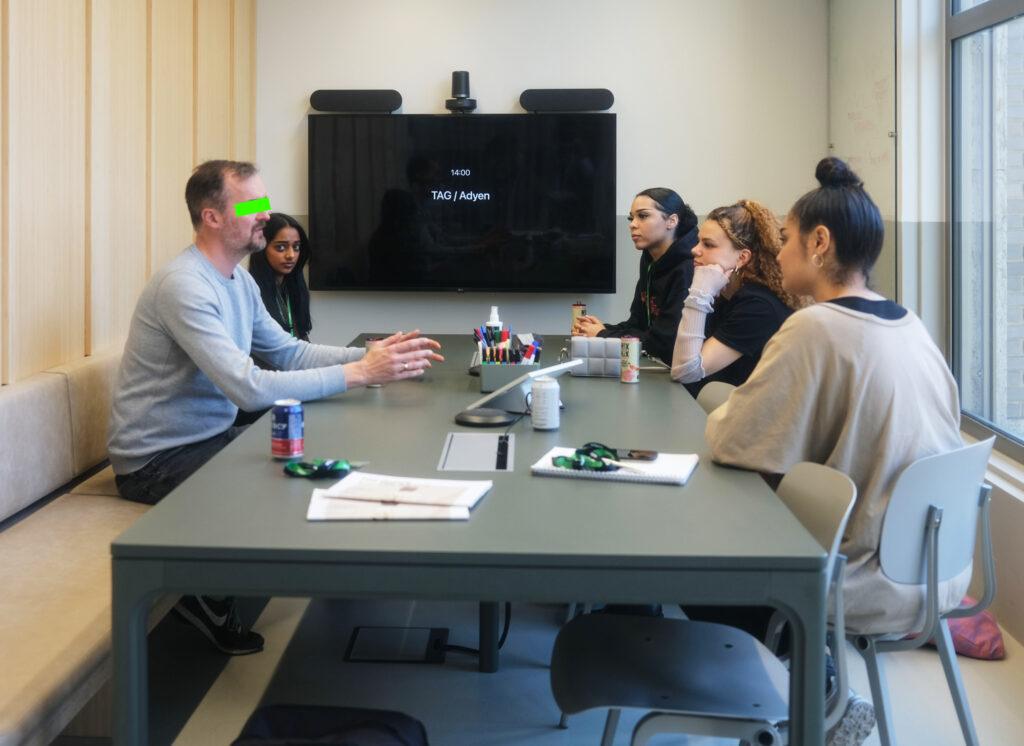
6. Spit and a handshake
We were excited to develop the program.
There were some things we had to establish at the start.
I felt a huge sense of responsibility bringing my partner and creatives from the community into the corporate space and wanted to make an informed decision before getting into bed with a faceless corporation.
As a majority BIPOC women and non-binary team, at The Study Group we’re aware that we need to tread carefully as we navigate our careers.
Our contact allegedly agreed to an interview so we could be clear on Adyen N.V.’s goals and their supposed intentions behind supporting the program.
He shared his personal journey as a designer.
Self-taught and from a working class background, he’d put in hard work and got results, allegedly starting as a freelancer for Adyen N.V. for a couple of years before becoming the company’s first full-time designer.
He was allegedly frustrated that creatives from historically excluded backgrounds didn’t get the same access to opportunities to grow.
In the recorded interview, he acknowledged that Adyen N.V. had work to do to improve diversity and HR had allegedly been unable to reach professionals from BIPOC backgrounds. They were using traditional methods of recruitment (LinkedIn, career days at universities….) but we’re typically not in those spaces to begin with.
Our contact took the initiative to look further afield and found us.
Talking about representation, he explained:
“Where are the people who really want this job but aren’t represented in our team? That’s the reason why I think when we called, it was at first a little bit about the Editor in Chief role.
“Help me to find these people because I know they’re not per se on LinkedIn. They probably think ‘for God’s sake, why would I or can I even work at Adyen N.V. because I am who I am?”
“… I always said where is the hard working person [from the Bijlmer] with three jobs but doesn’t know that Adyen N.V. exists, doesn’t have the mental space [to know that] Adyen N.V. exists. Those people we met last time [through] The Study Group, because you brought them here, are super enthusiastic people who are very talented and eager to learn.
“One is a sound engineer who wants to work in the music industry and the music industry doesn’t see a woman of her colour, a woman, young, inexperienced. [They say] “let’s ignore her, she’s not relevant”. I would really embrace those people in my team. Try it, explore what we sound like, explore what we do then we’ll figure out how to enhance your skills in audio design. Those are the people I would really like to help be part of our team.
“The fact that I called you, you spoke about The Study Group, The Quick + The Brave… You had a challenge, we can facilitate in that challenge. I want to do something that brings diversity and inclusivity from outside of our organisation into Adyen N.V. and also outside of Adyen N.V. so that we actually help you and people see that instead of like ‘now I could just hire you two’ then you’re part of Adyen N.V.. It’s like ‘oh you’re a part of Adyen’ but then nobody sees that.
“So, I want to make the extension a little bit outside of our organisation, not through LinkedIn, not through sponsorships like ‘OK, let’s give these people money, look at us being cool with our name and we’ve paid money’.
“No, let’s do things together, let’s figure out how we can be meaningful for us and also give money.”
— Vice President of Creative at Adyen N.V.


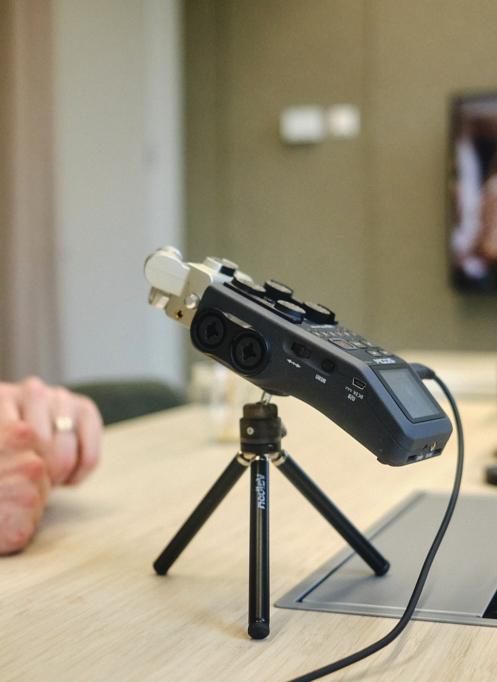
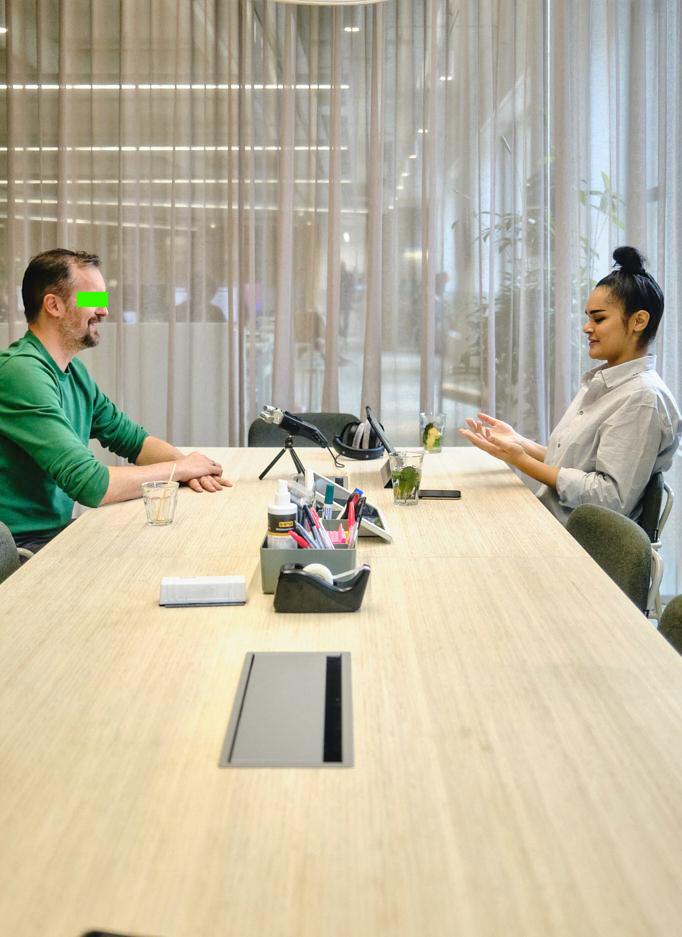
A Dutchman’s word holds sway in business – verbal contracts are legally binding in the Netherlands.
We’d been brought in through what seemed to be genuine initiative grounded in common sense.
We were supposedly invited to begin an adventure.
And so we began a chemistry test phase with our collaborator.

7. The Formula
Large corporations craft their reputations through acerbic messaging.
When you onboard (or join a tech company), you’ll get a bunch of branded merchandise, stationery and marketing materials expounding the values you are all united under as employees.
Adyen N.V.’s values are summed up in The Adyen Formula:
We build for the benefit of all merchants (not just one).
We make good choices to build an ethical business and drive sustainable growth for our merchants.
We launch fast and iterate.
Winning is more important than ego; we work as a team – across cultures and time zones.
We don’t hide behind email, instead we pick up the phone.
We talk straight without being rude.
We include different people to sharpen our ideas.
We create our own path and won’t be slowed down by ’stewards’.
If these were the guiding principles that decisions at all levels of the company were based on then, on the face of it, it seemed that we were aligned..

We started to develop the program and reach out to creatives and professionals from the community to become mentees and mentors.
We advocated for Adyen N.V. all the way.

8. Sustainability
Over the course of the five year program, there was potential for specialised talent from historically excluded backgrounds to allegedly see the workings of the tech company first hand and learn about an industry that had previously been inaccessible to them.
We didn’t yet have a written contract but, as we progressed through the first year, we allegedly regularly talked with our contact about formalising the collaboration in the second year to ensure its longevity.
The program was about much more than physically being in Adyen N.V.
With this project, we were creating the infrastructure to support creative community projects at our studio in the Bijlmer.

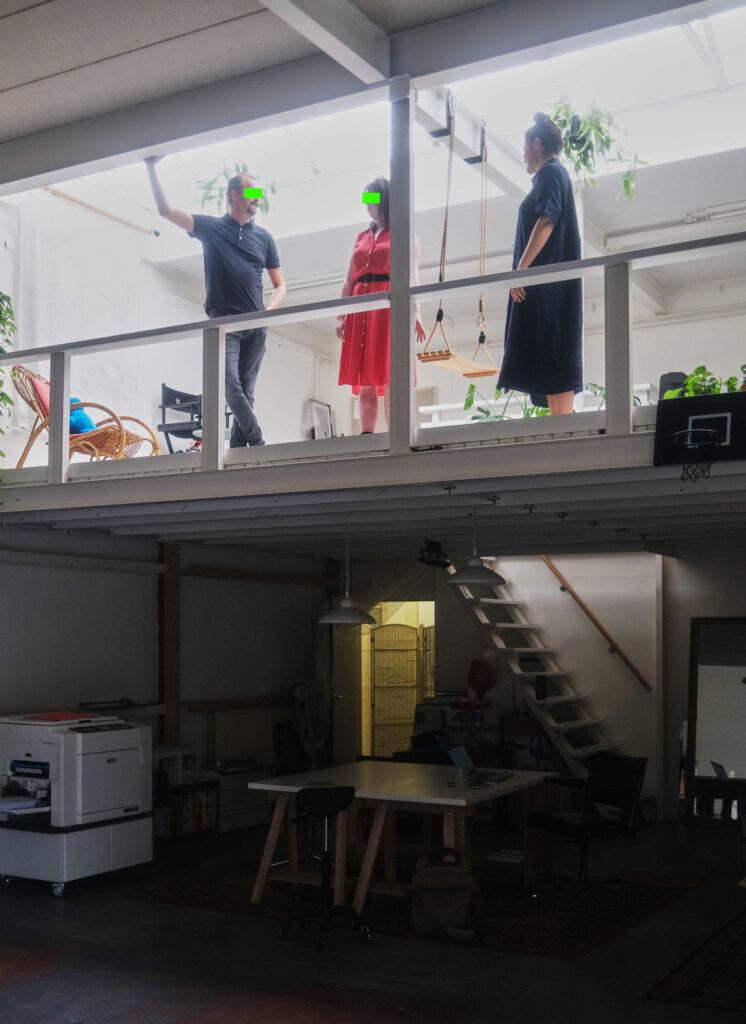
Located in the south-east of the city, the Bijlmer was built in the 1960s as a ‘city of the future’ for Amsterdam’s middle class. However, Dutch people opted to buy in towns and cities close to the capital instead, put off by the high prices of these new Le Corbusier-inspired developments. Most homes stayed empty, pushing down rent prices.

In the 1970s, around the time Suriname gained independence from The Netherlands, Surinamese families started to move in, forced out of the overcrowded and derelict living conditions closer to the centre of the capital.
Bims remains Amsterdam’s largest Black neighbourhood and, like many of our migrant communities, faces the realities of gentrification.

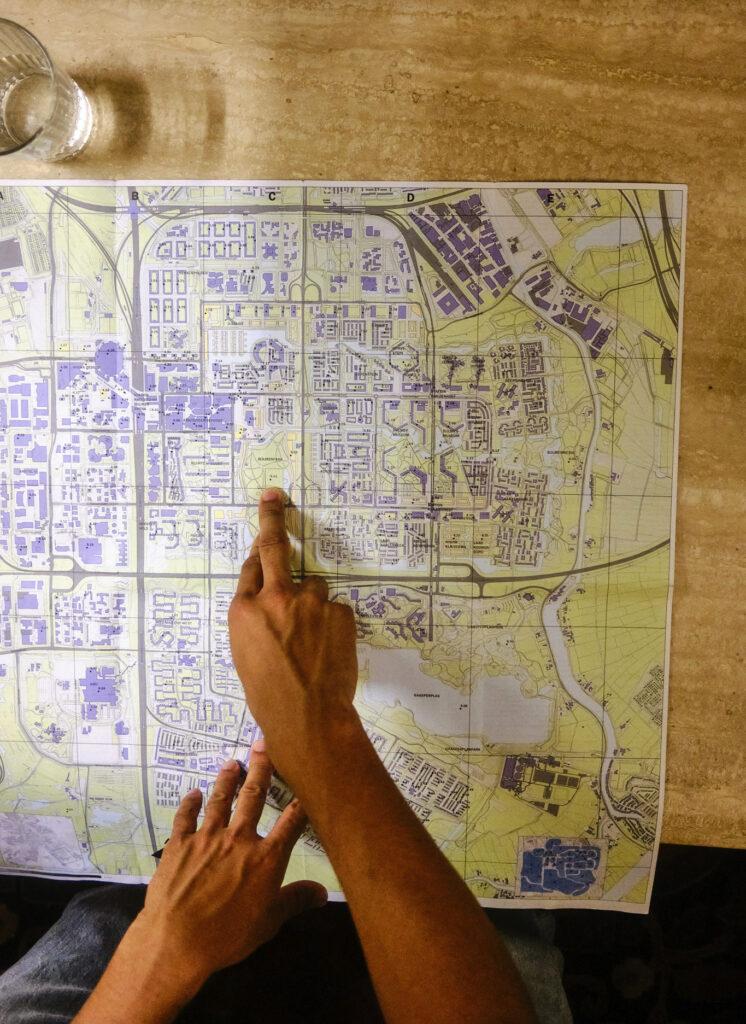
This project was about serving a community that has always been tolerated, not welcomed.
The foundation of the program draws on personal experience.
Obi, The Study Group’s Co-Founder and Director of Culture, grew up in inner city London.


As a Black boy growing up in one of West London’s estates there wasn’t access to many opportunities. He was lucky to find something he was so passionate about so early when he came across a mentorship program called Youth Cable TV (or YCTV).
Established in 1995 by television producer Sabrina Guinness, at YCTV he produced his own shows from the age of 16 at their indie TV station in Ladbroke Grove.
It sparked a life changing trajectory.


From there he studied Television Production and Cultural Studies at university where he was mentored by the late Alan Fountain, former Commissioning Editor of Channel 4 and President of European Audio Visual Entrepreneurs (EAVE). He started his video production company after graduation.


Unfortunately, the higher Obi went in his career, the fewer people there were like him in the agency space.
Lack of representation and advocacy (whether you freelance or work for a company) are blockers to career progression.
Brian S. Lowery, a Professor in Organisational Behaviour at Stanford, explains that:
“Among Black people, the experience of discrimination is one of the few negative experiences that actually increases with education. One explanation is that as education increases, interactions in predominantly white social spaces also increase.”
–Professor Brian S.Lowery
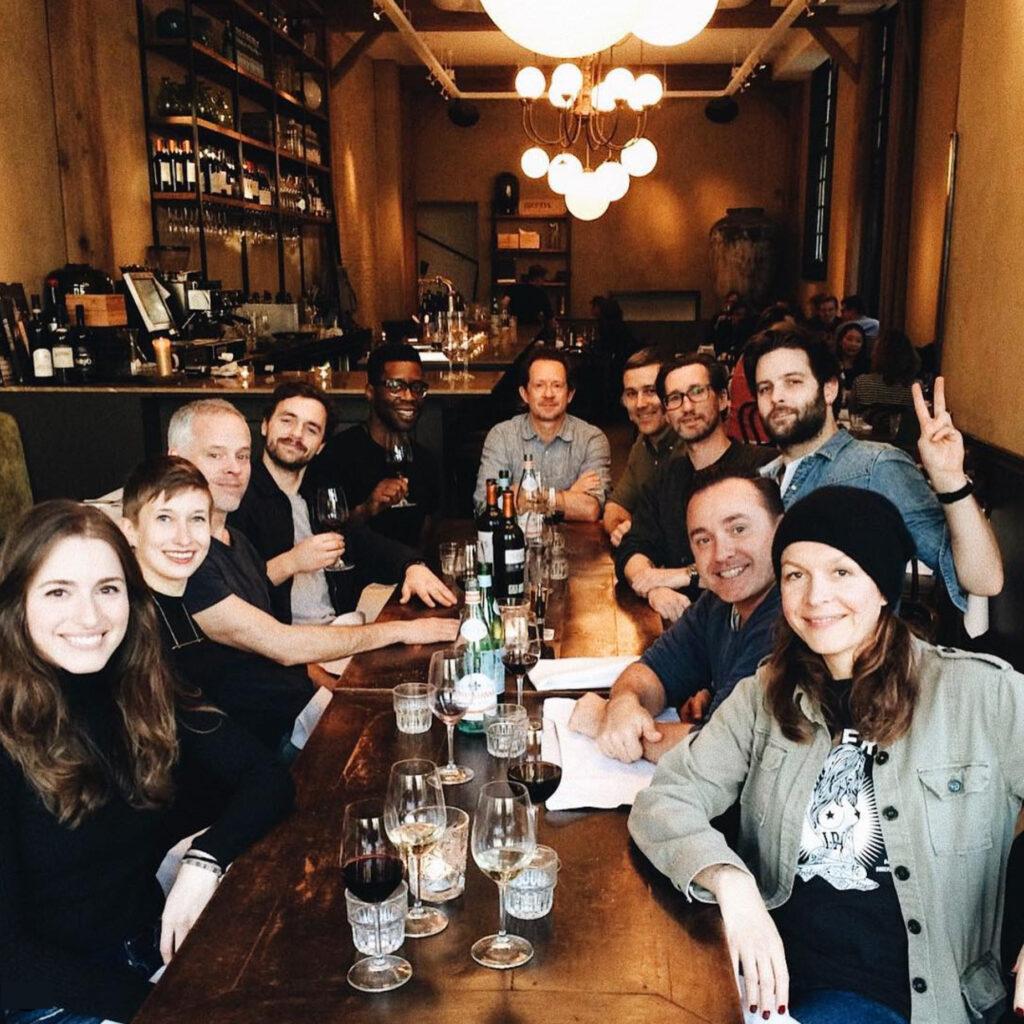
It’s an aching, dull discomfort people from historically excluded backgrounds in professional spaces face daily.
Our design and communication program was a way to not only pay forward the opportunity YCTV and mentorship at university presented to Obi, it was about giving the community access to tools, resources and support.
To hold space for underrepresented creatives to develop their skills safely and to prevent them from experiencing the same challenges that we did at the start of our careers.
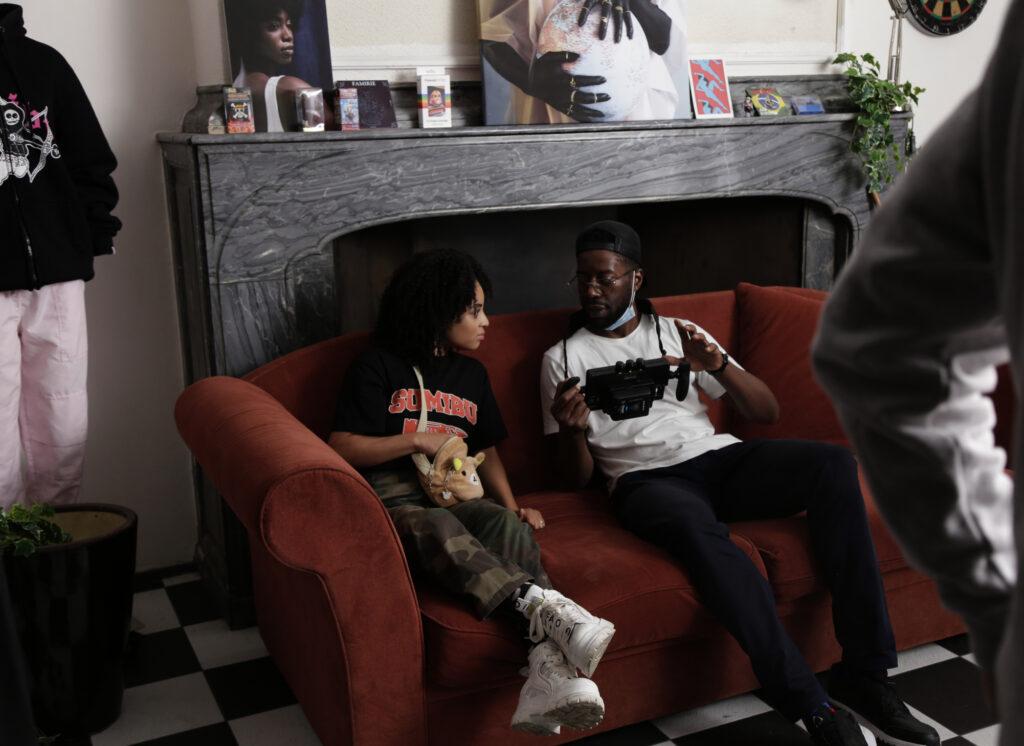
9. Hypervisible yet invisible
As we built the program, we’d meet with creatives from the community from fashion to interior designers; video directors to sound engineers. Feedback was allegedly encouraging – our guests were supposedly always welcome to come into Adyen N.V.
It was with a sense of pride that we saw the program’s mentees become more and more at ease in this unfamiliar space, greeted by no less than by the Vice President of Creative.
We’d shared his backstory with them and they were excited to get to meet with him. Finally, someone in a decision-making position was seemingly using their privilege for good and advocating for us.
There was hope for the bridge we were striving to build.

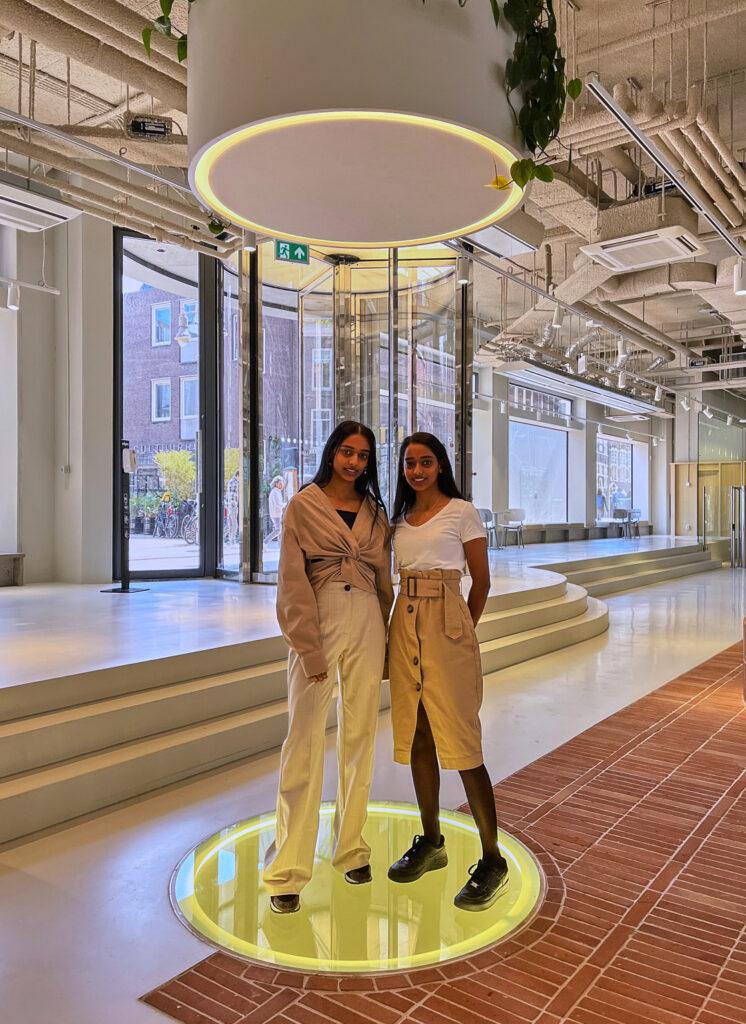

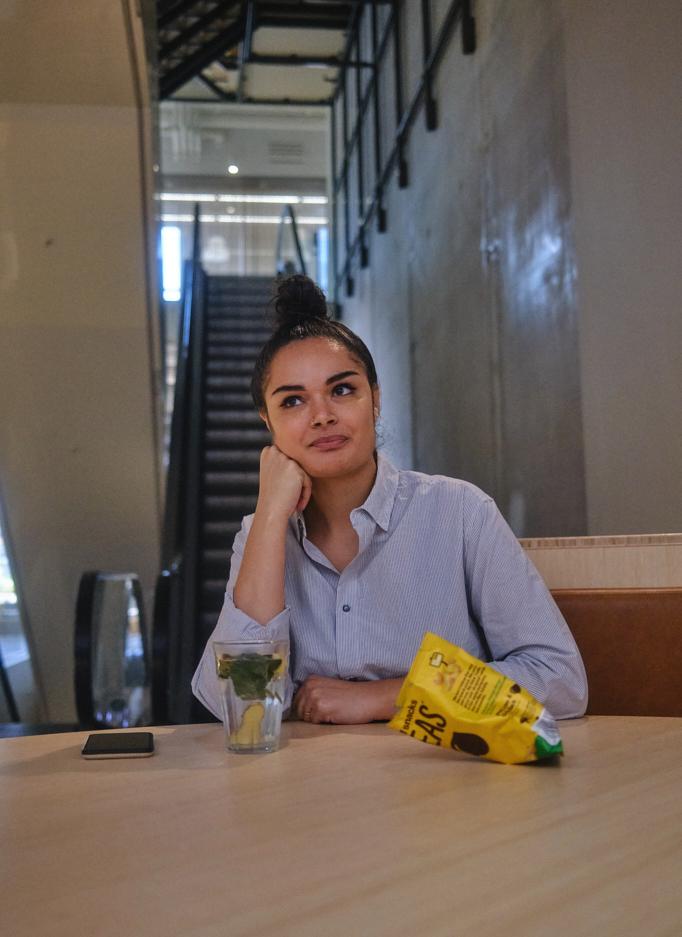
We had meetings at the freshly opened and refurbished office on Rokin.
The office on Rokin is fancy.
It’s so fancy that tourists and shoppers mistakenly come in daily for the coffee bar not realising it’s a workplace.
In the coffee area, we’d meet at a table overlooking one of Amsterdam’s main shopping streets in eyeshot of Dam Square and the Royal Palace. It gets a lot of traffic with an average footfall of 33,900 on any given Saturday.
Adyen N.V. likes to have its offices near high streets to better understand the needs of their customers.
It allegedly seemed like a mutually beneficial arrangement for us to have our meetings there.
It would give our productions and meetings greater visibility and contribute to awareness of the collaboration. We were in the building so often that when we picked up our contractor passes from Reception, they’d help us out and reserve the table for us in advance.
We felt proud to be representing the community in the building.
August 2022, the following copy was put up in the window:
The ideas
This is where The Study Group meets.
Like Adyen, they’re the thinkers, makers and storytellers of big ideas. Adyen offers them a space to turn those ideas into reality.
It went up so quick that allegedly there wasn’t time for Adyen N.V. to seek written permission or input from The Study Group on the use of our name.
Naturally, at the start of any collaboration, everyone is finding their feet and learning how best to work together.
Still, we were pretty surprised that for something so permanent on display in a window on a busy shopping street that we allegedly wouldn’t get to approve how our name was used.
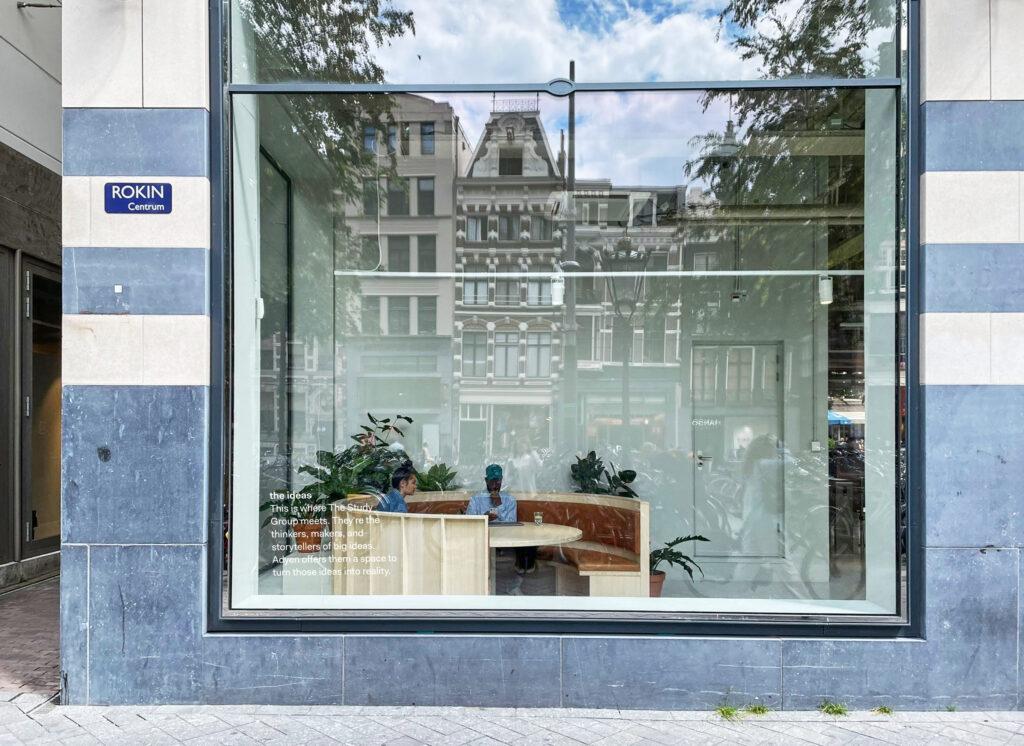

10. See things as they are (not how you want them to be)
There were hiccups in the first year of the program but we kept things moving.
The designers from Adyen N.V.’s studio who could mentor our junior creatives allegedly weren’t available so the plans in our original proposal had to be adapted from early on. We’d need to look for design expertise outside of Adyen N.V. to support design work on TSG’s briefs.
Support was also needed when it came to access to hardware.
We discussed the possibility of Adyen N.V. providing refurbished laptops for program participants so that they had industry standard tools. Unfortunately, it allegedly wasn’t possible to co-ordinate this so we’d need to invest in a computer for them to use at the studio ourselves.
There was no in-house producer for us to align with.
Our main contact was the VP of Creative and he had his own work and teams to manage. To try and get us more support, he connected us with members of the Marketing team to help.
Unfortunately, in most companies – Adyen N.V. included – DEI projects are undertaken by employees on a voluntary basis.
As one member of the team allegedly put it to me:
“I’d love to help more but HR doesn’t allocate work hours to these kinds of projects.”
— Marketing at Adyen N.V.
I wasn’t mad at them, of course, they had to prioritise the work they’re paid to do.
Since we were allegedly contracted to do development work across DEI, we decided to not make a fuss and took on the additional labour ourselves.
The alleged lack of infrastructure was felt with our first event held in the event space at Rokin.
In June 2022, we produced an expo to showcase elements of the program, managing all parts of the production.
Normally, Adyen N.V. hires an events company called Brownys…
They produce events for the likes of Tony’s Chocolonely, Denton’s, Netflix, Post NL, the city of Amsterdam and DLA Piper Nederland N.V.
Maybe, it was suggested, that we could work with them to put the event together?
The company only hired out equipment if they produced the whole event. Given the size of the events they tend to cater to, their rates were out of our budget range. We’d need to find our own path to make it work.
The DEI volunteer from Marketing was allegedly brought in to support with technical needs, reserving the events space and connecting us with Office Management.
We were told we’d allegedly have access to turntables for a DJ set and other sound equipment. These didn’t materialise so we had to use our time and budget to research and buy them.
We were going to be introduced to the Office Manager so we could liaise with them for the event planning – unfortunately in the end they were allegedly unable to join the meeting so we met only two days before the event itself.
The invoice we were waiting on to buy the materials, cover logistics and build the expo landed two weeks before the event giving us a small window to get everything organised.
We chased up the invoice but, as a new contractor, our requests were allegedly not prioritised.
We couldn’t have made the expo happen between just the two of us.
We had the beginnings of our community forming and people needed to get paid for the time and work they were putting in too.
We pushed hard to make the event a success.
Between us ordering all the fixtures and equipment for the expo, Obi developed the teams, guests and productions, I wrote the copy for all the posters, banners and postcards over a weekend while our contact did the design work.
He’d allegedly managed to work out a deal with Adyen N.V.’s printers to have everything printed out and Adyen N.V. would allegedly cover the cost.
He was seemingly passionate about doing his part and seeing us do well.
One hundred guests came through from The Study Group’s network including from the Prince Claus Fund, The Black Archives, Black Pride NL, local wellness communities, Patta and other BIPOC entrepreneurs, Black financiers, students from the University of Oxford and DAS Creative Producing and media outlets like FunX and NPO.
Two guests allegedly came from Adyen N.V.
Our contact was supposedly blown away.
He exclaimed that this was allegedly “the best event we’ve ever had in the event space”.
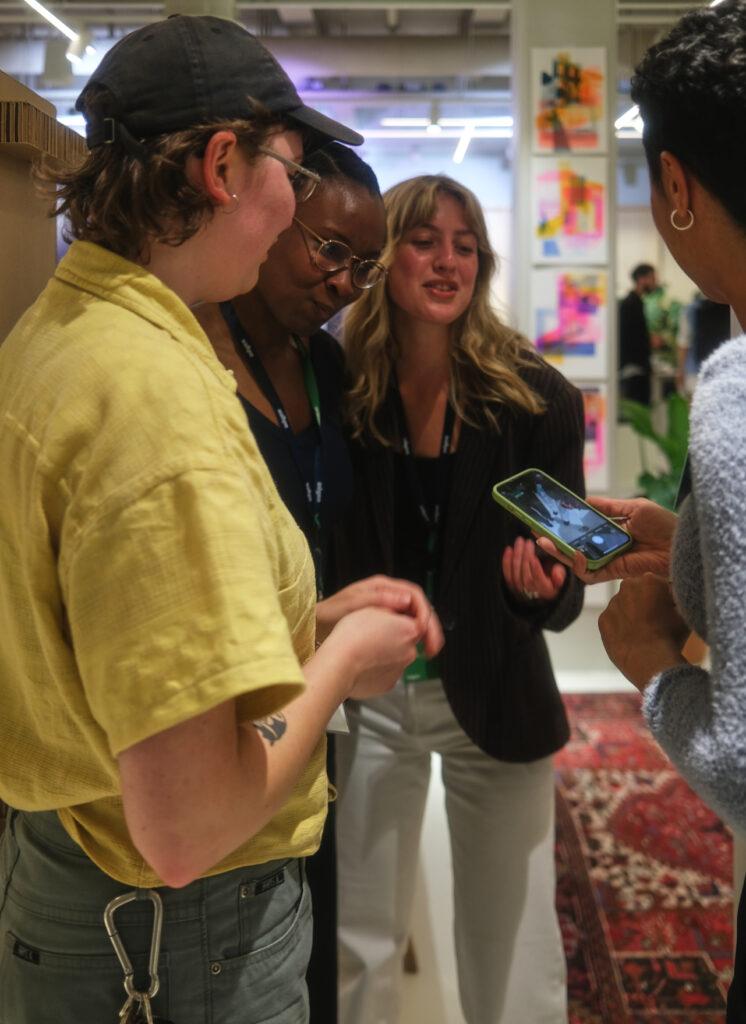

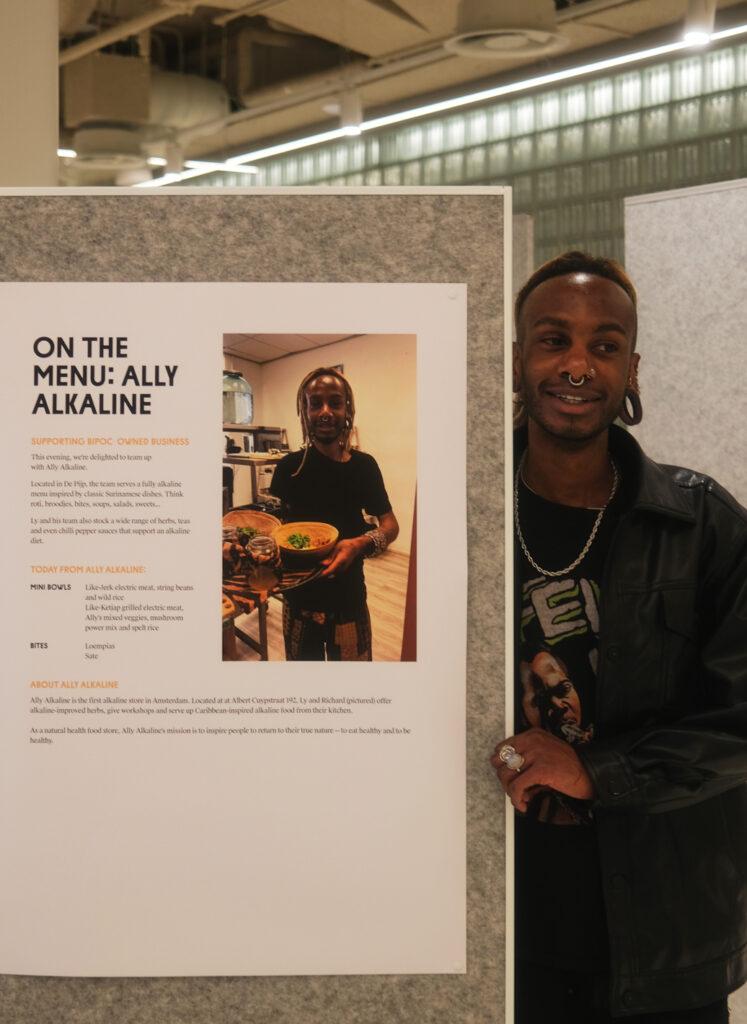
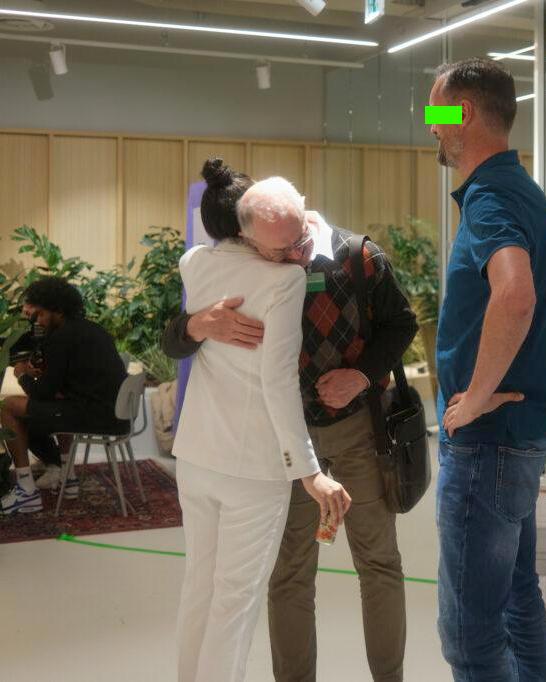
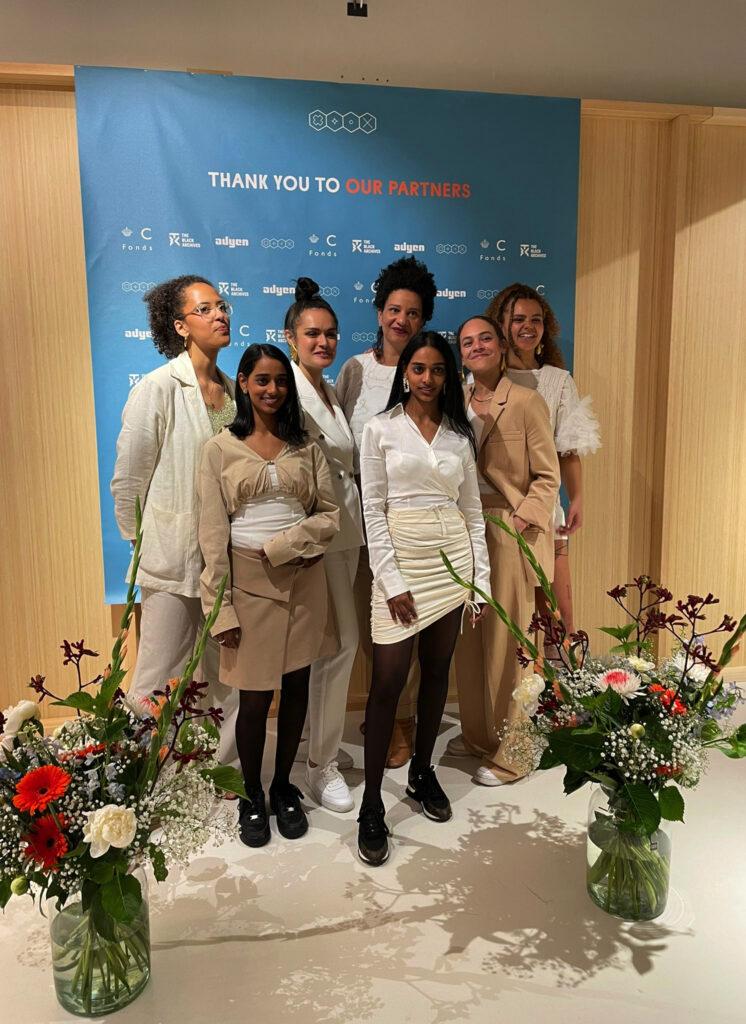
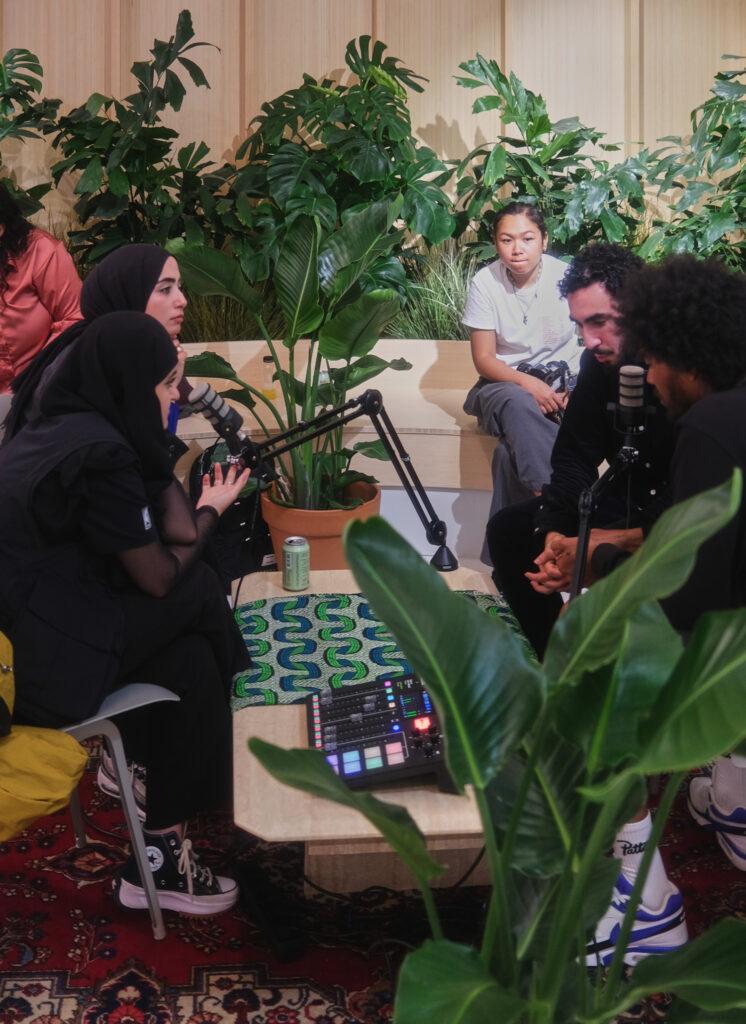
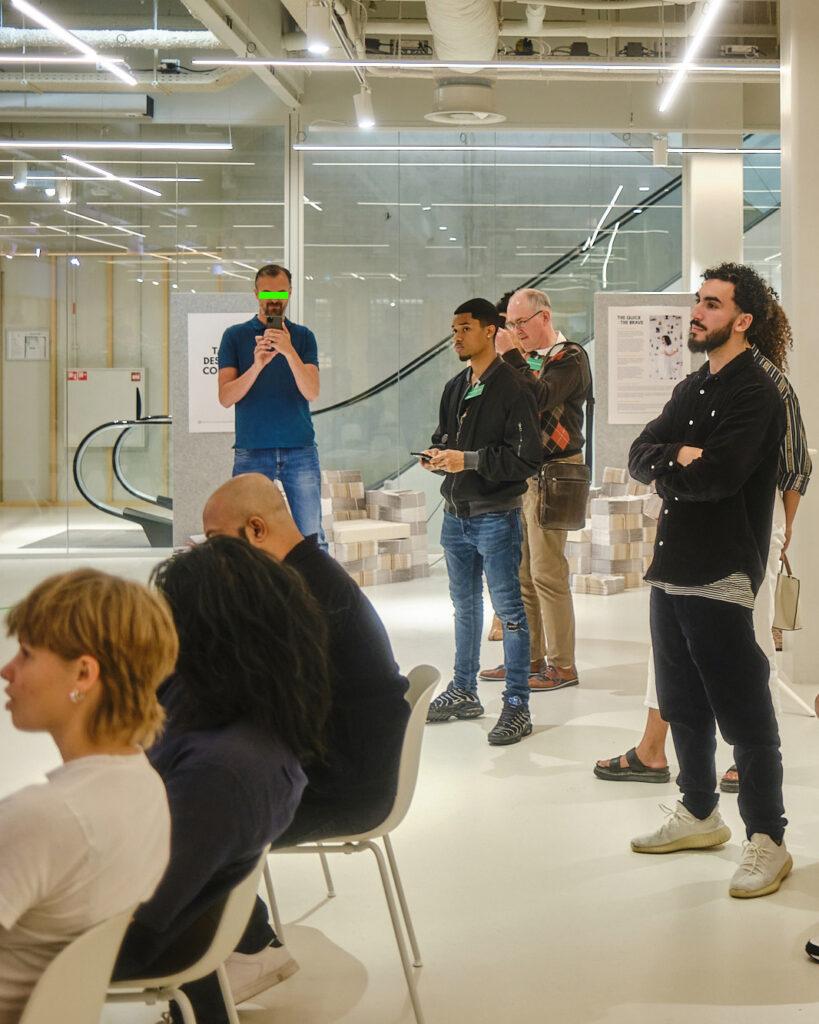
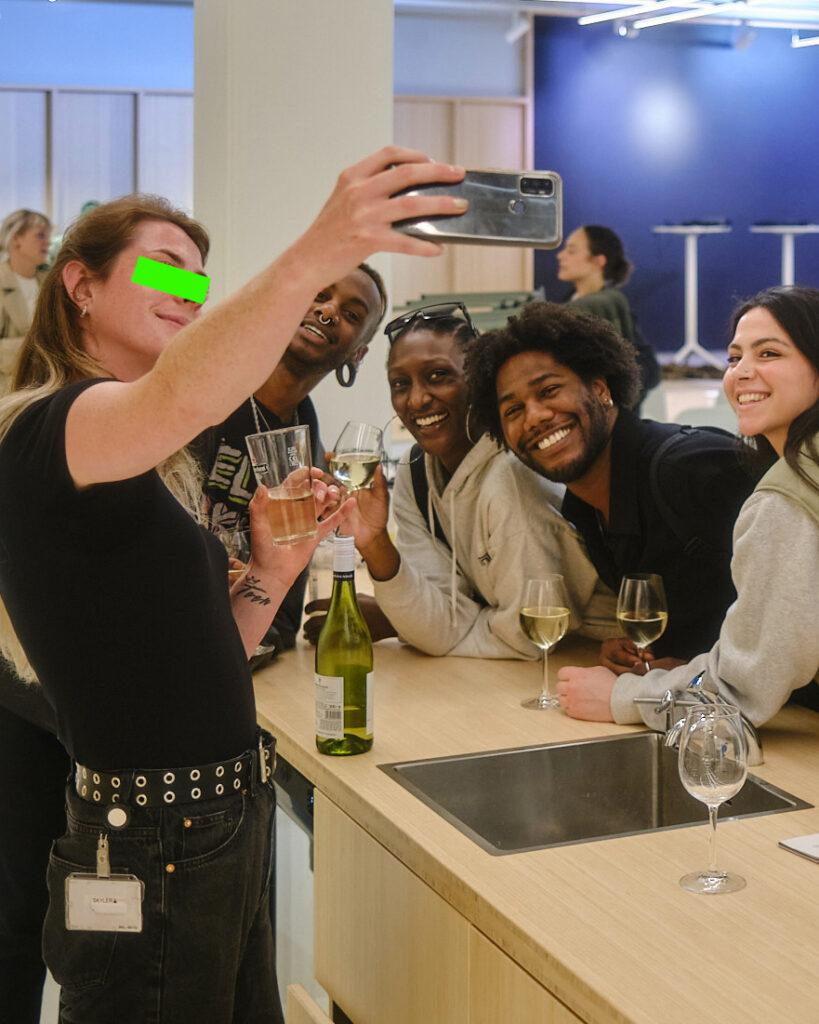
And with good reason.
There was live illustration work and sound design, zine making workshops, interview areas, alkaline catering from local Black owned businesses, our community fridge painted by an artist from Bijlmer…
Guests got to learn more about projects that The Study Group was developing with other partners. They stood to benefit from the design and communication program too.
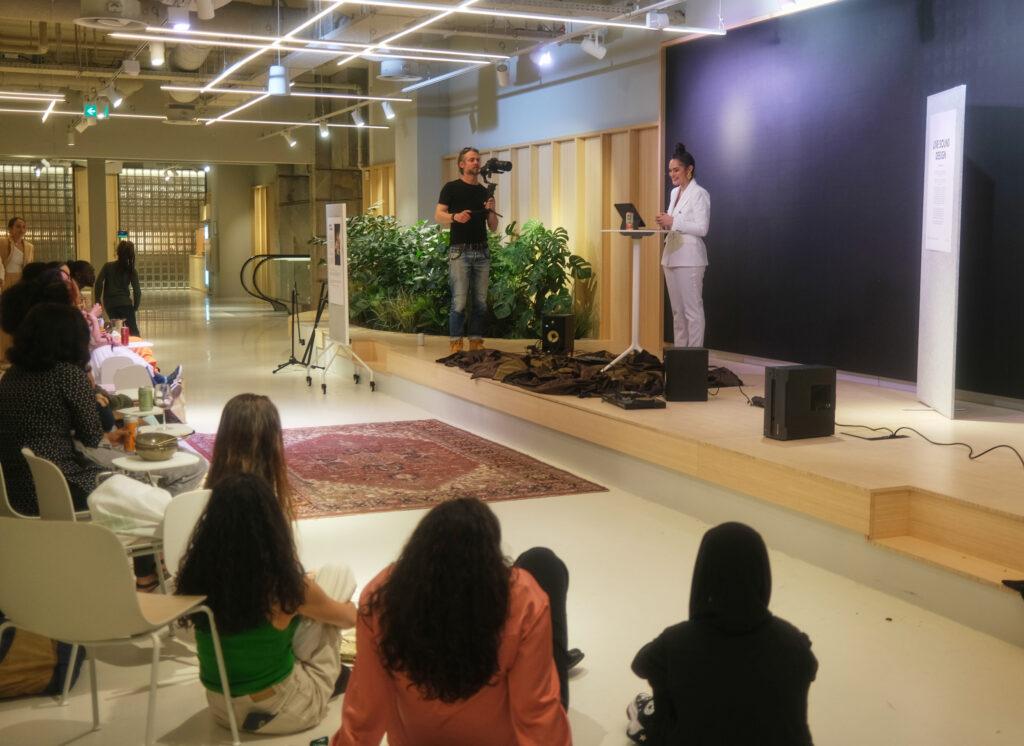
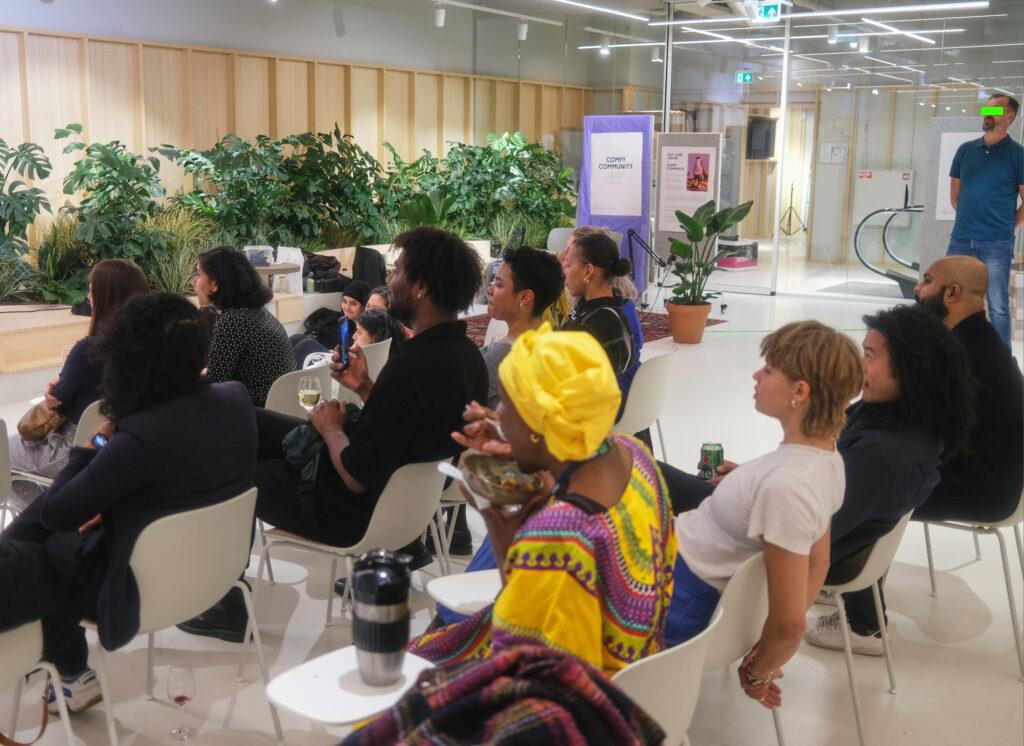
Projects like Inspired Flight, our content series telling the stories of artists and cultural practitioners around the world supported by the Prince Claus Fund. One of the Prince Claus Seed Award recipients, a photographer from Bangladesh whose work raises awareness of LGBTQ+ discrimination in her home country, was a special guest.
Another project was the upcoming publication called ‘mini maatje’ and a community fridge initiative with The Black Archives, the Netherlands’ largest archive of Black historical and cultural works.
We were showcasing the skills of local creatives and entrepreneurs from historically excluded backgrounds who saw the potential and opportunity that the program presented and wanted to contribute and build with us.
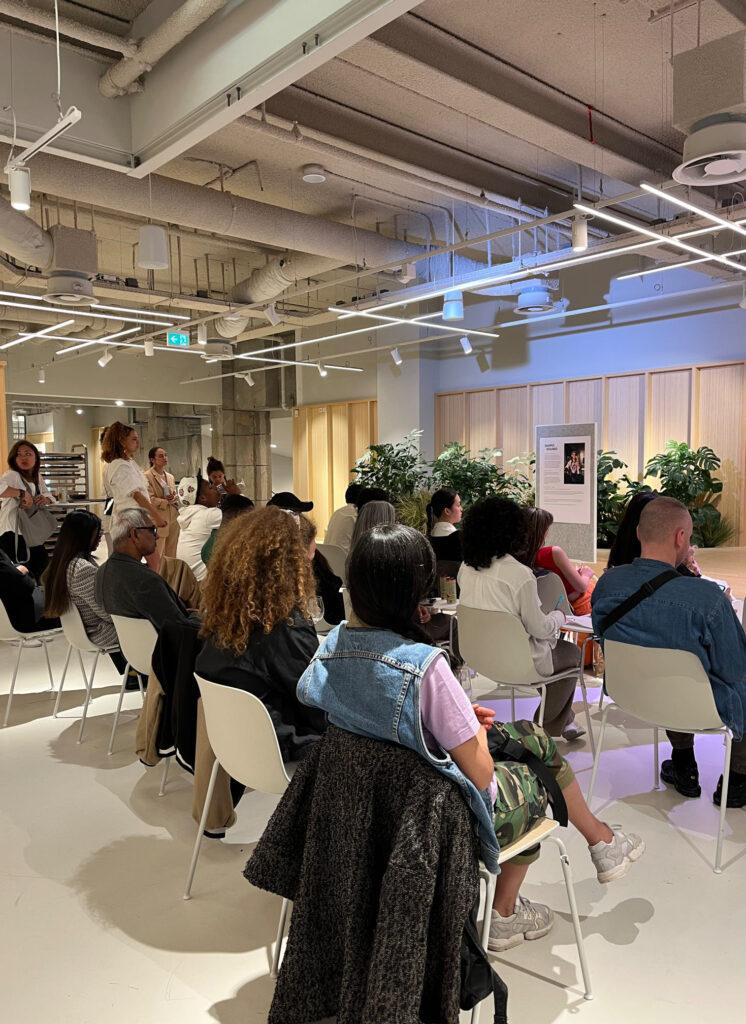

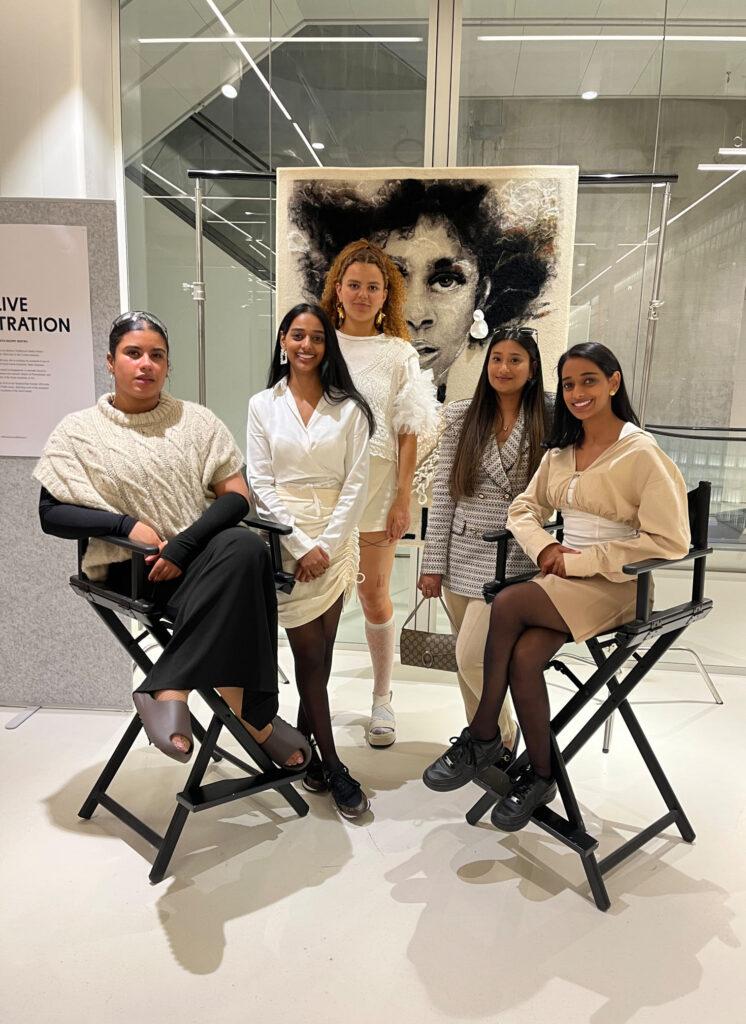

Surely, if our alleged remit, based on the interview at the start of the collaboration, was to bring these people into Adyen N.V., we were already doing that work?
In the weeks that followed the expo, we’d have to justify the expenses for the event.
If we hadn’t pushed for the production expenses to be covered, we’d have been charging ourselves to hold our own event and bring historically excluded talent into Adyen N.V.
The scrutiny we felt when having to retroactively justify costs – in hindsight – pointed to an alleged lack of awareness in corporate spaces about the infrastructure needed to enable this work to happen.
This isn’t only the case at Adyen N.V.
Multi billion tech companies are built by developing their own systems that move at their own pace.
When it comes to working with or incorporating cultural projects, time and resources are rarely, if ever, invested to make the changes to facilitate projects for the long term.
All it takes is a supposed change in leadership in a department for whole projects to be scrapped and replaced with the new leader’s vision.
This scrutiny is part of the taxing burdens of hypervisibility and invisibility.
Our output was evident to anyone who’d been in the room – the acknowledgement from Adyen N.V. for the work that went into the expo was less so.
The work we do is culturally sensitive and produced using infrastructures we have built ourselves from the ground up. It’s no accident that we’re here. Obi and I use what we’ve learned over the course of our careers and from inspiring examples we see around us in Amsterdam, the UK and internationally.
We were allegedly being compared to a local, established Dutch events company with all the privileges and benefits of economies of scale – and surpassing everyone’s expectations.
No contract.
No culture.
No humanity.
The Marketing DEI volunteer contacted us afterwards.
They weren’t able to attend but had heard it was a great event. They were putting together a presentation for a Marketing meeting for teams in Amsterdam and in local offices.
In it, they supposedly wanted to talk about:
“… our work with The Study Group, why we’re doing it and how it can be inspirational for those in the crowd to emulate… I think it will be a nice platform to encourage local markets to launch initiatives similar to ours.”
Could we send over a couple of images from the event and a quote or two about working with Adyen N.V. to one of the designers in Brazil?
They’d allegedly put the presentation together.
Of course, we were happy to.
“The collaboration’s felt very organic. Adyen has given us the resource to create and maintain a safe space for creatives from historically excluded communities. They’re actively listening and thinking along with us as we build. The development process with [NAME REDACTED] has been instrumental. He’s spent the time for us to get to know each other. That’s built an appreciation for the work he and the team are doing to build bridges – we look forward to seeing how the partnership evolves.”
Obi Mgbado
Co-Founder of The Study Group Foundation
Director of Culture at The Quick + The Brave
“With [BRAND NAME REDACTED], we’re building a new program to help demystify the design world for BIPOC and LGBTQ+ creatives. In doing so we’re redefining what support, learning and development look like. With the autonomy that the project provides, we’re able to build a bridge where our cultures meet, develop professional opportunities for designers from our communities and facilitate greater representation in the tech industry.”
Marie-Anne Leuty
Co-Founder of The Study Group Foundation
Editor in Chief of The Quick + The Brave
We wanted to do our part to raise awareness of the program internally – if the collaboration could allegedly serve to inspire similar partnerships elsewhere in Adyen N.V.’s local offices then that could supposedly only be good thing.

11. Setting intentions
We invited a Marketing contact to come by the table in the window for an interview so we could share how the program was seen within Adyen N.V. for a podcast on TQTB.
We’d done some recordings within our team already. This was a good opportunity to further test out the space in Rokin for its acoustics. The table would make for a great podcast setting with the view right onto the street to give the production greater visibility and generate marketing reach through word of mouth.
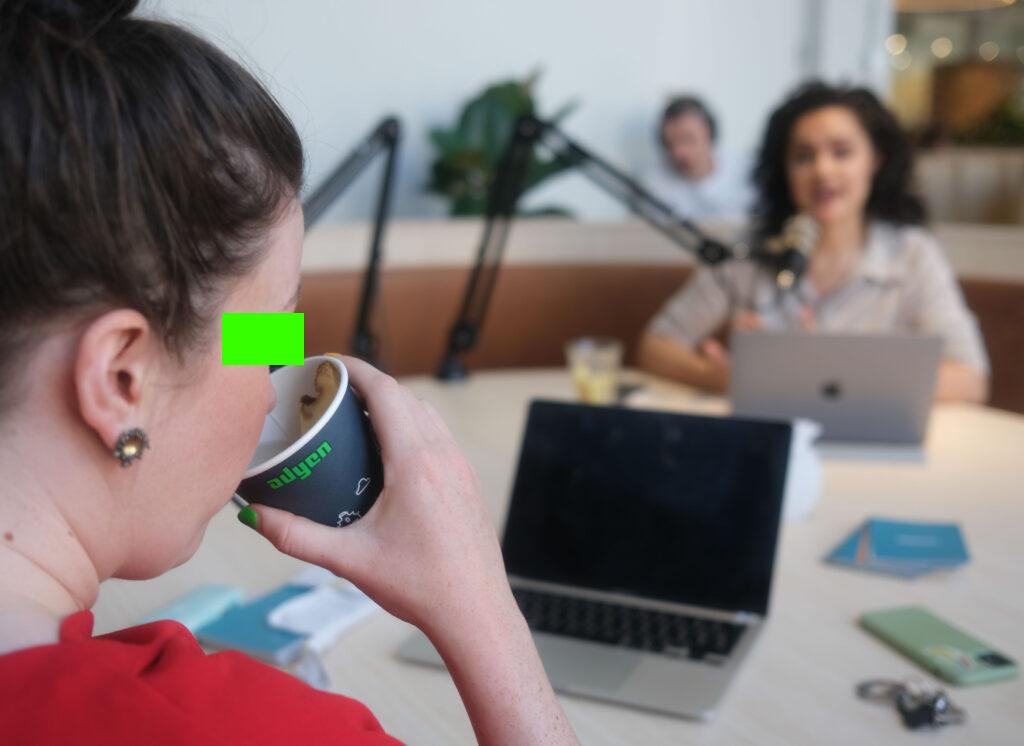
We asked how the collaboration came about:
“When the [Design] team was growing, [NAME REDACTED] was encountering a lot of difficulty in his recruitment pipeline with regard to anyone other than white people applying for, not only the design roles but also content.
“We have a few people who have been really involved in the Diversity, Equity and Inclusion group at Adyen since its inception a couple years ago who are quite vocal about the recruitment process; about the fact that the team is very white as it stands and the two kind of came together.
“We’re thinking ‘why aren’t we getting a more diverse pipeline?’. We’re really leaning on the recruiters saying like ‘do better’ basically.
“So when the response was ‘we’re really struggling’, then [NAME REDACTED] took it on himself to ask ‘what can we do? This is insane.’ So that’s where the collaboration originated and that was the thought process behind it.
“We want to do better now, but if we can’t do better now, how can we do better in the future and make space for that in the company? That was the first step to see how we can be better in the future and, ultimately, it was about chatting with you and Obi.”
— Marketing at Adyen N.V.

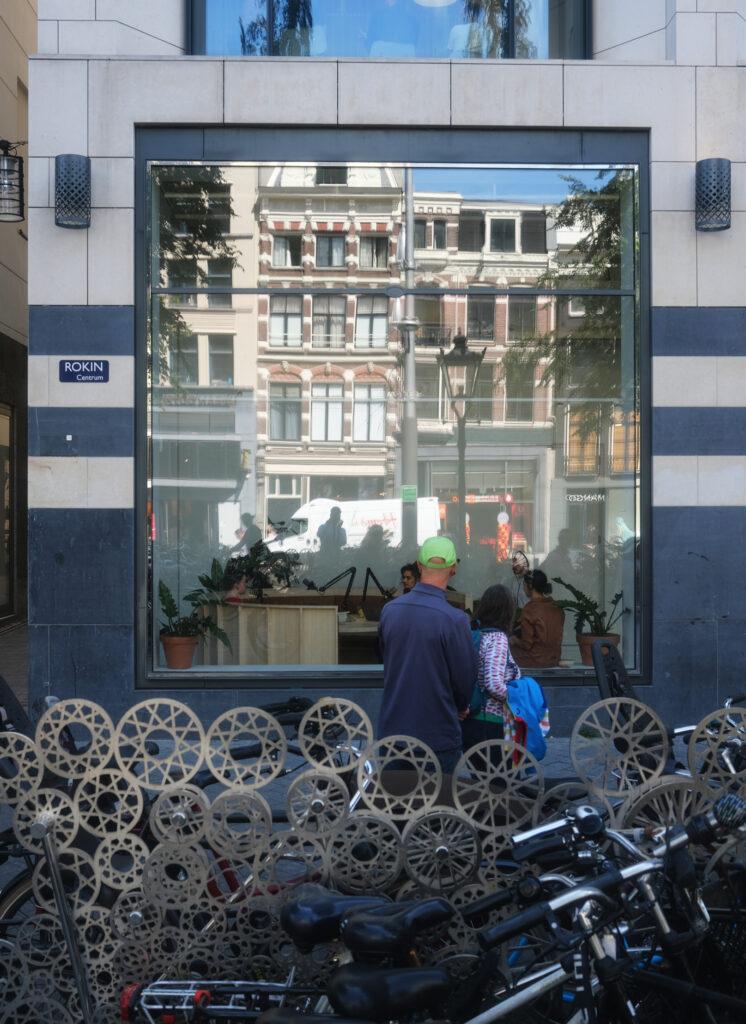


Were there other alleged reasons why Adyen N.V. was supporting the initiative?
“It comes back to if you have the means and the intention.
“We definitely have the means. We’re a fintech that’s consistently been doing very well over the last number of years, actually since its launch. So, when you have the means, you’re in a privileged position to be able to invest where you see fit and you just have to have the intention of someone like [NAME REDACTED] or myself, or any of the other people on the Design team, to say this is where I think it would be a worthy investment and to make that case.
“At Adyen, you’re generally encouraged to forge your own path, make your own decisions.
“It’s just more of a case of how are we going to make it happen and who’s going to make it happen, rather than ‘oh, we’re unsure whether this would be reasonable within the company’.
“No, of course the company wants to be better. We’re in the Netherlands, that wouldn’t be the most racially diverse country in the world anyway. We operate in markets that are hugely diverse and I think this is part of a more concerted effort by the company at large.
“It comes down to who wants to make the difference as opposed to just being a relaxed ally.”
— Marketing at Adyen N.V.
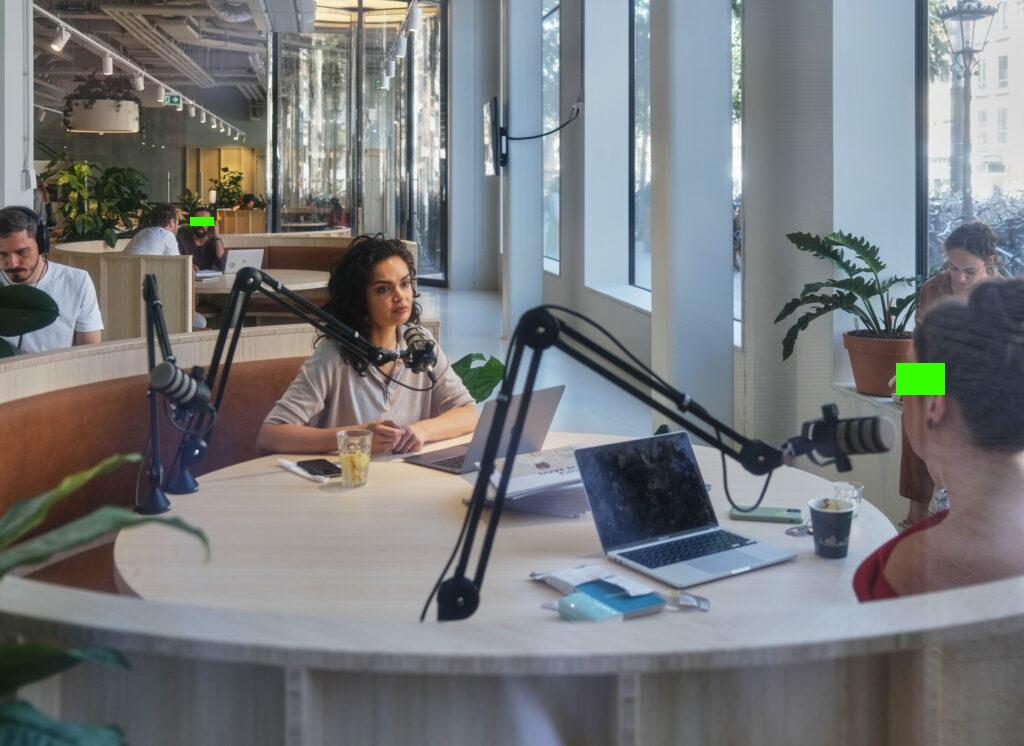
12. Building connections
The same day, we spoke with members of two of Adyen N.V.’s Employee Resource Groups (ERGs), [NAME REDACTED] and [NAME REDACTED].
ERGs started in the US in the 1960s during the Civil Rights Movement. Aimed at creating communities within companies, these volunteer-run groups create a space for open, safe interactions to create a sense of belonging.
ERGs are a recent addition to the professional landscape in Europe.
Around 2018-2019 when I worked in tech, they were just being introduced at the company I was at at the time. I was always impressed by the people dedicating their available free time at work to develop these communities.
It seemed like a lot of work.
And it would have been.
Emotional labour is work.
I saw intelligent Black women, women who’d been in the company for years, women who had advocated for me and many others, drained of their life force when dealing with HR.
Carrying so much emotional pressure and the responsibility of representing their entire community; having to justify ideas to people less culturally aware and qualified than them to the point of burnout.
Now, I understand intimately why and how that happened to them.
Although ERGs have been an established part of the workplace in the US for over 60 years, their impact is debatable.
An LA Times article from 2020 by Johana Bhuiyan, Sam Dean and Suhauna Hussain interviewed BIPOC tech professionals about their experiences:
“Some of the common experiences detailed in survey responses: enduring daily microaggressions; feeling targeted by superiors or external critics; being trotted out to defend a company’s diversity practices; being tasked with extra work typically reserved for diversity and inclusion officers. Respondents described companies where people of colour are severely underrepresented in both rank-and-file and executive roles and corporate cultures that can feel hostile to anyone who is not a heterosexual, cisgender white male.
“Of the 68 tech workers who responded to the survey, half said they felt tech was not inclusive to people from diverse backgrounds.”
— Bhuiyan, Dean and Hussain, LA Times
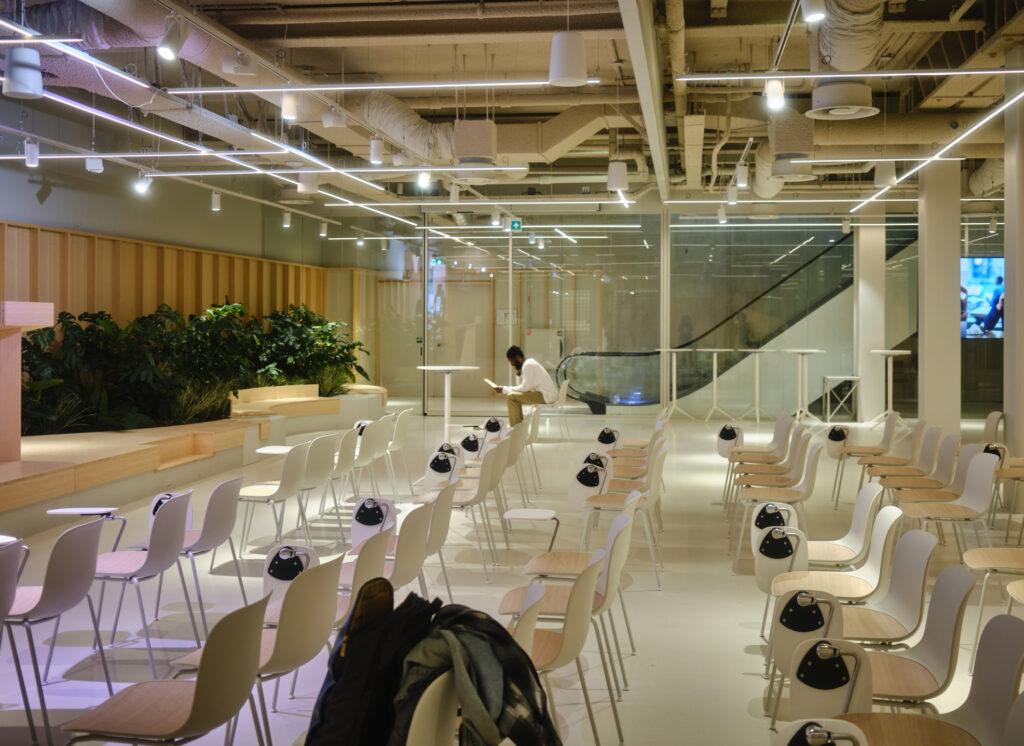
When we navigate spaces where we aren’t represented, we lack advocates.
It can lead to feelings of isolation, extreme self-criticism and constant compromise as you try to present the parts of yourself that are most palatable and least threatening.
The gaslighting is real.
We asked why do people join ERGS?
“When someone acknowledges my work or something, when someone is thankful for the work that I put in, I do feel seen and I do feel appreciated and valued. Especially in a huge company, it’s so easy to feel like you’re just a number and that you can be replaced.
“When you’re doing things in DEI, it’s stuff that you do next to your work. So you’re not necessarily being measured on your performance on that and then nobody recognises that what you’re doing is important work.
“I’m organising our [EVENT NAME REDACTED] event and sometimes I’m having to jump through so many hoops and I’m like ‘why is that happening?’ I feel like you need to be supporting me in doing this. Yes, this is not my core job but this is important, right?
“And then when there’s that one moment where someone says ‘what you did was really dope’ or like ‘hey, thank you for organising this’… these little moments of feeling appreciated are important. I’m doing something and it matters to people. That and just being able to show up as myself and not have to be apologetic about that.
–Member of [ERG NAME REDACTED] at Adyen N.V.
We appreciated getting the ERG members’ insights.
It was clear that they were committed to fostering a community and engaging with other ERGs in the company.
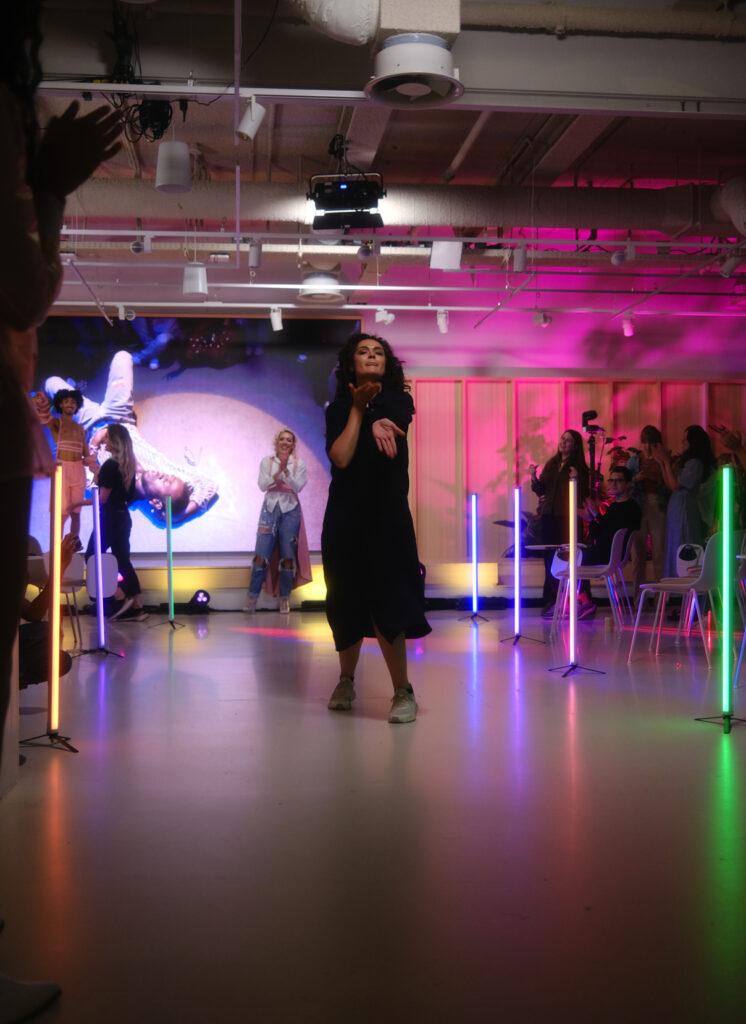

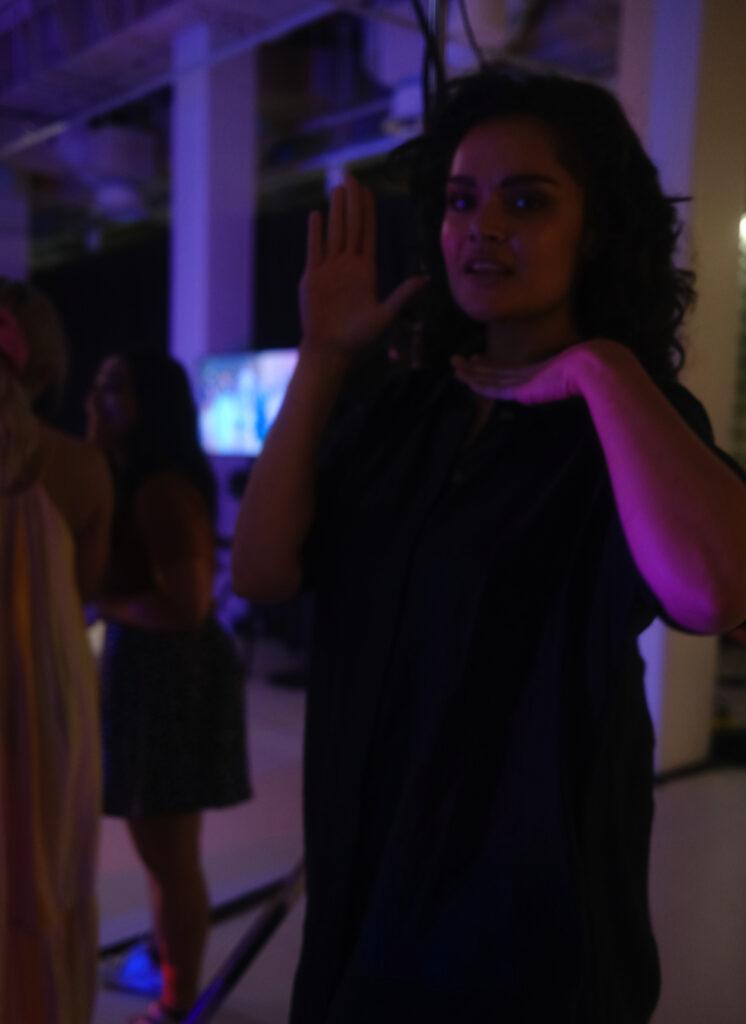
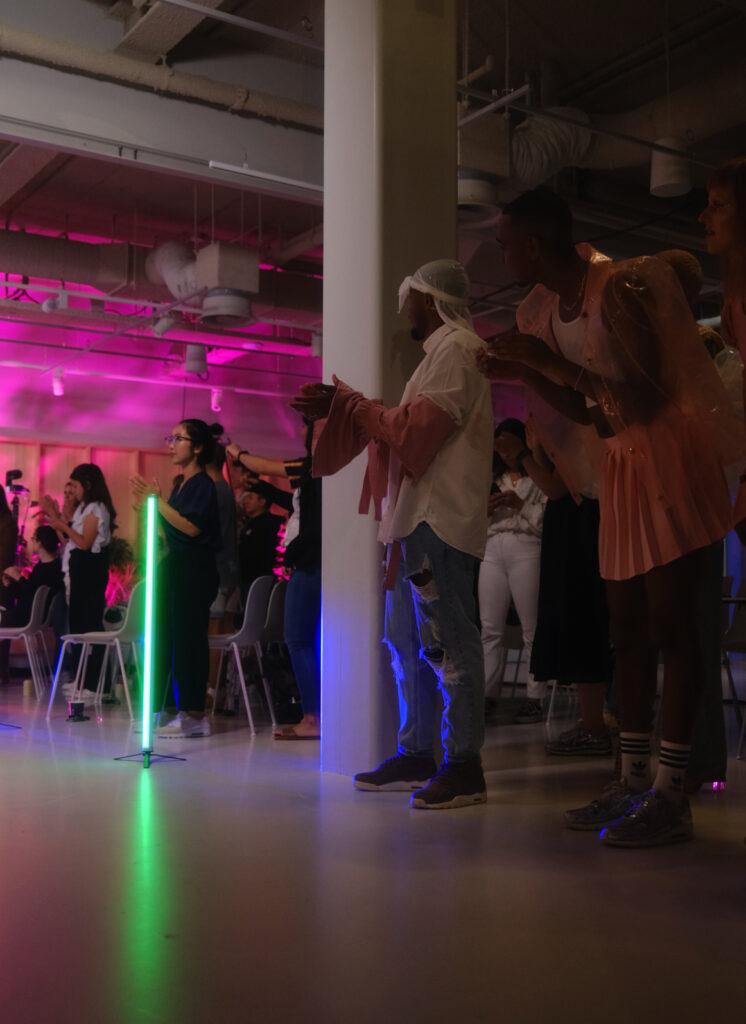
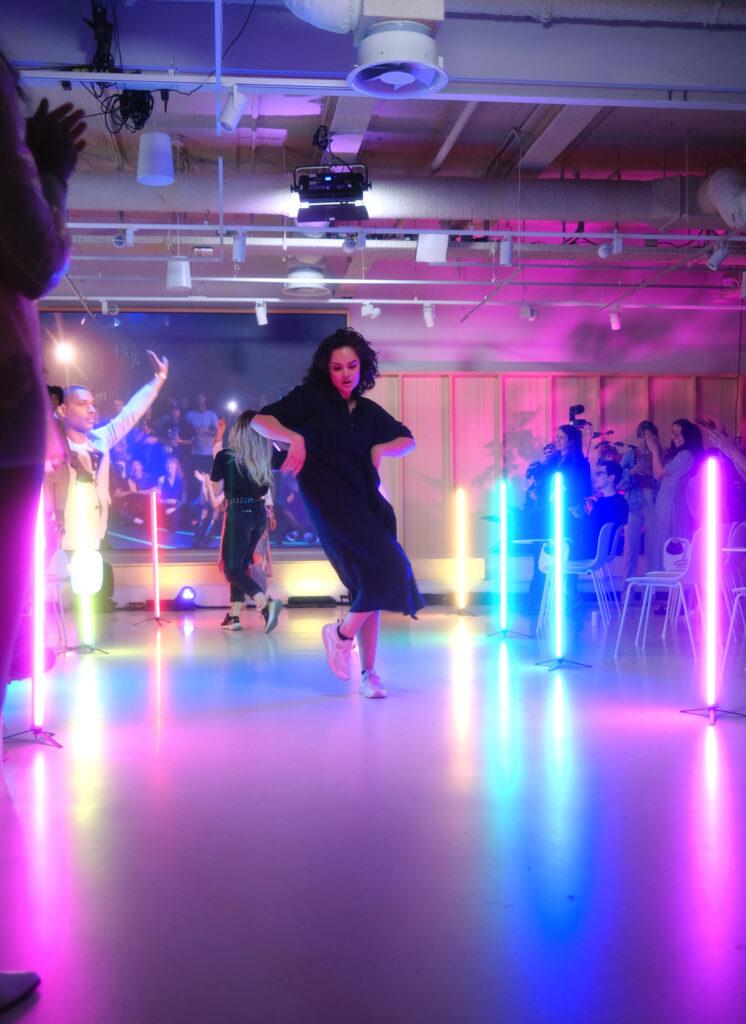
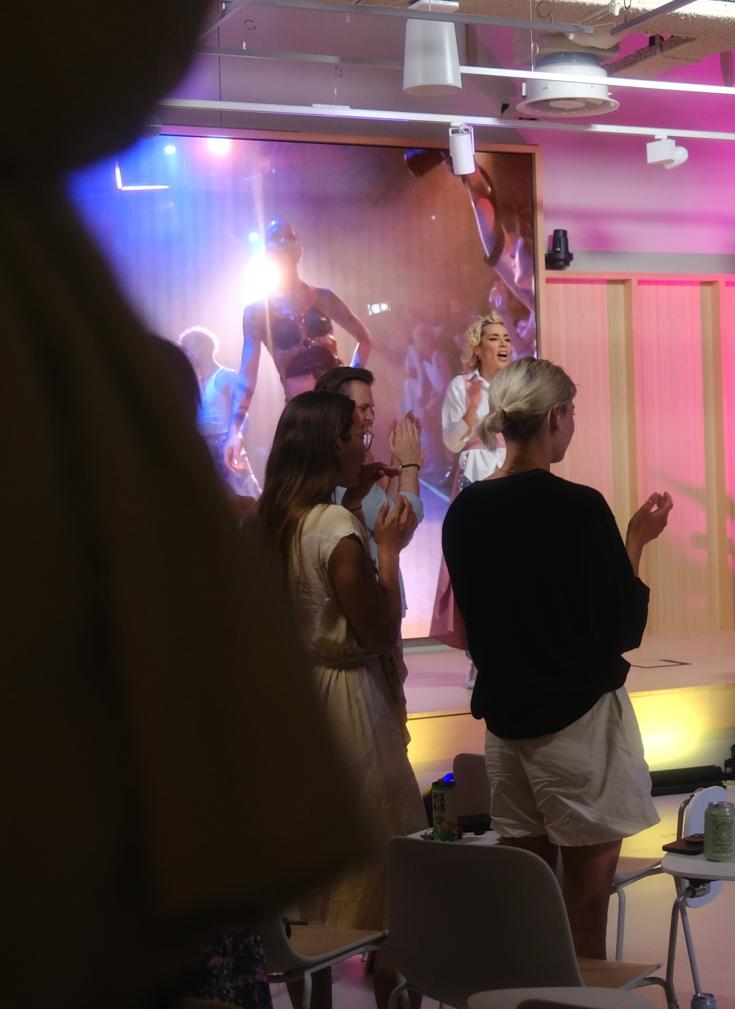

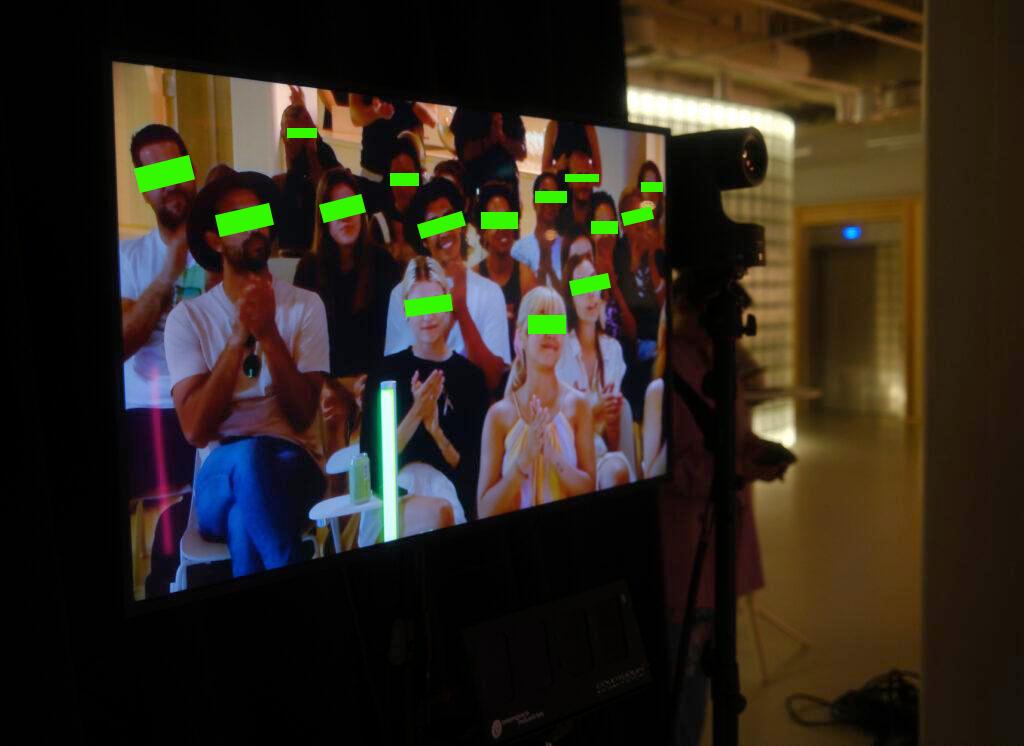
We shared our plans with them for the design and communication program and they were very enthusiastic.
They’d happily put us in touch with other members of the community, whatever support we needed to just let them know.
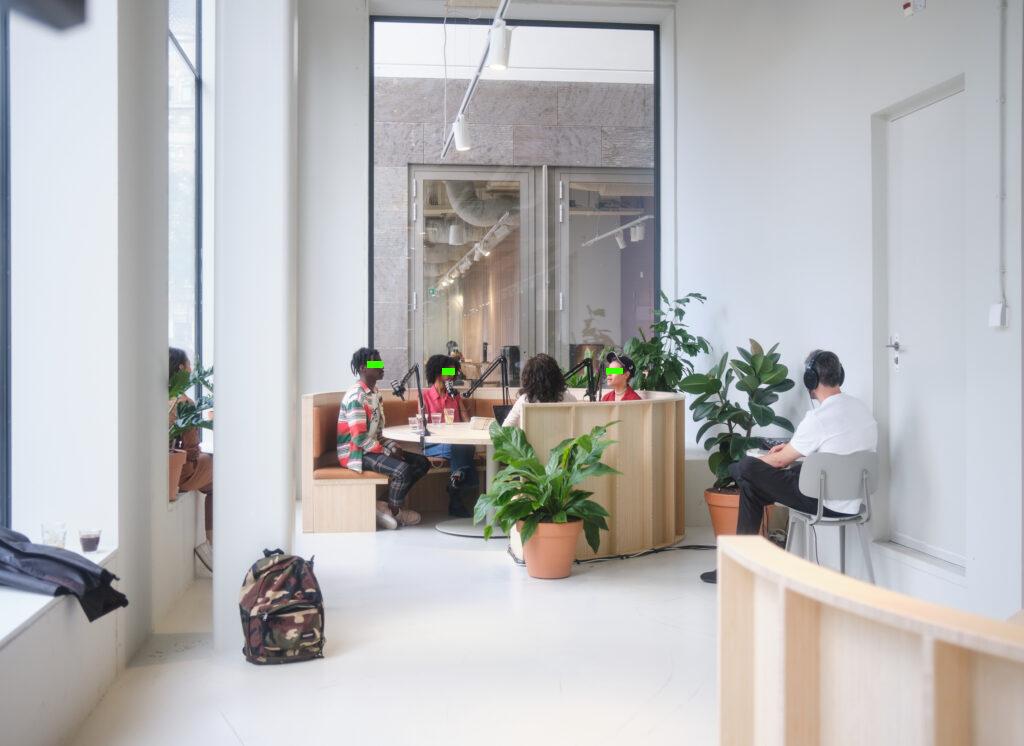
13. Marketing DEI
Throughout summer, after the chemistry test phase was complete, we continued to come into the Rokin office regularly.
We took this as a good sign.
After the expo, we were keen to get a de-brief.
The feedback would be helpful for us to get an idea of how Adyen N.V. saw the development of the collaboration, what went well with the expo and what needed improvement.
We started to notice an alleged lag in communication with our contact who’d sometimes travel to local offices.
The alleged initial excitement or curiosity of the marketeer was maybe starting to peter out.
Allegedly with no in-house producer to navigate the company, we made all our decisions based on the conversations we were able to arrange with our contact.
The message from the Vice President of Creative allegedly was clear:
Don’t worry.
Keep doing what you’re doing.
Love these new ideas you’re presenting.
Keep using the table, fantastic to see you there.
We shared our own de-brief with Adyen N.V. – it was important to us to be proactive and communicate issues as we saw them as professionally as possible.
Unfortunately, we never allegedly had a formalised discussion to give or receive feedback.
Besides, in addition to the program work we were carrying out, there were requests from Adyen N.V. for us to work on internal briefs and share our story as part of Marketing initiatives.
The Global Marketing team holds an internal event for colleagues from local offices to connect with each other, learn about projects within the company and take part in workshops.
One of the Marketing Managers allegedly explained over email:
“We always like to incorporate inspirational sessions during our internal events. One of our company wide initiatives is focused on Diversity, Equity & Inclusion and we believe that The Study Group is an amazing example of this and would love to hear your story and the involvement of Adyen N.V. in this.”
— Marketing at Adyen N.V
The session would allegedly be recorded and available to colleagues across the company for those who weren’t able to physically attend.
We took this as a positive sign.
It was important to us to also have our Junior Art Directors attend. As mentees on the program it was an opportunity for them to see for the first time how Global Marketing presentations are produced, hear the story behind the program and learn about its development.
Following the presentation’s Q+A, members of the Marketing team were keen to ask us more questions about the collaboration:
Was it scary to branch out independently?
How do you deal with the bias of others and your own?
How can we support your initiative and others like it in our local offices?

We had a chat with one of the team based in London who was allegedly interested to hear more about the program and potentially extending it to their office as the project grew. We shared contact details and said we’d be in touch when we were next in town.

Post-presentation, we kept a look out too for the company’s DEI Lead.
Our contact had put us in touch to arrange a meeting in person a couple of weeks before. As a project that was supposedly initiated to address and support the company’s DEI goals, it would allegedly be good to connect with them to discuss the program.
They allegedly worked closely with the Head of People.
Unfortunately, we didn’t hear back.
14. The podcast
Over the summer, we shared a proposal for a podcast series.
Expanding on the design and communication program, in the series professionals, entrepreneurs and creatives from historically excluded backgrounds share their career journeys and how they navigate professional space.
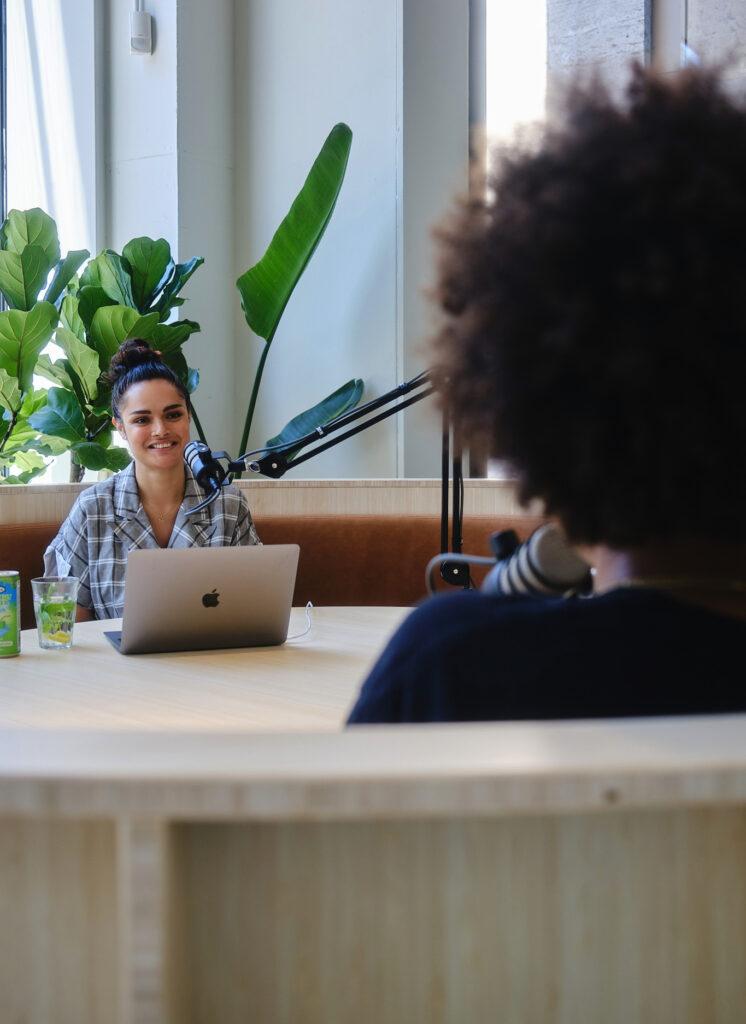
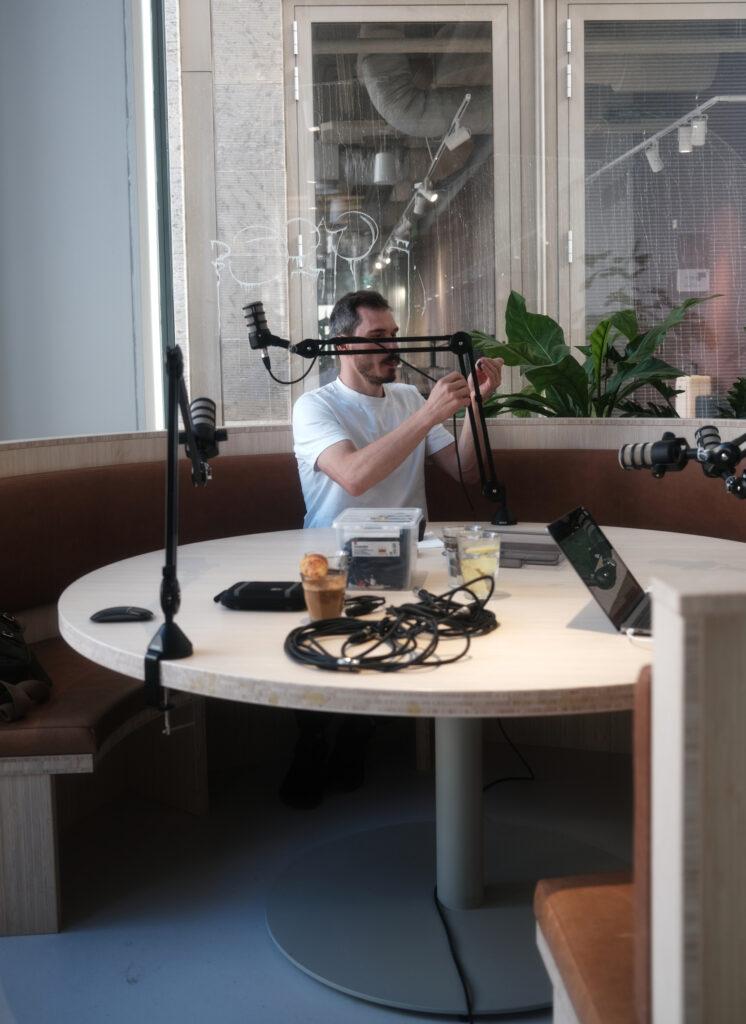


The video podcast, filmed over October to December 2022, is a nine part series speaking to guests including:
- Dutch Nigerian freelance photographer and community mentor
- African American owner of Amsterdam’s first Black woman-owned artisanal ice cream brand
- Gay, British Jamaican Marketing Manager at a London-based tech company
- Dutch Mexican illustrator, entrepreneur and art educator (also the Art Director of the design and communication program)
- Queer British, Welsh and Dutch photographer advocating for female representation in her industry
- Ugandan art curator, researcher, writer and Founding Director of a queer Pan-African art research think tank and gallery space in Amsterdam
- Nigerian dancer, activist and Prince Claus Seed Award recipient from Lagos, Nigeria with members of his dance company
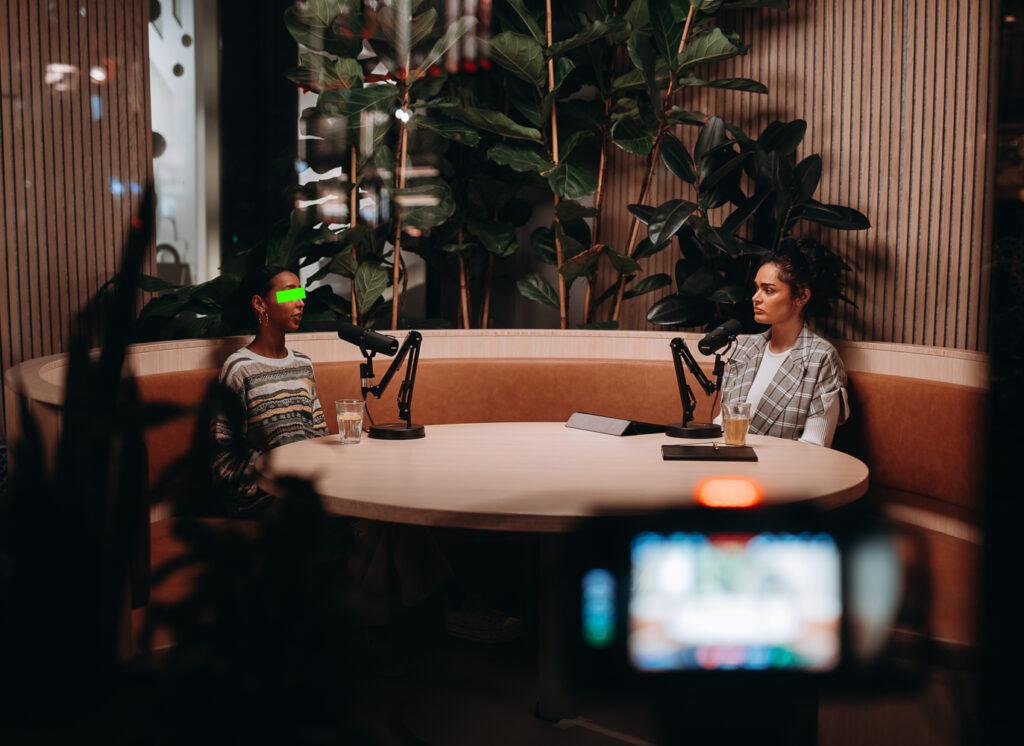

Two members of [ERG NAME REDACTED] were also guests, sharing their experiences coming into Adyen N.V. and how it compared positively to other companies.
At the end of each interview, guests would write what advice they’d give their 20 year old self. These formed the basis of an accompanying manuscript that we called the [NAME REDACTED].
It would be designed, produced and printed at our studio in the Bijlmer on our RISO printer.
Our first ever published book.


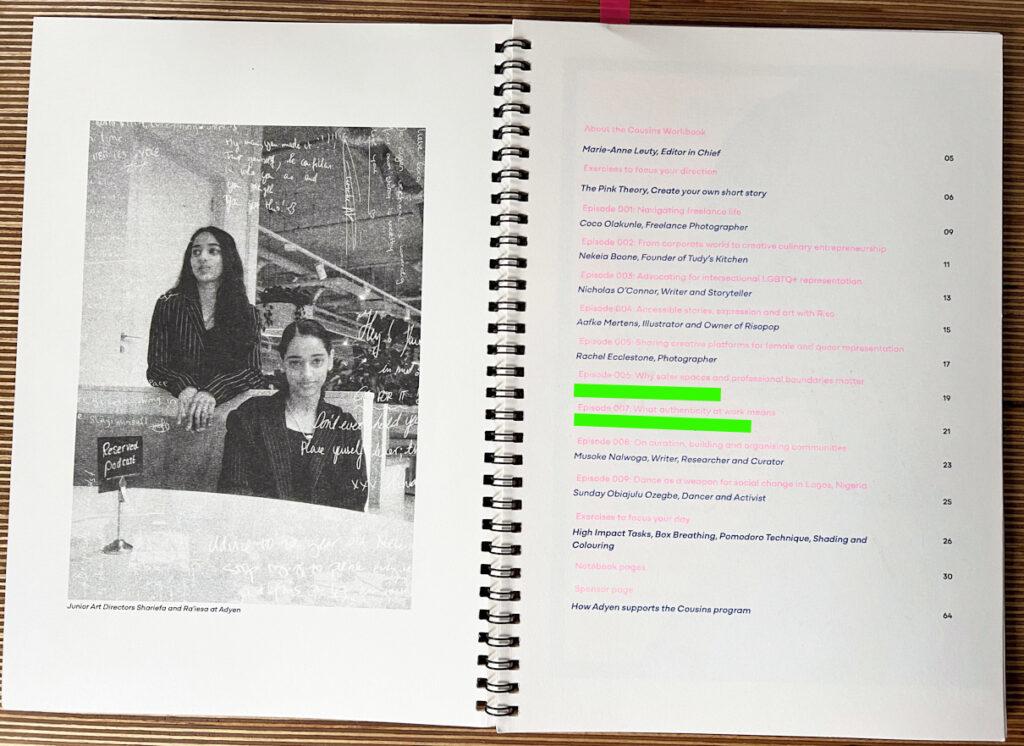
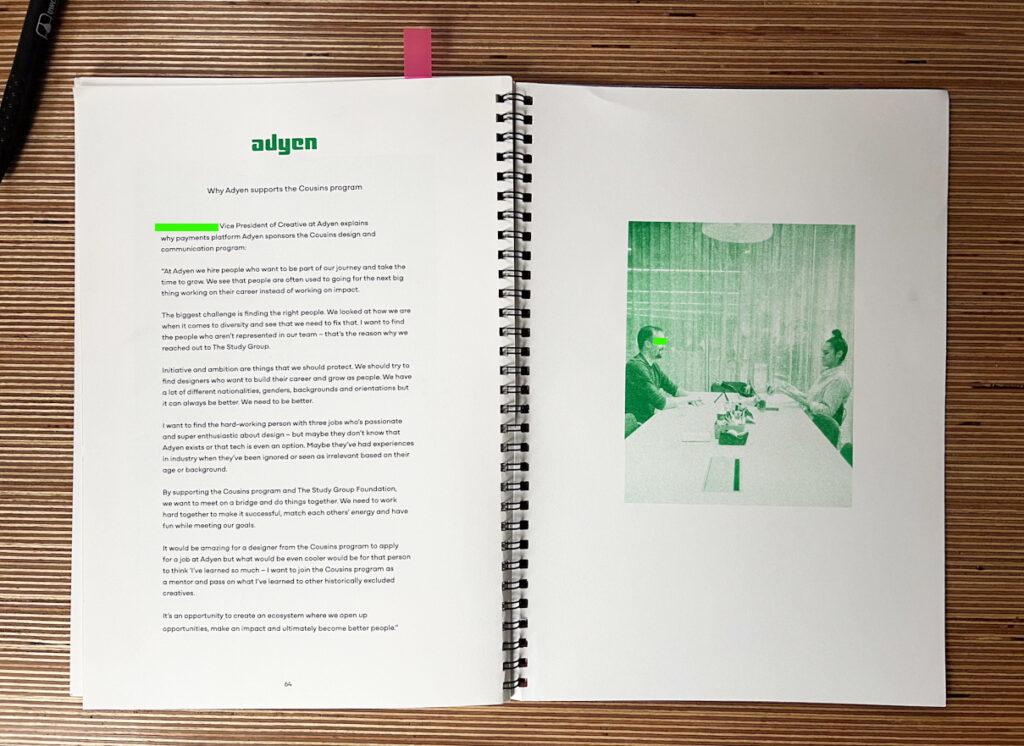
Once we got the green light, we got straight to work.
The search, selection and acquisition of potential collaborators, set designers and technicians, culminated in meetings and briefings to talk to them about the program and the unique opportunities it could create for the community.
The location for the podcast was ideal at street level. Set at the coffee table overlooking the busy shopping street, Rokin. With the sticker in the window and the average Saturday footfall of 33,900, this would attract interest from passersby and impact the city’s cultural landscape.
With huge, full wall windows scraping up to five metre tall ceilings though, the acoustics needed help. Sound bounces and echoes around in big, open spaces which gets picked up by microphones, making the recording tinny.
The area needed to be sound treated so the designers worked with us to create acoustic panels that would absorb enough sound while being removable and complementary to the surrounding aesthetic.
When asked if we had concerns about working with such a large company, we explained how the collaboration came about, that we’d been invited in and we had a supposed ally in the company who allegedly understood what it means to have an unconventional career path.
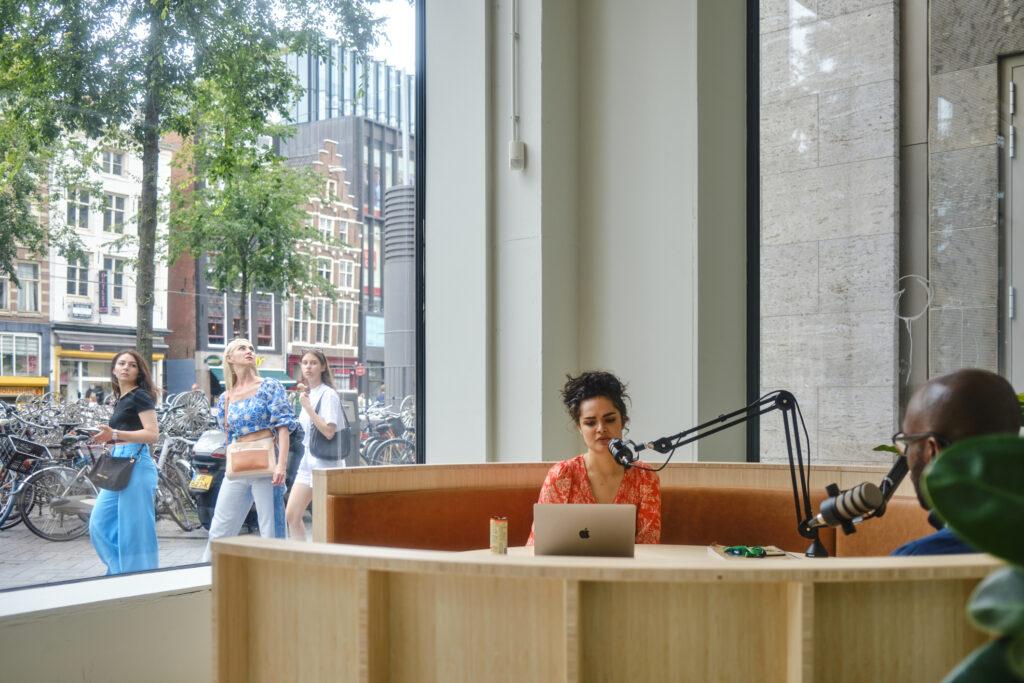
Around this time, invoices were taking longer and longer to be paid.
It created financial problems on so many levels.
While we were trying to plan the production, hire video and camera equipment and liaise with Office Management, we’d flag up that invoices needed to clear for us to manage production costs.
Our accountants raised the alarm – recent changes to Dutch legislation make it so that corporations need to pay small businesses within 14 days of their invoice being issued.
With the budget we had available, we managed finances for the podcast production as carefully as possible.
While we were trying to plan the production, hire video and camera equipment and liaise with Office Management, we’d flag up that invoices needed to clear for us to manage production costs.
Our accountants raised the alarm citing recent changes to Dutch legislation that make it so that corporations need to pay small businesses within 14 days of their invoice being issued.
With the budget we had available, we managed cash flow for the podcast production as carefully as possible.
Calling on Obi’s experience in film and video, this high-end production was an opportunity for the program’s mentees to work on a live set for the first time.
Not only was the visual output going to be something we and the community could be proud of, the content would be refreshing for our audience interested in navigating professional spaces.
The Reception, Barista and Security teams were allegedly excited to see us at work and the more time we spent at Adyen N.V.’s headquarters on the Rokin, the more we came to understand what our partner really needed.
The infrastructure we were building, in cooperation with these departments and contractors’ of Adyen N.V., made each production easier to organise than the last.

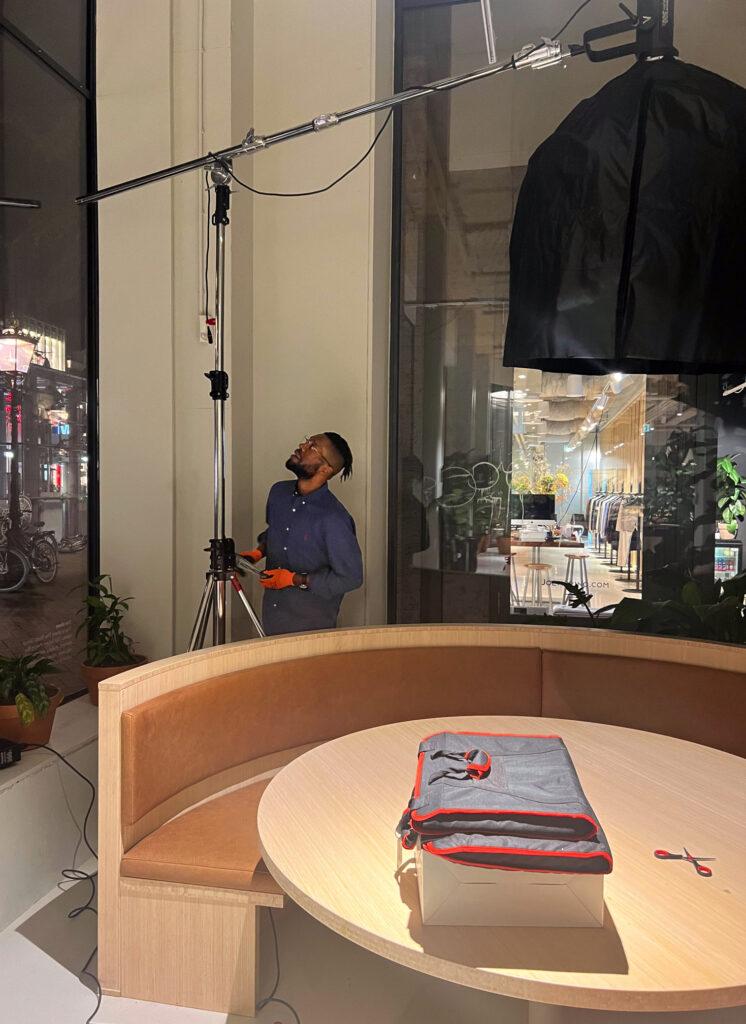
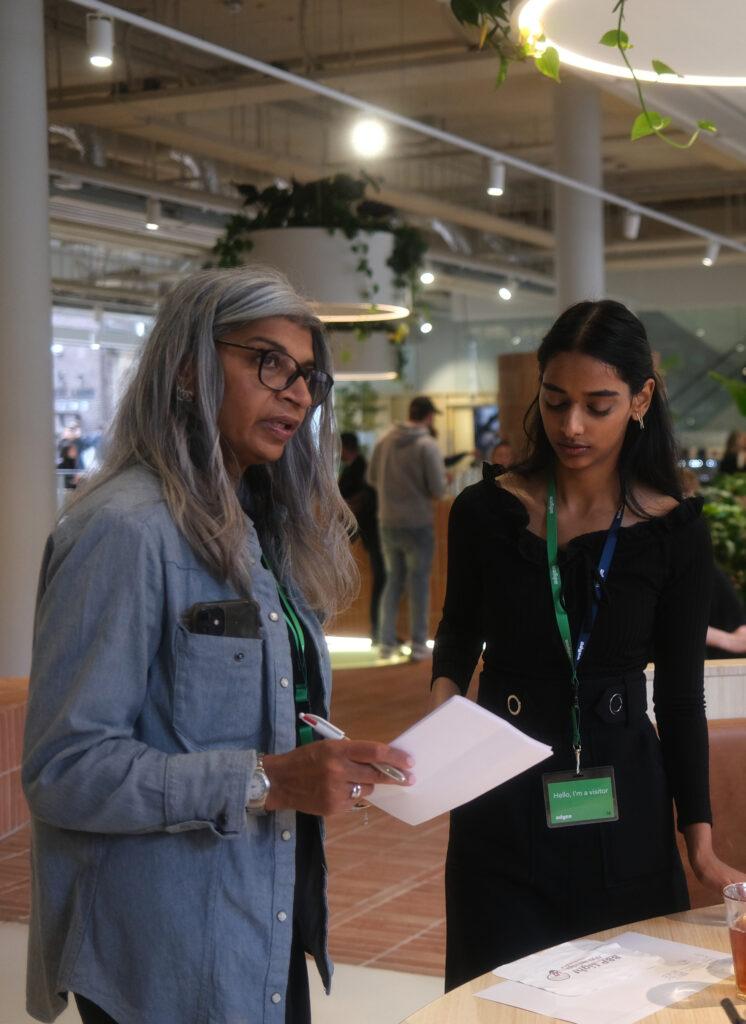



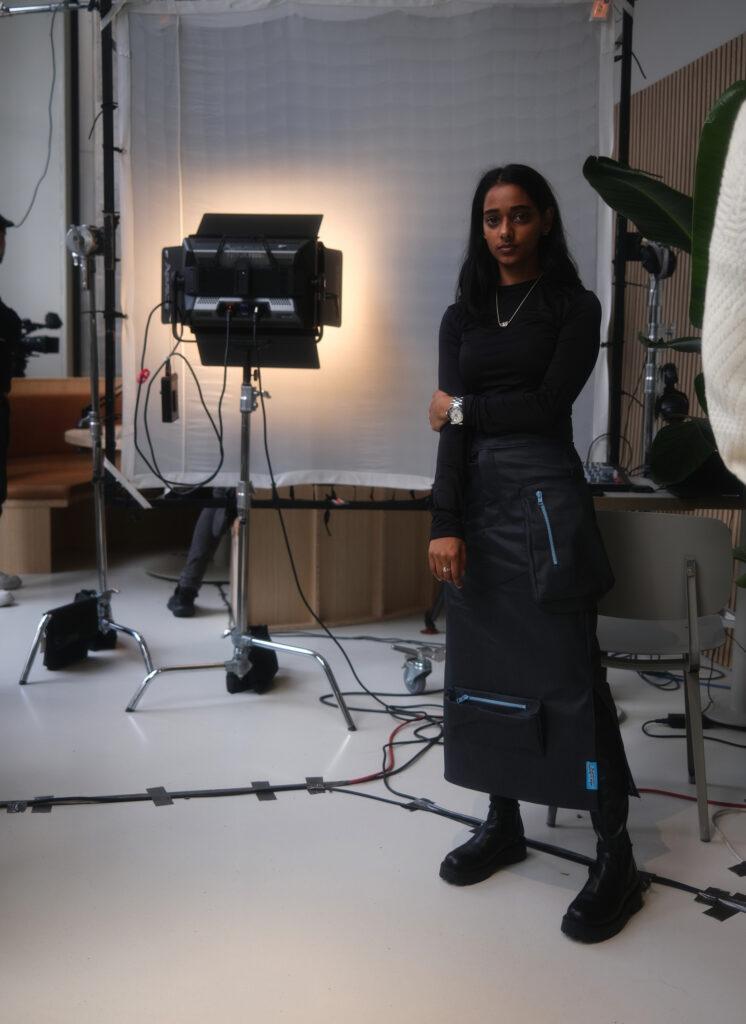
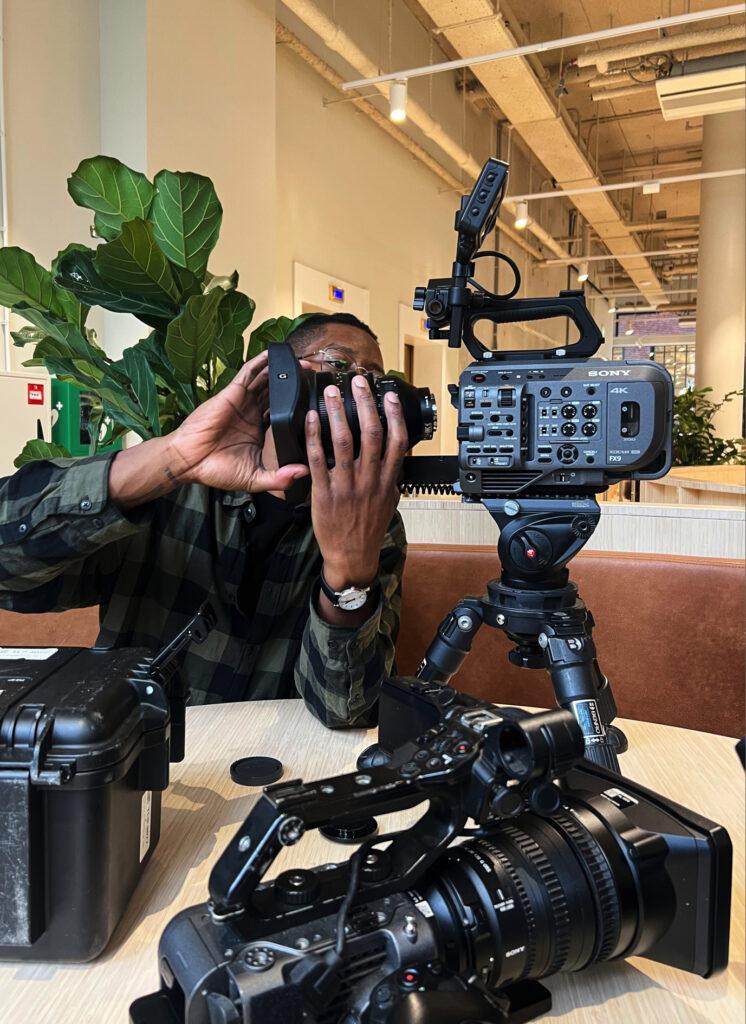

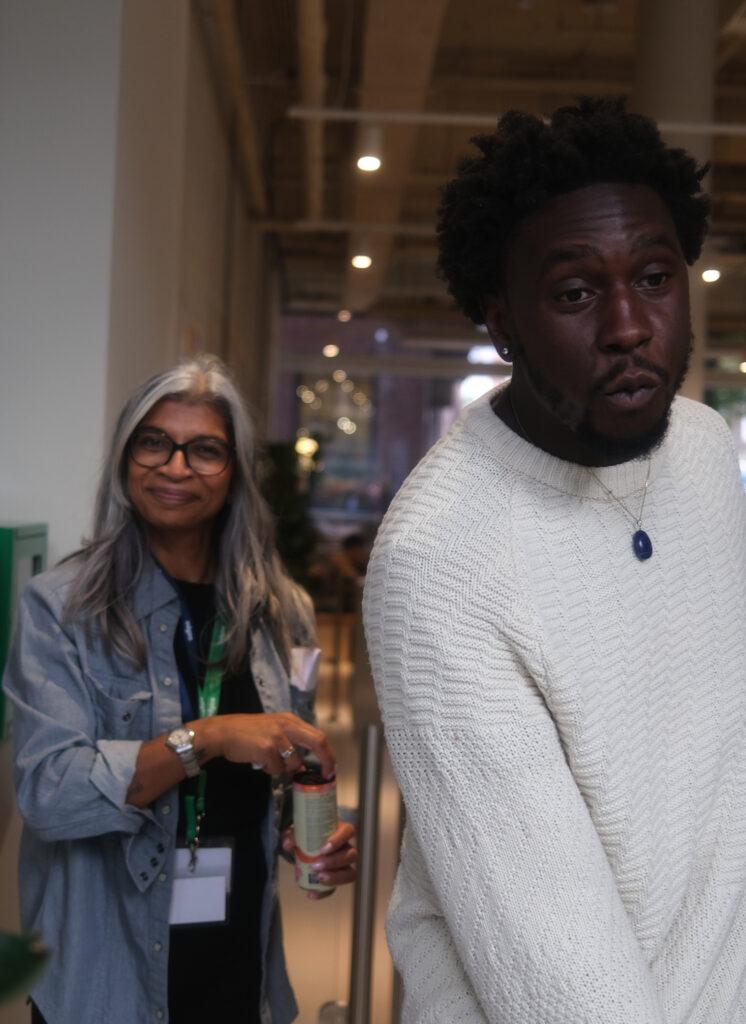
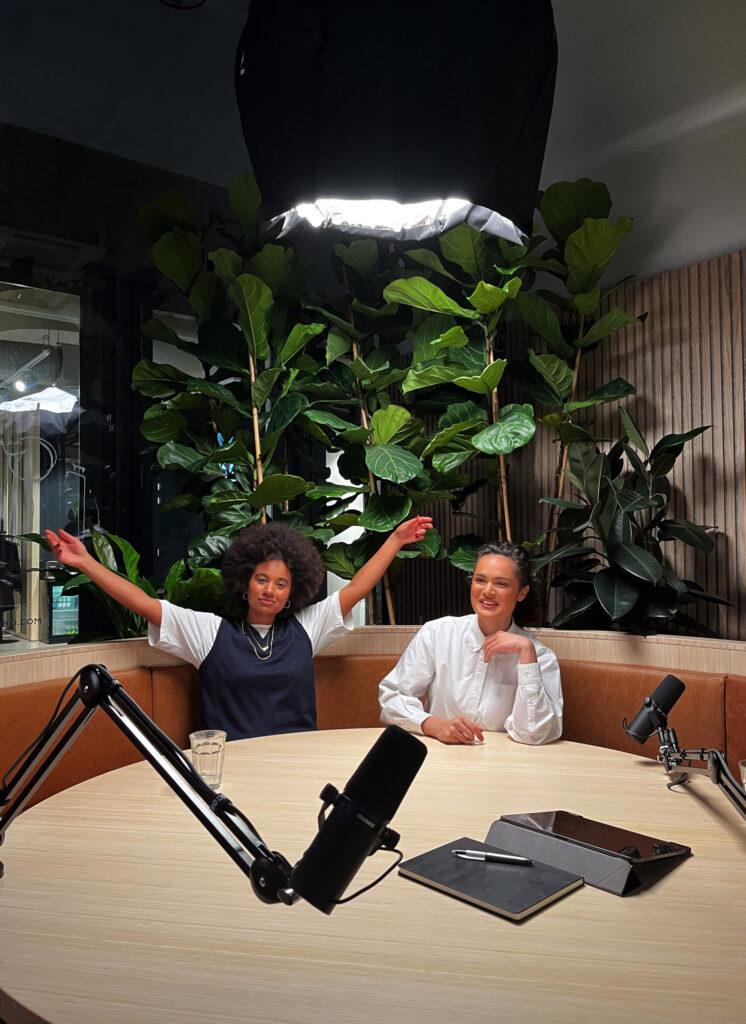

ERG members would come by the set with colleagues who were keen to learn more about this initiative that Adyen N.V. was allegedly supporting.
People on the street peered in through the window including, we later learned, a member of [ERG NAME REDACTED] who had just started that week. They were proud that their company was allegedly getting behind an initiative like this.
The podcast production wrapped, we continued to chase up the delayed invoice but unfortunately we’d have to wait until after the Christmas holidays when allegedly the Finance team were back to work.
The spike in revenue coupled with allegedly structurally late payments unfortunately caught up to us.
The Tax Authorities froze our bank account on Christmas Eve.
We had planned to pay a tax bill with the late invoice.
We were unable to pay ourselves and allegedly Adyen N.V. couldn’t tell us when it would be resolved.
74 days after issue, the invoice was paid on 10 January 2023.
A bleak holiday, then?
I mean, it could have been.
Except that we were starting to share the news with close family that we were expecting our first child.
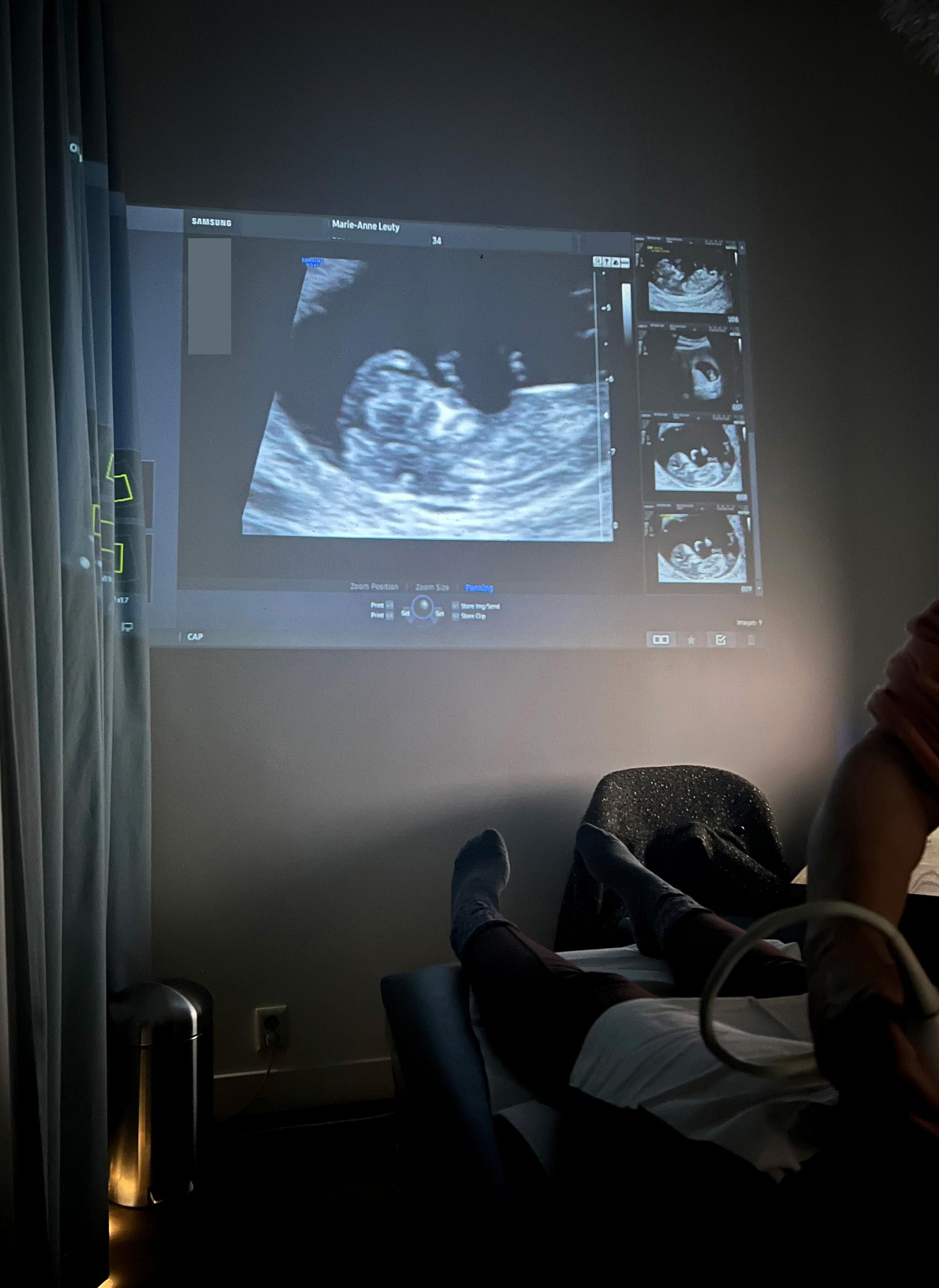

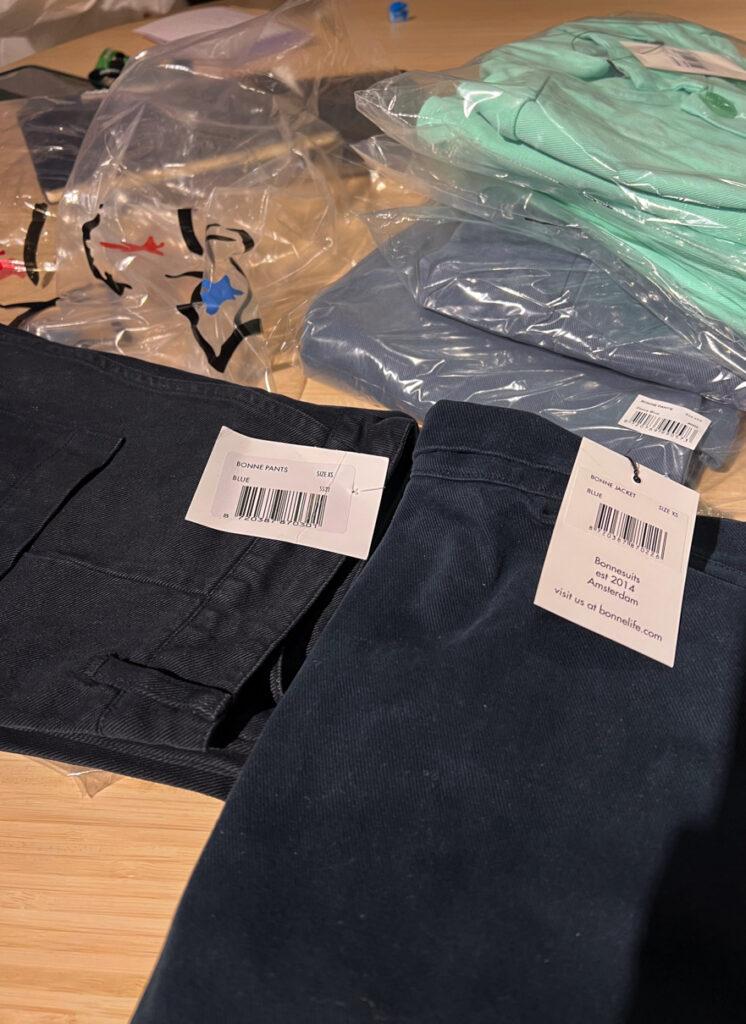
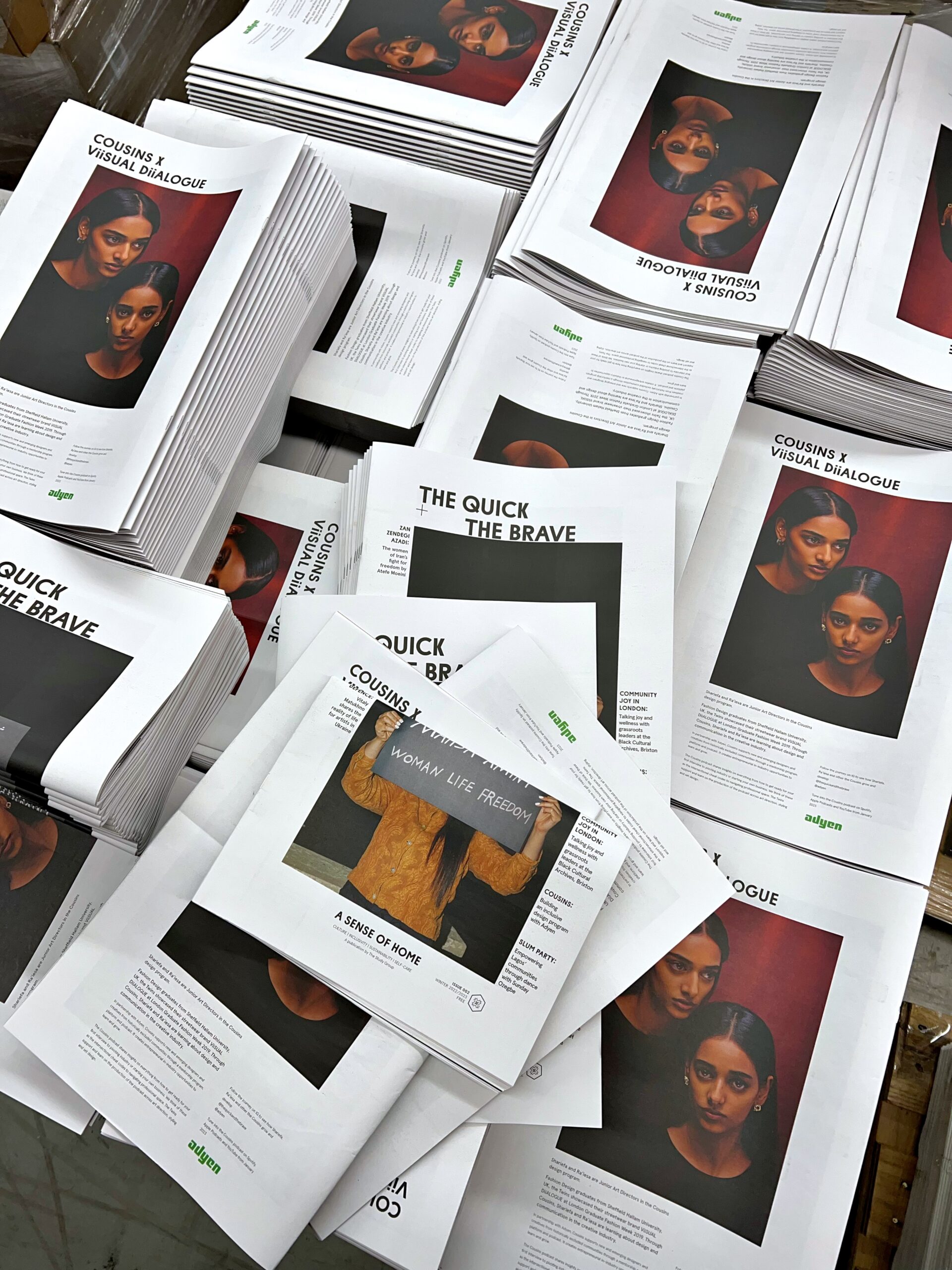
15. The Journal
Without clarity on when the invoice would be paid, we did what we could to keep pushing things forward.
Between the podcast production dates, we went to print with Journal 002, the second issue of TQTB’s print publication.
We had 5,000 copies printed. Since we were waiting on the invoices to clear we were unable to pay teams to help us with physical deliveries so we went about it ourselves.
We got a rental car and dropped copies across Amsterdam to retailers, bookstores, hotels, galleries and cafés including Patta, Mendo Books, The New Originals, Zeedijk 60, Filling Pieces, Daily Paper, Toki Coffee, Lot 61, Saint Jean, Lab 111, Hama Gallery and CBK Zuidoost.
We also distributed to our network in the UK, Belgium, Ukraine, Nigeria, Kenya, Morocco, Japan, Korea, China, Mexico and South Africa.
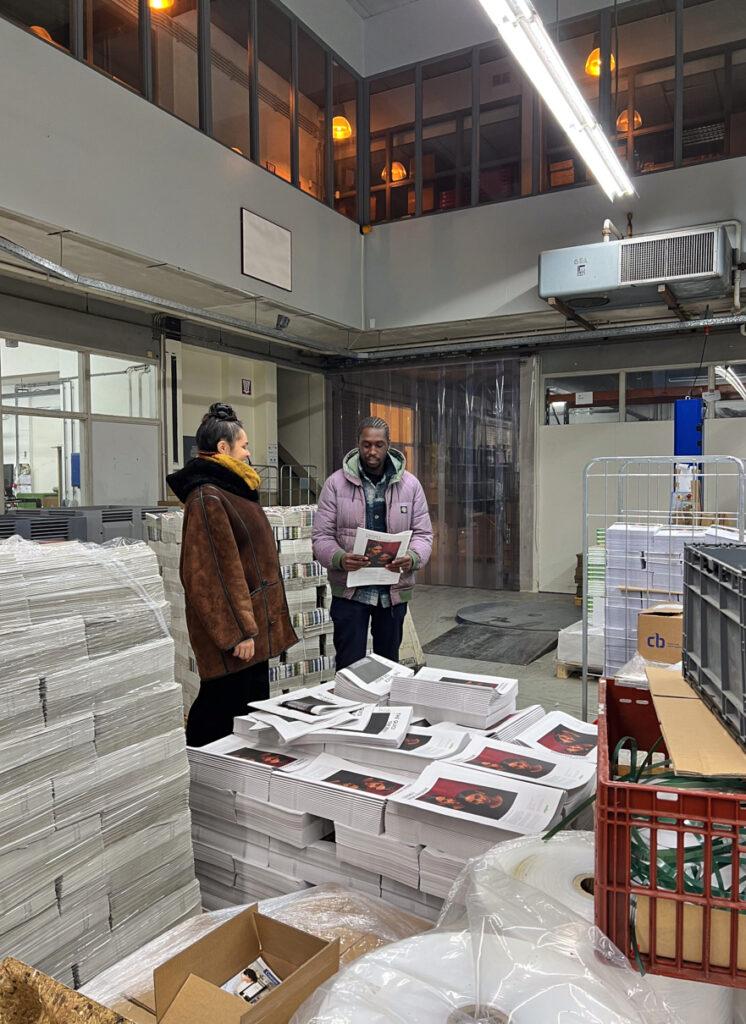
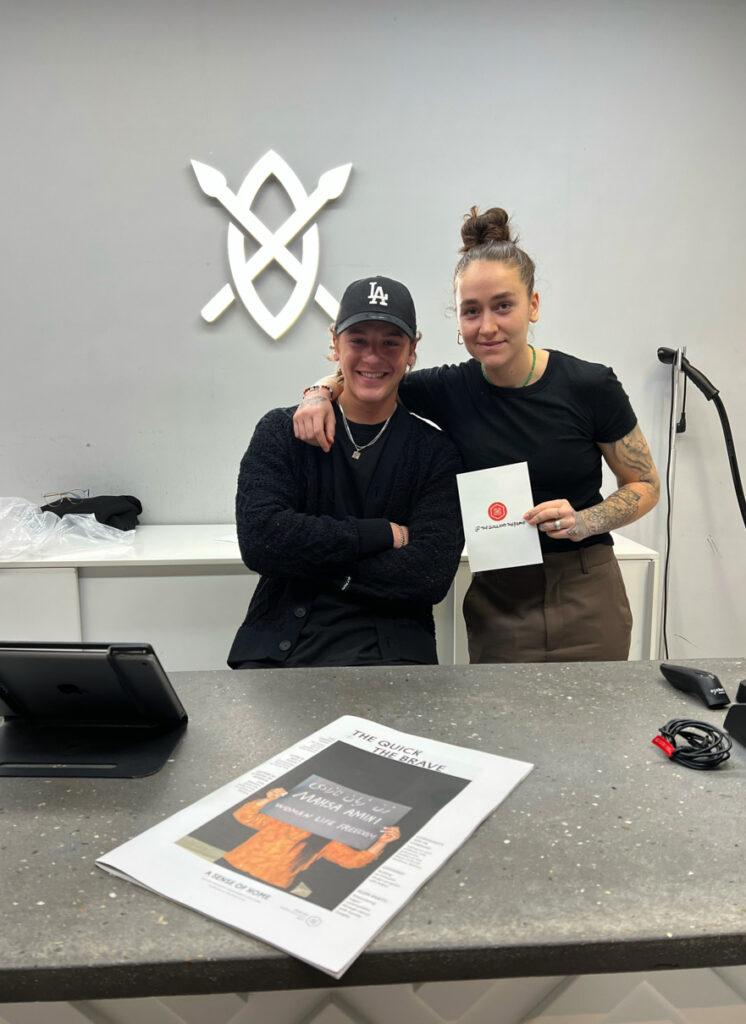
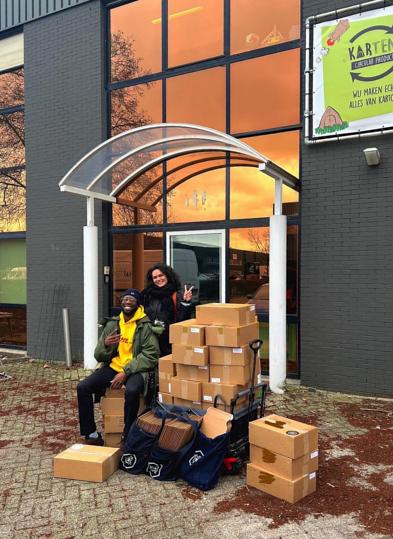
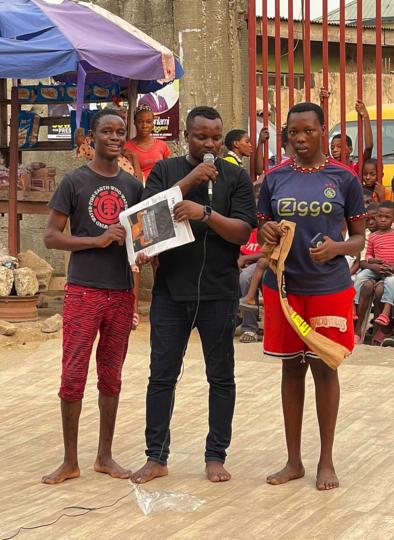
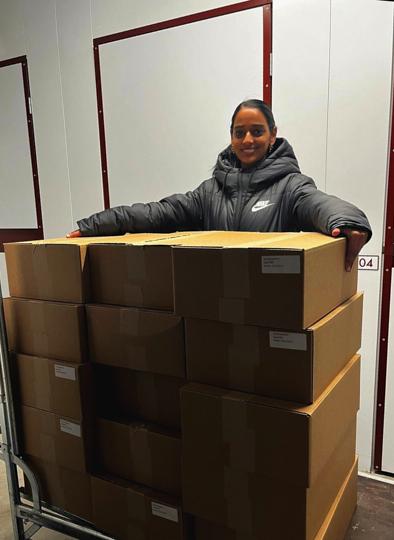
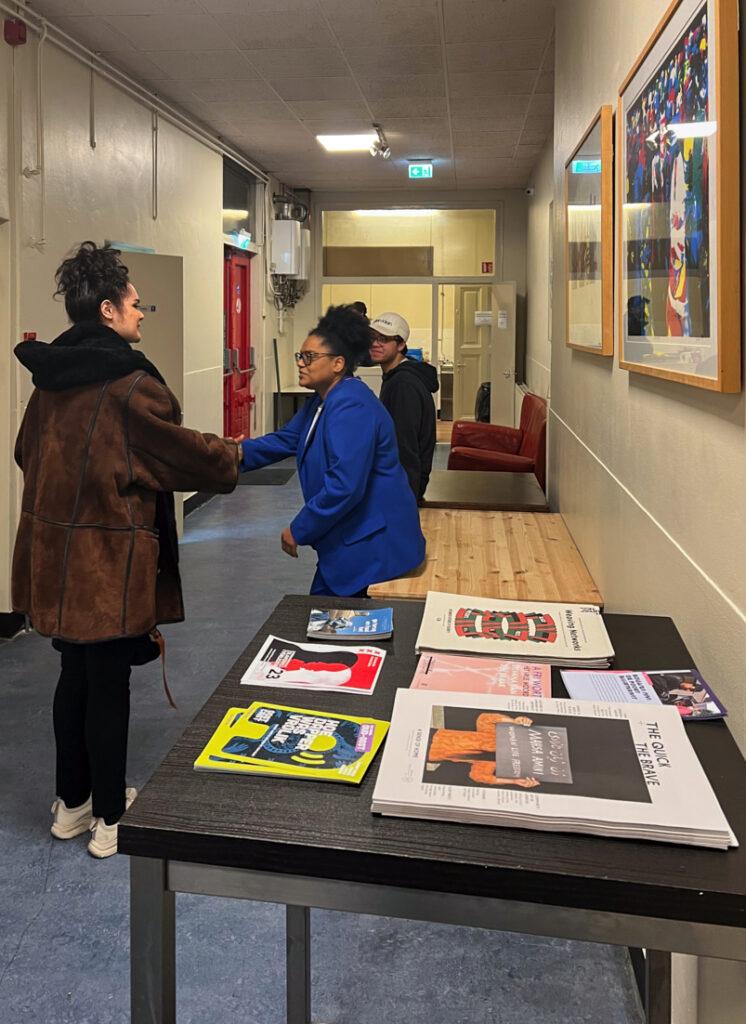
We were incredibly proud of this issue – we had more international stories including from the UK through our connections at the Black Cultural Archives in Brixton, London and the University of Oxford.
We’d spent the time researching sustainable infrastructures for The Study Group and TQTB as a platform to grow. We were proud to share with readers that through Adyen N.V. we supposedly had found the support needed to build the program that could facilitate that.
The feedback from the community was special.
[ERG NAME REDACTED] members started to share photos of the affirmation poster in the centre of this issue on social media. The words really resonated with their experience.
The local BIPOC creative community was thrilled to see stories that reflected their experiences as historically excluded people and hear more about this alleged new partnership with one of the Netherlands’ foremost tech companies.
After distributing copies to Patta’s flagship store, one of the Co-Founders messaged Obi:
Yo Obi
Reading the magazine now
Amazing body of work brethren
Hats off to you and Marie-Anne and the team and whoever involved
Important!
As a Black-owned, Amsterdam-based international streetwear brand that has shaped the cultural landscape of the Netherlands and beyond for twenty years, it meant a lot to get this kind of recognition.
Locations around the city asked us to come back to distribute more copies.
Dutch businesses like Wakuli contacted us. After we brought copies to their branch on the Linnaeusstraat in East Amsterdam, they wanted to know how through a collaboration they could support the growth of the platform.
The owner, Yorick, was inspired to hear the open approach Adyen N.V. was supposedly taking to support the design and communication program.
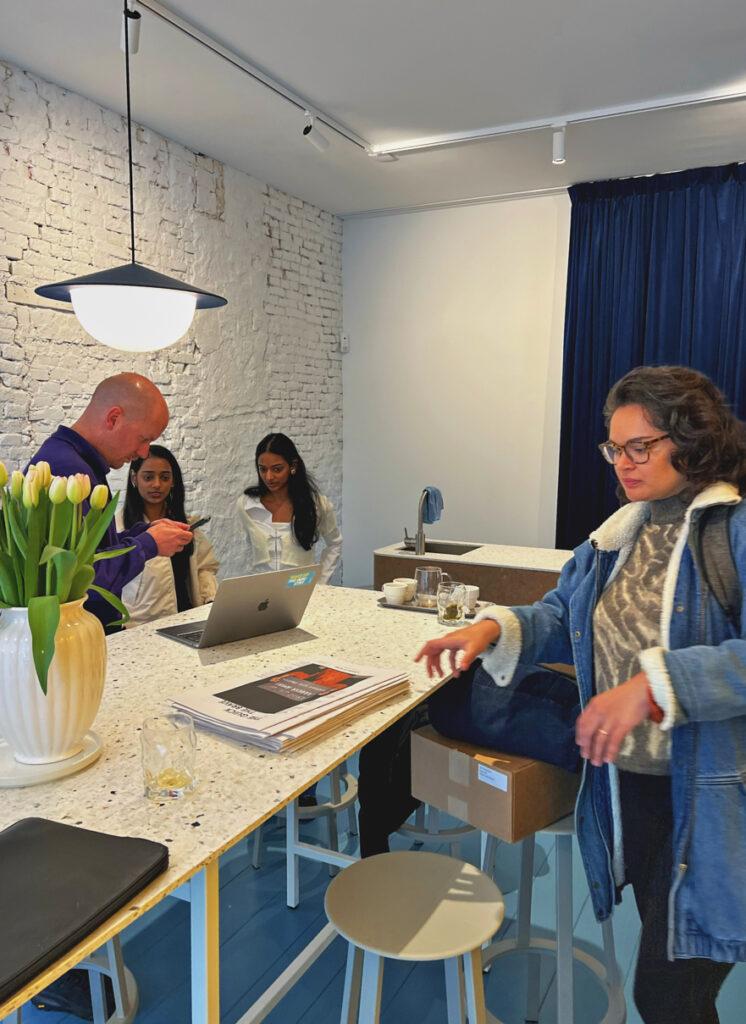
A sustainable clothing brand got in touch having heard about the partnership.
What was it that the payment platform was allegedly looking for from cultural partnerships?
Could we help to connect them?
The response from Adyen N.V. to Journal 002 was mixed.
Marketing and our contact were allegedly enthusiastic, asking us to bring more copies into the building for staff.
Unfortunately, other departments were allegedly unavailable to give feedback.
Our paper was hypervisible within Adyen N.V. but as the creators of the work, it allegedly wasn’t possible for us to be acknowledged for that work.
The content of the paper seemed to be inspiring other internal Marketing initiatives.
Coming across a Sustainability Week poster in the coffee area about the turtle farm in my mum’s home town in Reunion Island (population 35,000) a couple of months after the Journal came out was unexpected.
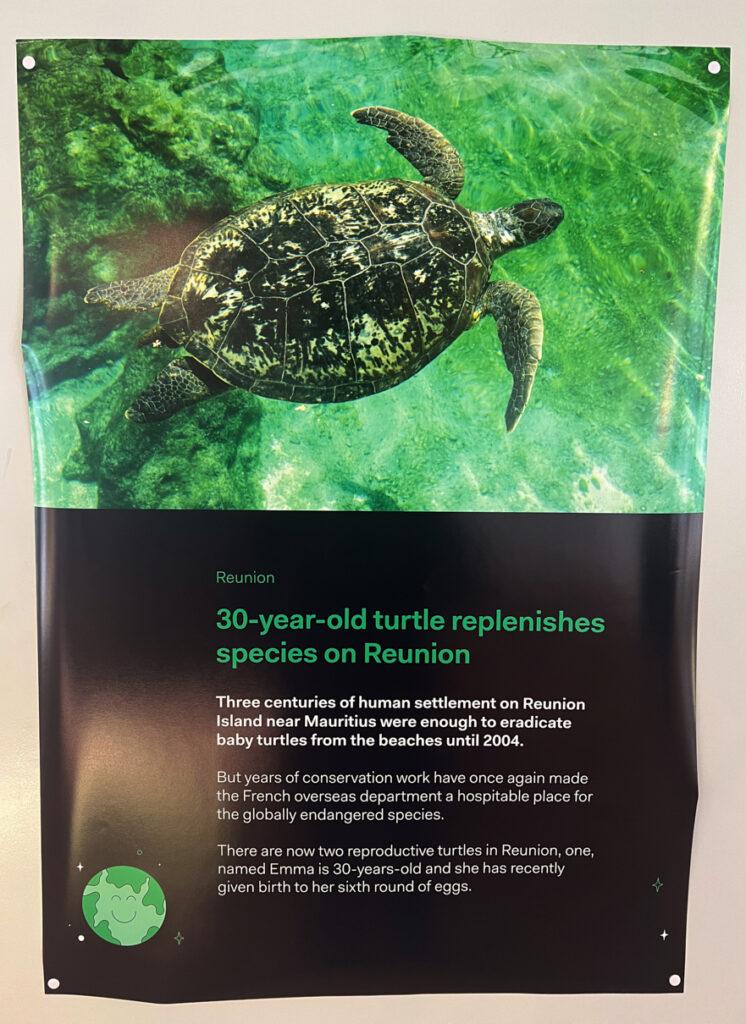
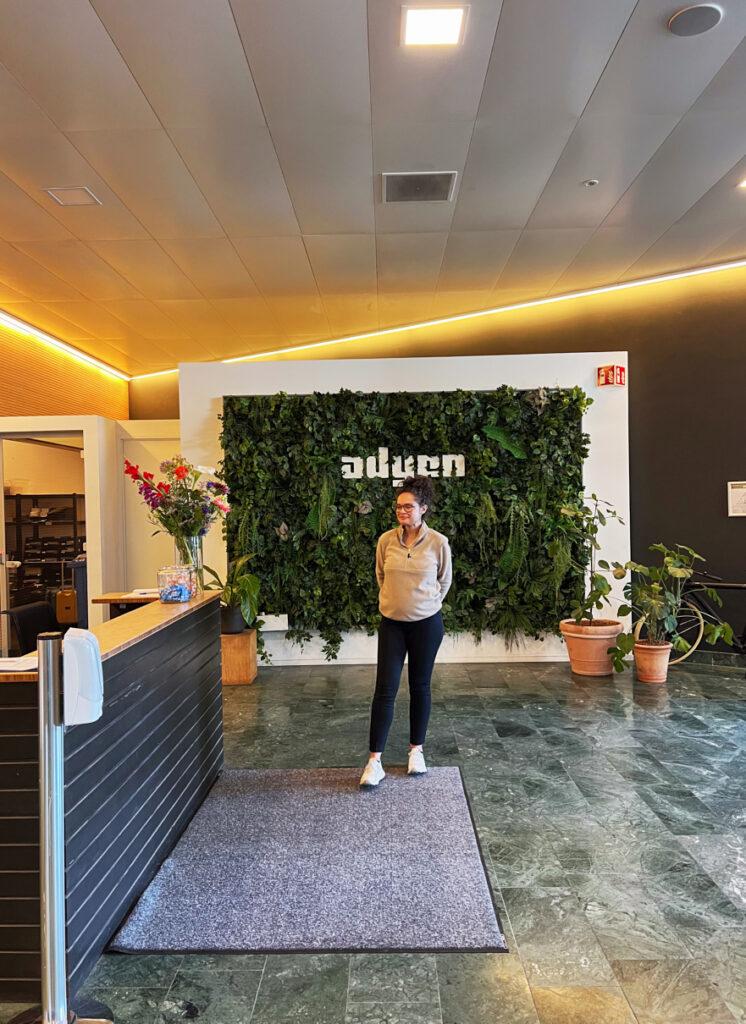


The origin story in the Journal of the design and communication program – and the time spent with family in Reunion as we developed it – had seemingly left an impression.
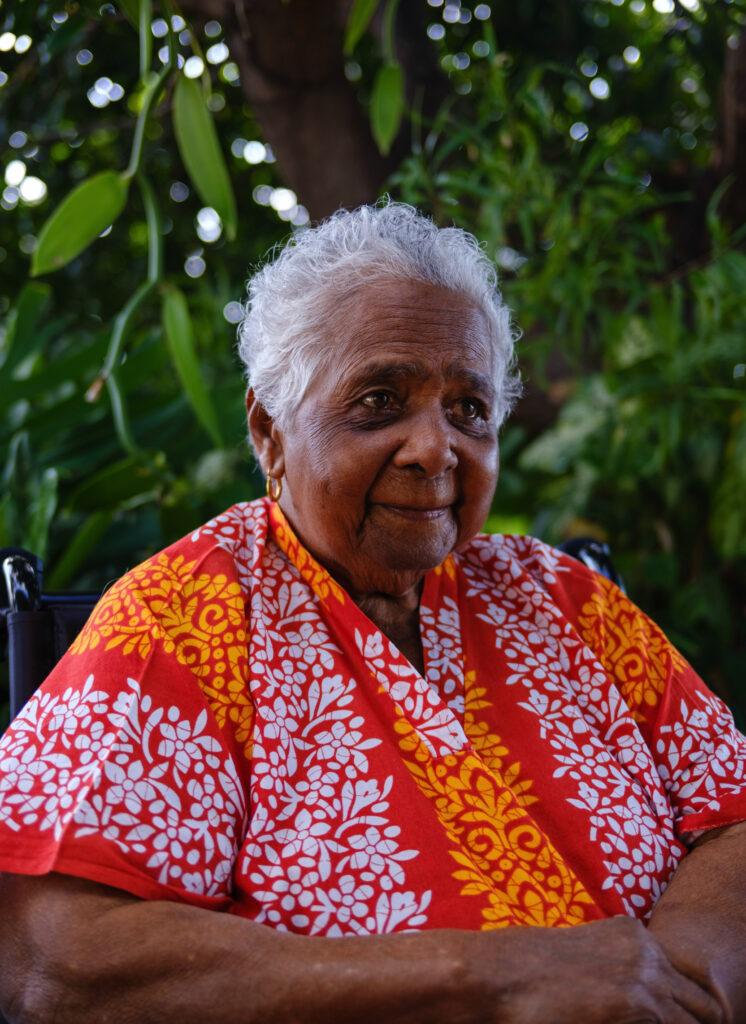

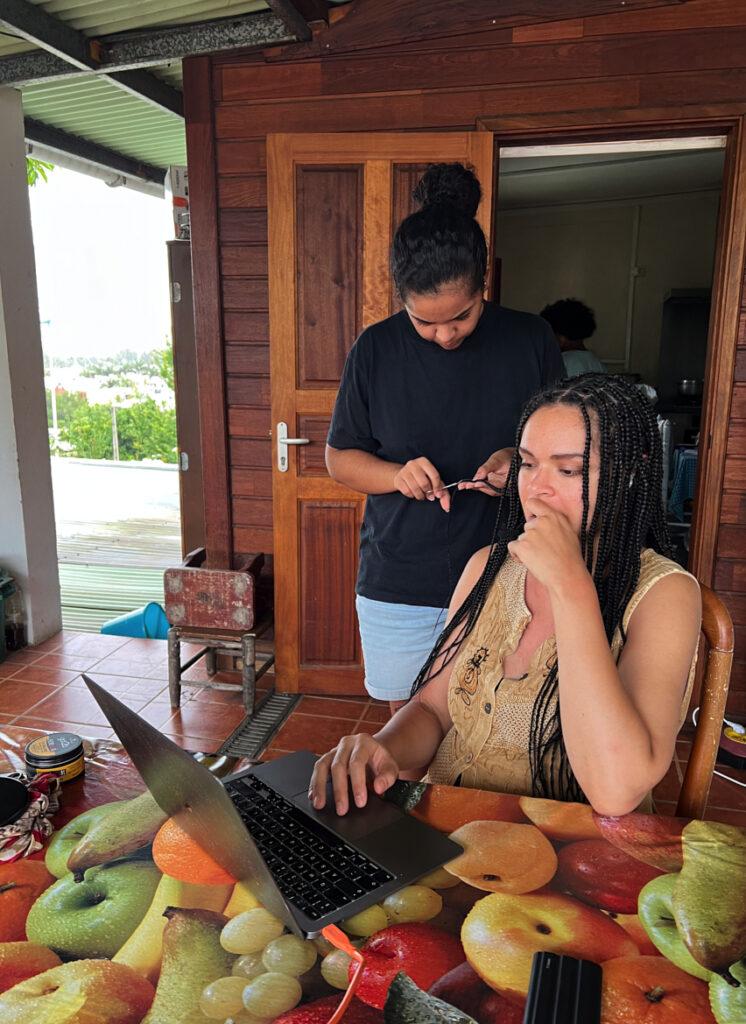




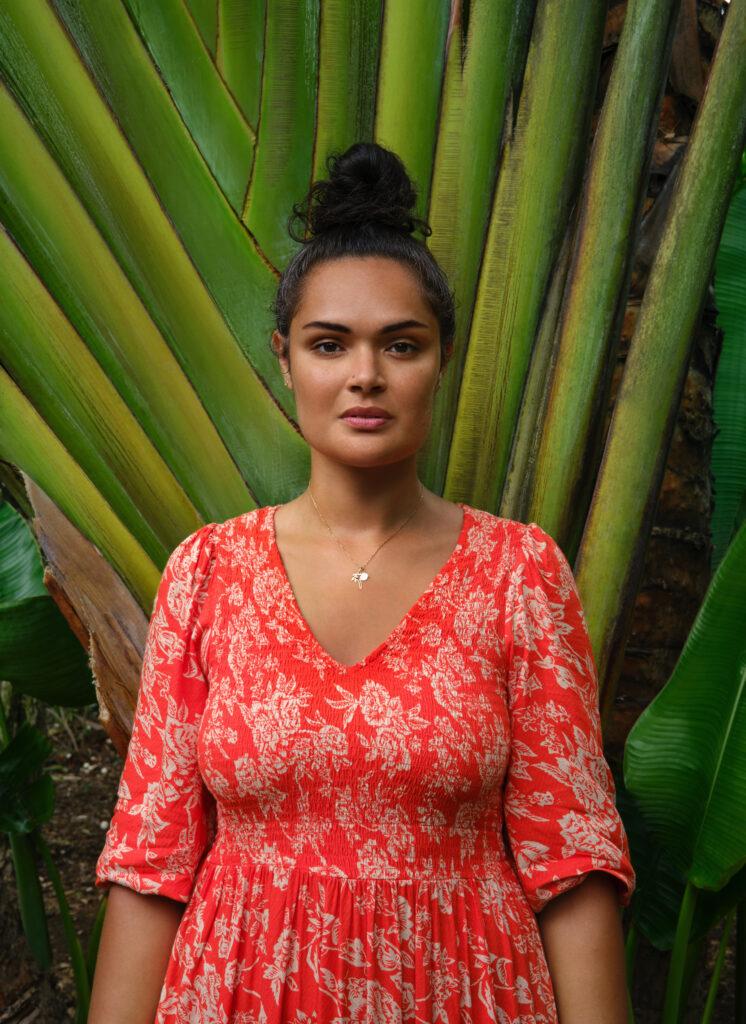

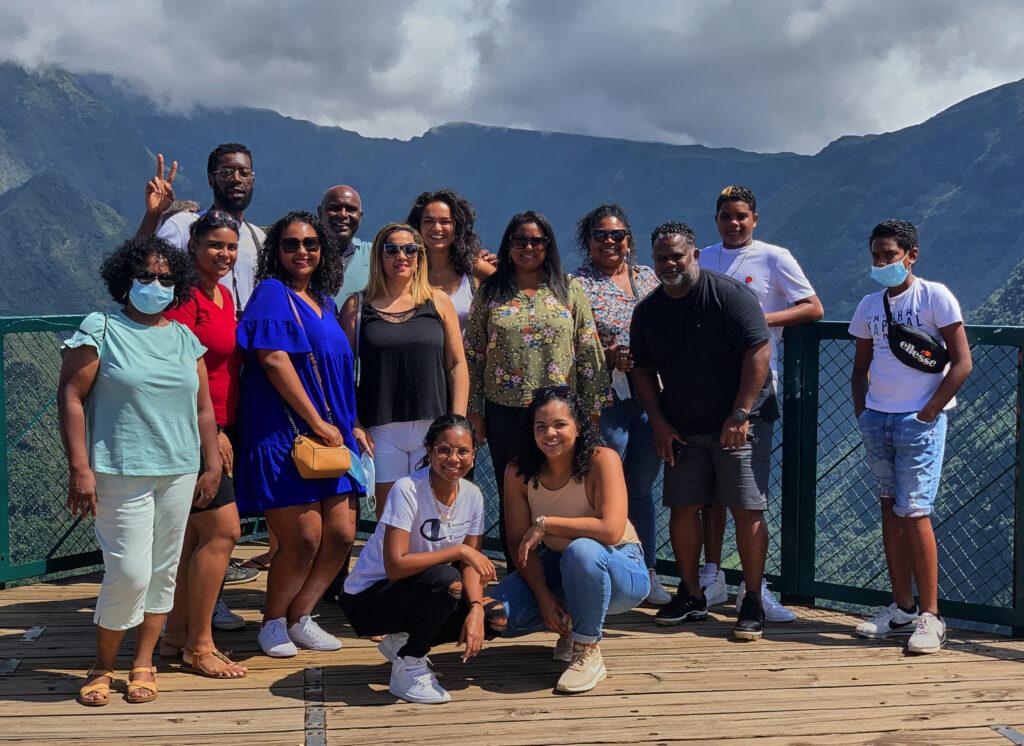


The issue includes several stories introducing the program and Adyen N.V.’s alleged support of the initiative.
This includes a front cover mention; a two-page feature about the podcast, its accompanying publication and professional development for creatives from historically excluded backgrounds more broadly; a four-page feature with two Junior Art Directors sharing their experience of the program.
They art directed the shoot for the back cover advert (also for the podcast and program with Adyen N.V.’s logo).
In Journal 002, the mentees shared their experience as Junior Art Directors:
“We had high hopes when we became mentees and were looking forward to seeing how far we could progress… the creative projects we’ve worked on so far have allowed us to become more confident and assertive to share our ideas. We’re seen as creative individuals.
“With [BRAND NAME REDACTED], the support we’ve had goes the extra mile. Having access to a safe space has positively affected us mentally and physically and encouraged us to chase our dreams. We’re grateful for the opportunity…
“The overall experience of [BRAND NAME REDACTED] has been very rewarding… It made us realise that we are capable. Before, there were times when we thought that our skills were lacking – being part of the program helped us realise that instead, it was the opportunities that were lacking.”
— Jr Art Director on [BRAND NAME REDACTED] program
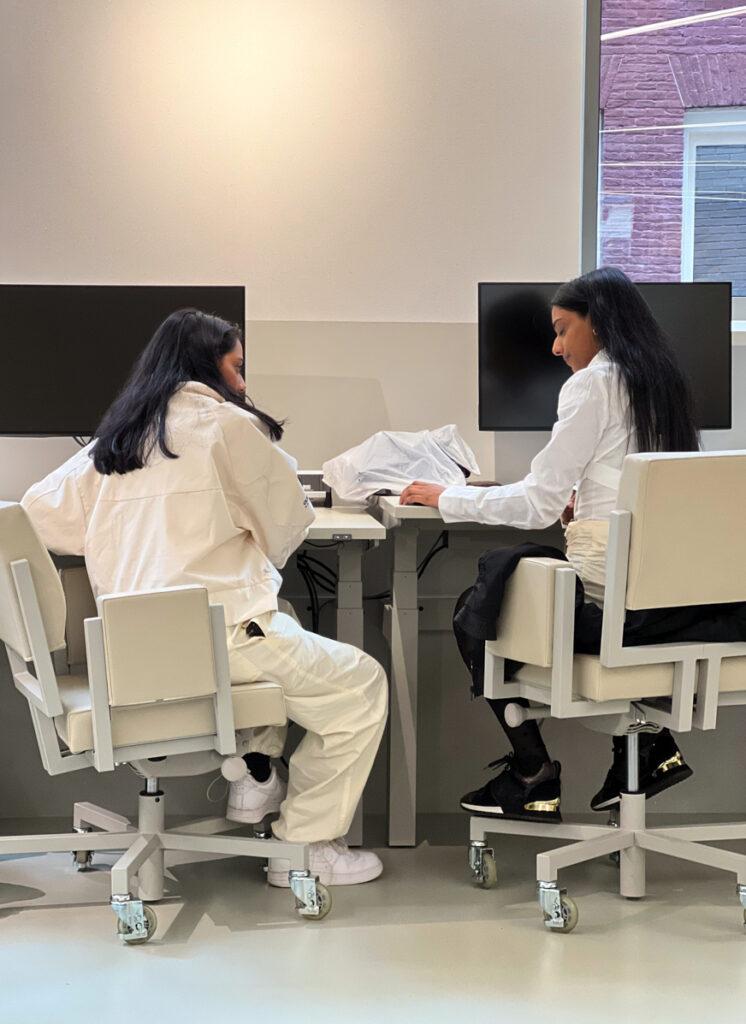



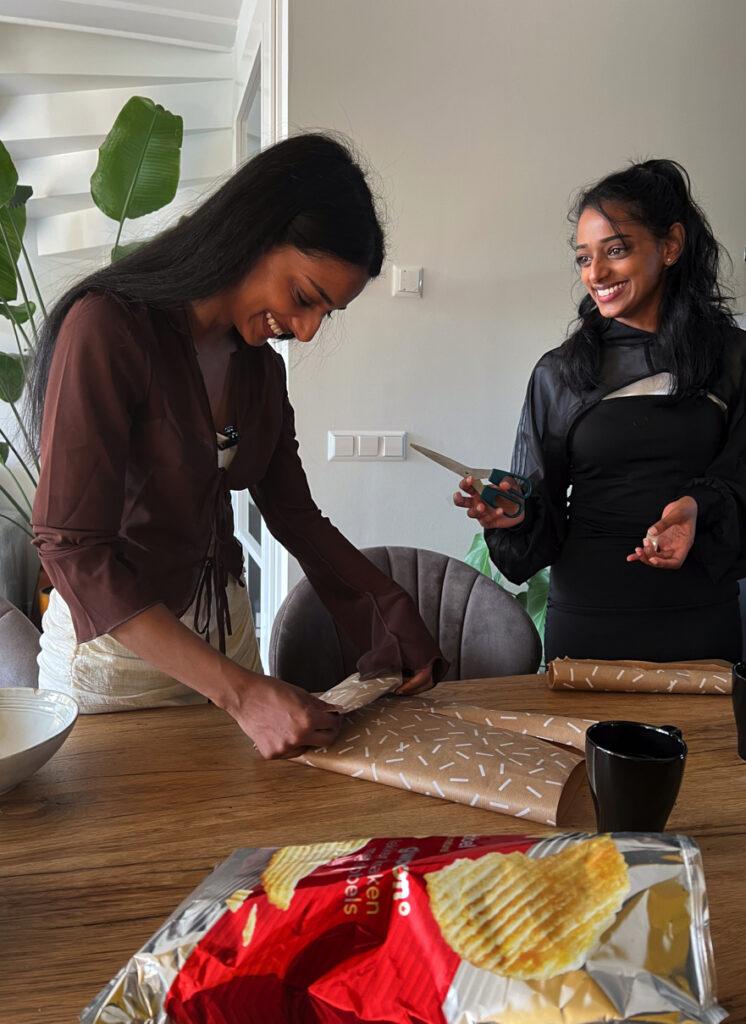

We were inspired to learn the positive impact that the program was having on the mentees. It was what we had always hoped we could achieve.
We delivered five boxes of Journal 002 (about 250 copies) to Adyen N,V.’s Rokin office in early December for staff and guests to pick up from Reception.
As teams started to get back into work after the holidays, we looked forward to developing the second year of the program.
We learned a lot in the first year.
Based on feedback, we updated the outline of the program.
We were allegedly asked to share our “biggest and best ideas” for the next steps of the multi-year program.
For every proposal, we’d need to set aside two weeks of time to develop ideas and production schedules, determine the stakeholders needed, stress test and review concepts, draft copy and create the presentations.
It was work that we prioritised because such a big proportion of our income came from the supposed collaboration.
From a practical and capacity standpoint, we were unable to take on new projects. We invested a lot of time and energy developing the program and its infrastructure because in the long term it would allegedly benefit us to put the groundwork in early for this five year program.
We’d look for designers ourselves and develop resources to make learning about design more inclusive and accessible. We’d create publications and other design projects to sell online.
The podcast would continue to be developed alongside the program, supposedly creating more opportunities for mentees to gain experience on an ongoing production.
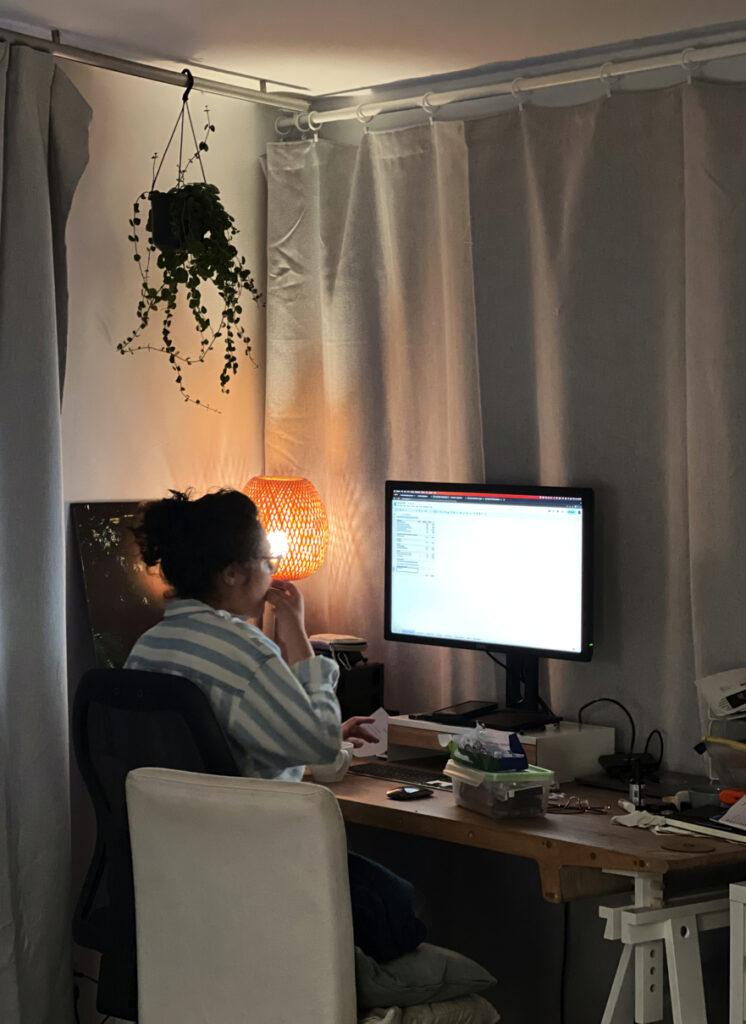


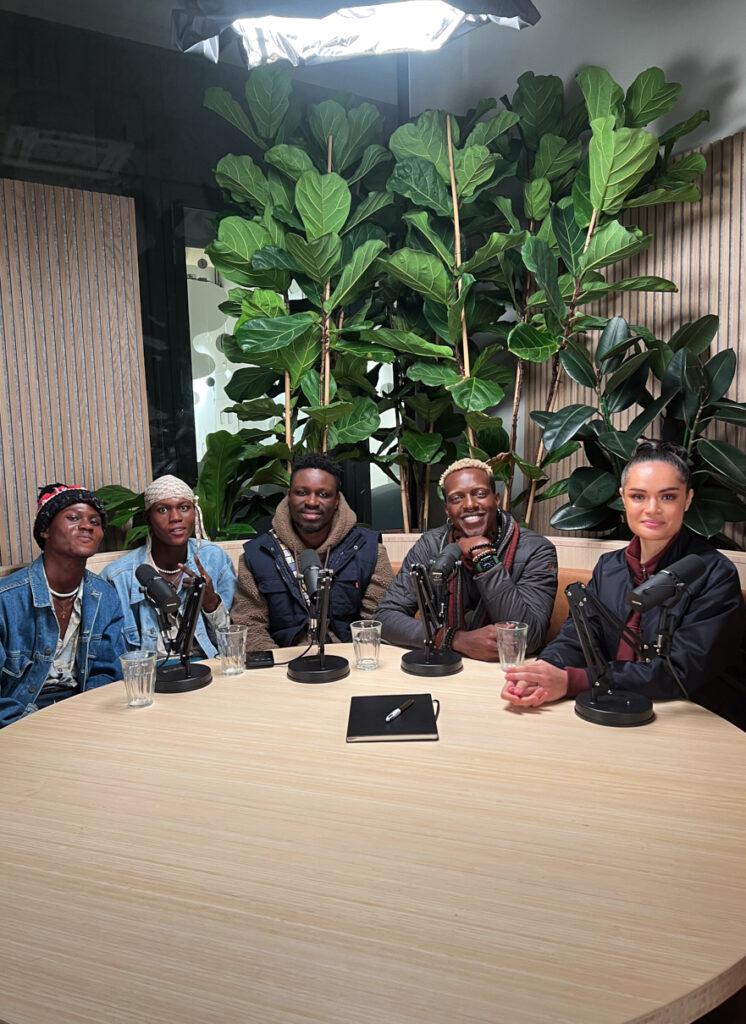


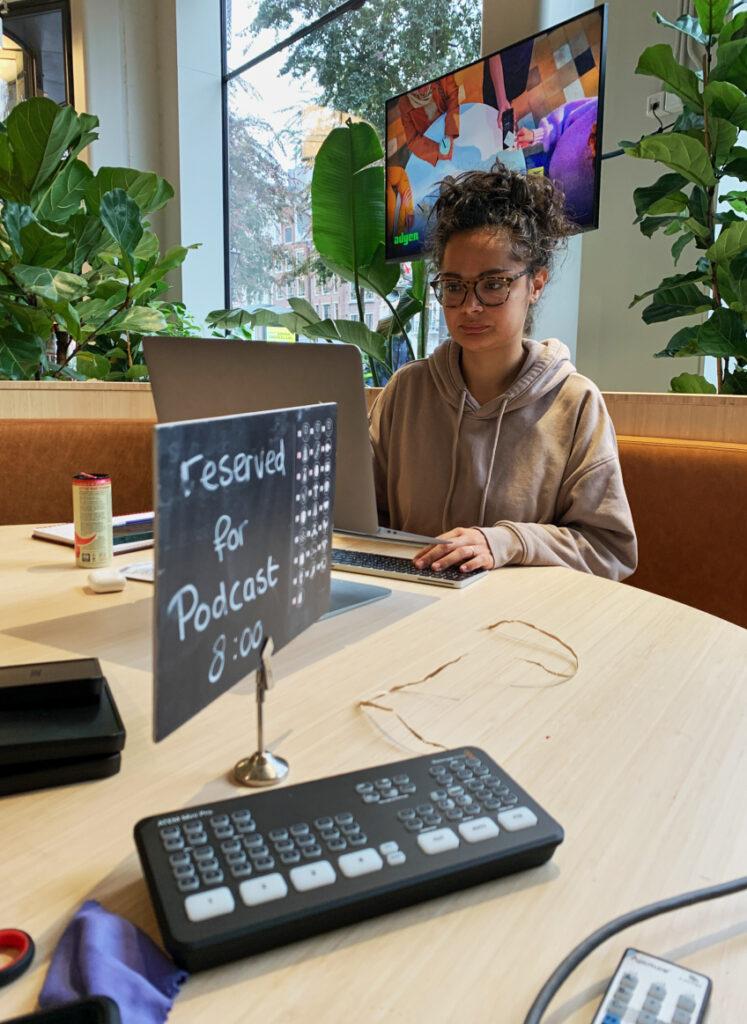
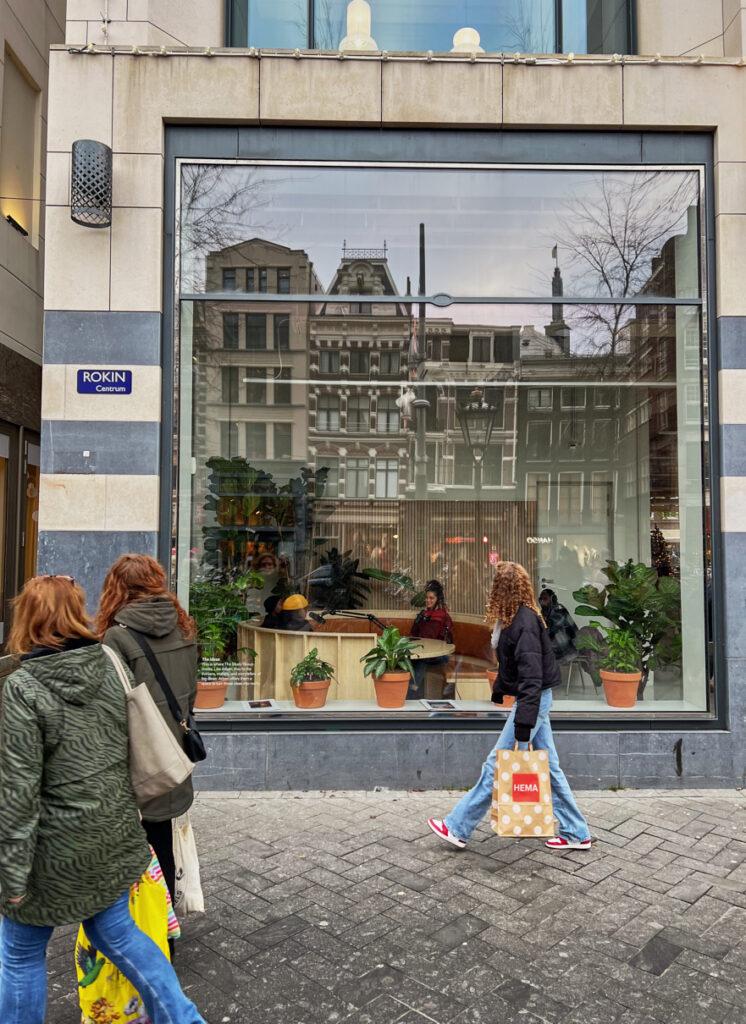
Our accountant informed us that our work situation was not up to par.
The alleged late payments distributed by Adyen N.V., as well as the lack of a written contract with terms and conditions, simply were not standard procedure between businesses.
He advised us to propose a biannual advance on the budget to guarantee that production could stay on schedule and prevent future financial predicaments.
How right he was.
Along with the proposal, we issued the first invoice for year two for the first half of the second year. It was based on the real costs and payments that Adyen N.V. issued during the first year of the program.
Because the program was expanded, the compensation and costs should in theory increase.
While we waited for sign off from HR, we got on with the next stage of the podcast.
During the production for the first season, feedback from Adyen N.V. was apparently encouraging. We were happy to see the production bring so much attention to the collaboration between The Study Group B.V. and Adyen N.V., both internally and externally in the community.
“When are you planning to make season two?”
Adyen N.V. indicated in our meetings that a second season was something they allegedly wanted to see.
Autonomy being a core pillar of the program, this extended to how we used our budget. This was an opportunity for us to invest in the long-term vision of the podcast and so we came to Adyen N.V. with a proposal for a title sequence for the series.
This would create a strong, consistent visual from the start and be used for all episodes of a season.
The production showcases the highly creative work of a team who personally understood what we were trying to accomplish within the program and who saw themselves represented through it.
The one-minute intro includes animated graphics and charts the commute from Bijlmer via metro to Rokin, showing the journey the team takes to get from The Study Group’s Bijlmer studio to Adyen N.V.




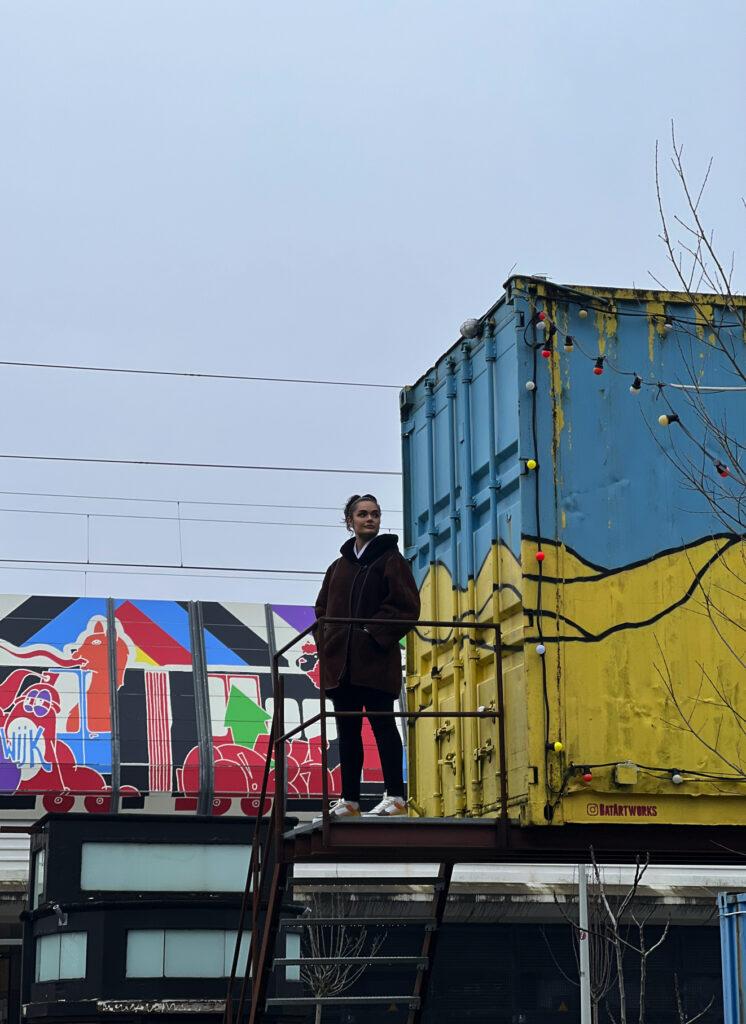
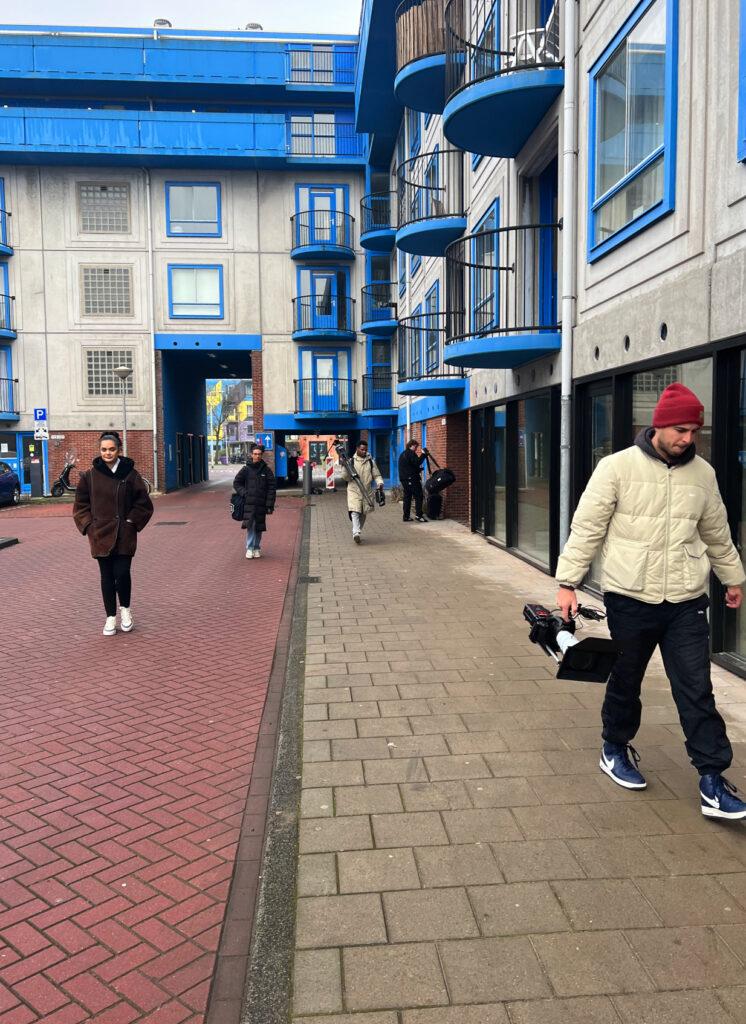




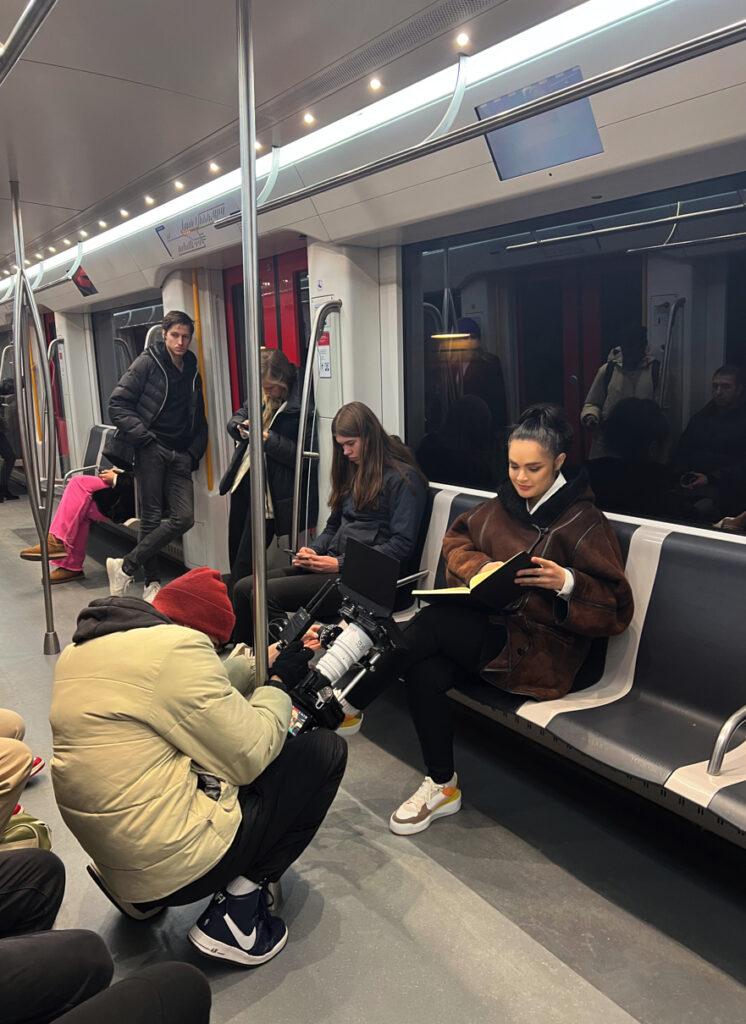
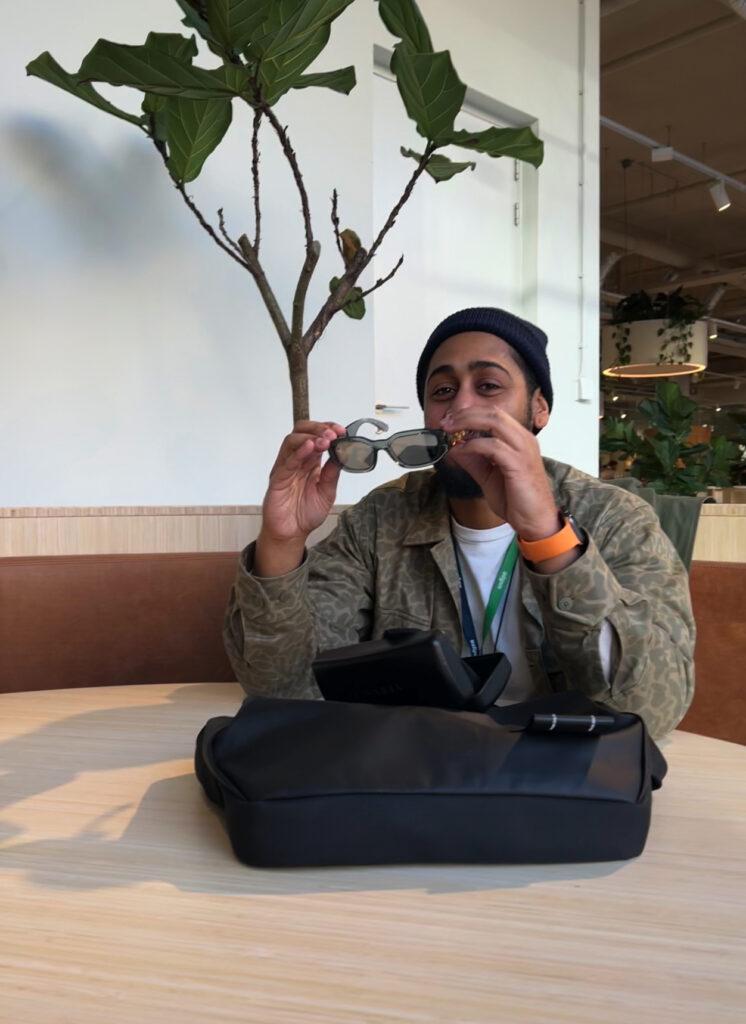
The shot list took the program mentees and myself to various locations in the south east of the city, along the metro route, the walk through the centre of Amsterdam before closing shots inside the Rokin office.
We intentionally set out to work with talent from the community who Adyen N.V. had told us they allegedly were trying to find – the creatives of colour balancing multiple jobs who are passionate about their craft but were overlooked for opportunities in public listed companies; or didn’t see tech or corporate spaces as an option for them.
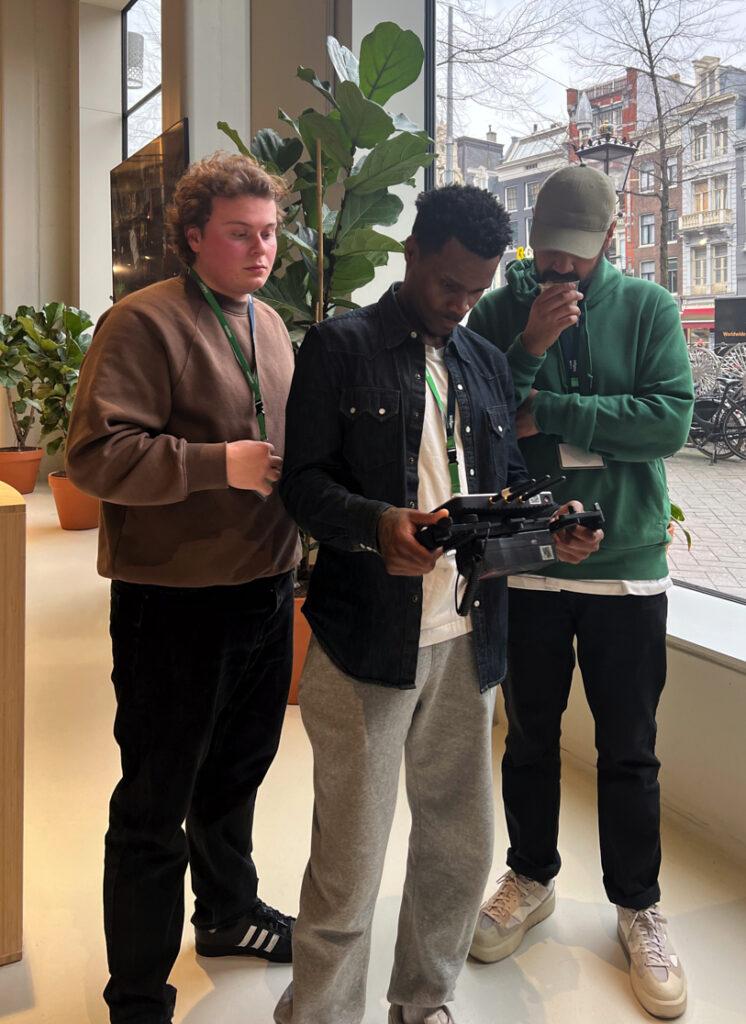

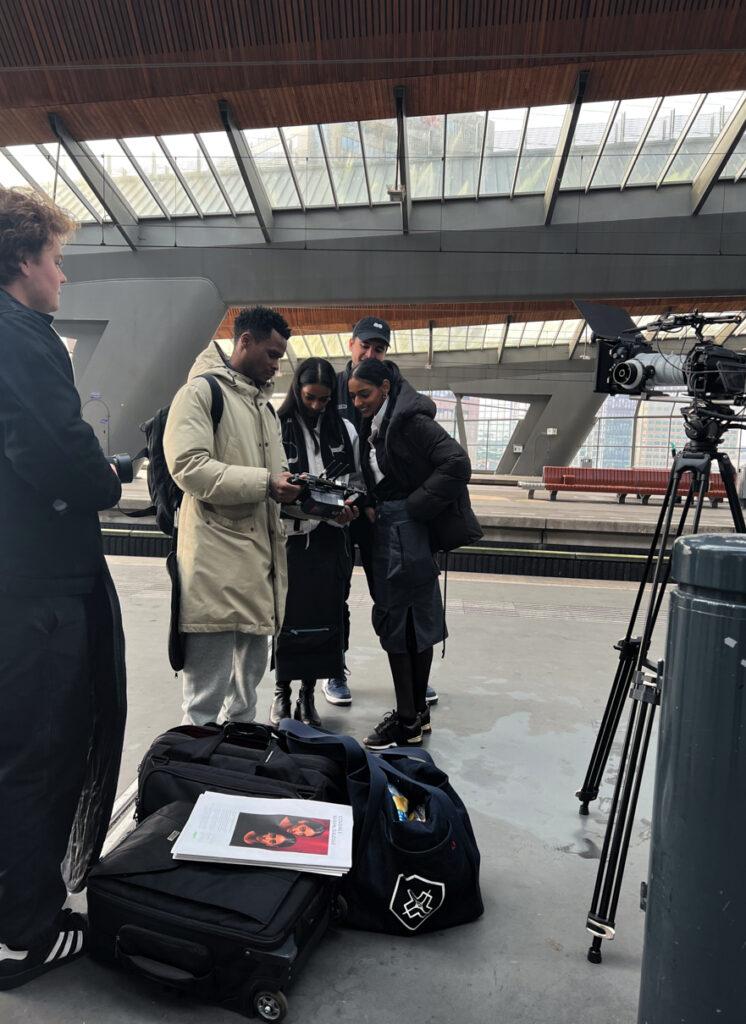
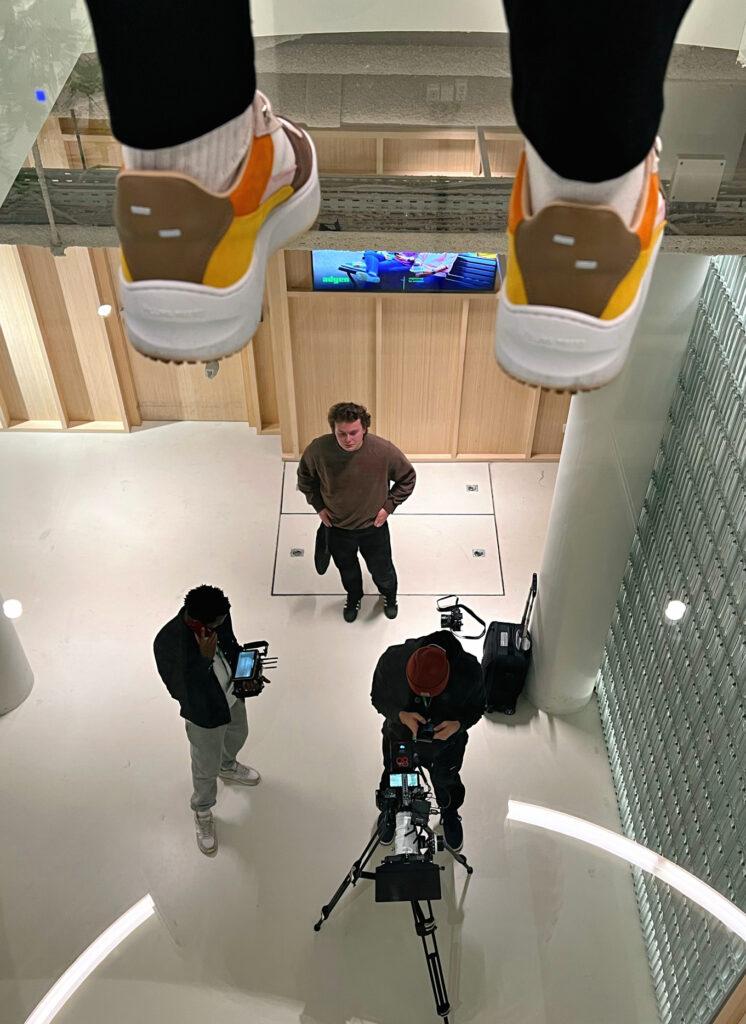
The soundtrack for the sequence is composed by one of the program’s Junior Art Directors, a non-binary Sound Designer with mixed [NATIONALITY REDACTED] heritage, who produced the live sound design at the expo the previous summer.
For the intro music, she selected sounds that heighten focus based on her technical expertise in breathwork methodology and sound meditation.
It was important to hold space for her way of creating. She found a way to manage the demands of the music industry with purpose-led work in the wellness and performance art spaces.
As a neurodivergent woman of colour, she balances several freelance projects so we worked together to accommodate her needs in the collaboration.
She shared her experience with us:
“My experience of the program so far has been very positive. When I heard the concept it was something that really fit what I was trying to develop myself.
“I like that it’s such a community based program and I had a really easy, good connection with the other mentees instantly. I got to work with Marie-Anne and Obi in different ways which was cool. I felt very supported through the conversations that we had.
“I feel like you guys really take in what I’m saying, working on or trying to develop at the time and think ‘OK, what can we do to support what you’re doing?’
“It’s been very, very cool to feel that kind of support when you’re building the start of your career. Especially because I do so many different things, you support me in so many different directions that I’ve been going in with my work.”
— Junior Art Director on [BRAND NAME REDACTED] program




Why did she want to get involved in the program in the first place?
“I loved the idea of getting to develop in different areas where usually I wouldn’t have the time or funds for the budget to develop myself even though it’s such a worthwhile thing to do. I really enjoyed that I had so much space for self development through the program while building something together. For me it was a no-brainer, I was already ready to join.”
— Junior Art Director on [BRAND NAME REDACTED] program
She taught us a lot in the process about strategies for managing ADHD in a neurotypical world where there’s limited support or research into the needs of BIPOC and LGBTQ+ community members dealing with these conditions – for those who even realise that getting a diagnosis is a thing.
The Sound Designer is the mentee the Vice President of Creative mentioned directly in the interview at the start of the collaboration, saying:
“One [of the mentees] is a sound engineer who wants to work in the music industry and the music industry doesn’t see a woman of her colour, a woman, young, inexperienced. [They say] “let’s ignore her, she’s not relevant”.
“I would really embrace those people in my team. Try it, explore what we sound like, explore what we do then we’ll figure out how to enhance your skills in audio design. Those are the people I would really like to help be part of our team.”
— Vice President of Creative at Adyen N.V.

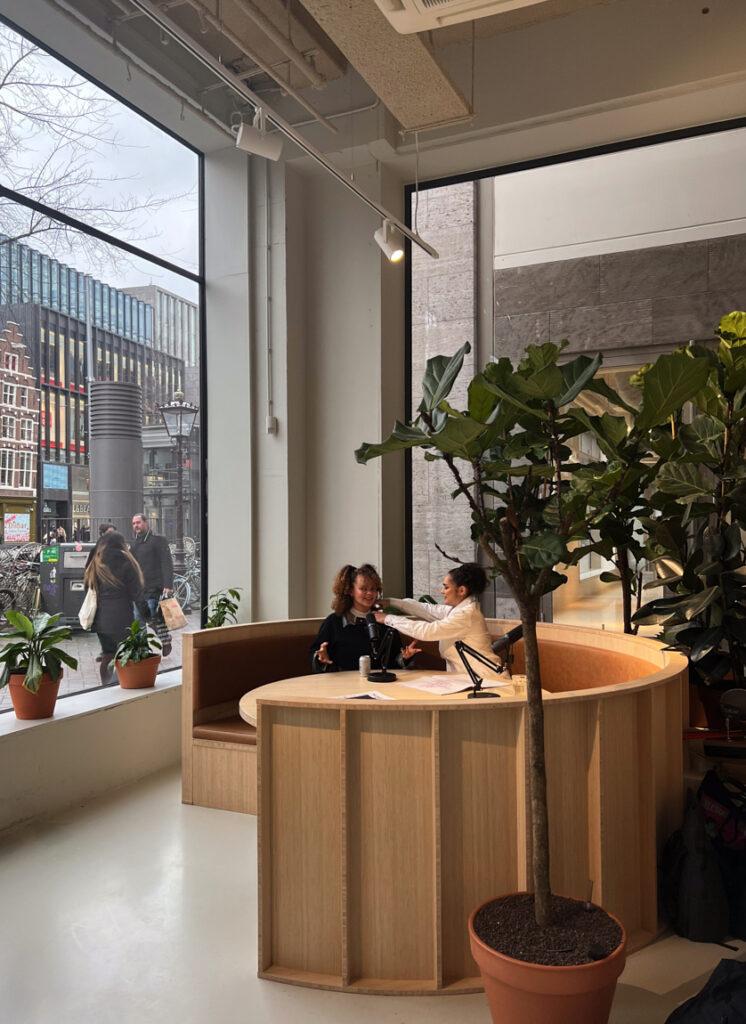
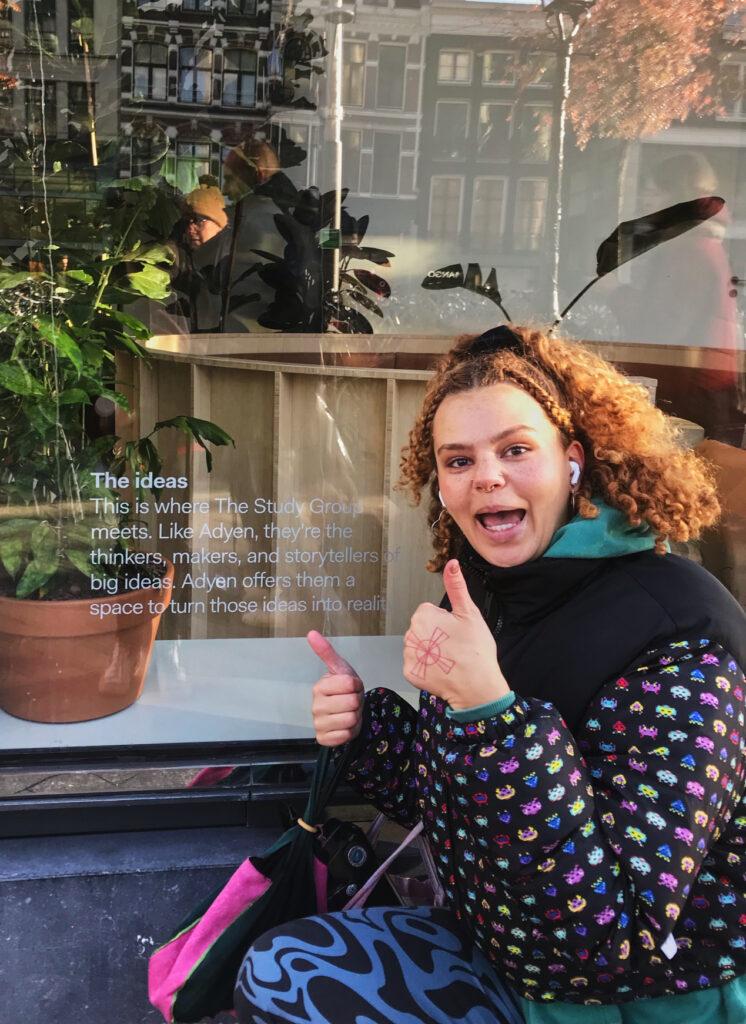
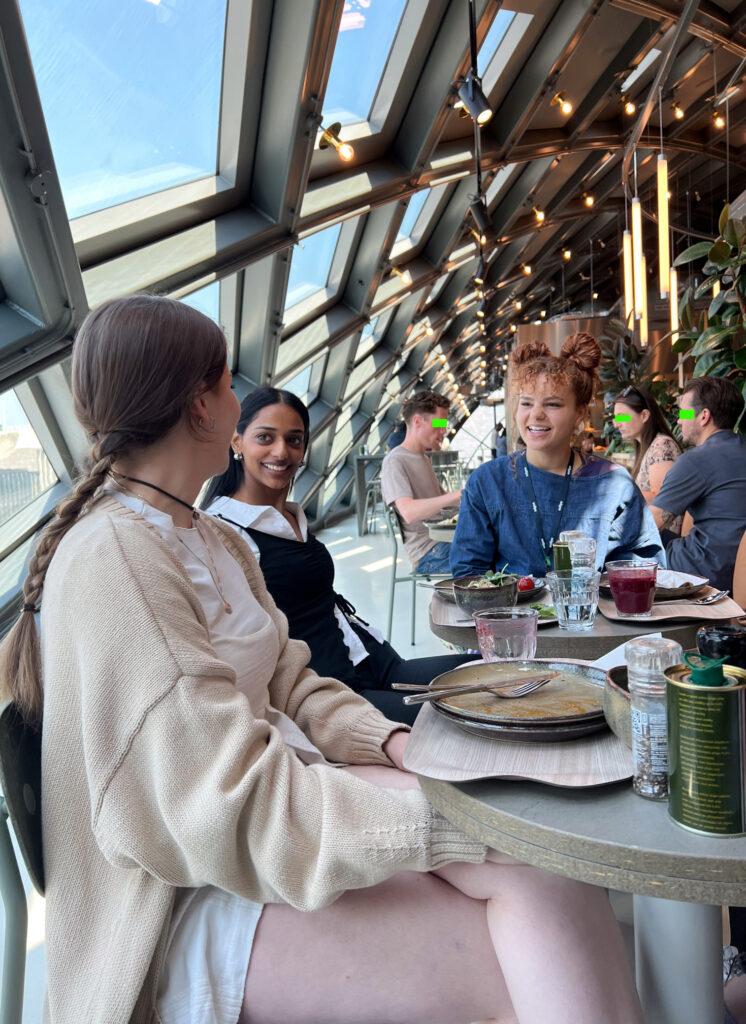
Following discussions with our contact in 2022, the first 2023 program proposal included yoga and breathwork sessions in the event space in Adyen N.V. for Employee Resource Group (ERG) members guided by our Junior Art Director.
The video director for the introduction sequence is a young [NATIONALITY REDACTED] parent based in the Bijlmer. Their family fled [COUNTRY REDACTED] and came to [COUNTRY REDACTED] as refugees when they were a toddler before settling in The Netherlands when they were [MINOR AGE REDACTED].
The program and the thinking behind it resonated strongly with them.


The production team also includes a motion graphics designer from [COUNTRY REDACTED] and a [NATIONALITY REDACTED] video editor.
Upon approval, we shared call sheets and production plans with Office Management who apparently were happy to co-ordinate with us.
Here’s what we and the team created:
16. Enter HR
The day after filming, we had our 20 week ultrasound scan at our local prenatal clinic.
Fortunately, baby was doing well.
My bump was starting to show.
We told our contacts a few weeks earlier that we were pregnant. Naturally, we wanted to share this news – it was important to keep our alleged collaborator informed so that the next stages of the program could be well managed as we made the transition into family life.
Everyone was supposedly happy to hear this news.
We were assured that Adyen N.V. would allegedly look after us as a new family and it was agreed that a formal contract would be drawn up in summer.

After the scan, we had our first video call with HR.
The Vice President of Creative said he was allegedly keen for the program to get more support internally.
HR seemed the natural fit – DEI initiatives were managed through their department so there was great potential for impact.
From my own experience working in tech, as an employee, the relationship you have with HR can be confusing.
Stephanie Crain, a leadership and management consultant explains that:
“HR works for the organisation, not for you. This creates some confusion because HR is typically who welcomes you into the organisation and they’re often the last people you speak to when you leave.
“HR’s primary role is regulatory but many people go into HR because they want to work with people. The challenge is when employees seek advocacy. HR has a duty to the organisation not the employee. This creates a conflict and a no-win situation for people in HR and employees themselves.
“What’s worse is that organisational leaders often look to HR to cultivate and sustain culture within the organisation making the lines even more blurred.”
— Stephanie Crain
On the video call, we were introduced to two members of HR.
We shared a little about ourselves and the background about the program.
They shared their roles with us.
It didn’t seem that they’d heard much about us or the program, but they said it sounded like an interesting project.
Were there any DEI goals of Adyen N.V.’s that we could contribute to?
The better we understood their supposed objectives, the better we could align our plans.
We were told that it would allegedly be best to tell HR what we want to do and from there, Adyen N.V. would let us know what they could support.
The call was kind of perplexing.
We were waiting on feedback for the proposal we’d sent a week prior on 14 February. Soon enough we’d be able to start on the next phase of the program.
We heard back the next day.
On 21 February, the invoice was rejected.
It wasn’t what we expected either but, as we saw it, if we needed to adapt the plans to better align with HR’s goals, we were happy to do so.
A week later we shared a revised proposal.
Things can take time to be signed off in large companies but generally speaking, in the first year we were granted the autonomy to allegedly develop creative incorporating the feedback from our face to face meetings.
There was supposed active listening about the creative process and a seemingly general enthusiasm to give input and think along.
Surely though, the process of adapting and finalising the plans would take a couple more weeks at most with supposed input from HR?
We were already in the second year…
The last invoices for 2022 had cleared and went straight to paying our team and creditors, the development of the program, and post production of the podcast interviews and introduction sequence.
Work also began on the design and communication program’s branding, logo and the accompanying publication to the podcast.
On the communication side, we started to work with a writer and content marketer. We came across their work on Afropean.com, an online journal exploring the interplay of Black and European cultures started by bestselling author, Johny Pitts.
Having previously worked at The Guardian, they moved over to the Netherlands from [COUNTRY REDACTED] to work on the program and explore opportunities with The Study Group and other initiatives serving the community in Amsterdam. They were incredibly excited at the potential the program could have.
Theirs was one of the testimonials shared in the proposal to HR:
“In my view, [BRAND NAME REDACTED] is a much-needed alternative to selective practices in the corporate world. Having witnessed organisational cultures based on domination rather than collaboration, I think today’s workforce really needs a new system which motivates and develops, while allowing space for individuality and creativity.
“My hope for this program is to help create foundations for a new blueprint that the industry and other sectors can follow when it comes to talent management.”
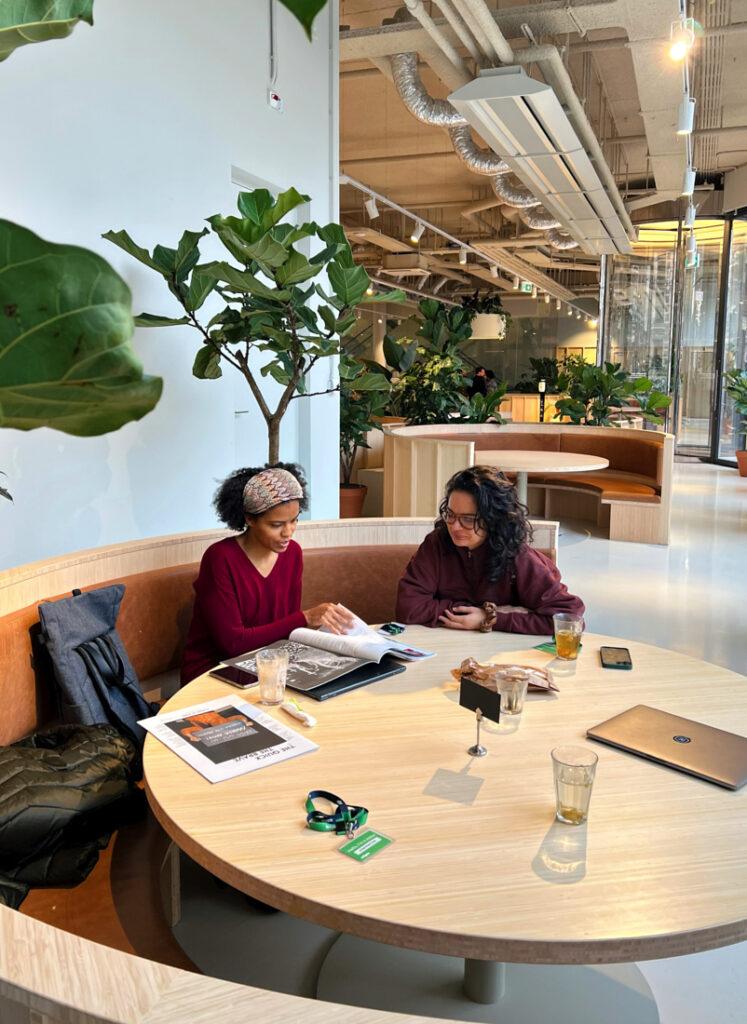
Adyen N.V. allegedly wasn’t able to support us with designers so time was dedicated throughout the development phase to find creatives.
This was obviously disappointing given that the design and communication program was based on the idea of mentorship and fostering the autonomy of emerging designers from the community.
Ever resourceful, we adapted.
For the program to keep moving forward, we went through the process.
To begin, we approached the best BIPOC designers in the Netherlands who we could find, people who have invested heavily in their craft and leadership skills to gain senior positions in their industry.
Like us, they’d dealt with their own share of bias over the course of their careers. They were excited about the program and the prospect of getting to be seen in the tech space.
Freelancers and entrepreneurs from historically excluded backgrounds fight to get work regularly. Their invoices reflect their experience and work so, if we were looking for someone to come on board as the equivalent of a Lead Designer, their invoice alone would have absorbed at least half the budget.
Salaries for these types of roles are typically six figures in the tech and creative industries.
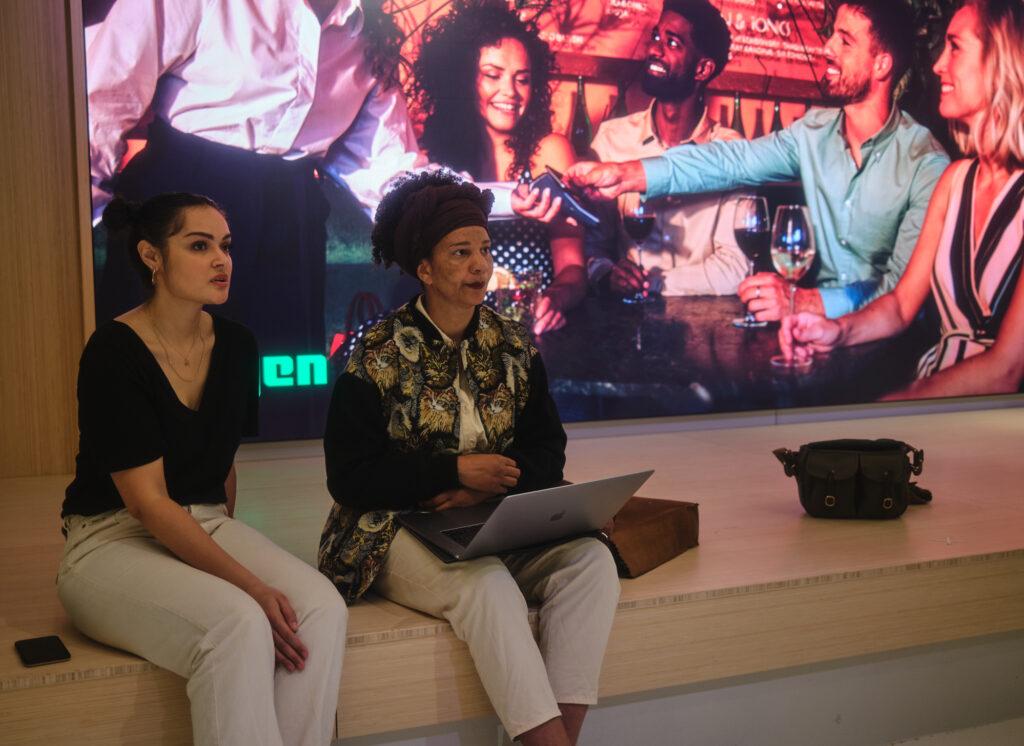

When people hear a payment platform is allegedly supporting your initiative, they, obviously, are going to charge commercial rates.
Damn, I would too.
Though people generously offered time where they could, ultimately they couldn’t afford to make guarantees about how much of this they could give.
Paid work had to be the priority.
We communicated this to Adyen N.V. and asked for input and advice.
They supposedly could only tell us the going market rate for freelance designers and consultants which confirmed the kind of budget we would need to set aside for a senior creative.
We’d take another approach and look for up and coming talent in the community.
There are very talented designers and creatives in and around Amsterdam establishing names for themselves.
Unfortunately they haven’t yet had access to leadership opportunities so, while the prospect of getting or receiving mentorship was interesting for them, it wasn’t possible for us to work with them on the program’s brand development – our resource wouldn’t allow us.
From our side, we knew what we wanted to communicate (and had a couple of newspapers to demonstrate that) but we remained without design leadership.
We came across a creative duo, talented designers from the Bijlmer, who eventually worked with us on set during the podcast production.
We began working with them on mini maatje, our publication in development with The Black Archives.
Without the alleged design input we’d hoped for from Adyen N.V., we’d continue to work on the publication independently. To be more economical with time and labour, the designers were happy to use the basic design infrastructure of TQTB Journal 001 but they needed guarantees about budget.
When we couldn’t give them those guarantees… I’ll let you guess what happened there.

17. Intention and authenticity
Ultimately, this program couldn’t be a bridge between the community and the tech space if we weren’t connecting cultures.
There’s no shortage of talented graphic designers in the Netherlands.
It just so happens that the majority of them are non-racialised.
It’s a healthy industry that we’ve seen thrive since arriving in the Netherlands eight years ago. From this field, and throughout our careers, we’ve been fortunate to work with allies and supporters.
Through the program we were now cultivating a space where historically excluded designers, creatives and communication professionals could be supported and seen in big tech.
It was making the community more visible, easier to find.
While we allegedly couldn’t get design support from Adyen N.V.’s Design Studio and we couldn’t afford experienced designers from the community, we looked to education.
Students are drivers of change.
Across generations and continents, it is students who have their ear to the ground and are a barometer of the times.
More socially, culturally and politically active, they are the decision makers of tomorrow. It pays to pause and consider what motivates them.
As the next generation of talent, how do they look at career and culture?
With the help of our Lead Illustration and RISO mentor, we explored options. They reached out on social media to students who might want to get involved:
We are looking for a Graphic Design intern with an affinity for print and book making.
Together with The Study Group we will be developing two RISO publications.
The content is based on culture, inclusivity, sustainability and self-care, centring the experiences and voices of historically excluded communities.
Dozens of applicants from across Europe and the UK got in touch – it was encouraging to see so many young people want to contribute to our efforts.
In the end, we engaged students from two leading design schools, Willem de Kooning Academy in Rotterdam and the London College of Communication in the UK.
Both identify as active feminists and saw this opportunity as a cultural exchange. One of the designers is non-racialised and neurodivergent, the other is of mixed cultural heritage. The intersectionality of the program was inspiring to them.
They were further impressed to hear about the apparent support Adyen N.V. was giving the program – as young women about to embark on their careers, the corporate space was somewhere they’d not considered for themselves before.

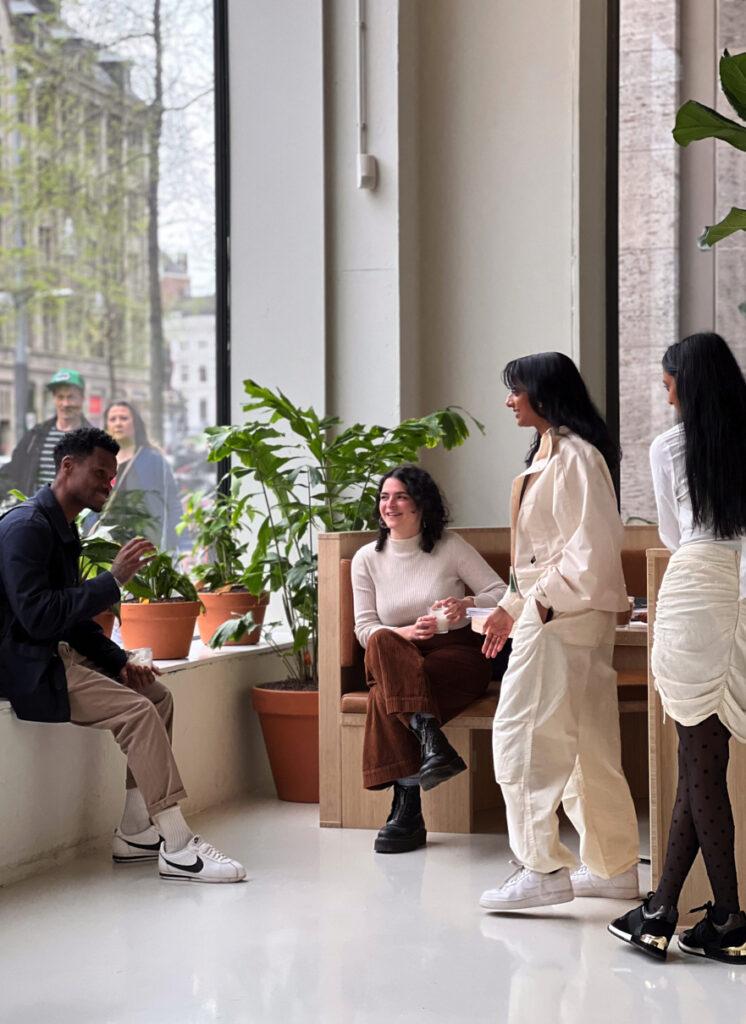
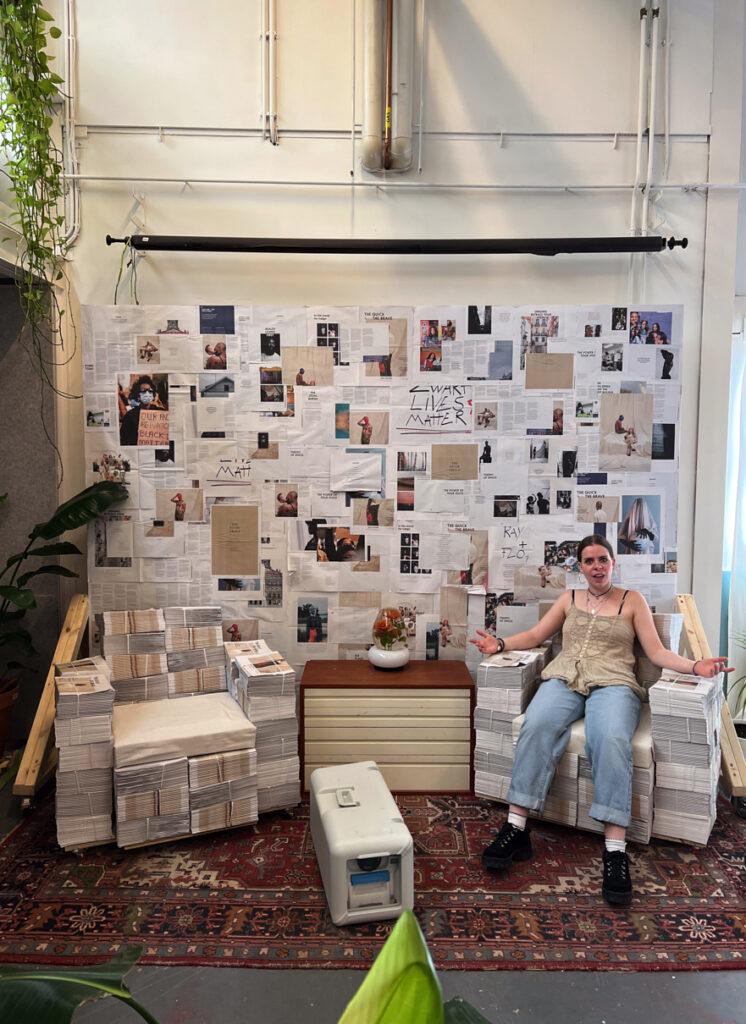

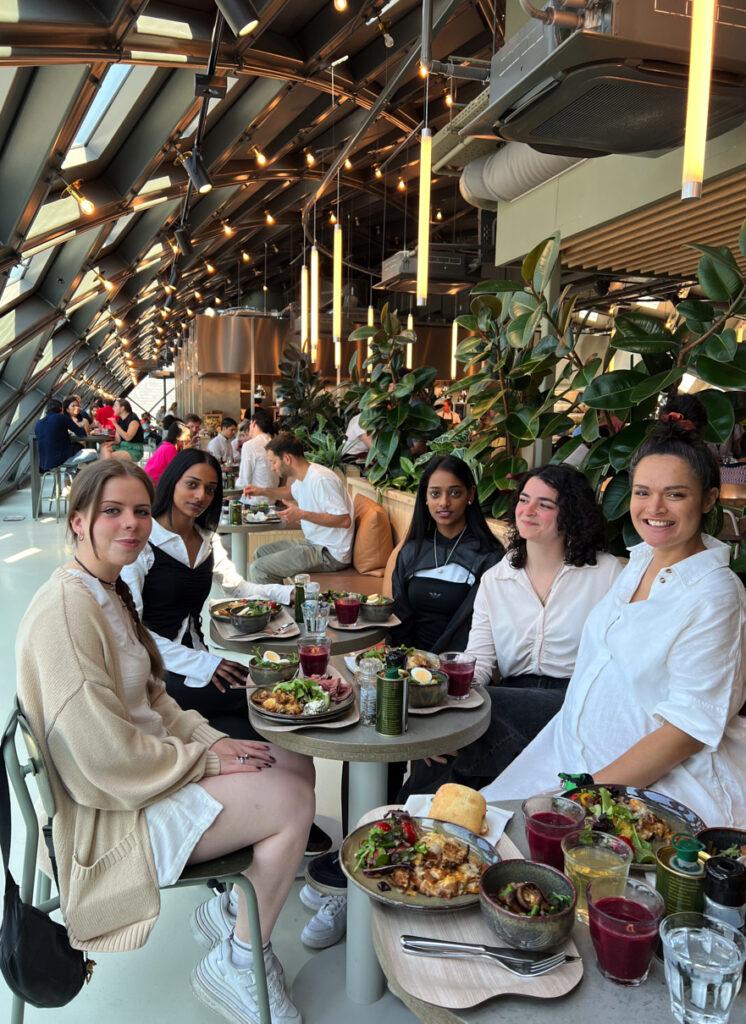



When we asked what they wanted to do after graduation, one of the designers explained that:
“I don’t think I’d be mentally safe working in a corporate space and I don’t think I’d be mentally safe freelancing.
“The world offers you two options as a graphic designer after you finish your studies. Either work autonomously and develop your own brand, which takes a lot of your personal life away so I knew I wasn’t mentally prepared to do that at all.
“The other option is to go the corporate route which also drains you and doesn’t allow you to do what you want to do with your art. Most of the time, you end up in an office where you have to say yes to everything that comes along because if you say no you might not have a job the day after.
“At The Study Group, you allow the people who work with you to have that safe space. That idea is a beautiful way of working that allows creatives to actually do their dream job, getting paid for things we actually love, having that community you can fall back on and people who care about the same things as you is really refreshing.”
— Designer, [BRAND NAME REDACTED] creative team
Both students moved to Amsterdam to intern as part of their year in industry – they were excited to hear that an organisation like The Study Group existed and was open to hold space to work with creatives from all backgrounds who want to be active allies.
It’s a responsibility we didn’t take lightly.
These were students dedicating time during their studies to the program, producing beautiful work in the process, supported by our Lead Illustration and RISO mentor. They were excited to share their experiences with their fellow students.
In their time interning with us, they got the opportunity to have a direct impact on and contribute to the shaping of the program’s brand.
They were introduced to, and presented their development work, to the Vice President of Creative during times that they came into the Rokin office.
He was allegedly impressed by what they were creating.
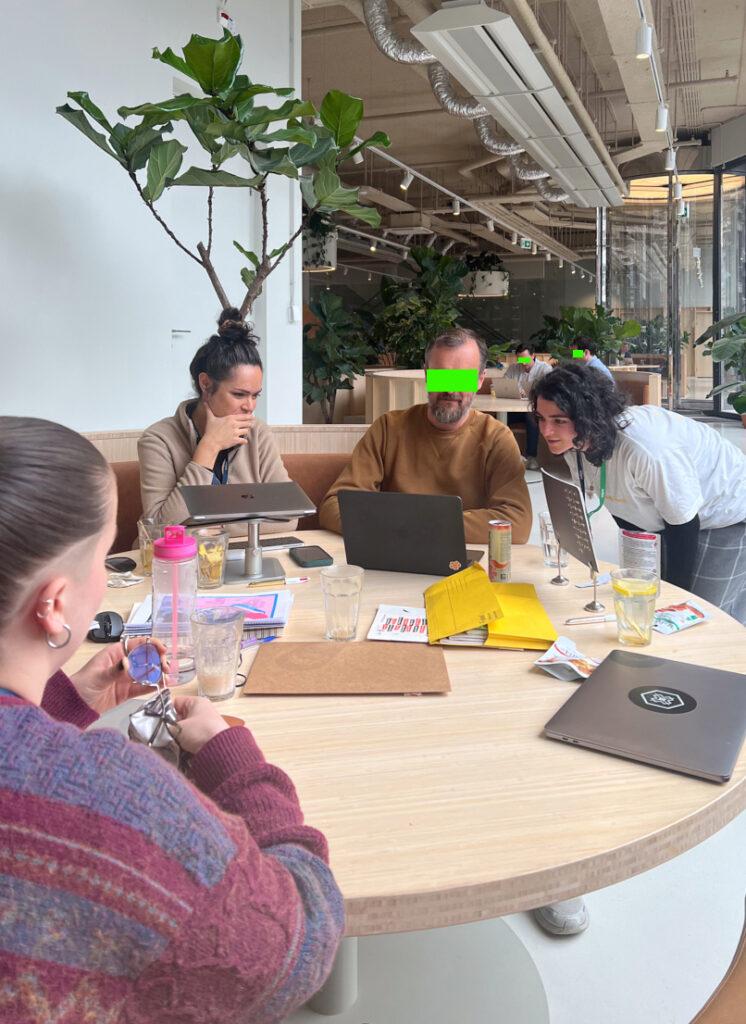

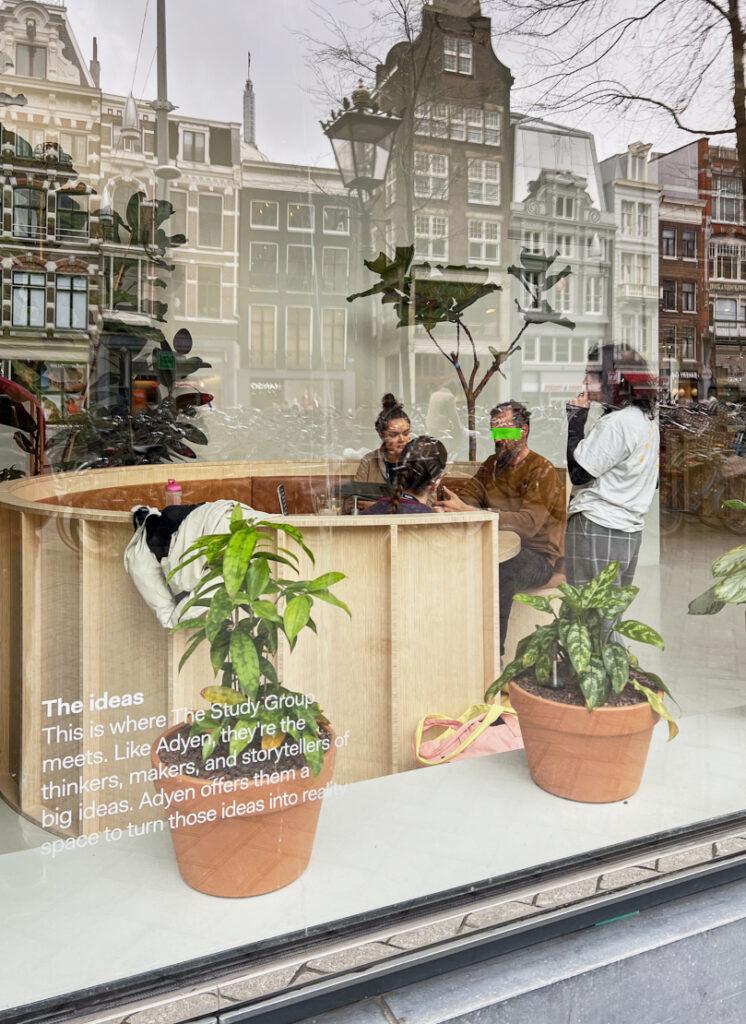

The students were also starting to meet with the ERG members who were part of the podcast, developing a more in-depth understanding about their experiences working in the corporate space.
As the team started to work on the brand ID, we looked into the launch event.
We engaged consultants for the launch of the podcast with a social media and digital strategy and a physical event. Marketing asked to align with us on the release but communication from Adyen N.V. was seemingly more and more sporadic.
It made planning impossible.
Waiting on the budget to finalise post-production was a challenge.
Without clarity on this, the domino effect was that we couldn’t set release dates for social or digital nor could we book a location for the launch (the event space at Rokin allegedly wasn’t available).
When it was clear that we couldn’t confirm a date or budget, we looked towards our network in the community to see if there was a location that could support our event.
We looked for venues close to Adyen N.V. and were introduced to a private members wellness club in the centre of Amsterdam who showed us around their location. The manager of the Amsterdam chapter was a long-time reader of The Quick + The Brave since the first issue came out in 2020.


They were impressed to hear that a tech company was allegedly giving its support to a grassroots initiative that could have a meaningful impact on the cultural landscape of Amsterdam and beyond.
The team was enthusiastic and ready to go.
All we needed was sign off on our update to the proposal and the budget.
Panic started to set in.
We were having serious concerns.
Once again, I found myself trying to update our accountant.
We started to work with a reputable firm in the financial district of Amsterdam the previous summer to ensure that our finances were well managed. Explaining to them that the program was over five years, they were open to working with us and congratulated us on finding a supposedly innovative partner to support our work.
Their assessment of the situation reflected our concerns.
They couldn’t fathom that a payment platform that we had spoken of so highly was allegedly structurally late with our payments. At this point, we still hadn’t expressed any grievances and put it down to administrative issues.
I couldn’t assume that the accountant would understand why we were dealing with these issues, or why Adyen N.V. wasn’t showing us the same courtesy it supposedly would to its other suppliers.
We were at the end of Q1 and still had no feedback on the revised program proposal or the draft versions of the podcast interviews that were shared with the Design Studio, Marketing and HR.
We flagged up by email, WhatsApp and in meetings with our contacts that the apparent lack of clarity around the budget and timeframe for sign off was causing stumbling blocks.
The community showed us grace when we advocated for Adyen N.V.
We explained that a new team was coming on board to support the program and, as with most large companies, it takes time for departments to align on projects.
They got it.
But they also let us know that they’d set the time aside to work on the project. They were willing to be flexible up to a point, but when it came down to it they’d need to make a call on what work they could prioritise.
We got it.
But it still wasn’t a great feeling.
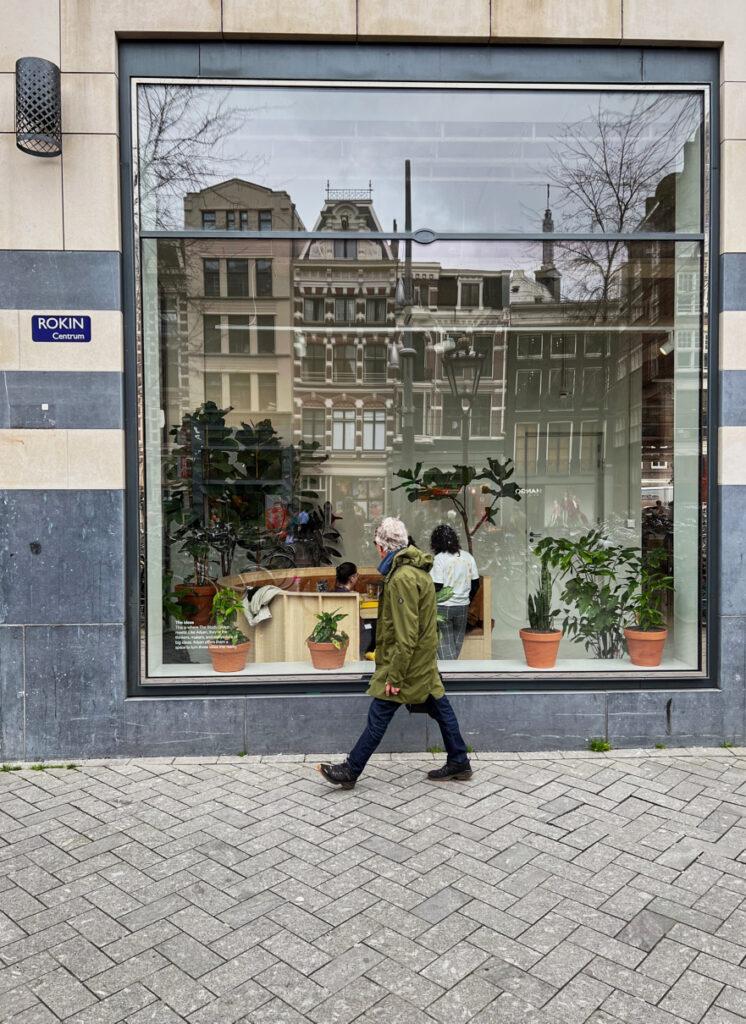
Of course, we were working with a multi-billion euro tech company.
The alleged financial support from Adyen N.V. in year one enabled us to do a lot and we were grateful to get the chance to make such impactful, innovative work – but we weren’t exactly invoicing billions ourselves.
Factoring in that this was a new concept (and as a creative duo there was a lot that we would produce between us) we charged cost price.
Proving the validity of the concept mattered for the long term of the program – Adyen N.V.’s supposed initial support made it possible for us to do that.

18. The elephant in the room
12 April 2023.
We finally get to present a further revision to our proposal for the second year to members of HR.
The DEI Lead emailed me the morning of the presentation.
They supposedly couldn’t find the link for the proposal sent the week before.
They’d allegedly take a look at the document in the car on their way into the office.
Could I send it over?
I must have come across nervous when we arrived at Oosterdok.
I was.
At 25 weeks pregnant, there was a lot at stake.
We were already demonstrating our value but it seemingly appeared that effort, whether consciously or unconsciously, was being put in to overlook the work being produced by us and our team.
In the lift on the way up to the presentation, our contact made it known that allegedly we shouldn’t worry.
We were supposedly already in the building.
The program was apparently in its second year.
This allegedly wasn’t a cold pitch.
It felt like a cold pitch.
One member of HR left the meeting at half past, they allegedly couldn’t stay for the full hour.
The testimonials from program participants should:
“… move to the front of the presentation, they were really good, that would make it more engaging.”
— HR at Adyen N.V.
The DEI Lead (who joined remote in the end) asked a couple of times if we were working exclusively with Adyen N.V. to develop the program.
Yes, we were.
That was the sum of it.
HR allegedly didn’t seem to understand our ideas. The awareness supposedly wasn’t there to ask us questions to find out the reasoning behind them.
It was disappointing to come back to the team with little to no feedback on the work that we collectively were pushing forward. From the designers to the art directors to the post-production team, they also wanted to know how their work was allegedly seen by Adyen N.V.
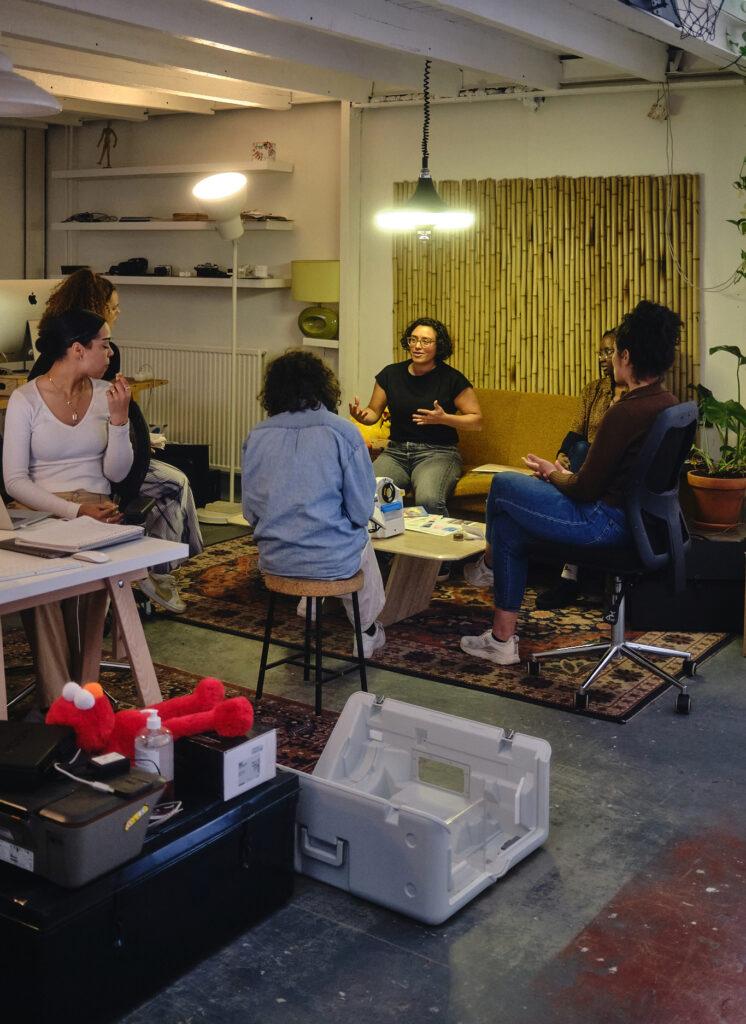
Historically, when it comes to working in the cultural space, it can be challenging to set and maintain a price that appropriately reflects your skills and experience.
Emotional labour comes with this work, a muscle we flex continually over a lifetime translating cultural nuance.
We were doing specialist work with hard to reach talent in the community.
Passion went into every fibre of what we were striving to create with the design and communication program.
When you navigate corporate spaces that use different metrics and measures of success, the burden of justifying the worth and impact of your work is – a lot.
It’s compounded when you navigate these spaces as a professional from a historically excluded background.
The lack of representation in HR departments is no surprise.
It’s the elephant in the room.
Bloomberg’s analysis of the talent pipeline in the UK for the Black British Business Awards highlights that:
- Black, Asian and under-represented ethnic individuals represent more than 20% of the UK’s undergraduate students, but only 10% of entry level employees within six months of graduation, and 5% of senior level positions.
- 25% of HR directors and 36% of D&I (diversity & inclusion) practitioners reported having no Black, Asian or other under-represented ethnic employees on their main board.
- 100% of respondents in both groups reported that Black, Asian and under-represented ethnic employees represent less than 11% of senior executive or leadership teams.
- While 64% of companies have systems in place to capture ethnic background information, only 20% disclose this data and 59% say they either do not use or rarely use the data to inform their employee initiatives.
How are we expected to find advocacy when we’re absent from leadership positions?
How would we justify our strategies to non-racialised decision makers who may lack the cultural experiences inherent with our intersections?
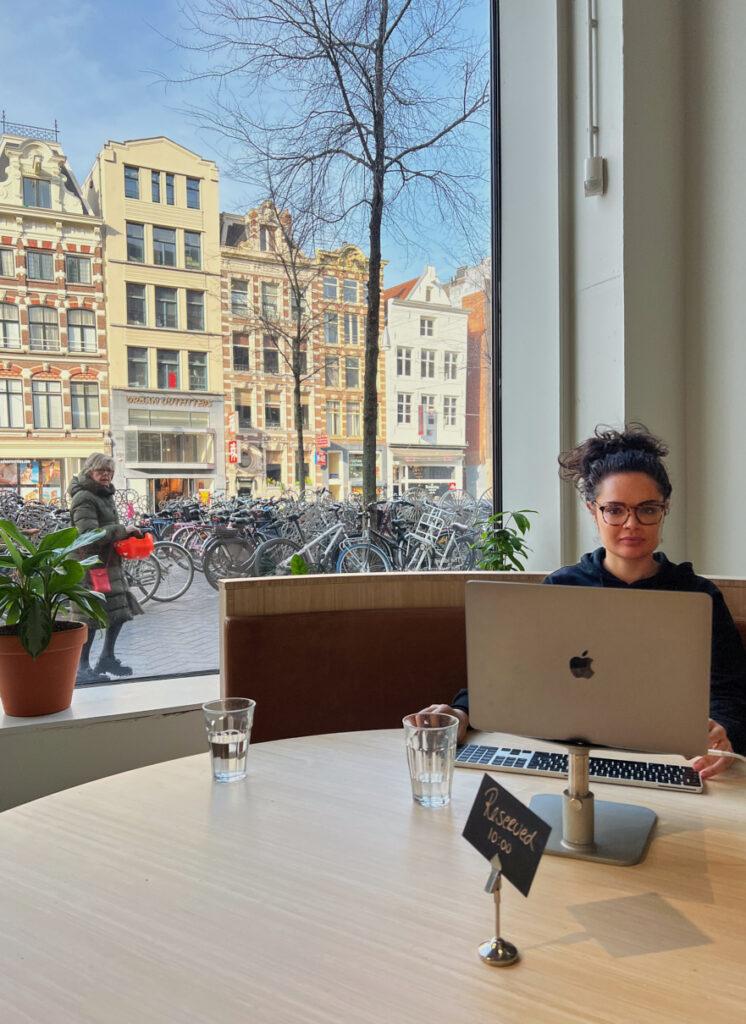
19. Patterns of incivility
When we navigate professional space as people from historically excluded communities, there are unique challenges we face.
I remember hearing about a phenomenon called ‘pet to threat’ early in my career when I was working in PR.
The Black Young Professionals Network describes this as:
“…a phenomenon [that] highlights the subtle yet significant shift in the perception and treatment of women in the workplace. Initially seen as likeable and non-threatening, women may suddenly become viewed as threats when they exhibit assertiveness or ambition.
“Understanding this phenomenon is essential for addressing the biases and double standards that hinder women’s progress and ensuring a more inclusive and equitable work environment for all.”
It was the first time I’d come across vocabulary to articulate what it felt like I was experiencing. Having never spoken to anyone about it before, it was a breath of fresh air.
It was bittersweet to know that I wasn’t alone in this experience.
It wasn’t until adulthood that I took the time to look at my experiences being frozen out.
I wasn’t physically bullied as a kid.
I went to a private girls’ school – the strategies were more psychological.
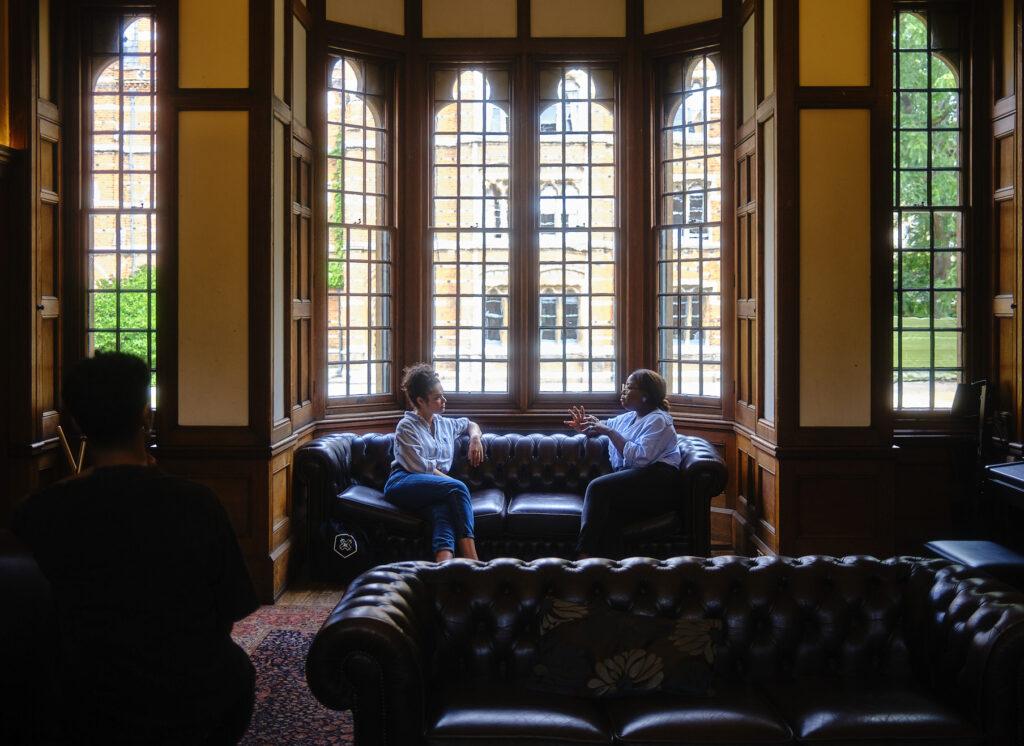
You’d see it all the time.
Now, I have the vocabulary to articulate the experiences of working in professional spaces as a woman of colour. At the time though, terms like ‘pet to threat’, ‘microaggressions’, ‘hypervisibility’ and ‘unconscious bias’ were non-existent or not in circulation outside of academia.
In a year group of 120 students, I was one of around ten BIPOC pupils.
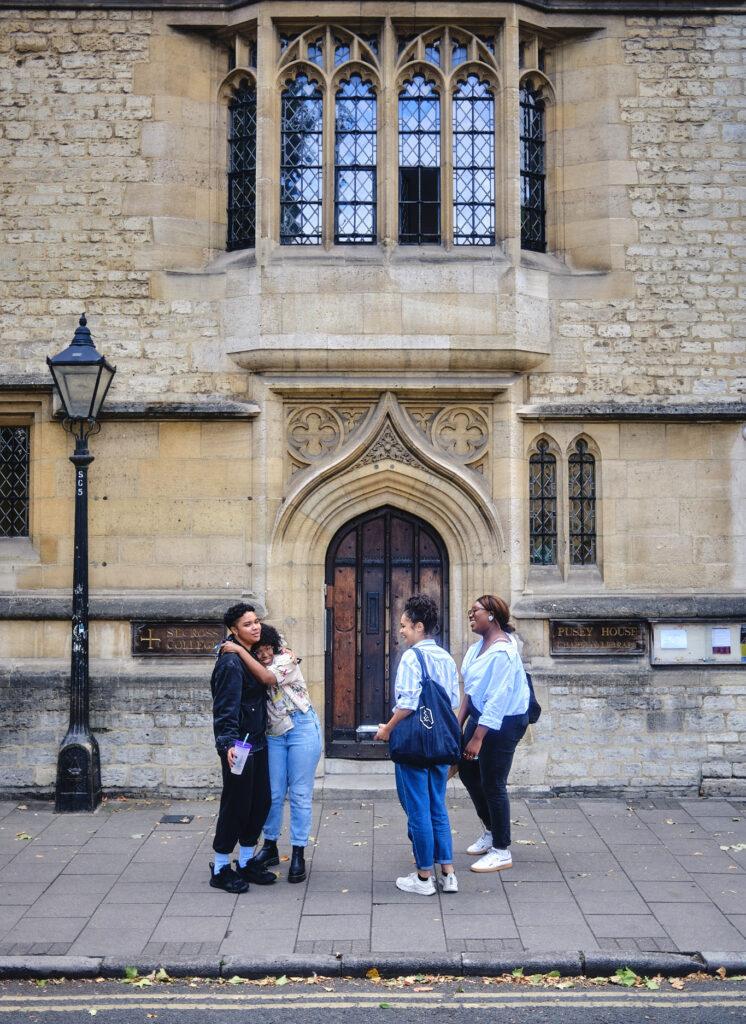
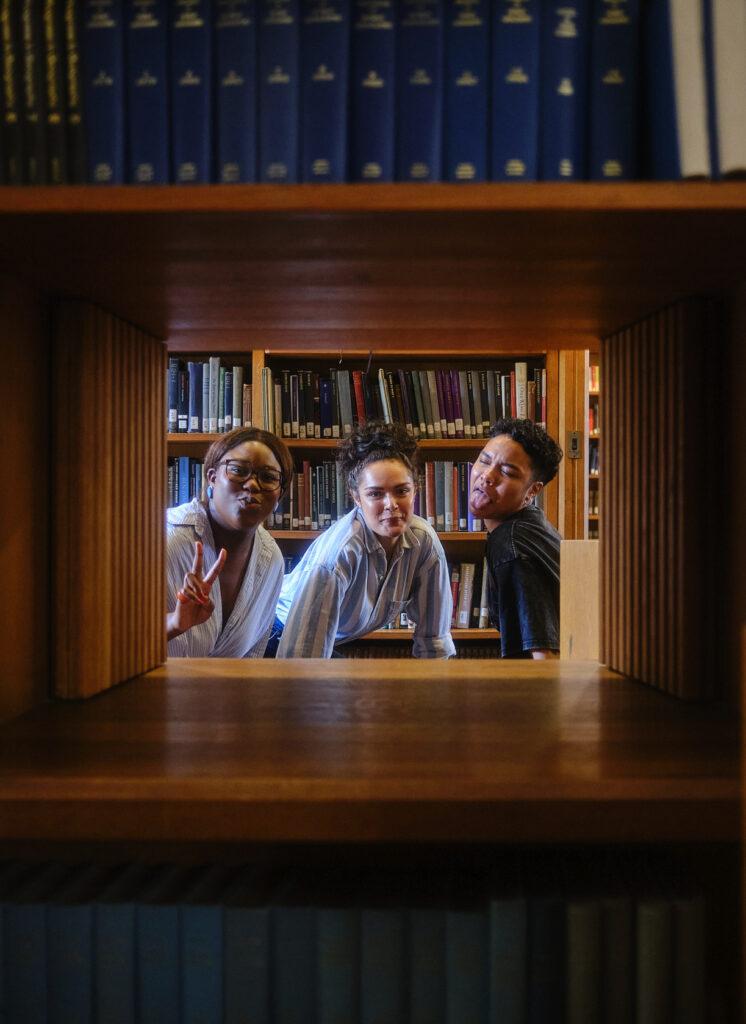
Getting frozen out, with hindsight, was something I experienced regularly since then.
The alleged patterns of behaviour we were seeing with HR were unfortunately very familiar.
Well into Q2, we were still no closer to getting clarity and were exhausted from revising ideas over and over without input from the team we were allegedly requested to align with.

The goal posts seemingly kept shifting.
Communication from Adyen N.V. became seemingly more challenging.
On the one hand, we allegedly had an ally trying and willing to put the work in and learn along with us in real time. While our main contact had a senior role, there were allegedly still limitations – we were informed that he needed to get support from decision makers.
On the other hand, the department that we were instructed to work more closely with allegedly wasn’t engaging us, whatever approach or solutions we put forward.
The ideas that HR allegedly expressed some interest in were developed off our own initiative as the program evolved and based on research conducted with the community.
Ideas like our community fridge to help address food poverty in the south east of the city.
This was exhibited at the expo for the first time and is part of the wider mini maatje initiative with The Black Archives. Other community leaders from the Bijlmer enthusiastically offered to support the project however necessary.
The fridge is illustrated by a graphic designer from the Bijlmer who’s family is active in urban farming programs for local residents.

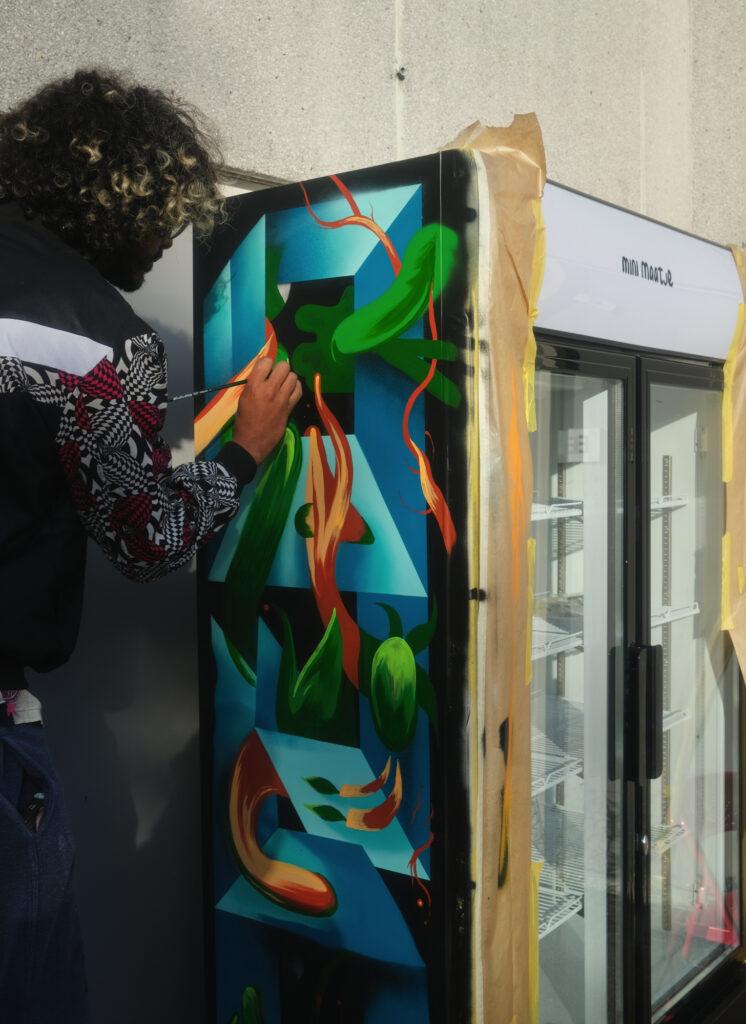
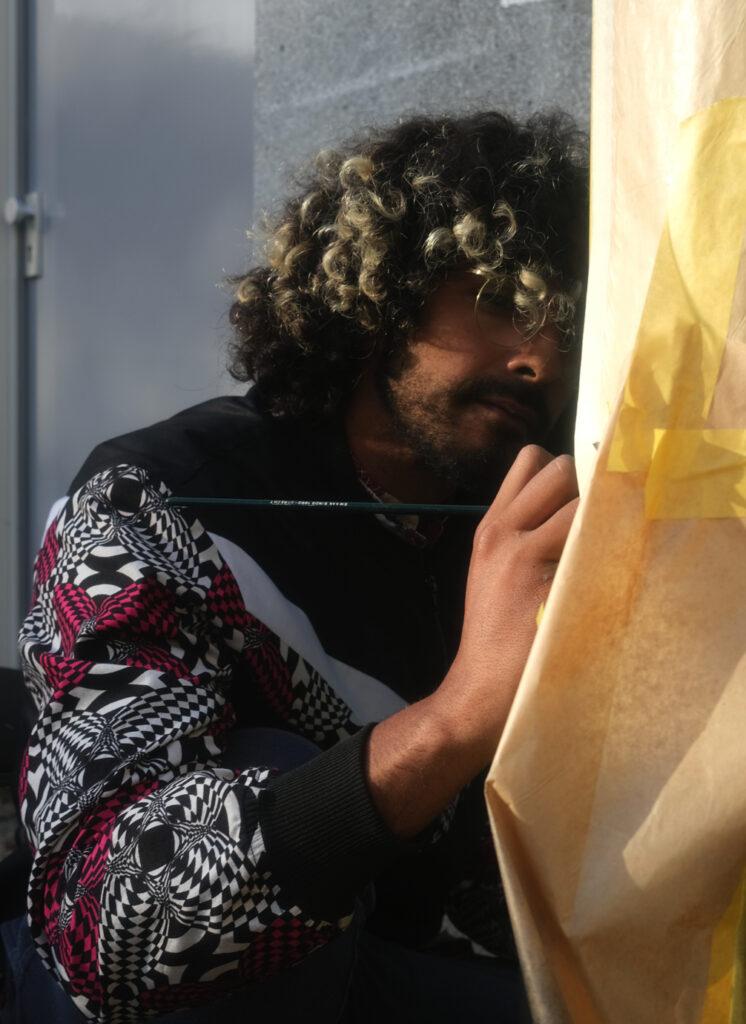
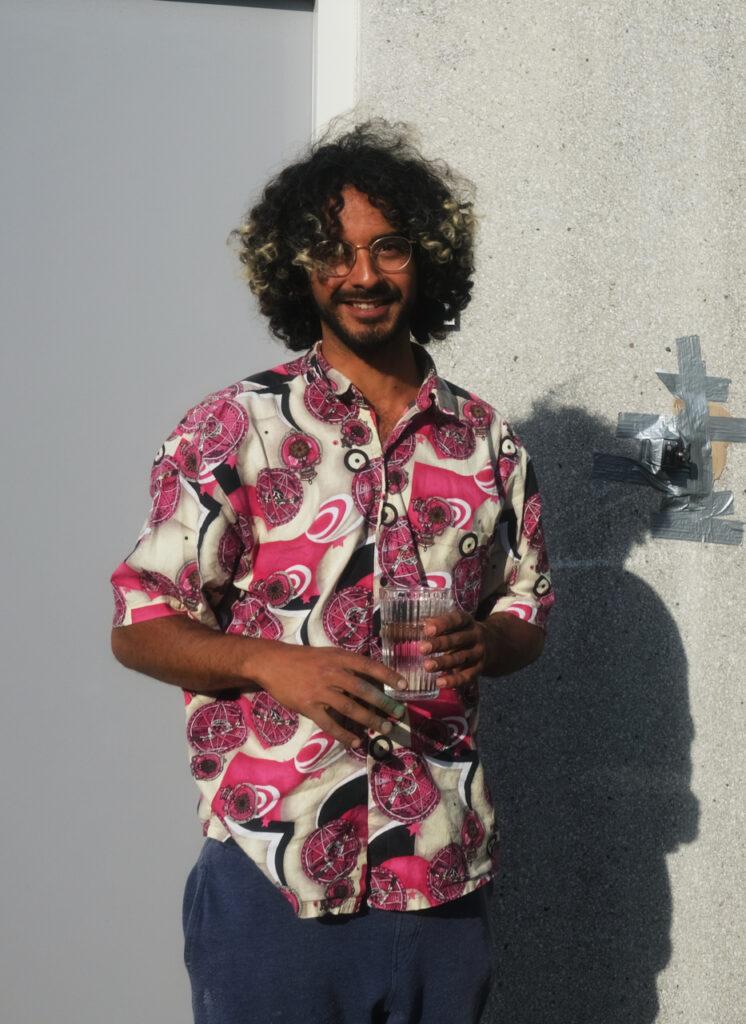
From a social impact perspective, it’s the first BIPOC-owned and managed community fridge in the Netherlands, aimed at serving the needs of a neighbourhood dealing with the repercussions of gentrification. It provides a resource for locals to pick up free produce as well as a delivery service of free produce for vulnerable people and families in the area struggling to make ends meet trying to keep up with increasing inflation.
From the program perspective, it had the potential to provide product design opportunities for mentees to create food packaging, printed on the RISO in our studio.

These ideas developed by The Study Group were built without a pre-existing infrastructure and reflected the importance and potential that resides in autonomy, one of the program’s key pillars.
These ideas would not have come around without creative development and input from the community.
HR was allegedly cherry picking what they wanted from us without considering or asking how the concepts came about, or what community impact they could have. There was allegedly no guidance on how the ideas HR was happy to go ahead might supposedly contribute to Adyen N.V.’s wider DEI goals.
While we were being encouraged to share our best ideas, HR was seemingly holding its cards close to its chest.
Decisions were allegedly being made on our behalf without us being consulted.
We were allegedly being critiqued by people who seemingly didn’t have experience working with our communities and seemingly didn’t demonstrate the awareness or willingness to learn about the needs of the professionals and creatives from historically excluded backgrounds.
Allegedly not being included in decisions about the program we had conceptualised and brought to Adyen N.V. to develop was unsettling.
These alleged decisions were seemingly made without consideration of the alleged lack of structure, communication, executional support, finance and overall awareness about the impact of the program on people’s lives.
The supposed freeze out had begun.
We were exhausting ways to communicate what we needed.
It was unfair that, having allegedly been invited into the company to do this specialised and culturally sensitive work, we’d have to expel so much energy and time to seemingly be heard.
It was really uncomfortable trying to advocate for and represent the community in this environment. We were having to justify ideas to a room of non-racialised people who allegedly saw the program as a passing trend; when for us – for the community – this was a once in a lifetime moment to have access to opportunities that we usually get passed over for.
Our emails were supposedly not being acknowledged so when questions started to come in from members of the community, guests on the podcast, ERG members and our own team about the release of the podcast, we had to manage expectations as transparently and clearly as possible based on the supposed feedback we were receiving from the Vice President of Creative.
It was already six months since we’d started production and post-production was well advanced.
Of course, the people who had shown their support wanted to see the results of all this hard work too.
But they were also checking in on us.
We were very quiet on social media and people were concerned. By now we’d shared the news more widely that we were expecting our first child and knew that we were working intently on developing the program.
Were we doing OK?
In all honesty, no.
We were not OK.

We were now living the nightmare that so many in the community dread: being absorbed into a corporation only to find yourself alone without infrastructure, unheard and unpaid.
No contract.
No culture.
No humanity.
Trying to get resolution for our own challenges was only part of it.
We were balancing the hopes and ambitions of a whole community who had taken us at our word that Adyen N.V. allegedly supported the program’s long term goals.
This was still the understanding that we were working with despite the alleged structural delays in Adyen N.V.’s payment of our invoices.
We were aware that talking up about the alleged treatment we were receiving publicly would shatter the hopes of everyone in the community involved on the program. As creatives and professionals from historically excluded communities, this program was built for and with them.
As a team, they are the embodiment of what an inclusive creative community is capable of creating. Gifted people working with intention and wanting to gain access to the opportunities that abound in the tech space to improve their lives and the lives of their families.
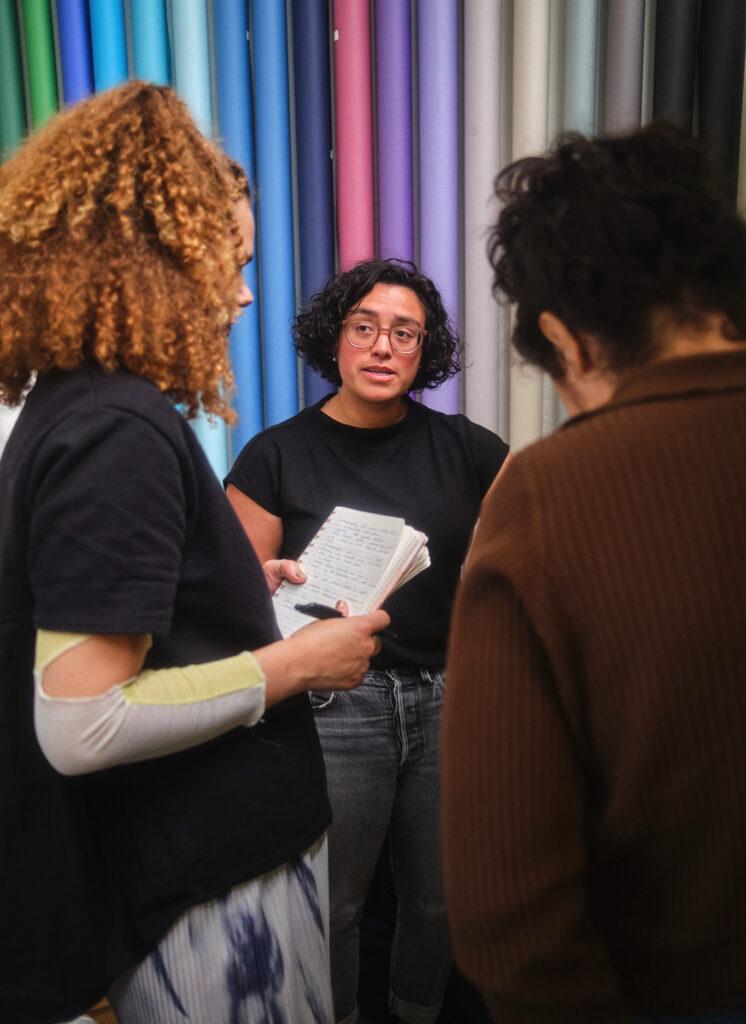
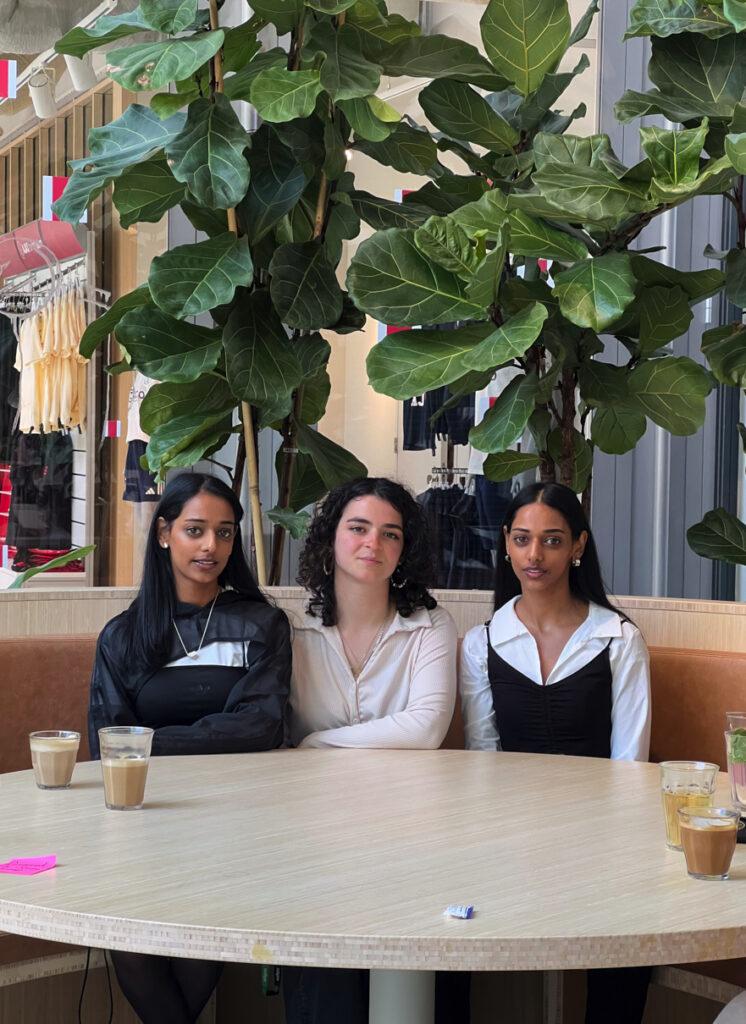
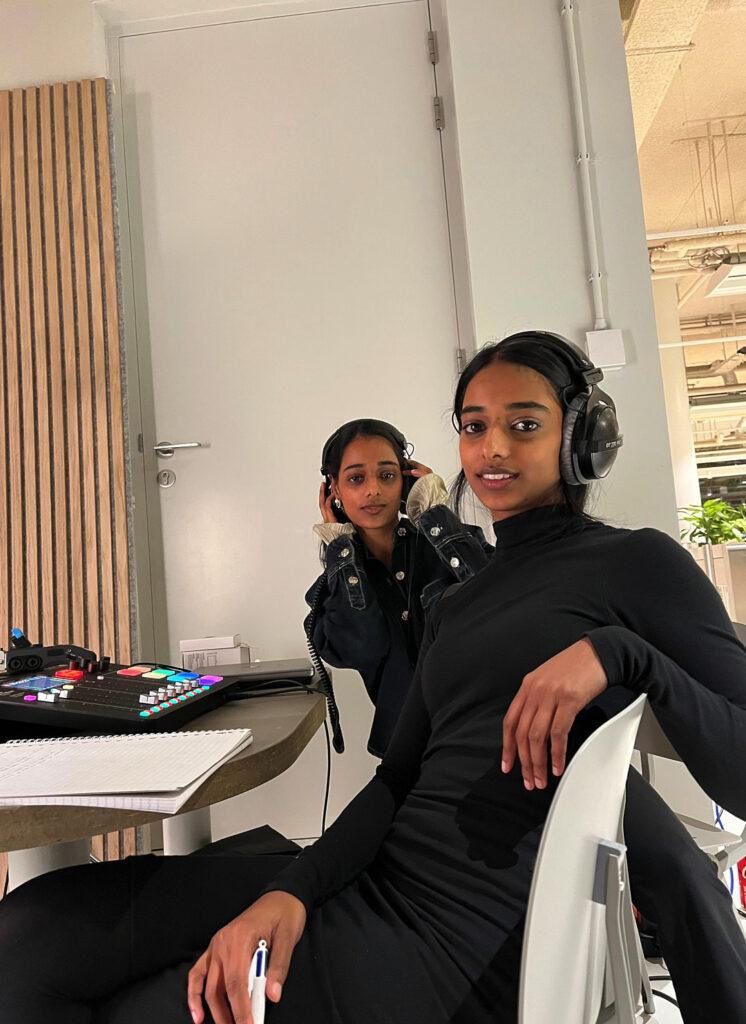
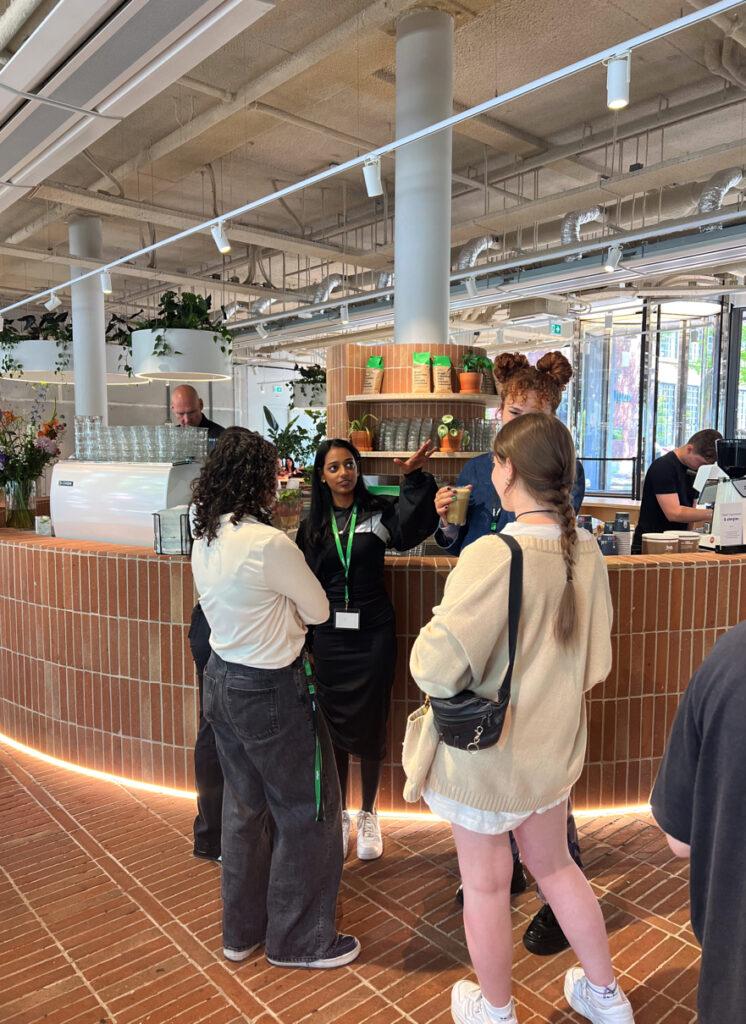
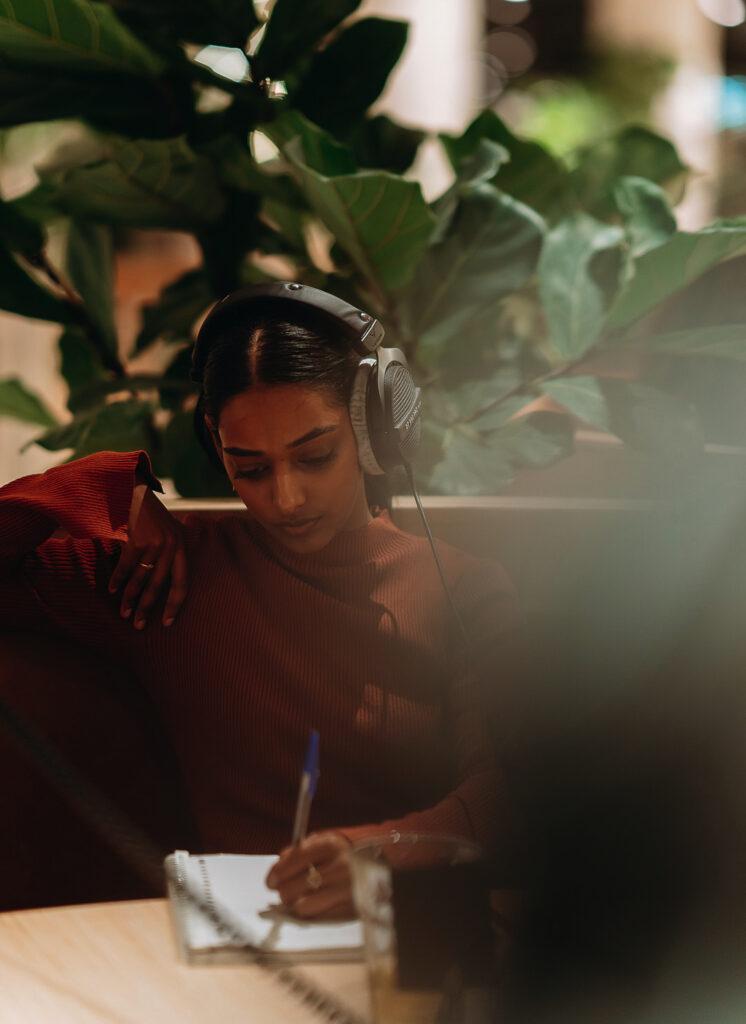
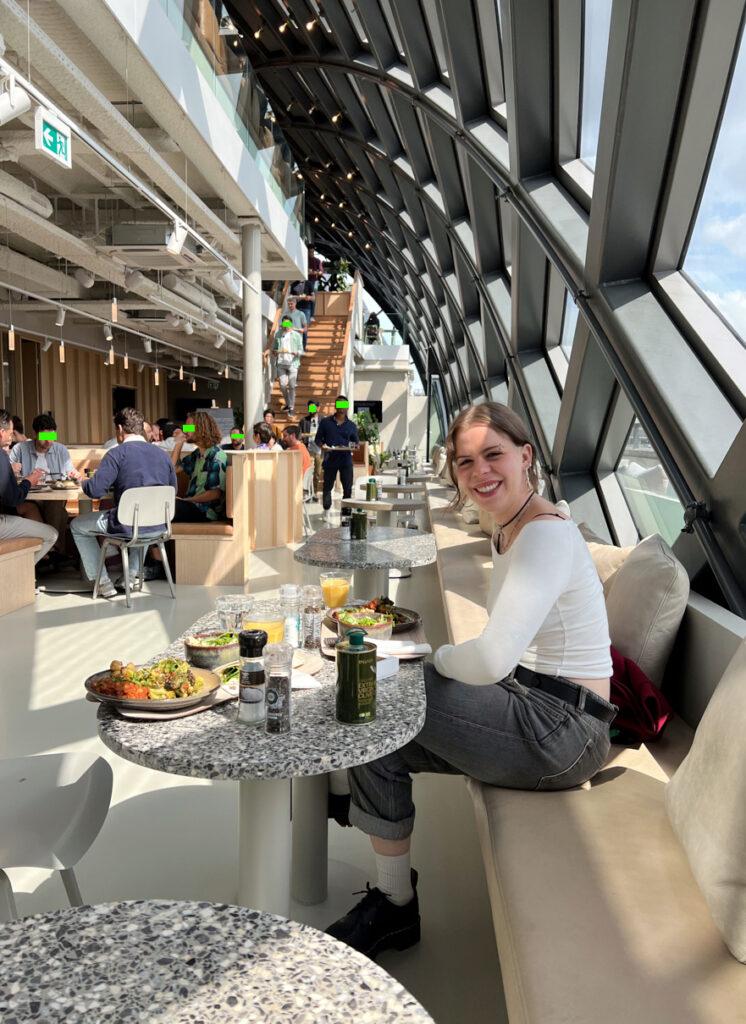
It’s an industry not too many of us have entered into yet, so sharing the alleged reality of what we were dealing with could mean the community would turn away from the tech space.
Who would willingly choose to be in this allegedly impossible situation?
Whatever we’re told, we all like to believe that meritocracy exists – that hard work will be acknowledged and initiative rewarded. We continued to advocate for Adyen N.V. and reiterate that things take time to align in large companies.
What choice did we have?
As far as we saw it, whatever the cause of the delays, this was allegedly an internal issue that Adyen N.V. needed to address and fix itself. It wasn’t our place to bring this to the attention of the community and so we shouldered the responsibility ourselves, trying to keep the team as informed as possible.
Suppliers started to flag up late invoices.
As the weeks went on, we’d have to continue to try and make ourselves heard by Adyen N.V.
I had to ask myself as a 34 year old expectant first time mother – was I on the receiving end of bullying at work?
Were we experiencing the damaging effects of alleged corporate abuse?

In her TedTalk, How to Eliminate Workplace Bullying and Incivility, Forence Bigsby differentiates the impact of bullying and incivility in work practices.
Bigsby cites the prevalence of these in workplaces in the United States:
“30% of the U.S workforce will experience bullying at one point in their career and 19% will be witness to it, meaning that 49% will be affected by bullying.
“98% will be affected by incivility.
“The difference between bullying and incivility is that bullying is repeated targeted behaviour towards a specific individual causing distress while incivility is an overall behaviour that one just exudes that causes distress to those that they interact with.”
— Forence Bigsby
Bigsby identifies three ways that cultural organisations can be safeguarded at a time when workplace incivility is on an upward trend: setting clear rules of engagement from early on; ongoing education and swift action in case of incidences of bullying behaviour.
“Ongoing education [matters] because incivility and bullying is not just yelling and screaming at someone or being physically assaulted.
“There are three tactics that bullies use and those categories are: passive, active and recruiting others.
“Passive actions could be things like not answering communications… it may be also not offering pertinent information that you know is important for someone to do their job effectively.
“Active actions could be gaslighting where a perpetrator keeps a target constantly guessing, questioning their ability to recall the past and their sanity and unable to predict the future. It could also be refusing access to resources such as people, tools or meetings.
“The ways in which others can be recruited is as simple as making a joke in a meeting where everyone’s laughing at your expense and you feel humiliated. It might also be pulling someone aside questioning your competence so that they adopt the perpetrator’s sentiments and start pushing you away.”
— Forence Bigsby
The health impact of the stress caused by these behaviours has been shown to be highly, and in some cases irreversibly, damaging:
“Often we say our people are our greatest assets so it doesn’t make any sense not to protect them because the health implications are enormous.
“They can be physical such as hypertension, chronic fatigue and as visible as skin disorders. It’s psychological causing anxiety, depression and a structural change in the brain itself where the prefrontal cortex shrinks, affecting learning and memory and the amygdala enlarges making us more reactive to stressors.
“We become more avoidant of collaboration and risk-taking or we start overthinking and exhibit behaviour such as spending hours crafting the perfect email to elicit a better response – if not a more predictable one.”
— Forence Bigsby
A couple of weeks after the presentation, I got a phone call from our contact.
Having been told back in January to present our “biggest and best idea for a multi-year plan”, we did just that.
It was an ambitious idea.
The usually enthusiastic tone had taken a turn.
“We can’t pay for your [REDACTED]!
This is the most we’ve ever spent on DEI!”
— Vice President of Creative at Adyen N.V.
I felt dizzy.
Why were we allegedly being told this?
It’s none of our concern as a contractor whether the client has or hasn’t allegedly spent a budget before on other projects.
This was the work that we had allegedly been commissioned to do and we were simply requesting fair payment for that work.
As contractors of colour, it seemed that our autonomy was causing alleged glitches in the system.
One has to ask, how much could the multi billion tech company have spent on DEI to date?
A Master’s thesis by Tom van Oord (Tilburg University, 2020) looking at the DEI practices of Dutch and UK companies indicated that:
“Adyen N.V. does not have a diversity policy and therefore cannot currently comply with anything. They therefore do not comply with having a policy. They explain that they have no concrete objectives with regard to diversity and tackle this in a broader sense. They do indicate that they will work on such a policy in the future.”
— Tom van Oord, Tilburg University
Until you’re in a place as a company where all your team feel represented, can you ever invest too much in DEI?
And surely, if this was allegedly the most that the company had ever spent on a cultural initiative, wouldn’t Adyen N.V. supposedly want to see a return on its investment?
Why prevent these innovative, engaging and honest conversations crafted by an intersectional team from seeing the light of day?
Why the blocks?
After a year in the building, why was it so seemingly impossible to be welcomed by the DEI team?
As an adult, it can be difficult to admit that you’re being subjected to incivility, all the more so because often when people do come forward about the abuse they’ve endured, they can be the subject of victim blaming.
What do you mean they did this to you?
Did you lead them on?
Look at this mess you got yourself into…
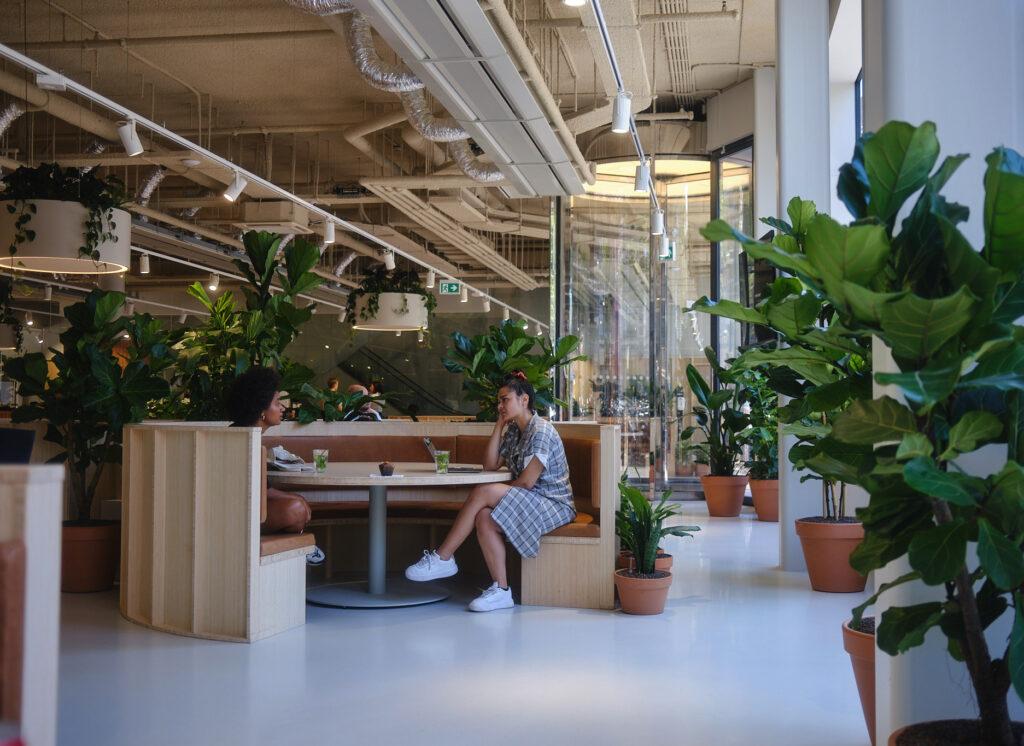
In all honesty, in this whole experience fighting to be recognised for our work was personally humiliating.
Having to ask family and close circle for advice and support with what I was experiencing, was saddening and numbing.
At this point, those closest to us were excited about the program. Family, friends and community members came to the expo in June 2022; they enthusiastically supported and participated in the podcast; they were proud to see us in the building.
Not having heard of Adyen N.V. before, they took an interest in this multi billion tech company that was allegedly supporting the development of our program.
In her piece for The Guardian from 2018, ‘Why we’re psychologically hardwired to blame the victim’, Maia Szalavitz explains why in scenarios of abuse, many people are concerned with maintaining the status quo:
“Despite #MeToo and rising resistance to record inequality, victim-blaming remains a constant undercurrent. Research suggests that this is actually an odd side-effect of the human desire for fairness.
“The ‘just-world bias’ happens because our brains crave predictability, and as such, we tend to blame victims of unfairness rather than reject the comforting worldview suggesting that good will be rewarded and evil punished.”
One way to address this is in the way we use language to reframe these issues and behaviours.
Szalavitz points out that:
“[Studies] compared victim-blaming among people who had been exposed to stories that spotlighted either the perpetrator or the victim. When the language focused on the perpetrator’s actions – victim-blaming decreased.
“Instead of focusing on victims’ behaviour, we need to ask more questions about why perpetrators continue to commit acts of violence, and why some are allowed to take far more than their fair share in a world that most of us would prefer to see as just.”
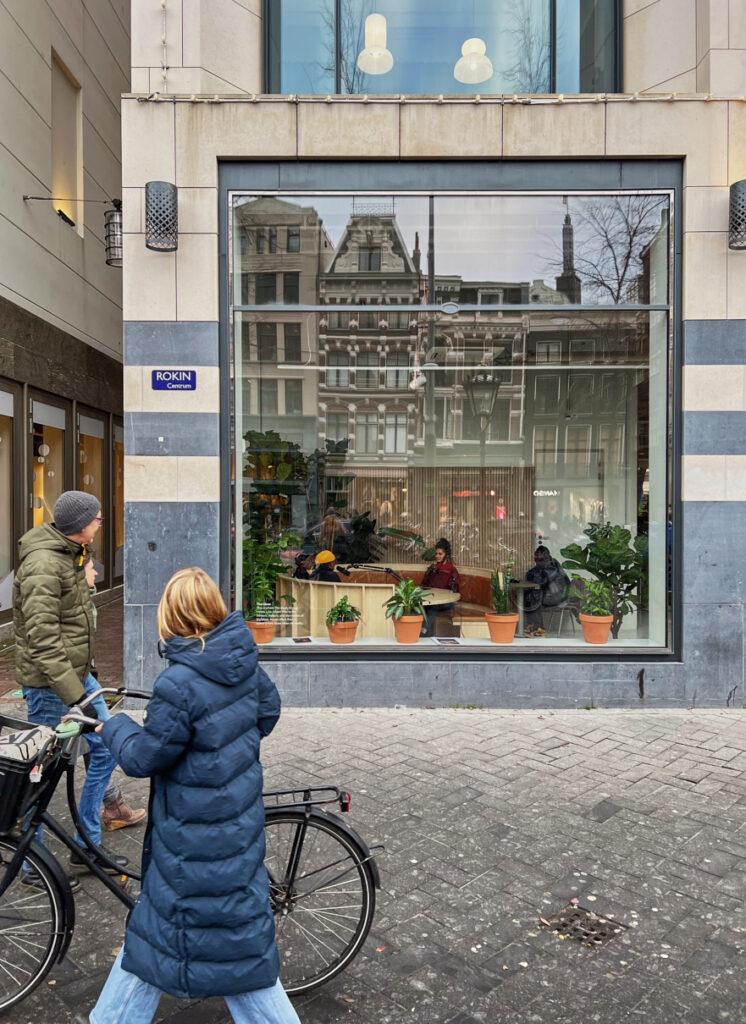
20. Shifting expectations
Earlier the same day that we were told that the program was allegedly the most Adyen N.V. had ever spent on DEI, Obi sent an email outlining the severity of the financial situation we were dealing with and the challenges of managing our team’s expectations with so little communication from Adyen N.V.:
“Without being compensated for our time and ideas, we’ve been in a loop since our meeting in January. Without information that we can use to manage our responsibilities, it’s unfortunately turning into a downward spiral. We don’t want this to fail but this is a reality we face if we’re unable to take action.
“I don’t want to make this over dramatic but we have tried to communicate our financial situation over the past quarter. For a business of our size, every day without payment counts and means us and our team are overextended.
“In the immediate, we do need our overheads to be covered – this is the best way that Adyen can support us right now.
“Because of the scale of this project, all our energy is going into this partnership. I want to feel confident to do this work but my attention is split because things financially have been very uncomfortable for a full quarter. I need assurance and clear answers for myself and to confidently manage the team and not feel like I’m misleading them because they’re putting their faith and time into this too.”
One department within the company was supposedly encouraging us to come into Rokin, bring in our network, share our ideas…
The other was seemingly closing rank, allegedly either determined not to acknowledge us or unaware that they needed to.
We were caught in a difficult place.

Because we lack representation at work, particularly in management positions, professionals from our communities have to advocate for themselves.
It results in being overlooked, overextended, overscrutinised and underpaid.
Gaslighting, the use of psychological methods to make someone question their reasoning or sanity, is something that is an all too common experience for historically excluded people in corporate settings.
As Melia Smith puts it in her account on Community Centric Fundraising:
“Gaslighting is an experience so common to Black and Brown folx in the workplace. We are taught to offer grace to people when they say or do racist things, or when they commit micro- or even macroaggressions against us.
“We are told: ‘They’re a nice person, they didn’t mean it that way. I think you’re being sensitive. It isn’t as serious as you’re making it to be. They had good intentions.’
“Gaslighting extends beyond racist behaviour though. Gaslighting teaches us — and the people who exact this emotional violence against us — that since we can’t be trusted with our experiences about racism, we also can’t be trusted about our own experiences in general.”
— Melia Smith
This was a familiar feeling.
Why was an organisation that had allegedly invited us in giving such conflicting messages?
Why was a program already in development for a year allegedly being stalled?
Why was HR seemingly playing its cards so close to its chest?
We’d have to push ahead to complete the podcast – it was the only way to prove our value and be paid for our work.
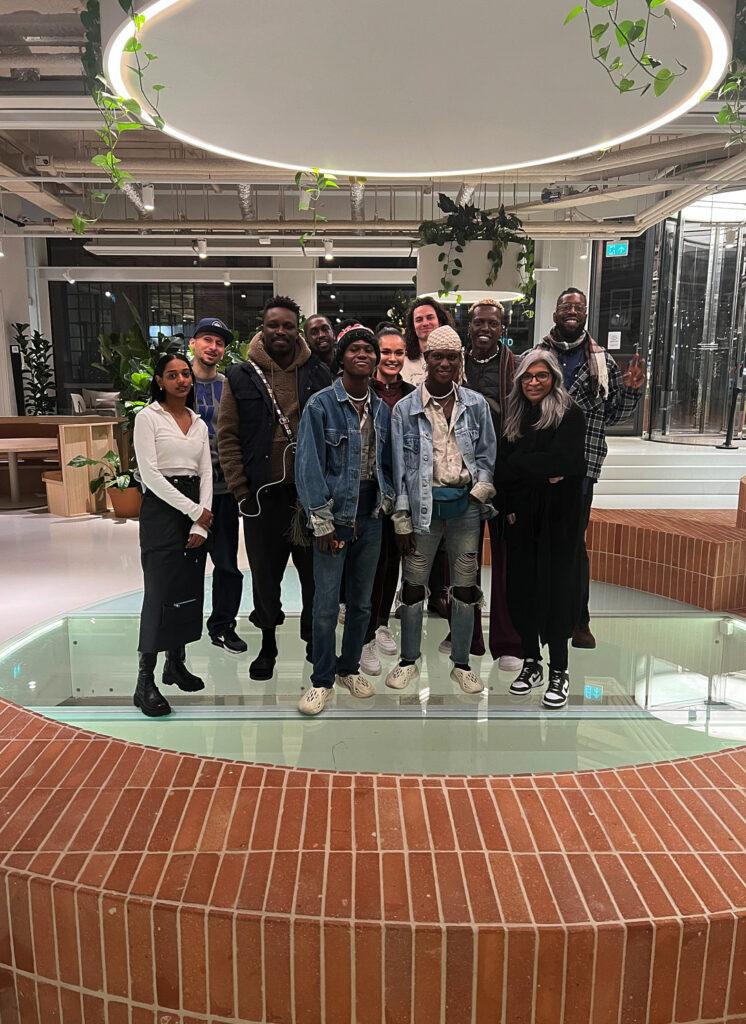
A couple of days after Obi’s message, Adyen N.V. came back on email:
“We are looking to continue to work with you on a project based capacity. This could include:
- 2-3 events (per year) in the Adyen event space, working in collaboration with Adyen wider teams and ERGs
- Podcast support through Adyen office space, including re-evaluation of costs and approach for podcast production
- Loan of Adyen media equipment for projects (currently being built out – hardware, media room for webinars etc)
- Wider business support and mentorship
- Creative projects e.g. 5000 creative books co-branded as Adyen / [BRAND NAME REDACTED] for distribution to new Adyen joiners and at Adyen events
- Community projects e.g. exploring ways to support with the Community Fridge or other community impact initiatives”
This was also perplexing.
Budget wasn’t mentioned at all.
Our ideas were seemingly being repurposed for internal projects.
In theory, an order for 5,000 copies of a book printed in-house at the studio for a client this size would be a big step up. But without specifying a budget we still couldn’t move forward.
It was distressing to learn via email that our five year project was allegedly being adapted without consulting us or giving us reasons for the change.
Obi replied:
“As I’m understanding from this email, [BRAND NAME REDACTED] as a project will not be operating as a 5 year program but instead on a project-by-project basis. Not so much as a Partnership but more as a pitching process?
“Naturally this news is disappointing but the clarity is appreciated because I’ve been working off our original understanding and building a community with that in mind.
“We have been working on this since the start of February – it’s now April 20th, so I would really appreciate it if Adyen can consider paying us something for the work done in this time. If we are able to make some payments happen it will make it a lot easier for these creatives to return back to the project once Adyen has defined the work it needs from us.”
Now in late April, we were still no closer in this supposed re-negotiation of the budget.
21. The voice note
By the start of May, the team was making great progress with the branding for the program as well as post-production on the podcast and title sequence.
Getting clarity on the budget so we could manage our responsibilities and answer the team’s concerns about late payment of invoices was a priority for us.
In emails and in our face-to-face meetings with our contact, we explained the impact the alleged lack of payment by Adyen N.V. was having on team morale and our ability to operate.
To prevent the situation from escalating into a worst case scenario we needed clarity – and payment.
The feedback from Adyen N.V. allegedly remained positive about the work the team was producing; but the silence and secrecy around the budget and what HR seemingly wanted to see from the program was diametrically in opposition to the urgency needed.
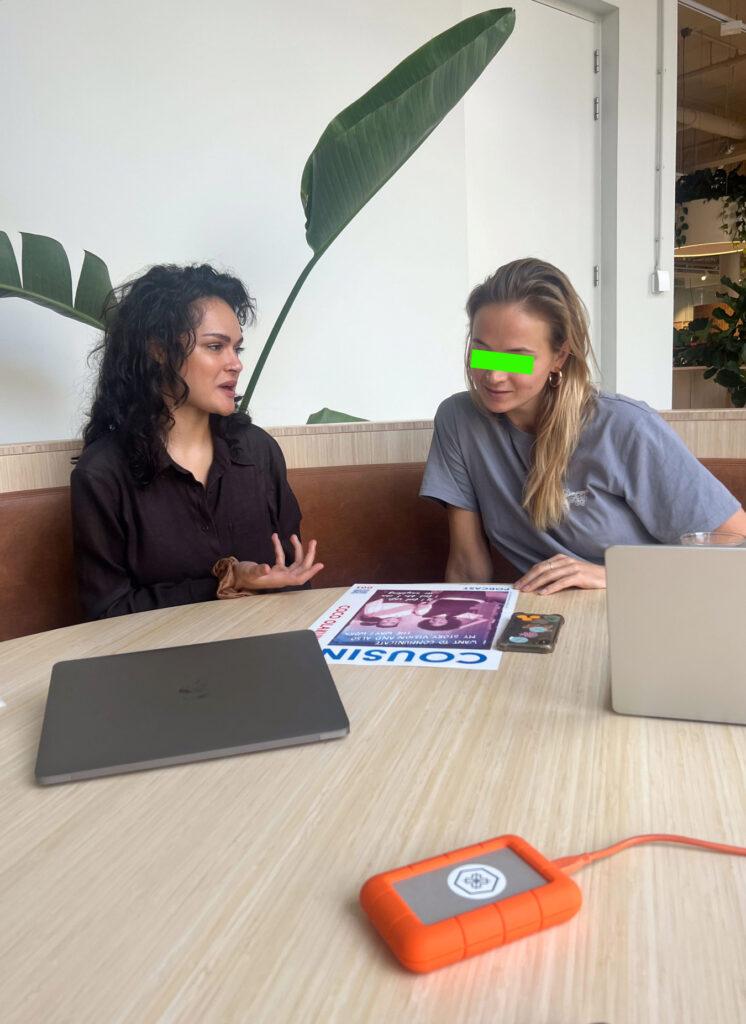

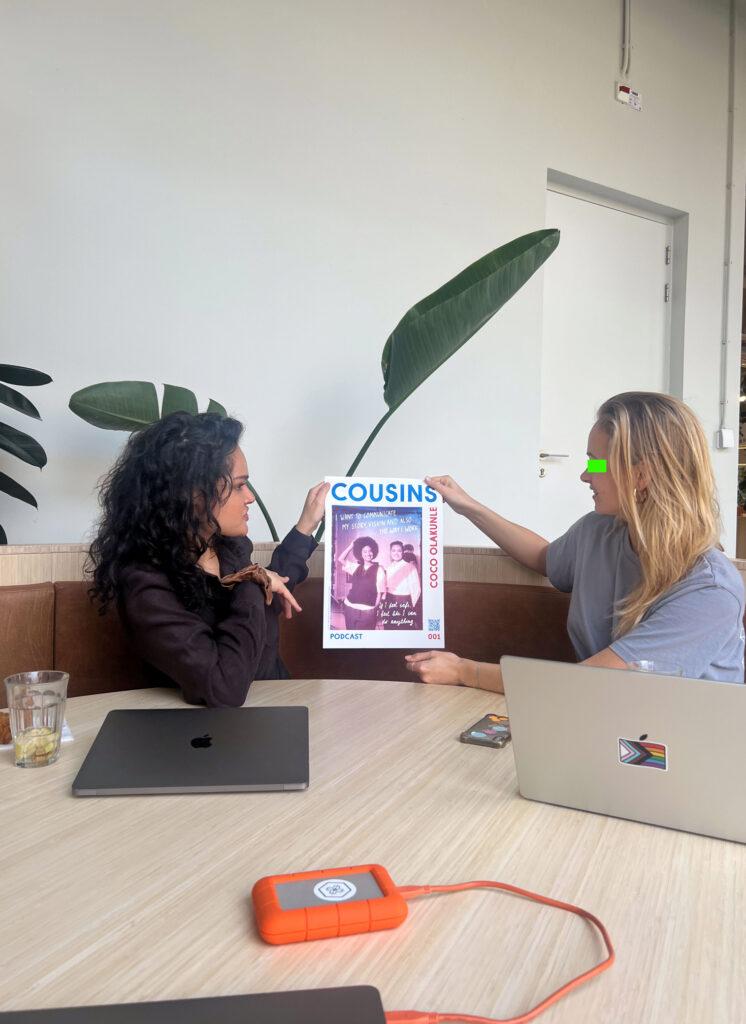

As Obi pointed out in his email, each day without payment for small businesses and freelancers has a domino effect.
It can have a terrifying impact.
While the sticker in the window remained and we continued to come into Rokin, it felt like an out of body experience.
A tokenistic one at that.
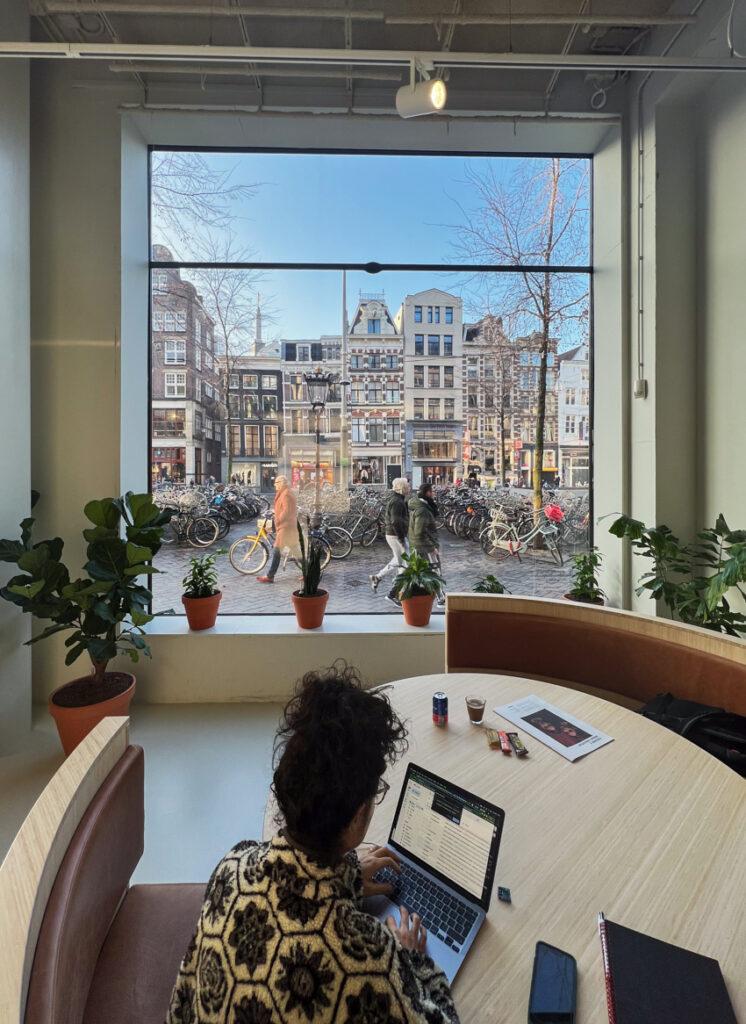
We were coming into the office with the design students, program mentees and freelancers; they met our contact, they were visible in the building, they demonstrated the potential of this innovative, inclusive program.
When the Vice President of Creative allegedly met the video director, the [NATIONALITY REDACTED] parent of two who lives in the Bijlmer, he enthusiastically shook his hand, supposedly saying:
“I love your work, do you freelance or do you work for a company?”
In the moment, what supposedly appeared to be a reassuring gesture from Adyen N.V., masked the fact that the video director’s invoices were allegedly already a month late.
What kind of impact could these kinds of alleged requests and seemingly conflicting messages have on an individual?
Money continued allegedly to be used as a power play.
No culture.
No contract.
No humanity.
In Joanne Simon-Walters’ TEDx Talk, ‘Leadership in eliminating workplace bullying’, the former HR manager points to some of the issues that have given rise to the high levels of bullying at work that go unacknowledged or unchecked:
“The challenge we face is that much of the behaviour that would be classified as bullying rarely ever rises to the level of what our laws would consider illegal harassment.
“What is bullying? My favourite definition is the characterisation by one international workplace bullying expert who says that workplace bullying is a psychological power imbalance that can be equated to domestic violence.
“In one research study, of those workers who reported being bullied, 80% of them also reported suffering from anxiety; 52% from panic attacks; 49% from depression; and 30% from post-traumatic stress disorder.”
— Joanne Simon-Walters
As someone on the receiving end of bullying, there can be a tendency to feel ashamed or minimise what you’re experiencing.
Simon-Walters explains that whether the perpetrator agrees or not that their behaviour is abusive:
“… the physical and psychological impact on me as a person supports my stance that I was bullied because the focus has to be on the impact to the victim, not the intent of the perpetrator.
“It’s about the impact, not the intent.”
— Joanne Simon-Walters
What measures can businesses and institutions take to move towards a higher level of morality in their culture?
How can transformational leadership contribute to resolving these issues?
“The Equal Employment Opportunity Commission [in the US] found that there are two ways to address harassment in the workplace. The first is to evoke a change in company culture. The second is to focus on civility.
“In fact, they say that it’s on all of us to be a part of the fight to stop workplace harassment. We cannot choose to be complacent bystanders and expect our workplaces to change themselves.
“That word “bystander” implies passivity, it implies helplessness. When you choose the role of bystander, you give yourself an excuse for not acting. You are not a bystander at all when you choose not to act; you are a reinforcer.
“You reinforce for the bully that their behaviour is welcome and you allow, through your inaction, a toxic workplace culture to prevail.”
We remained consistent with our explanation to the team but naturally patience was wearing thin.
Five months into the year, how much longer would the team have to deal with these alleged delays in payment?
How much longer would we have to manage the concerns, disappointment and frustrations of a team who had committed to the program but who we weren’t able to fully inform.
Revealing the reality of the alleged bias we were facing could have huge implications for us, the community and Adyen N.V.
Who wants to be the whistleblower?
The risks people face when speaking up about abuse they’ve endured or the consequences of malpractice are well documented.
From #MeToo abuse survivors dragged through the press in the run up to Harvey Weinstein’s conviction to Edward Snowden living his life in secrecy for a decade having leaked information about the National Security Agency and countless others.
These are nightmare situations to endure in the name of truth.
It was (and at the time of writing continues to be) a huge amount of pressure for two people invited into a multi-billion tech company to manage.
We were trying to contain the situation.
We’d been brought in to address the alleged lack of representation in Adyen N.V. because of our experience and expertise in culture. By doing the work to understand Adyen N.V.’s work culture, the program could contribute to finding ways for the Dutch company to supposedly embark on its journey to become more inclusive and diverse.
The process would involve looking at alleged systemic issues within the company and articulating them based on our experiences to date with career.
It’s no exaggeration that this was our life’s work.
Obi and I have had very different levels of access to opportunities and we pour our experiences into the program. We’d both had the chance to work on community focused projects as well as within corporate, agency and freelance roles.
On the more personal side, we have bi-cultural families.
Sometimes we have to have uncomfortable conversations about race, culture, bias and privilege.
As a racially ambiguous woman of colour, the privileges I’ve been afforded by having ‘light skin’ are an uncomfortable truth for that uncle who insists on holding on to outdated perspectives.

It takes time for understanding and awareness to develop once issues are identified and communicated so we know that there aren’t quick fixes to the systemic issues we see in workplaces.
In a time when cancel culture is rampant, one has to consider how change happens and at what pace.
At The Study Group, we don’t believe that progress is made by cancelling people.
While no change happens overnight, cancelling people doesn’t fix things.
It prevents dialogue that can lead to impactful change.
Dialogue gives people the chance to change.
We had no right to assume the worst or demonise the company so if Adyen N.V. needed more time to align, we’d respectfully give the team the space to do that.
At the end of the day, their alleged goals might be more focused on – in no particular order – 1) marketing image and 2) having a culturally diverse workforce.
HR allegedly demonstrated a lack of awareness that the situation needed to be fixed.
But lack of awareness is human.
We can choose to grow from these moments.
Still, the allegedly conflicting messages and seeming lack of communication and clarity about the budget were having a negative impact on our mental health.
Self-doubt creeped in.
Were we doing something wrong?
Had we done something for HR not to want to engage us?
Did I mismanage communication?
I started to blame myself for things that were outside of our control while decisions were allegedly being made about the program without consideration or our input.
While there’s a way to go, when it comes to awareness about mental health at work, huge strides have been made in the past decade.
But as Tom Oxley explains in his TED Talk, ‘Workplace Mental Health – all you need to know (for now)’:
“… we just don’t talk enough about mental health in our workplaces until we’re past breaking point.”
— Tom Oxley
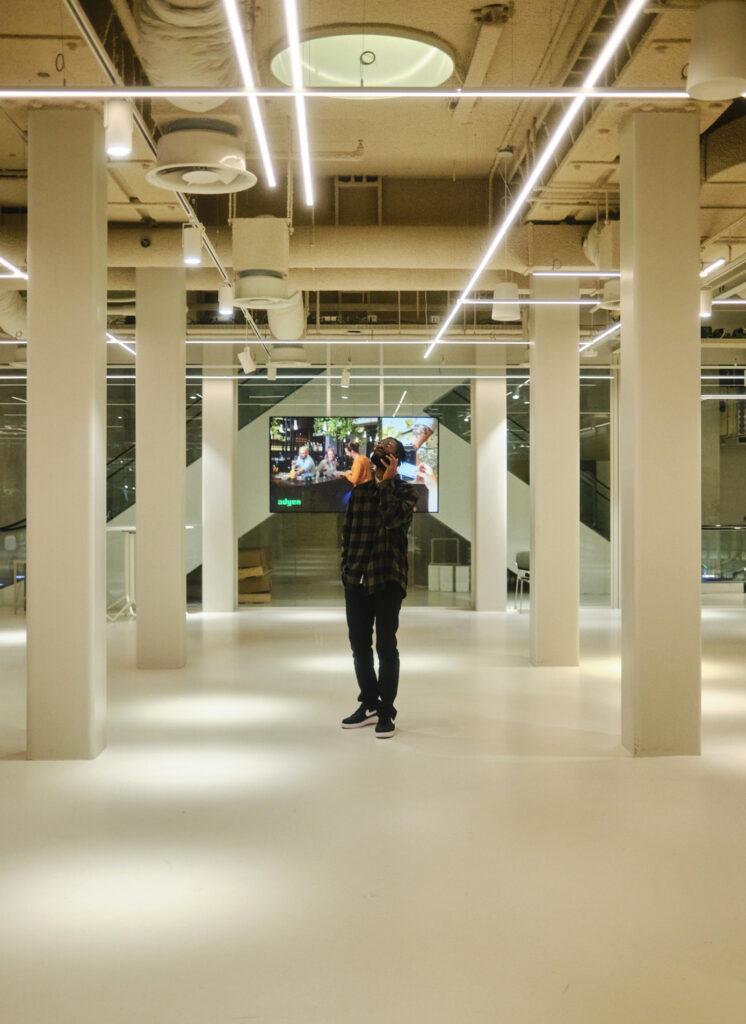
Talking openly about mental health makes us feel vulnerable.
Having had burnout while working full-time for a tech company, I saw how things could spiral. I had well-meaning managers with good intentions and high workloads who didn’t have the bandwidth for much more than 15-30 minute appointments.
On top of that, how could straight, non-racialised men be aware of the issues I was dealing with as a queer woman of colour? Learning how to advocate for myself was a work in progress and unfortunately burnout manifested before support came.
Fortunately as a full-time employee, I was able to get access to company doctors and take paid time off work before ‘reintegrating’ with a steadily increasing number of hours at work over weeks and months until returning to full hours after a doctor’s assessment.
If you’re a small business owner or freelancer though, you must fend for yourself.
Oxley points to the lack of support and training managers get when it comes to supporting their teams and the impact this can have on individuals:
“[Employees] can’t speak up to their manager. The manager doesn’t know how to have a conversation. The employee doesn’t know if the manager is going to support them or stigmatise them or say ‘well we’re all stressed, mate’, or manage them out of the organisation.
“Leaders who talk about mental health universally gain respect. Same with managers. Managers, you need to talk about mental health in the workplace. You need to train managers to spot the signs and the symptoms.
“Know what to say; know when to say it; know when to shut up; know when to listen; know how to have a human conversation.
“Your people don’t need you to throw loads of money at this. What they want from you is your commitment that they can speak safely about mental health.”
— Tom Oxley
The pressure was mounting.
On 2 May, we had another confusing call with HR.
The team allegedly decided that they wanted to work with us to develop elements of the program and start to work on briefs for internal recruitment projects:
- Events
- Second season of the podcast
- Business support and mentorship for us and the program participants
- Internal podcast for new starters at Adyen N.V. to be produced by The Study Group
- Creative books to accompany the internal podcast for new starters at Adyen N.V.
- Community projects such as the community fridge
The Vice President of Creative shared a working document for us and HR to supposedly both contribute to so all parties could allegedly give input on next phases of planning.
It was a strange experience.
Our contact on the one hand seemingly pushed to get support within the company for the program and on the other an apparent continued lack of input, communication or consideration from HR.
And still no mention of budget.
Were we actually losing our minds?
Were we asking too much?

At 27 weeks pregnant, the uncertainty directly impacted what should have been a period of us starting to wind down for maternity leave and setting up a nursery. With no family in the country, we knew that I needed to be careful.
It was a huge amount of pressure for a first-time dad to handle even without the uncertainty and financial strain we were under.
Having seen me go through burnout, Obi identified that he was experiencing symptoms.
Lack of payment meant he wasn’t able to access a diagnosis or treatment from a doctor or therapist.
The only person we could inform was our main contact.
On 8 May, Obi sent him a WhatsApp:
Hi [NAME REDACTED],
I’m not able to make it in today, this weekend I have been sick with stress, I was hoping to be in a better place this morning – but I’m still experiencing this migraine so I need to recover.
I’ve been unsuccessfully trying to keep the team together and keep the Belastingdienst and accountants informed about the project progress and plans for payment.
Last week ended without clear information about how the 2nd year (and originally mentioned 5yr) sponsorship plan would work out. The fallout of this situation has been too much for me to carry. The speed of developments with Adyen have been too slow and it’s causing me to experience the beginnings of burn-out. Not a great position for me to be in professionally, creatively or personally.
I have not worked in tech before and am not used to this way of working. I did have hope that we could bring positive impact to Adyen through a collaboration, but I have to also look realistically at the type of support available to me to run such a program and with that accept that there is only so much I can do.
What I can work on today is responding to your shared document with points/questions for you and the team. Once there’s some clarity and agreements available from your side we should write up an agreement plan for the service work Adyen expects from me (and TSG), the duration of the work, agreed payment and other relevant terms.
From there we should begin working forward. I really like the prospect of working with you and Adyen and developing this program, but I also need assurances and payment since this is work. We’ve mentioned the lack of payment from our last invoice until this month. We mentioned invoices that have arrived from the creative team for the past few months that are resting on my shoulders.
I’ve tried to keep the team inspired and informed – but I’ve now run out of excuses and struggling to find a way to manage the failing enthusiasm of a team who are seeing me struggle to pay myself, let alone them.
I’ll add all my points/questions to the doc by 14.00 today so the team can get back to me when there’s more info from Adyen’s side about if/how we move forward
Hope you understand and sorry for the late message, I was hoping to have felt better this morning but I think it’s important for me to address my mental health in this situation.
— Obi WhatsApp to Vice President of Creative at Adyen N.V.
Our contact got back:
Hi Obi. I am sorry you feel this way. Give me a call when you feel better.
— WhatsApp reply from Vice President of Creative at Adyen N.V. to Obi
How was this best practice?
Where was the empathy?
How was this supportive?
We were communicating as clearly and gracefully as possible to make ourselves understood but the awareness and care we needed seemingly wasn’t available.
Obi saw our contact as a mentor – as someone from a working class background who’d built their creative career through self-initiation, he had more of an understanding of Obi’s journey than most.
In a meeting back in January, he’d allegedly said to me that he believed that:
“… if Obi worked at Adyen N.V., he would be Vice President of whichever department he was part of.”
He was someone to look up to as a parent too having shared his journey balancing family and work with us.
We thought the respect was there but it seems respect can only exist when there’s humanity.
It seems there wasn’t an equal measure of humanity shown to us.
No culture.
No contract.
No humanity.
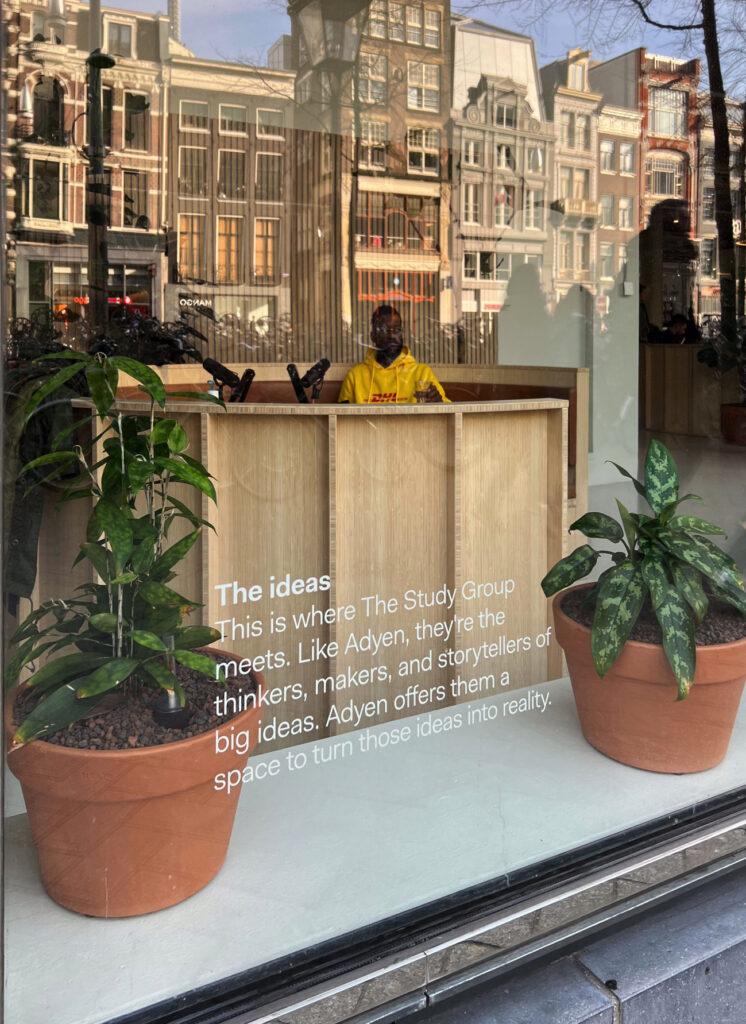

Lost for words at this shocking lack of empathy, over the next two days, I sat and wrote and wrote.
It became the transcript of a 36 minute voice note sent over WhatsApp to our contact.
At 32 weeks pregnant, it was an attempt to fully communicate the impact that alleged inaction around allocating the budget was having on our team, the progress of the program and ourselves professionally and personally.
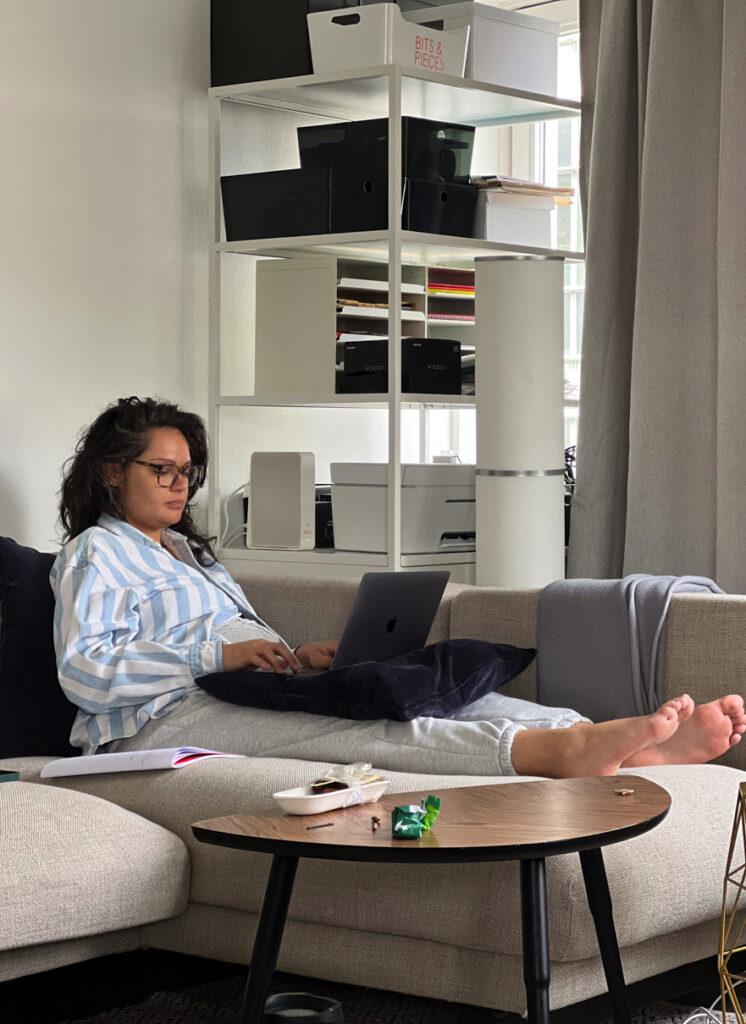
I shared our observations:
Like at most companies we see that lack of diversity is an issue at Adyen N.V.
We’ve had conversations with Black and brown members of Adyen N.V.’s team who are ERG members explain what their experiences have been like when it comes to burnout and feeling supported or seen at work.
During our preliminary research last summer one person shared with us that they’ve left [NAME REDACTED] because it was unsafe for them as a queer person of colour – it was an unwelcoming and dismissive space that lacked awareness about the experiences of BIPOC people.
Unfortunately from personal experience, this is all too familiar.
These were things that we were able to shoulder when we were being paid for our time and work so we could create a positive experience for the mentees and freelancers from the community – but the pressure to shoulder this without being paid by our main sponsor is too much.
You’ve been putting in the time and effort to connect us with other departments but since the additional teams have been involved, your efforts are being dismantled unknowingly or otherwise.
We’re not trying to compete with the teams, the point is that we collaborate with them to enrich diversity in the company – we’d actually like nothing better than to collaborate with them but there’s been no initiative from their side to connect with us – it’s all still come from you.
It’s frustrating for us to see that you’re not being supported in the company with this having done so much of the work to support us so far.
With two more people involved to facilitate things, it’s disheartening to see the project now grinding to a halt. We don’t want the team to see what we’re doing as a threat to the initiatives they’re leading when we want to build with them.
All this to say, we’ve shared our best ideas and concepts with the team [at Adyen N.V.] and in return received no helpful feedback, it seems like our ideas and concepts are being taken and repurposed while at the same time our financial support has been stripped away.
To have a group of non-racialised people decide that we don’t need money to continue with the work we’ve started and are still being encouraged to do is devastating.
It disempowers us because our cash flow has been so severely damaged we need to consider serious actions and consequences for the project.
Being told in our meeting that the budget spent so far on [BRAND NAME REDACTED] is the biggest investment made in DEI is damaging to hear because where does that leave us?
It shows me that Adyen N.V. seriously lacks awareness around what people like me, Obi and the community actually need and that they can cherry pick what support they’re willing to give.
Talking about money in such a flippant way is a power play that’s been used as a reason to undermine the specialised work we do.
There’s no one else in Adyen N.V. doing this internally or as a contractor (at least to my knowledge). We’ve invested a lot of time into building up a program that I’ve not personally seen in any other industry or company in the EU.
— Extract from voice note from Marie-Anne to Vice President of Creative at Adyen N.V.
It was a big message to put together.
We and our team deserved answers and peace of mind.
We shared with Adyen N.V. our concerns about the longevity of the program; the allegedly triggering and passive interactions we’d had with various departments; the seemingly performative route the collaboration was taking; the impact on the program participants and freelancers who we were unable to pay as we continued to wait on the budget five months into the financial year; the potential impact on the design students’ education with the work developed in their year in industry for their final grades potentially being shelved; the effect on our business operations and ability to keep our studio; our hopes to continue the collaboration and release the podcast; having to call on our retired parents to loan us money to tide us over; the impact on my pregnancy.
I didn’t include the most recent news we’d had about the baby.
Earlier that day, we learned he was breech.
The midwife was very concerned that I was working so much. There was a strong possibility that sitting at the laptop and working full time meant that the baby had turned head up to have space.
The situation was a lot of things.
Embarrassing.
Personally hurtful.
Professionally belittling.
Medically compromising.
Finally, gone 5pm on Friday 12 May, we sent the voice note.
The next morning, I got a reply from the Vice President of Creative:
Morning. I managed to listen to your voicemail message. I have reached out to [NAME REDACTED] to help me. I will let you know on Monday what she says.
The email on Monday from our contact (with the HR department in CC) was odd.
Dear Marie-Anne and Obi,
After our recent discussions, it has come to our attention that we may not be fully aligned on the next steps for our collaboration with the Study Group.
At Adyen, we approach projects in an iterative manner, and as we discussed earlier, we are eager to continue working with you on various projects. However, we would like to explore a different approach that we believe will be more scalable for both the Study Group and Adyen.
Our proposed focus entails hosting events in collaboration with Adyen wider teams and ERG, leveraging our business knowledge, facilities, and equipment, and collaborating on campaigns and community projects at Adyen. We are confident that this approach will bring about a wealth of knowledge, inspire meaningful work, and facilitate a stronger network within Adyen for you.
We apologise if this change in approach deviates from your expectations. Nonetheless, we firmly believe that by concentrating on the projects we have identified together in our previous meetings, we can create a significant impact through our collaboration. We remain committed to achieving success together.
To discuss how we can move forward, we suggest meeting over a cup of coffee.
— Email from Adyen N.V. to The Study Group
No alleged acknowledgement of the voice note or its content.
No alleged mention of budget allocation.
22. The budget
The next few weeks were a blur of further proposal revisions and back and forth emails.
We had that cup of coffee with the Vice President of Design and Senior Vice President of HR to discuss the budget.
We explained that our expectation was that the financial support in the second year of the program’s development would be in line with the first year’s budget. That was how the rejected invoice in February had been calculated.
The SVP of HR allegedly had questions.
“We’ve given you a lot of money, how have you spent it?”
On the invoices of the specialist creative and production team working on the podcast, manuscript and brand, in addition to the overheads for our studio representatives of your company allegedly came to visit.
“Why hasn’t the podcast aired yet?”
We’re waiting for payment from Adyen N.V. for work close to completion and the creative team cannot work for free. Draft versions of the podcast were allegedly shared with Adyen N.V. as early as November 2022.
“This is the most we’ve ever spent on DEI.”
Red flag.
This is triggering.
We mentioned in the voice note and in person that this alleged weaponisation of the budget was an approach that could be seen as a power play. Did anyone in Adyen N.V. allegedly take the content of our voice note seriously?
There was no alleged urgency on the part of Adyen N.V.
A week later, I WhatsApped our main contact and shared a clip from the interview at the start of the collaboration.
I was listening back to the interview from last year and wanted to understand if the goals and intentions we talked about are still the case. If so, what can or should we expect from Adyen N.V?
I want to see things progress but I’m concerned that the sign off process has stalled
Tomorrow it’ll be a week since sending the revised proposal. I’m no closer to knowing if [BRAND NAME REDACTED] will continue into its second year and it doesn’t feel great ???
— WhatsApp from Marie-Anne to Vice President of Creative at Adyen N.V.
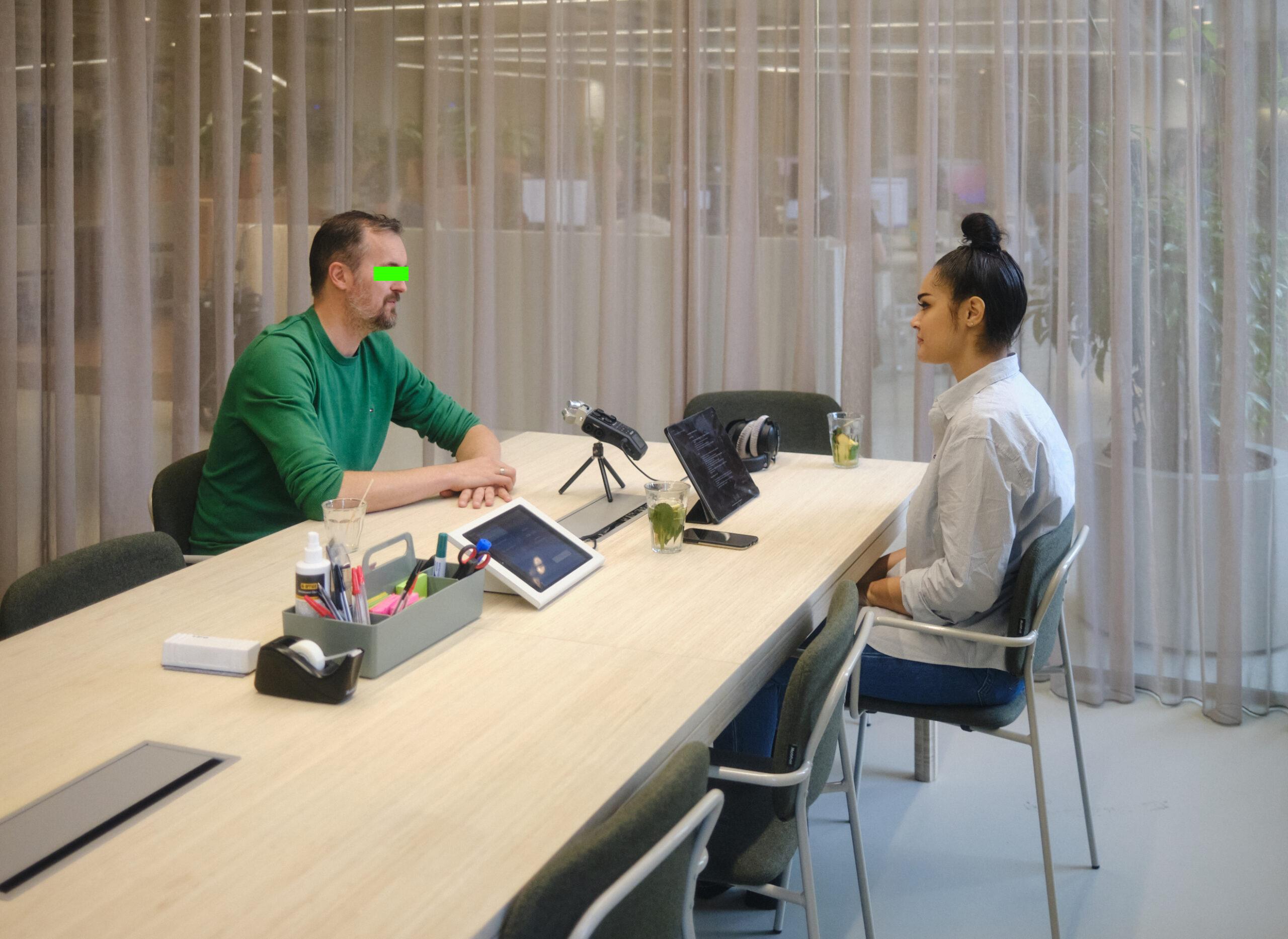
He replied:
This indeed takes long. I already asked for an update. So let me do that again.
— WhatsApp reply from Vice President of Creative at Adyen N.V. to Marie-Anne
In the meantime, we continued to work alongside the designers and post-production team.
The brand identity and logo for the program were finished and we were proud to see the results of their work. They also shared the progress made on the Workbook.
Feedback from Adyen N.V.’s Design Studio was allegedly as positive as ever.
The designer studying at the London College of Communication was due to head back to the UK so we organised a team dinner to thank her for working with us and to wish her safe travels home.
On June 8, we arranged to cook dinner for the team.
The mentees joined, as did one of the guests interviewed on the podcast.
On the way to the meal, the Senior Vice President of HR emailed about the alleged budget:
Hi both,
Thank you for the overview.
We have discussed this internally and the maximum budget we can free up for this partnership is [AMOUNT REDACTED] EUR (incl. taxes) in total.
This is already the highest budget we have spend on a partnership.
We’d love to hear what we can achieve together – considering this budget.
If this means we need to reprioritise the projects, let’s have that discussion then together with [NAME REDACTED].
Looking forward to your reply.
Earth shattering.
An alleged 70% budget reduction in the second year of the program, made known to us halfway through the year.
As we cooked dinner with the young creatives, we held it together.
We were spending the evening with the people who made the program what it was and gave it purpose while we had to hold the knowledge that the efforts they had put into the program may allegedly be disassembled.
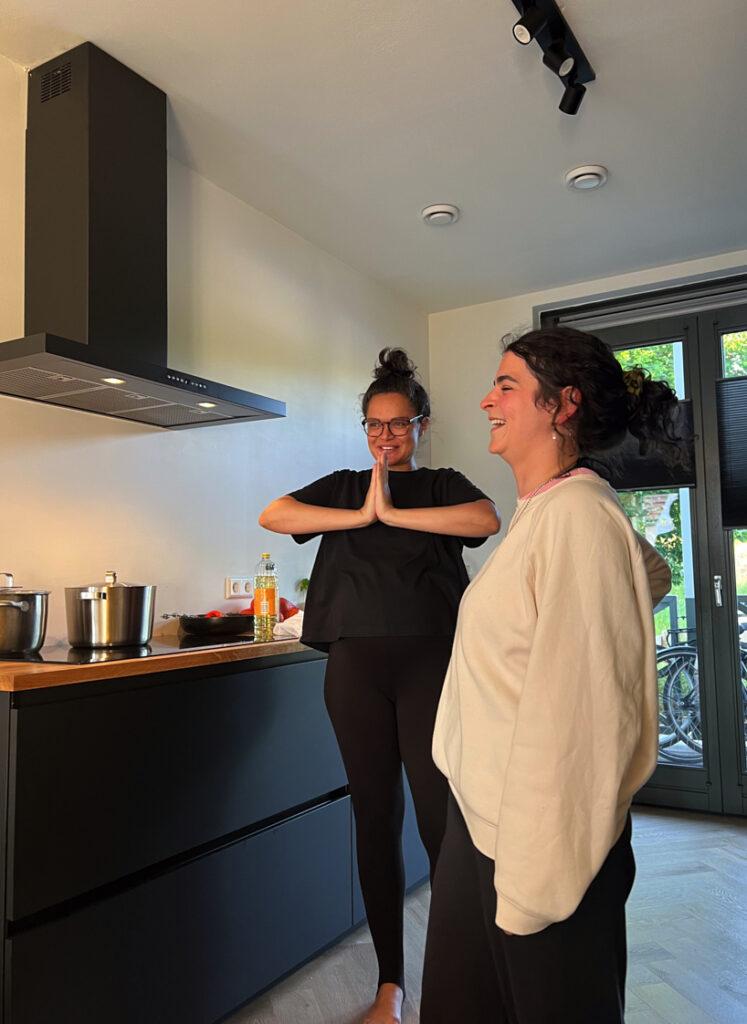

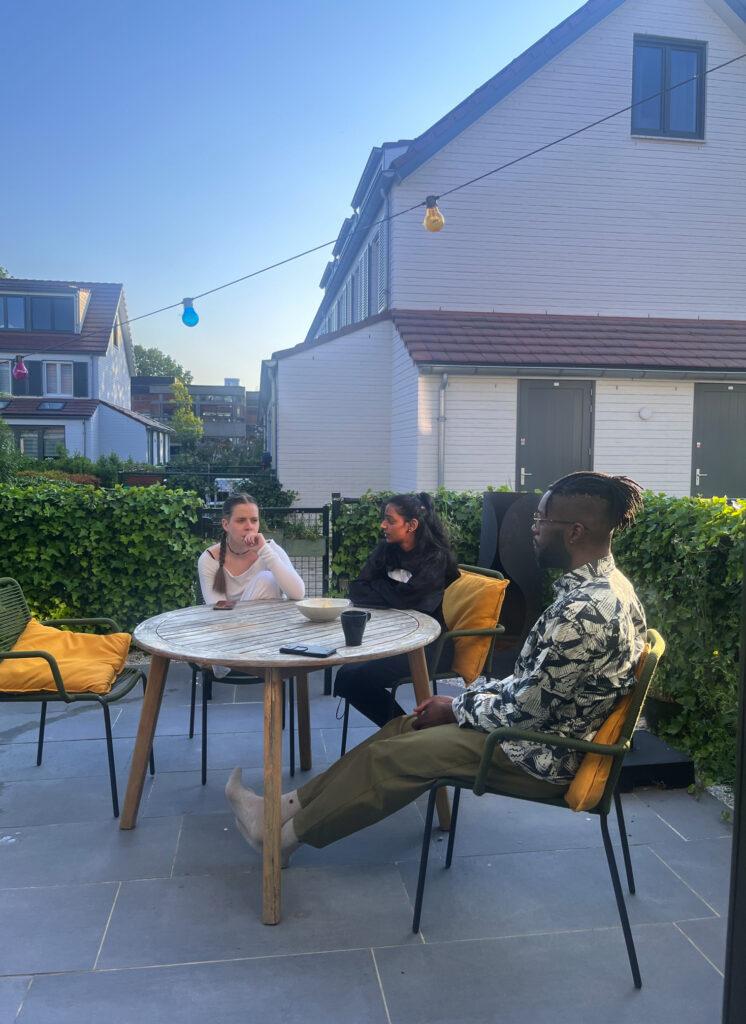




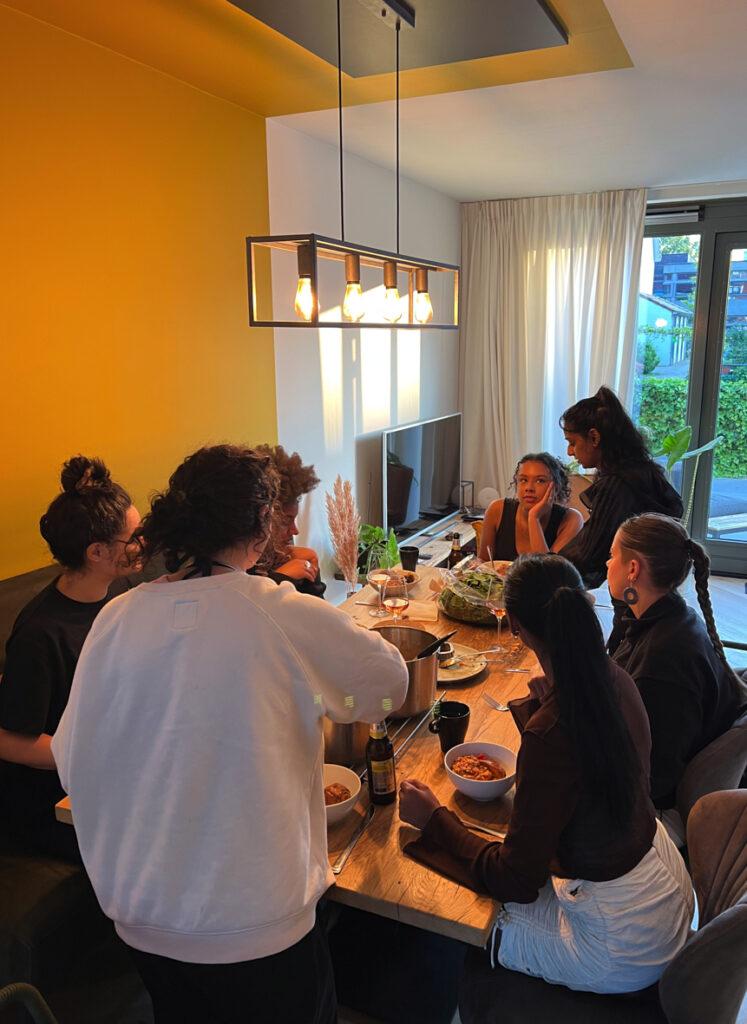
Trying to stay present was a challenge.
Questions abounded for us.
What on earth were we meant to do about this?
How far would we have to stretch this money?
Why did it take so long for this decision to be made?
Why weren’t we consulted once as the creators and Program Directors of the initiative?
We were in no position to ask for more and didn’t know what rights we had.
Money was once again being used as a power play.
It was disheartening to know that we would allegedly be treated so unprofessionally after being invited in to do specialised and sensitive cultural work.
Wasn’t this the same company who had allegedly reached out to editors of Wall Street Journal, Time magazine and the Volkskrant?
Would they have had to exert this much energy to be recognised if they had replied to the Vice President of Creative instead of me?
A couple of days after submitting our first invoice since November 2022, we received the following email from a member of the creative team.
Frustrated by the late payment of their invoice, they made their feelings known.
Who could blame them?
It deeply saddened us that the team was dealing with the consequences of these delays too.
Not being in a position to be fully transparent with the team about the alleged causes of the late payments, they’d reached their own conclusions:
I have been patient with you shitting all over my work and my time, but at this point I have lost all my trust. I have no guarantee that you’ll keep your promise.
I do not agree with you paying me by the end of the month. The money needs to be in my account [DATE REDACTED] tops, or I’m gonna have to take some extreme measures like extra costs for [NAME REDACTED], or even go to the investor directly.
I hope you know I was excited for this project. So excited that I went ahead and started working on it. I made your deadlines my priority but you did not prioritise my paycheck. I actually denied other jobs because you keep pushing back the deadlines and claimed my time. I run a one man show, and one man has to pay for stuff too. If I don’t pay rent this month I’m on the street since the money should’ve arrived at least 2 months ago.
The only reasoning I get for this is that you guys are just “very busy”.
What saddens me most…. I would’ve liked this to be a seamless experience between Black owned businesses. You violated this with a lack of communication, transparency, constructive feedback, respect and payment.
I would like to know from you what you would’ve done if you were in my shoes.
Because if this is how you treat a down payment. I’m scared to know what happens when you have the deliverables and it’s time to pay the final invoice.
— Email from creative on [BRAND NAME REDACTED] team to Obi
Obi came back to him the next day with Adyen N.V. in BCC.
At least now we could let him know the invoice was in process.
Thank you for taking the time to share your thoughts and concerns on the project. You have every right to feel as you do and I am sorry to have let you down in this period. I hope this damage can be restored.
When we began discussing this year’s program with the sponsor (back in February) we envisioned it to be up-and- running by the start of Spring.
Unfortunately there have been a number of surprise changes introduced by the sponsor that have resulted in a series of delays to the program which have been outside of our control.
Similar to you, this extreme delay has resulted in severe issues in our work and personal lives. I mention this because I understand how you feel and don’t want to give you the impression that we don’t value you or that you’re the only person waiting on answers.
We began this program to create a sustainable and practical bridge to enable companies like Adyen N.V. to discover talent like you and the rest of the production team who saw this as an opportunity to share their best work. As a self-taught freelance [ROLE REDACTED] with a background in design, I was excited to connect with you and eager to present your work to Adyen N.V. and would still like to make that opportunity happen.
We really did not expect this process would take so long. It’s unfortunate because I know you have set time aside and planned your summer break around this – plus not being able to take on other work whilst on ‘stand-by’. We have expressed what our team is going through with these unexpected delays but sometimes I think they think our community is mythological or worse – uninformed.
But we are neither of those things. [NAME REDACTED], I’m about to begin parental leave and take some much needed time to rest and recover. We have been told the invoice is in the system and our payment request date is June 26th.
I will pass this message (along with your details and invoices) to our accountant who can assist you in the event of further delay. I understand that you want to take recovery action sooner and to be honest, I don’t blame you – but please give us until June 26th.
I will also be sharing your concerns with Adyen N.V. and will discuss it internally within our company to see how best to move forward and how to avoid this happening again.
I started this work because I was frustrated in seeing talented people being used and abused by damaging companies. Our goal was to make a safe-space where positive growth on both sides could happen – staff could feel valued and organisations could develop better business practices by creating organic ways for historically excluded people to engage with their work cultures.
I’m under no illusion that my work is hard, but I have never felt it was impossible. If I didn’t have hope then I would have given up a long time ago.
Although I’m aware and hopeful, hope doesn’t pay rent, the travel to return to the UK to see our families or cover the medical bills my wife needs for the pregnancy complications arising from overworking and stress with this project.
We have the same information as you regarding when to expect payment. I’m holding onto my last string of hope – but I have no ability to control if Adyen N.V. will handle us with the same integrity they show to others.
I am in the hope that this lengthy payment issue is because they are aligning internally as the project is now shared across departments.
For the sake of all the time, hard work and goodwill we have displayed, I still hope that is the case and not an exercise in performative allyship on a grand scale.
Either way, we will see.
— Reply from Obi to creative on [BRAND NAME REDACTED] team
Adyen N.V.’s alleged actions were seemingly impacting the BIPOC creative community on personal and professional levels and allegedly damaging The Study Group’s reputation in the process. The creative wasn’t the only member of the team to express the real impact non-payment was having on them and their families.
We had been put in an allegedly entirely avoidable and dangerous situation.
The creative came back and apologised for how they’d expressed themselves. They had no idea about the situation and were sorry to hear about the impact it was having on our family.
They concluded their message saying:
Ever since I met you and your team, I felt like I was dealing with a real black-owned company that values quality and appreciates my work. And even after this major hiccup from your response I still hold on to that belief.
For now, at least, we were able to give clarity and better manage the team’s expectations.
Based on the indications Adyen N.V. was allegedly giving us about the program, we’d explained to the leads on the creative and production teams that we were expecting to formalise the program with a contract over the summer.
With our due date around the corner and the budget allegedly reduced, the team rallied around us.
They understood that completing the last stages of work and producing the final assets would ease discussions about payment so they continued to work.
It meant a lot.

A lead creative upon hearing this news even reduced their rates for us – they were committed to the program. We’d collaborated for a year already by this point.
They wanted to support us and, having experience with Dutch corporate clients and, as an entrepreneur themselves, had a good understanding of the challenges we were facing.
They assured us that:
“They’ll pay. It’s the Netherlands, there are laws for this kind of thing.”
The day after replying to the creative’s email, Obi had a lunch appointment with the Vice President of Design.
Without an agenda shared ahead of time, we had no idea what it was he allegedly wanted to discuss.
We assumed that budget, the program, proposal feedback and the next steps to complete post-production on the podcast would be the focus of the conversation given the alleged recent and drastic changes.
There was allegedly also the prospect of additional contractual work for the Design Studio supposedly including the development of an in-house production equipment suite.
Usually when we spent the day at the Rokin office, we’d have lunch in the restaurant upstairs but this time Obi was invited for lunch offsite.
The Vice President of Creative focused on sharing alleged personal life experiences, asking Obi questions about his life, upbringing, his motivations, why he does this work…
After 45 minutes in the same vein, Obi had to ask:
“Sorry to take the conversation in a different direction, but I didn’t know what this lunch would be about and I need to know what was going on with the program to manage our expectations and those of our team.“
As an entrepreneur and a first time dad with a partner 37 weeks pregnant, this wasn’t an unreasonable request.
The apparent scrutiny seemed to catch our contact unawares.
The lunch ended awkwardly and abruptly.
We continued to wait for the invoice to clear and prepared ourselves for a hospital appointment to try and turn the baby.
It mattered a lot to us to be able to have a home birth.
Generally speaking home labours aren’t possible for babies who turn breech. It’s too risky so birth must take place in a hospital or birthing centre.
Starting a family in a new country means navigating unfamiliar medical services at one of the most vulnerable and transformative times in one’s life.
We tend to hear more about traumatic birth stories than positive ones.
Growing up I heard a lot about the unfortunate experiences of family and friends across generations from unnecessary interventions to coming close to losing theirs or their baby’s lives during childbirth.
While pregnancy is a vulnerable time for all expectant parents, in the case of women and birthing people of colour, numerous studies point to the disparities of access for Black mothers and birthing people to maternal health equity.
Research in the United States shows that Black mothers are three times more likely than their non-racialised counterparts to die in childbirth or from complications.
Studies in the UK and across Europe indicate similar rates. The UK government has published a report by the Women and Equalities Committee on Black maternal health outlining measures to be introduced to the National Health Service to make maternity care more safe, personalised and equitable to address these disparities.
In Joy Is Our Birthright: Striving for Black Maternal Health Equity, Carrie Byrd explains that the roots of these alarming rates are a direct result of enslavement.
“During slavery, the Black body was exploited and subjected to forced labour and gross mistreatment. Laws and policies were created so that Black women didn’t have autonomy over their own bodies.
“Enslavers relied on a Black woman’s ability to reproduce to increase the population of the enslaved. And in many cases, after giving birth Black women were taken away from their children to breastfeed and care for their white enslaver’s babies.”
– Carrie Byrd
This can mean in the current day that Black and brown mothers and birthing people aren’t listened to when at their most vulnerable; extra interventions may be used that further impact labour and recovery.
Around this time, the story of the tragic loss of US Olympian Tori Bowie in May 2023 showed clearly that even a top performing, world leading athlete, didn’t receive the medical care she needed during her pregnancy.
She died alone at her home from complications of childbirth. At eight months pregnant, she had eclampsia. Unfortunately her baby also died.
Her former running mates also had complications during their pregnancies.
Allyson Felix, the most decorated U.S. track athlete of all time, wrote in Time that:
“Tori was 32 when she died. According to the autopsy, possible complications contributing to Bowie’s death included respiratory distress and eclampsia — seizures brought on by preeclampsia, a high blood pressure disorder that can occur during pregnancy.
“I developed preeclampsia during my pregnancy with my daughter Camryn, who was born in November 2018. The doctors sent me to the hospital, where I would deliver Camryn during an emergency C-section, at 32 weeks. I was unsure if I was going to make it. If I was ever going to hold my precious daughter.
“Three gold medalists from that 4 x 100 relay team in Rio set out to become mothers. All three of us – all Black women – had serious complications. Tianna Madison has shared that she went into labour at 26 weeks and entered the hospital “with my medical advance directive AND my will.” Tori passed away. We’re dealing with a Black Maternal Health crisis. Here you have three Olympic champions, and we’re still at risk.”
– Allyson Felix
These sad stories were very real for us.
Black maternal equity matters.
It was really important for us to have a home birth, so that I could birth in our own space with minimal interventions. I didn’t know anyone who had had a home birth before so it was important to feel informed to be able to have a positive experience.
Fortunately, aside from the breech, the pregnancy was relatively smooth but we still needed counsel and advocacy like all new parents.
We’d already been forced to change midwives at the end of the first trimester because they made errors in the administration of our pre-natal tests.
This wasn’t a great indicator so we were very lucky to find another practice, Verloskundecentrum Nova, who had a greater awareness of our needs as parents from historically excluded backgrounds.
After weeks of asking through the grapevine, we finally found Kumba Tey, a Black doula based in the Bijlmer to support us as well.
Supporting at births for over thirty years, she counselled us both through the late stages of pregnancy, labour and postpartum. It was incredibly empowering to have an advocate in this time.
She gave me agency.
One of the first things she said to us was:
“When you go into a hospital, remember that you’re not a patient, you’re a client.”
– Doula Mill, Kumba Tey
Yes, this is a time in life where medical check-ups are vital for the safety of mother and child. But by making this distinction, she gave us the agency to advocate for ourselves in medical spaces.
We could articulate our needs.
We could create a birth plan to share with medical teams.
We could ask what our options were to make informed decisions.
If an intervention wasn’t needed for the safety of the baby, we could say no.
It transformed my whole outlook to break out of the cycles of anxiety around pregnancy, pain and stepping into this new role in life.
With the story of Tori Bowie and her teammates present in our minds, we were grateful to have her guidance.
On 21 June, after four painful attempts, the external cephalic version (ECV) hadn’t worked.
Baby was still head up.
I was devastated that the intervention hadn’t worked.
What were our chances like with a second attempt?
A wait of a week would reduce the chances of a successful turn by 80%.
Disappointed and distressed that the pressure from our work situation was impacting the wellbeing of our unborn child, we had to do everything possible to make birth a positive experience for myself and the baby at home.
We booked in for another ECV appointment five days later.
22 June 2023, the invoice cleared ten days after issue.
The team’s invoices and our overheads were the first priority.
We’d given people our word and they’d waited long enough to be paid.
Working with integrity matters.
Unfortunately, making this choice compromised our ability to meet our building tax responsibilities.
The spike in our revenue from Adyen N.V.’s invoices in the first year of the program came with a big spike in tax and the bottlenecks caused by the allegedly structurally late payments from Adyen N.V. caused financial issues.
The accountants flagged their concerns once again, understanding our personal situation and having advised on how to proceed with future payment agreements with the tech company.
We were on a timer with the Tax Authorities. If we couldn’t meet our tax bills, our bank account would be frozen once again.
The team continued to push with us.
It meant something that they were giving us grace to help assure the longevity of the program and that they wanted to support its growth.
The design team continued to work on the manuscript, reviewing drafts, testing paper stock, prepping files for printing at the studio. Obi would come back with updates about what the team had been working on as I worked on admin and copy for the manuscript from home.
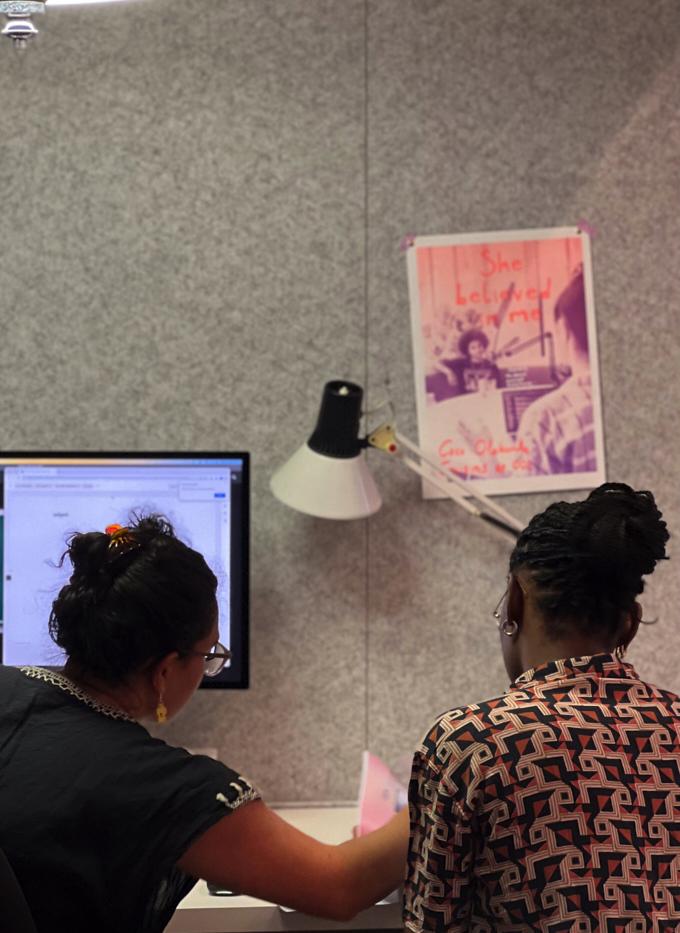
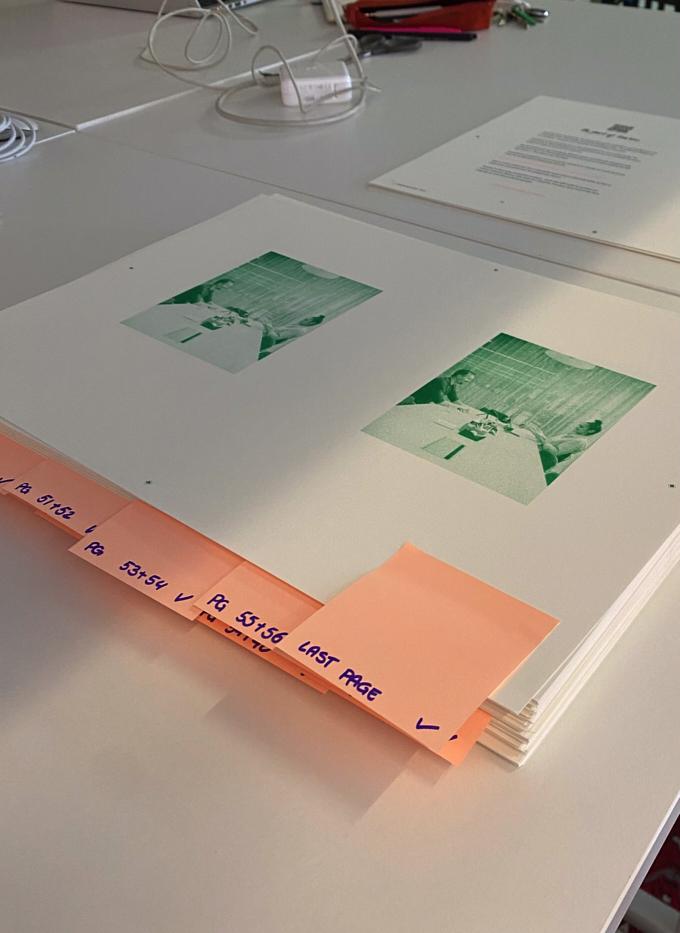
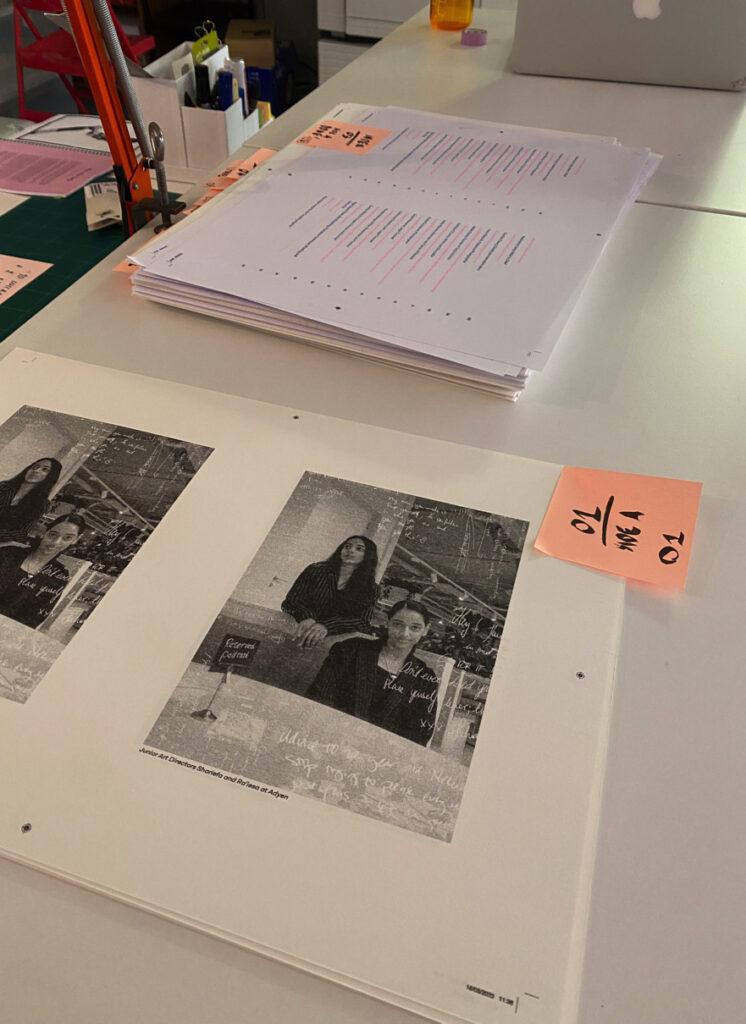
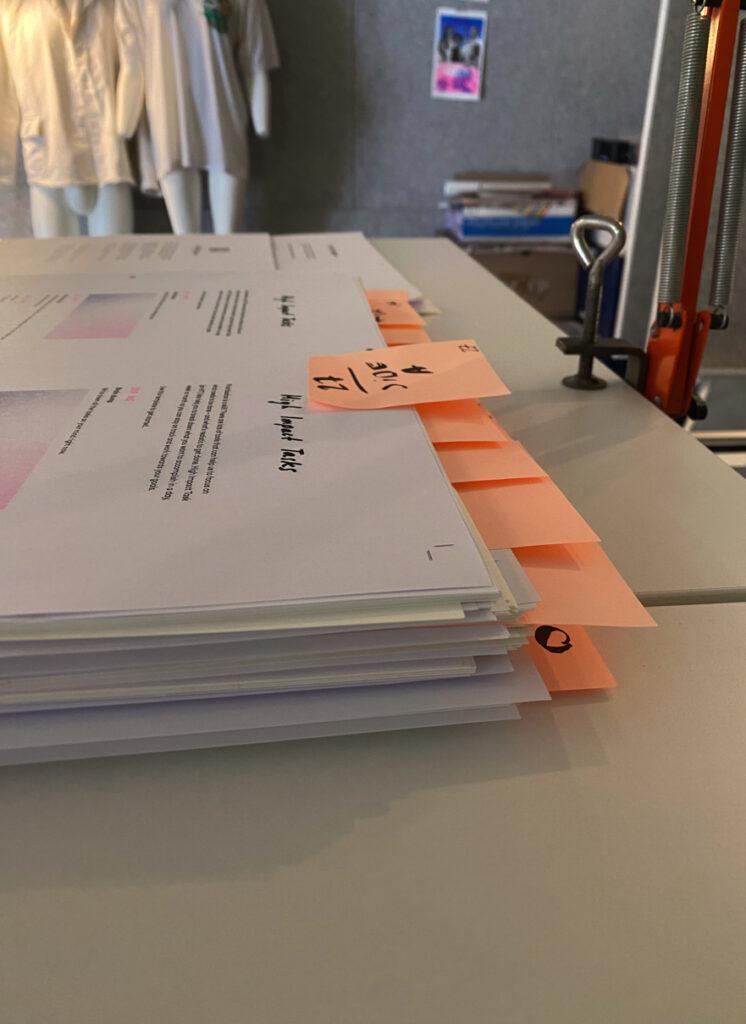

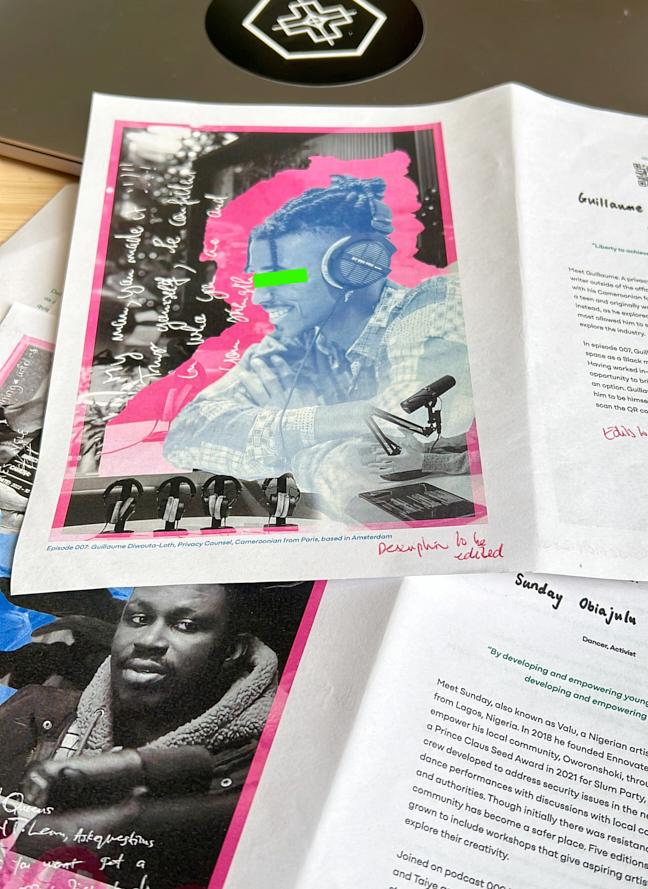
The publication was beautifully put together with illustrations, collages of each interview guest, breathing and wellness exercises as well as guidance on hard skill development such as task management and prioritisation. It was printed on RISO.
The team let us know that they had it from here – they’d manage themselves as we prepared for the arrival of our baby.
Last week of June, the appointment for the second ECV came around.
Thankfully, it was a success.


We could have the home birth we wanted.
In the midst of all this, it’s hard to believe that we had our first baby.
It was on this journey that we felt the true impact of genuine advocacy.
Our doula worked with us a few weeks before and after birth. Her presence as we attempted to navigate an unfamiliar medical system came at the right time.
The emotional support and clear information about our options was much needed – it empowered us to make informed choices for our family.
The homebirth went well.
Family came to visit from the UK to meet and help with the baby.
This wasn’t how I pictured entering parenthood but the new arrival gave us a new focus.

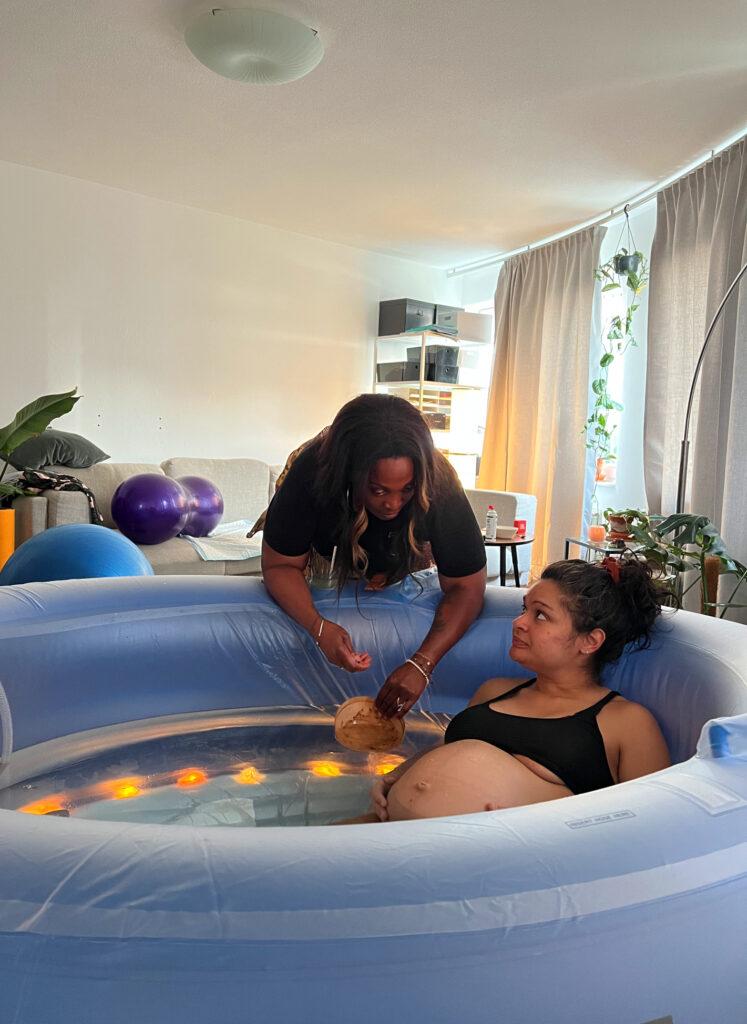

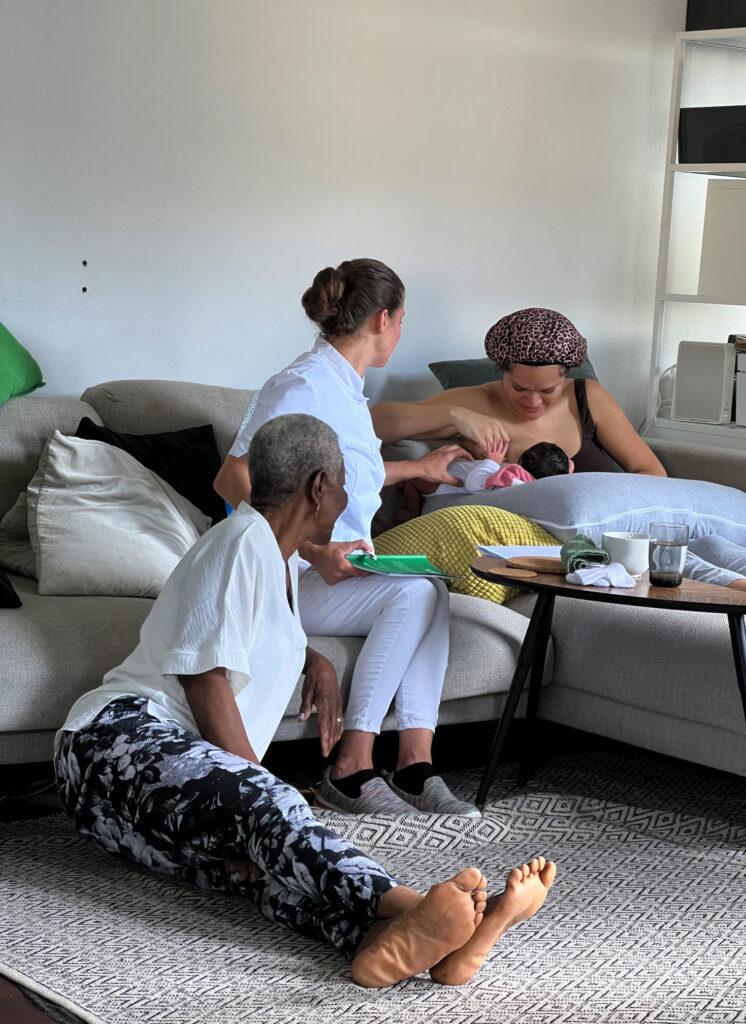
Throughout this experience, he’s been a source of pure joy.
I speak for both Obi and I when I say that he has made the events that have unfolded bearable.
The team was thrilled to hear the news.
As we spent some time getting to know our son and adjusting to our new roles, they kept Obi updated on how things were going with the manuscript and the last stages of post-production.
There was a lot to manage.
The survival of our business was in the balance.
Within five days of the birth, we were both working.
Obi was back at the studio with the team.
I was doing admin and finalising the copy for the next stages of the manuscript.
Fortunately, thanks to the advocacy and support of Obi, our doula and family, I had a quick recovery from the birth but it didn’t feel good to have grandparents see us (but especially me) back to work this soon.
The physical toll made itself known in the first few months when I couldn’t carry on breastfeeding. Unfortunately, like with the baby turning breech, I was back to work and sitting at a desk for long hours working to keep the business going and complete the podcast and manuscript.
Maintaining a breastfeeding routine while balancing work wasn’t possible. We got lactation advice from the midwife and consultants at the children’s clinic.
We introduced formula when I wasn’t able to produce as much. I hired a breast pump, then bought a wearable cordless one in an attempt to keep it up.

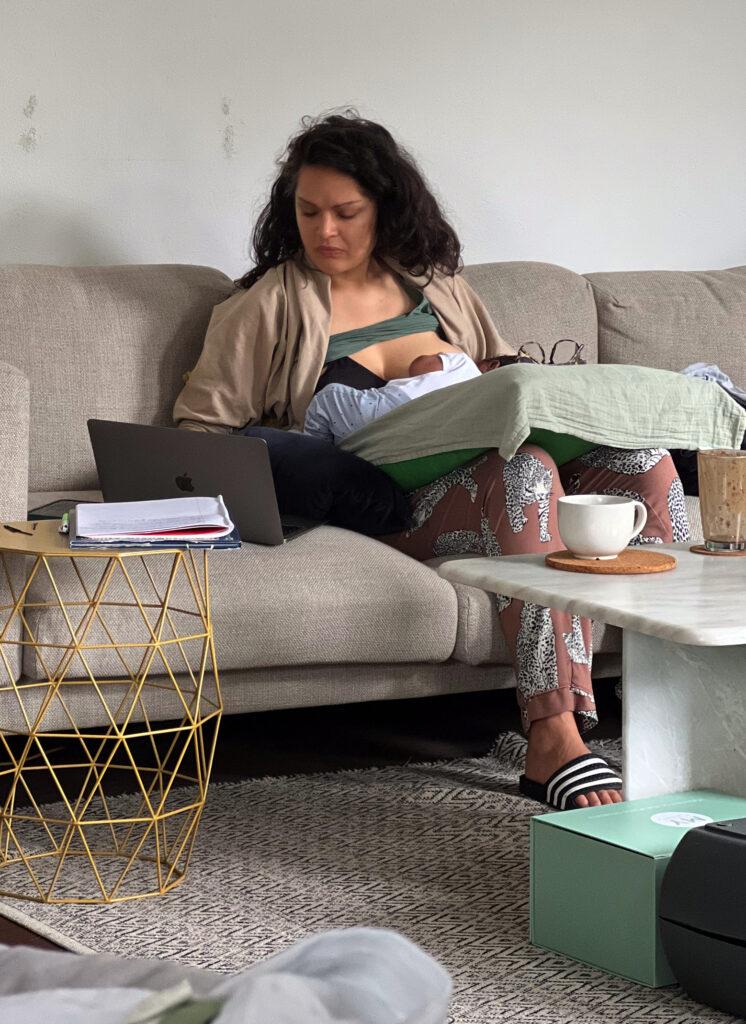
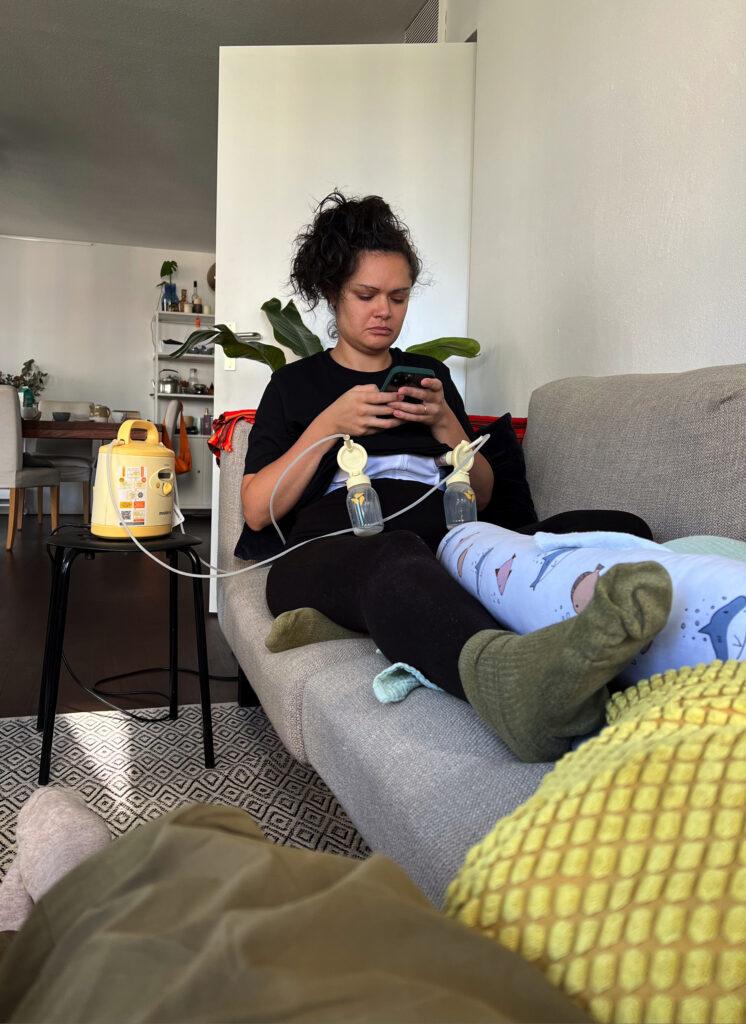
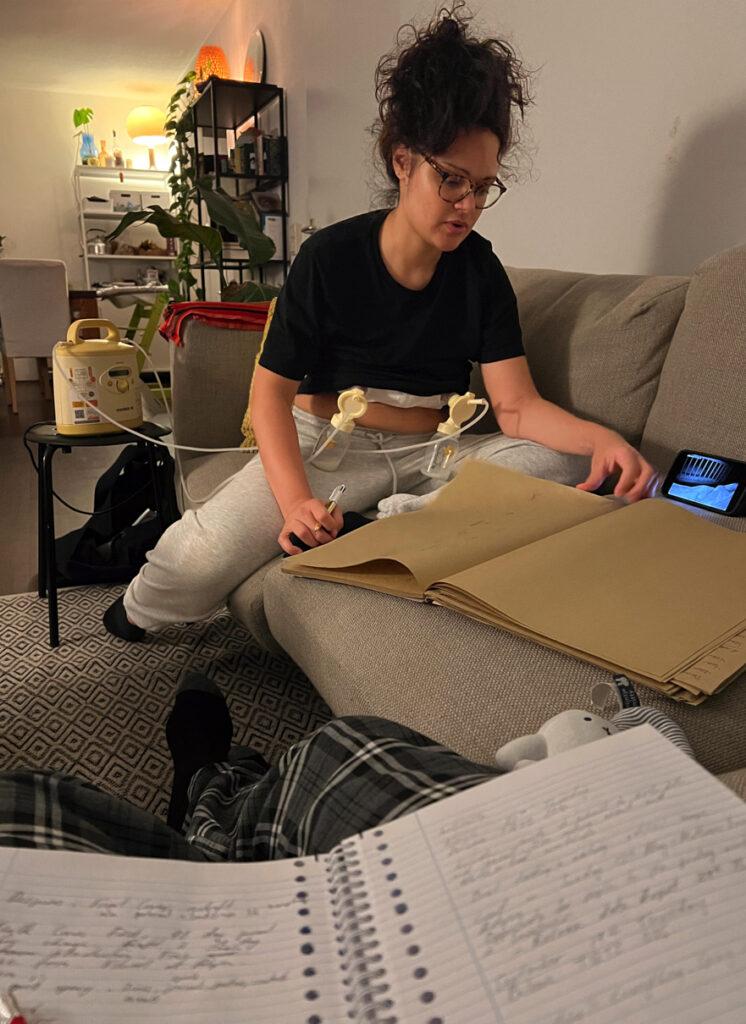
It was heartbreaking.
It was violent.
We needed to focus on finalising the assets to present to Adyen N.V.
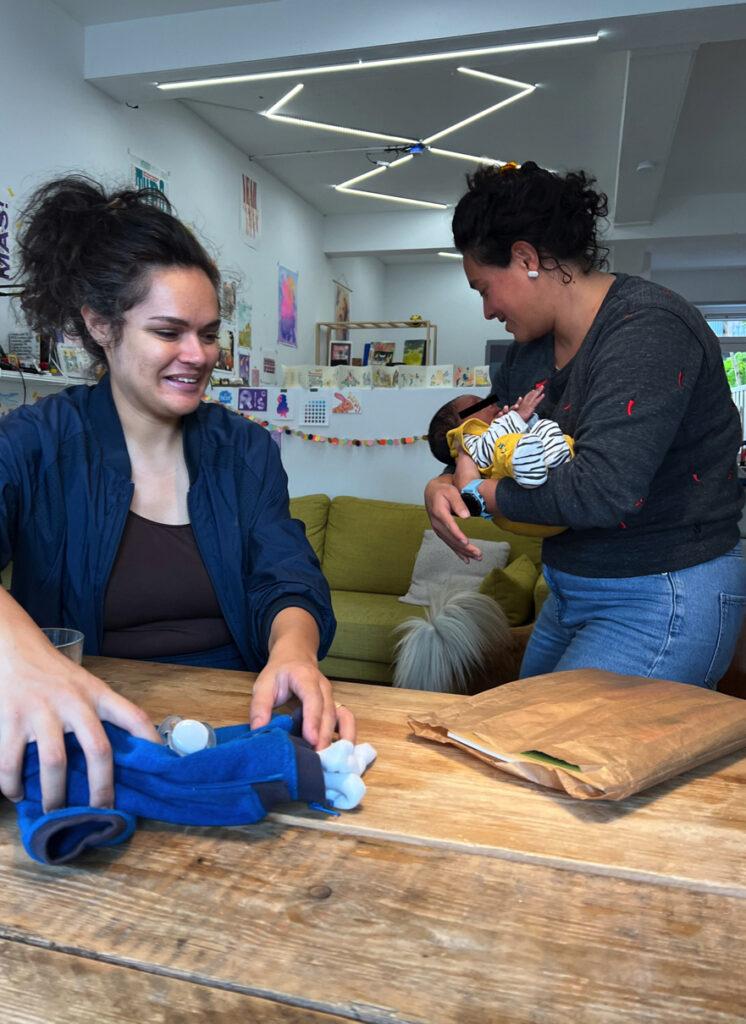
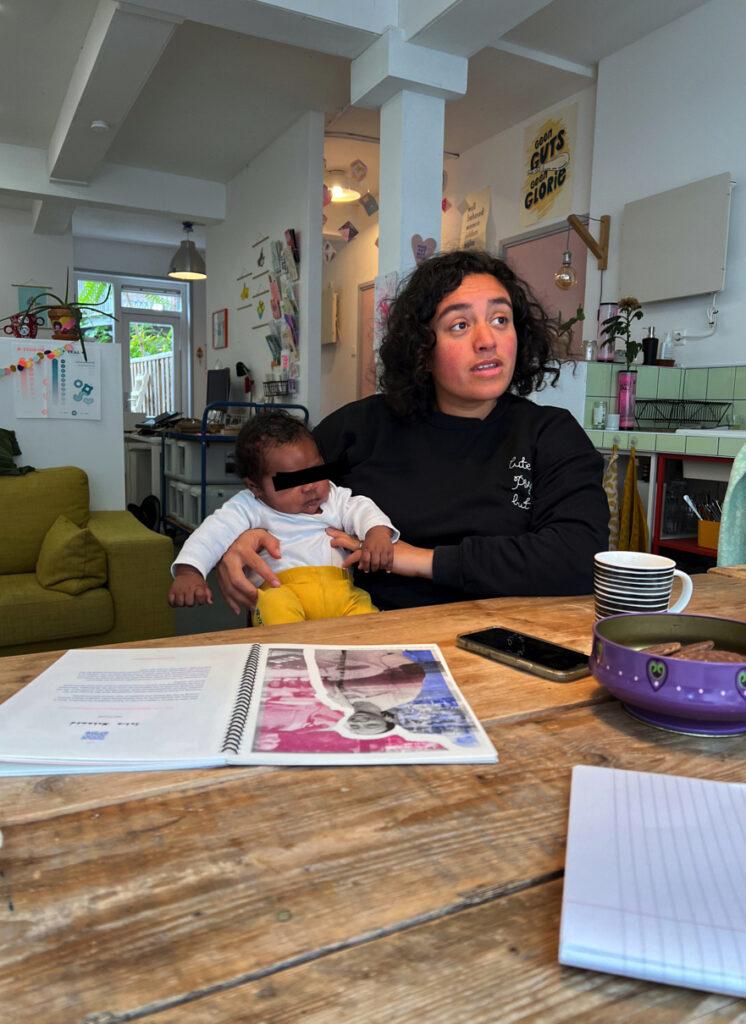


Two months after the birth, we were back in the Rokin office.
23. The last meeting
By the start of September, and earlier than Adyen N.V. allegedly expected thanks to the support and dedication of our team, the final podcast assets and manuscript were ready to present.
As far as we knew, we were taking the next steps to formalising the collaboration with a written contract.
After many months of work, and in spite of the challenges, we were all proud of the high quality work we’d created.
A couple of days before our next meeting with our main contact, Obi delivered a copy of the manuscript to Reception at Rokin. We needed to make the most of the time in the meeting so we did the diligence of getting the hardcopy to him early.
The design team was excited to get feedback about the branding and manuscript, as were the production team. We were going to present the final title sequence and one near complete final interview.
In the meeting on 8 September, we’d ask for feedback on the video before the lengthy process of finalising and exporting the remaining eight episodes.
Were we going to bring the baby?
Yes, we were but not entirely out of choice.
By this time, grandparents had travelled back to the UK and we were without childcare.
Although it felt unnatural to bring a two-month old into an office, we felt confident that Adyen N.V. would supposedly be happy to see the results of their alleged support for the program.
After congratulating us on our new arrival and asking how things were going with this new life chapter, the Vice President of Creative asked if he could hold the baby.
Sure, as the person who’d brought us in and allegedly supported us most in Adyen N.V., he could hold our son.
We settled into the meeting and presented the final podcast episode.
The Vice President of Creative was seemingly very impressed.
He watched the introduction sequence back a few times.
Apart from adjustments needed to Adyen N.V.’s logo, no changes were needed.
Could we ask the production team to make these adjustments?
Likewise with the manuscript.
He allegedly loved the content, the details, the paper, the graininess of the ink.
Would we mind if he kept a hold of it a bit longer?
No problem for now, though it did contain feedback for our designers to make final changes so we’d need it back eventually.
During the meeting we explained where we were at financially.
Our contact allegedly exclaimed:
“You’ve spent everything already!?”
Well, yes.
To cover the costs and invoices that had gone unpaid in the first half of the year as well as to complete post-production on the video podcast.
We explained once again the issues with finances and the commitments we’d made to the team. We flagged up that the Tax Authorities blocked our business bank account for the second time in less than a year.
The one invoice we’d been allegedly able to send to Adyen N.V. in 2023 would only stretch so far.
A far from ideal situation.
How was Adyen N.V. supposedly going to resolve this?
The Vice President of Creative was seemingly disappointed to hear what we were dealing with but he allegedly had limitations to what he could do.
Maybe there was a possibility of bringing forward the program budget for 2024 to help us cover immediate overheads? It would at least keep us liquid and give us the breathing room to release the podcast.
He’d allegedly speak with HR as soon as possible to see if this was a solution they could work with.
At the end of the meeting, we felt reassured. We and the team had done everything possible to demonstrate the value of the content and the impressive design and production skills that went into it with these final assets.
Finally, we’d allegedly be listened to.
The tech giant had supposedly seen the error of its ways.
The faceless corporation would allegedly take action.
Oversights would apparently be resolved.
At the end of the meeting, the Vice President of Creative’s last words to us were:
“Adyen N.V. needs to work to rebuild its trust with you.”
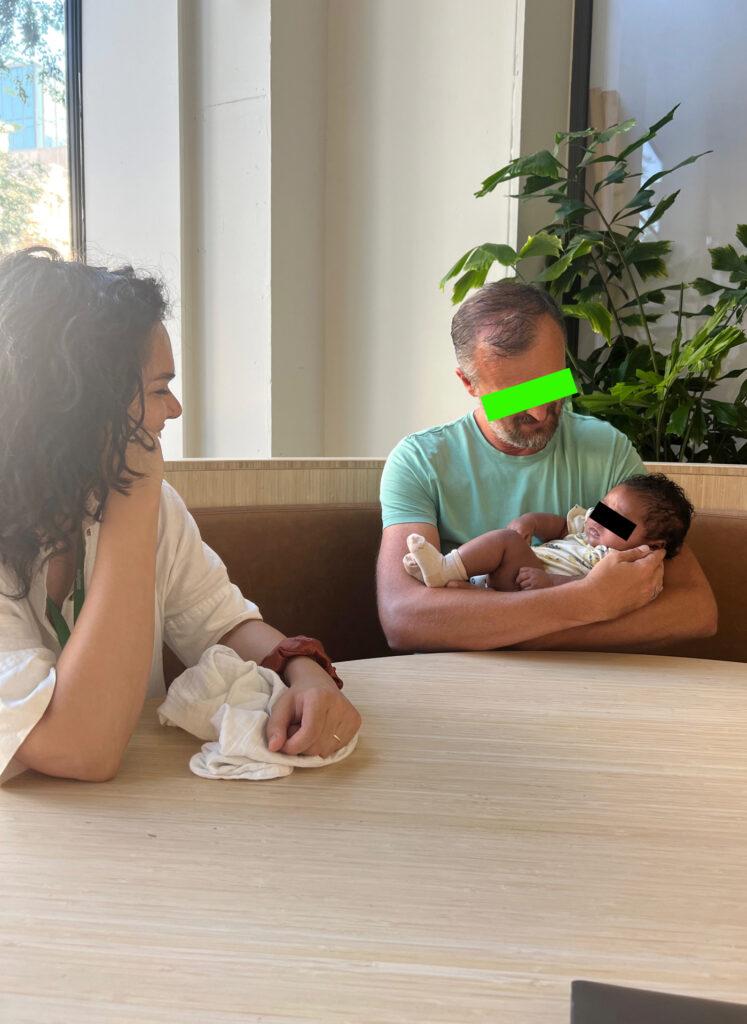
For all intents and purposes, this was allegedly a successful meeting.
Excited to share the alleged feedback with the team, the three of us headed home.
24. Cutting ties
After the meeting, we shared a summary of what was discussed with Adyen N.V.:
For the next steps of the collaboration, we understand that there’s continued scope to work with Adyen N.V. on:
1. [BRAND NAME REDACTED] projects (design and communication program, podcast, work book, lunch events)
2. Internal projects (Adyen annual report etc)
— Email from The Study Group to Adyen N.V.
Hold up.
Were we really allegedly being invited to come and work in-house at Adyen N.V?
And, once again, where was the discussion about the alleged budget?
Adyen N.V. allegedly proposed we come in for full days in the Design Studio to work on its internal projects.
While we were still owed money for the work carried out in the first half of the year.
Make it make sense, please.
Ten days since the meeting, and the day before we were due to spend the day at the Design Studio at the Rokin office, I emailed our contact.
The alleged lack of transparency was absurd.
A boundary had to be set.
How was this fair?
No contract.
No culture.
No humanity.
Not for the first time, we added our accountant in CC:
Hello [NAME REDACTED],
I hope you’re doing well.
I wanted to get back to your message about coming in tomorrow.
We’d love to continue work on the project however, going on your advice of business before creative, it would be good for us to address the elephant in the room regarding the [BRAND NAME REDACTED] program budget.
I feel uncomfortable spending time outlining next steps on work without a clear understanding of the available budget and a good understanding of what our sponsor can commit to as we close the second year of the program.
With this in mind, is it better for us to have a meeting / call once we have clarity from [NAME REDACTED]?
I relayed our call at the end of last week to our accountants (in CC) who have previously raised concerns about late payments from Adyen N.V. and the unexpected budget cut mid-project of over 50% – they’re concerned that as a small company we are being taken advantage of. They’ve advised us not to spend any more billable time at Adyen N.V. without formalised agreements on next steps for the project.
They’ve also strongly advised us to request advance payment so we can better manage cash flow.
As I hope you can appreciate, we want to continue to build on the foundation we’ve already set but we need to know what Adyen N.V. can commit to as a sponsor so that we can plan and manage our business.
As it stands, with mounting bills and a frozen account, our studio and printer are in jeopardy. Our creatives are concerned and expressed their discomfort with the current situation. Our hope was that we could fix our deficit within Q3 so we could enter Q4 with some peace of mind. Q2 was exceptionally difficult and we continue to deal with the fallout. For the sake of our business and community partners, we need clarity so we can manage the expectations of suppliers and the accountants.
We’re excited to see [BRAND NAME REDACTED] grow – however as the initiators of the program, we’re responsible to the community who come in and set time aside to work on the project. The impact of the lack of clarity and resource hasn’t just affected us but also them. It doesn’t seem appropriate for us as a Program Partner invited into Adyen N.V. to take initiative to develop the project to its current point, build visibility in the community and not have the peace of mind or financial stability sponsorship sets out to provide.
We want to be well aligned and equipped so that we can work from a safer position with Adyen N.V., keep the business and program going and have a positive community impact.
We’re happy to adapt plans where needed and welcome reassurance from our sponsor that the original agreed budget from our first proposal can be honoured.
This week I need to communicate to community partners what the next steps for the program look like. We’ve been quiet in Q3 due to parental leave but as we come back to work and enter Q4 we need to be able to provide transparency and manage expectations.
Please let me know how the discussion with [NAME REDACTED] goes.
I’m not sure when you’re talking with the wider team but please find the (close to final) unlisted draft of episode 001 of the podcast including the intro sequence on YouTube.
The updated ‘powered by Adyen’ logo at the end of the podcast is available to download.
— Email from The Study Group to Adyen N.V.
Meanwhile, we continued to wait on alleged feedback from HR.
Ten days since coming into the Rokin office with our son to present the team’s final work, we still had no response.
When could we expect to hear back?
HR was travelling to San Francisco – travel and time difference allegedly delayed the meeting.
On 18 September, we sent over the requested changes to Adyen N.V.’s branding on the podcast and a link to the unlisted final episode of the podcast presented at the meeting.
Despite still waiting on his invoice to be fulfilled, the video director understood the situation and helped us to make the changes.
We messaged the Vice President of Creative again on 19 September when we didn’t hear back to our email.
He’d said that allegedly he’d know more by the end of the next day.
It remained evident that our need for an urgent resolution wasn’t a priority.
When we didn’t hear back, Obi tried to call our contact a few times but he allegedly didn’t pick up.
On Friday 22 September around 4:30pm, Adyen N.V.’s Senior Legal Counsel emailed us.
Included in CC from Adyen N.V. were the Head of People, Senior Vice President of HR, Head of Legal EMEA and Vice President of Creative.
It felt heavy handed.
Adyen N.V. allegedly terminated our collaboration with the following:
Dear Marie-Anne
Thank you for your note. After carefully considering your email below as well as our internal assessment of events related to our collaboration with the Study Group over the 2022 and 2023, we have decided to end our association with the Study Group with immediate effect. For the avoidance of doubt, as of today’s date, Adyen will no longer fund any projects, expenses or costs incurred by the Study Group after today’s date, 22 September 2023, nor will we require any work completed on current outstanding projects.
We would also like to extend an offer of invitation to our offices for a face-to-face meeting to address any items that you may believe are outstanding and where Adyen could potentially offer some guidance to close these items off. In that meeting we would also be happy to share with you the concerns and considerations which resulted in our decision to end our association/collaboration if that is helpful.
Going forward we will continue all correspondence between the Study Group and Adyen via my email address and we request you to do the same.
We would like to thank the Study Group for the past collaboration with Adyen and wish the Study Group continued success.
Regards,
— Email from Senior Legal Counsel at Adyen N.V.
Wow.
We were shocked.
What do you even say to that?
Was this really how Adyen N.V. was allegedly moving?
We worked for 81 weeks for the multi-billion euro tech company allegedly without a formal contract.
We answered their supposed brief and brought specialised talent from the community directly into the building.
We were engaging with Adyen N.V.’s work culture, aligning with Employee Resource Groups to to release the long awaited podcast.
We were quite literally in the window.

Just like that, the program we and our community had been pushing for, striving for, was allegedly dropped like a hot potato by a team (at best) seemingly lacking the awareness about the implications of their combined action, inaction and bias.
Our contact towed the company line too.
Two weeks after the Vice President of Creative held our first born child, he was in CC on the termination email.
The sad fact of the matter is that this kind of thing happens all the time.
People’s life passions axed overnight with no thought of consequence, everything they’ve fought to build destroyed because it didn’t merit care or attention.
But we’re an independent media platform.
We document everything.
Holding on to so much evidence is actually uncomfortable.
It wasn’t our intention to have all these files turn into evidence to support a legal fight.
We were documenting the progress of a design and communication program for emerging BIPOC and LGBTQ+ creatives.
We considered the offer to go in to talk with Adyen N.V.’s Legal team and thought better of it.
I called the law firm who helped me with the settlement when I left my last tech job.
Having never needed a lawyer before, it was a helpful experience for our current situation. But they were a top law firm charging top law firm prices.
On hearing the story, the lawyer apologised on behalf of large businesses for the way we were treated.
They suggested we might want to look for more affordable options but that we had a case and were right to seek out legal representation.
We appreciated the insight.
We started to reach out to share our story with advocates who might be able to help.
Our doula found the details in a Black-owned business chat for a non-profit organisation based in Aruba called The BEULAH Foundation.
One advocate led us to the other.
It was a chain reaction.
Reading more about them, the Legal Aid organisation seemed the right choice for us. Named after the Founder’s late mother, the name BEULAH stands for:
Black
Empowerment
Unity
Liberty
Advocacy
Human Rights
With a strong emphasis on educating the community about our rights, I got in touch and shared our story. On hearing our case, the Founder – a Black woman and a parent – agreed to work with us as our Legal Counsel.
It was a huge relief to have found an advocate who understood first hand and could articulate the issues that we were facing professionally and legally.
Like us, she saw this as an educational opportunity.
Other independent BIPOC businesses and freelancers would stand to benefit from learning about this complex and challenging case study, knowing their rights and how to exert them through their business practices.
We started to build the case and sent correspondence to DLA Piper Nederland N.V. through our Legal Counsel.

25. David vs Goliath
Adyen N.V.’s legal representation, DLA Piper Nederland N.V. is the Dutch chapter of the second largest law firm in the US.
As with the group CC on the termination email, this felt heavy handed.
We’re a two-person company, how would one not feel intimidated?
When their first letter arrived, I was scared.
It was made up of over 60 points.
After machine translating from Dutch into English, it allegedly turned out it was a collection of selective sentences from selected emails, mainly focusing on the expo and activities in the first year of the program.
Now in November 2023, this was an extreme way to go about getting the de-brief we had asked for in summer 2022.
This was the first time we’d allegedly received formalised feedback from Adyen N.V.
One of the alleged points raised was the non-delivery of mini maatje, the publication The Study Group has in development with The Black Archives.
It was due to be a Keti Koti special, released as part of the annual commemoration of the abolition of slavery in Suriname and former Dutch colonies.
Adyen N.V. claims that as alleged co-owner of the publication, it was disappointed that the publication hadn’t come to light.
The word ‘Adyen’ is appropriated from the Surinamese Sranan Tongo language – it translates to ‘starting over’.
The irony is not lost on us.

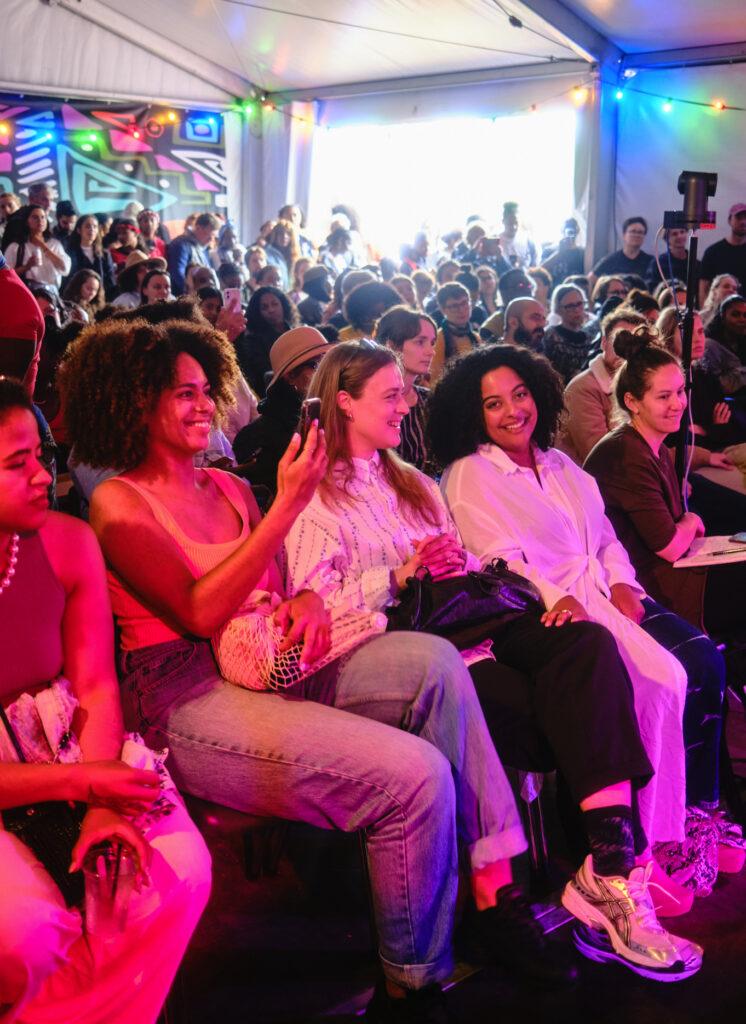
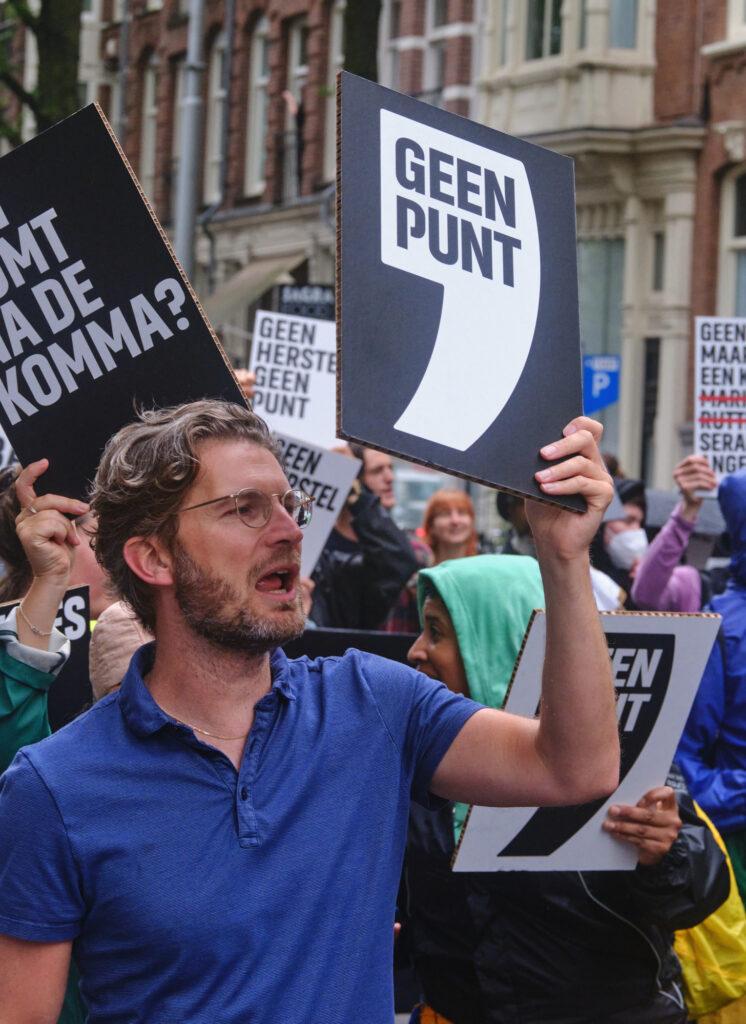


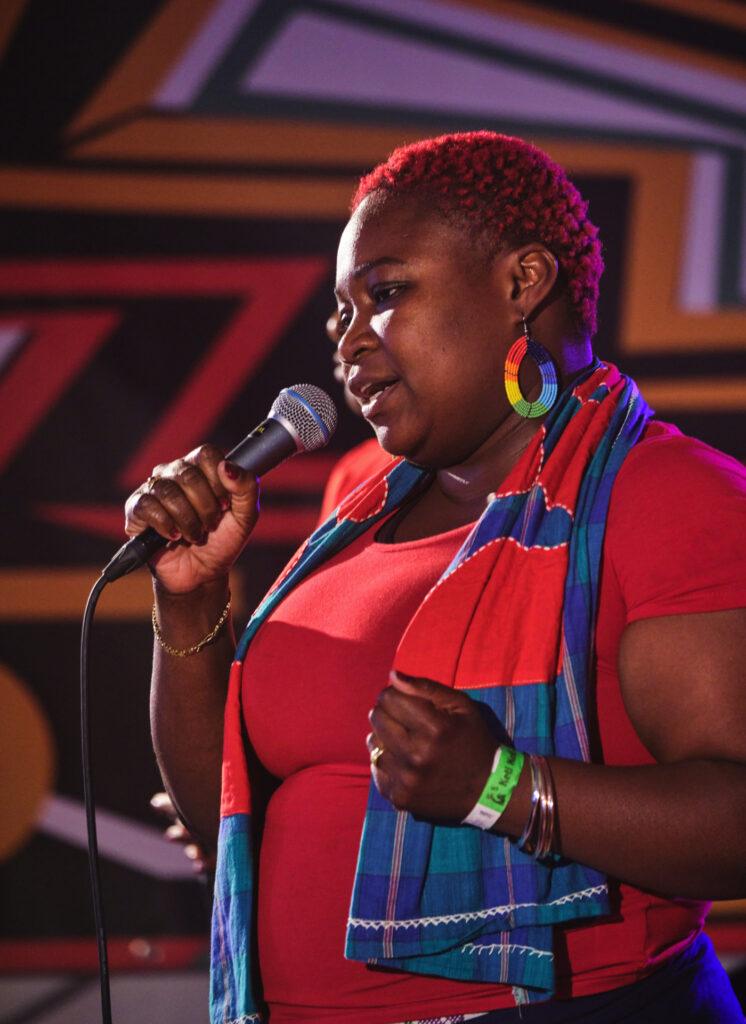
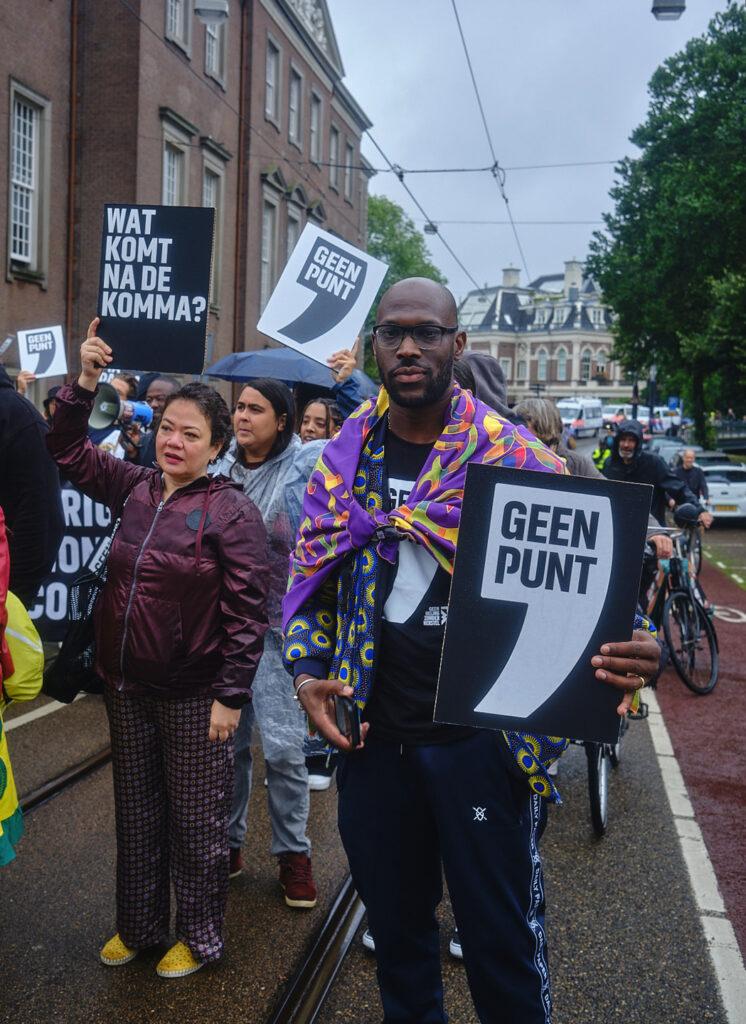
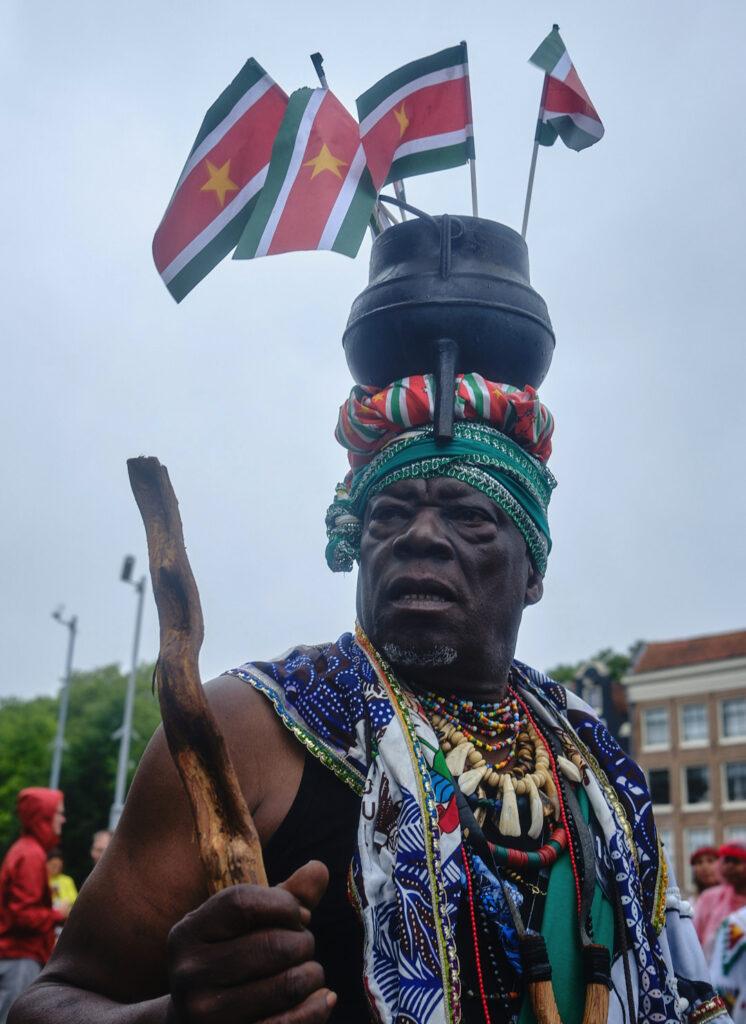
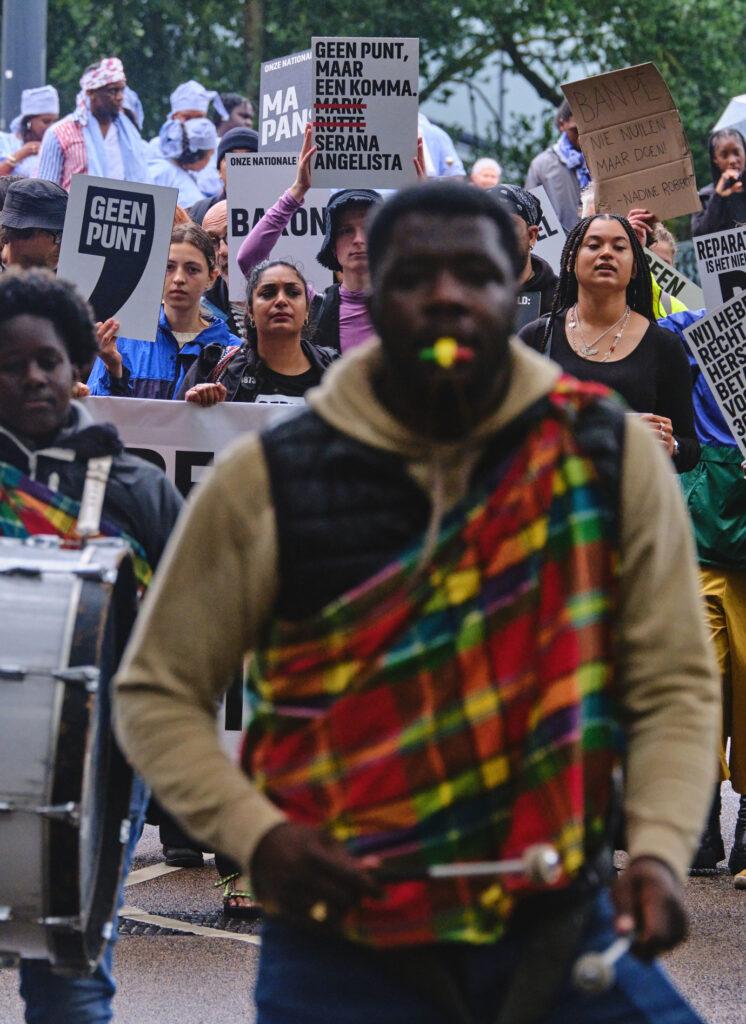
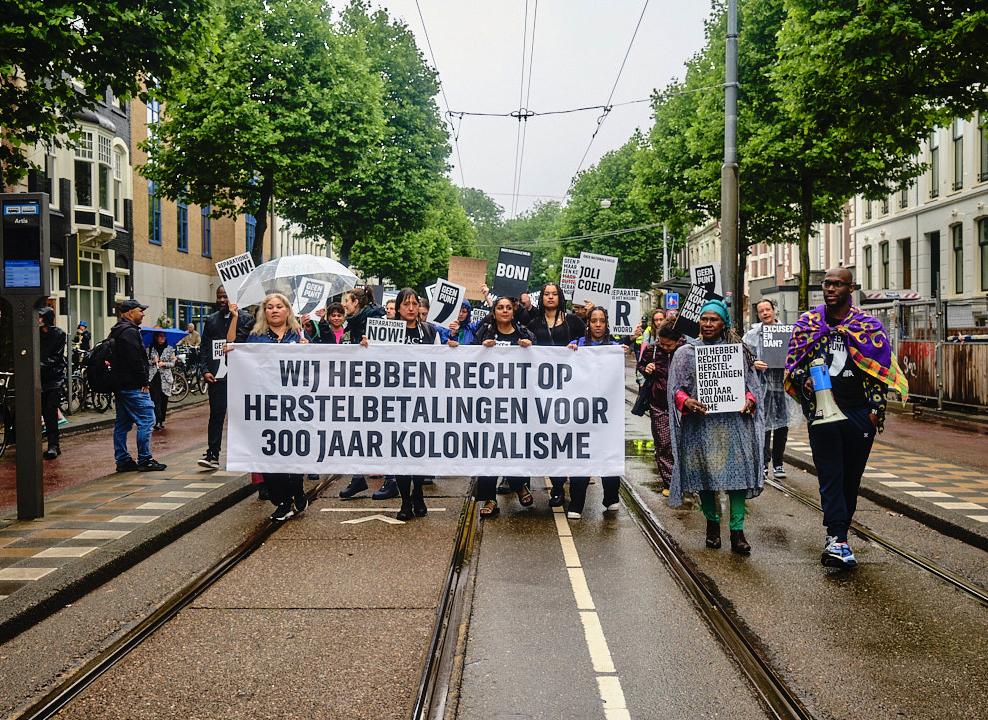


At the time that the production was due to take place, an important figure from the Surinamese community sadly passed. The team was in mourning.
This was communicated to Adyen N.V. at the time.
In addition, the non-provision of design mentorship and alleged support from Adyen N.V’s Design Studio early on in the program’s development meant that we had to spend time seeking out designers from the community to work on the publication.
We reached out to The Black Archives to let them know about the case and Adyen N.V. allegedly claiming mini maatje (in part, at least) as their own.




One of the Co-Founders, Mitchell Esajas, responded:
“Hello my name is Mitchell Esajas, Co-Founder of The Black Archives.
“With this letter I would like to reiterate, emphasise, that we are very disappointed to hear about the conflict between The Study Group and Adyen N.V.
“We have been in touch with The Study Group since 2020 and started collaborating in 2021 in different ways. Since our exhibition about The Black Manifesto, we’ve developed different ideas and concepts for a publication together however due to a lack of capacity on our side we have not been able to realise these ideas. However, we do have proof that the concept for mini maatje existed before The Study Group entered a collaboration with you, Adyen N.V.
“We are very disappointed, appalled actually, to hear that a huge corporation such as Adyen N.V. is trying to take over and hijack the ideas of a small grassroots initiative.
“We believe that collaborations can only be successful when they are based on principles of truth and integrity from all parties involved. The fact that Adyen N.V. claims to be the owner or co-owner of the concept of mini maatje to us reflects a lack of integrity and even a form of appropriation of the work of Black or POC people
“This whole collaboration is meant to foster underexposed and underprivileged creatives in the Dutch cultural landscape so it’s extra disappointing, appalling, problematic that Adyen N.V. reproduces the kinds of structures that exclude Black and POC creatives.”
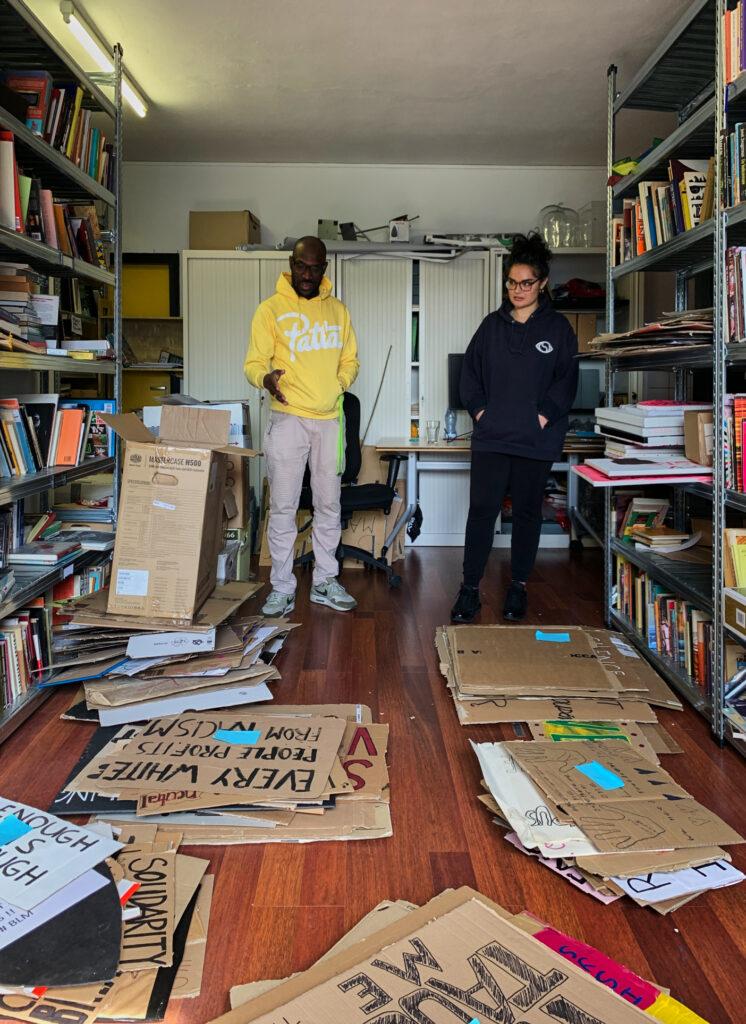
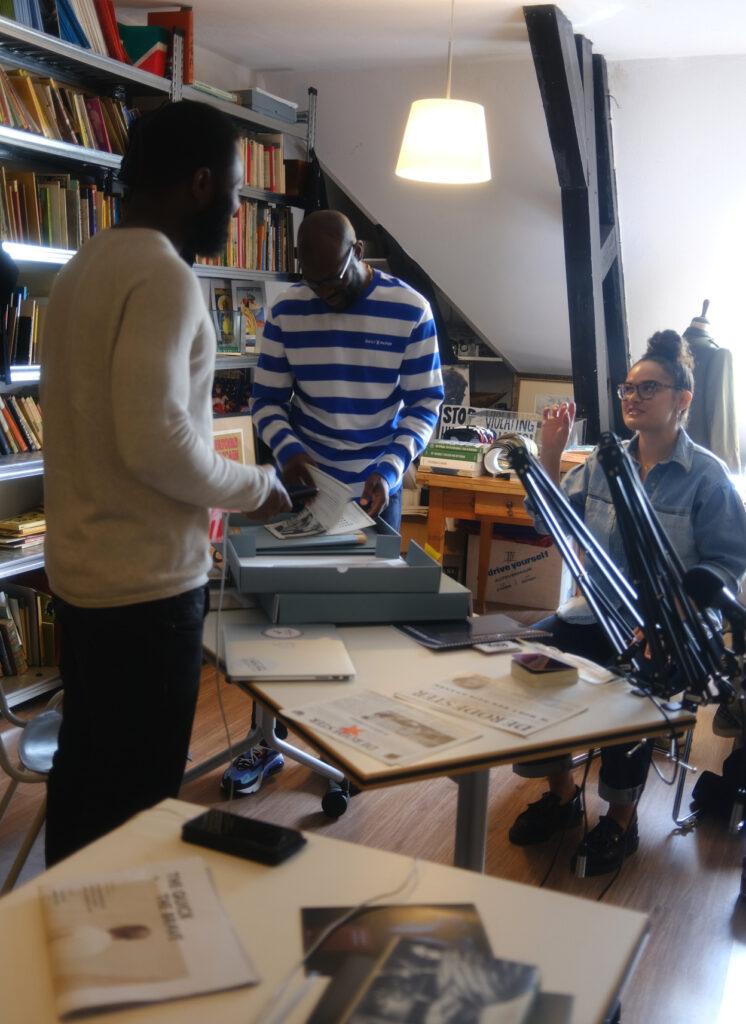




We’re taking much needed time to rest and spend time as a family and will be offline until the first week of January 2024.
The concluding chapters of this story will be released in the ‘mini maatje’ paper themed around Advocates and Allies – pre-sale via GoFundMe available soon.
There are many ways that you can help spread awareness of our story and support us in our next steps:
Donate to The Study Group Foundation
Follow The Study Group and The Quick + The Brave on social media. Like and share our content to amplify this story.
GoFundMe: support us with the printing of the Advocacy issue of mini maatje available from first week of January 2024. Pre-sale release to be announced.
Learn: our recommended reading list is available from 8 January. Subscribe to receive this via the contact form.
Thank you, lobi.
By publishing this blog, The Study Group enacts the Dutch Whistleblower Protection Act (Wet bescherming klokkenluiders) of 18 February 2023.
The full act from the Ministry of Interior and Kingdom Relations is available online in Dutch and English.
Want to help amplify our story to other media? The Act protects all stakeholders who share it (clause 1a. Duty of confidentiality and data protection).
WORDS: Marie-Anne Leuty
IMAGES: Obi Mgbado and the Cousins

